
AUTONOMOUS / NOOTROPIC TOUR DE FORCE 200:1
March 26, 2022“PI3K/AKT/mTOR and sonic hedgehog pathways cooperate together to inhibit cancer and tumor growth.”
“Cancer Cell Signaling Pathways Targeted by Spice-Derived Nutraceuticals”
“Regulation of cell signaling pathways by dietary agents for cancer prevention and treatment”
“Inhibition of PI3K/Akt/mTOR Signaling by Natural Products”
“mTOR Inhibition: From Aging to Autism and Beyond“
From wiki: “The PI3K/AKT/mTOR pathway is an intracellular signaling pathway important in regulating the cell cycle. Therefore, it is directly related to cellular quiescence, proliferation, cancer, and longevity. PI3Kactivation phosphorylates and activates AKT, localizing it in the plasma membrane.[1] AKT can have a number of downstream effects such as activating CREB,[2] inhibiting p27,[3] localizing FOXO in the cytoplasm,[3] activating PtdIns-3ps,[4] and activating mTOR[3] which can affect transcription of p70 or 4EBP1.[3] There are many known factors that enhance the PI3K/AKT pathway including EGF,[5]shh,[2] IGF-1,[2] insulin,[3] and CaM.[4] The pathway is antagonized by various factors including PTEN,[6]GSK3B,[2] and HB9.[5] In many cancers, this pathway is overactive, thus reducing apoptosis and allowing proliferation.”
”The Hedgehog signaling pathway is a signaling pathway that transmits information to embryonic cells required for proper cell differentiation. Different parts of the embryo have different concentrations of hedgehog signaling proteins. The pathway also has roles in the adult. Diseases associated with the malfunction of this pathway include basal cell carcinoma.[1]
The Hedgehog signaling pathway is one of the key regulators of animal development and is present in all bilaterians.[2] The pathway takes its name from its polypeptide ligand, an intercellular signaling molecule called Hedgehog (Hh) found in fruit flies of the genus Drosophila; fruit fly larva lacking the Hh gene are said to resemble hedgehogs. Hh is one of Drosophila’s segment polarity gene products, involved in establishing the basis of the fly body plan. Larvae without Hh, are short and spiny, resembling the hedgehog animal. The molecule remains important during later stages of embryogenesis and metamorphosis.
Mammals have three Hedgehog homologues, Desert (DHH), Indian (IHH), and Sonic (SHH), of which Sonic is the best studied. The pathway is equally important during vertebrate embryonic development and is therefore of interest in evolutionary developmental biology. In knockout mice lacking components of the pathway, the brain, skeleton, musculature, gastrointestinal tract and lungs fail to develop correctly. Recent studies point to the role of Hedgehog signaling in regulating adult stem cells involved in maintenance and regeneration of adult tissues. The pathway has also been implicated in the development of some cancers. Drugs that specifically target Hedgehog signaling to fight this disease are being actively developed by a number of pharmaceutical companies.”
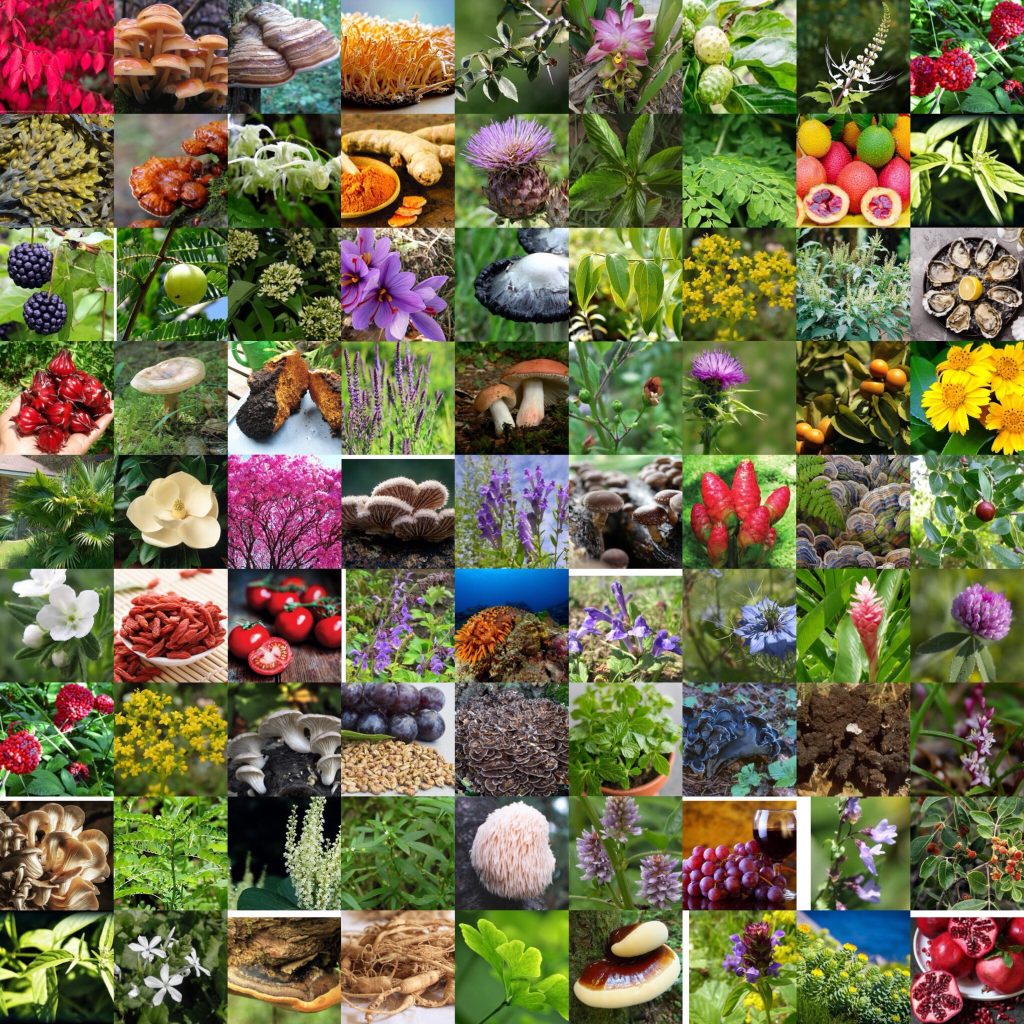
FEATURING: •Aegle marmelos Correa • Agaricus blazei Murill • Aloe emodin • American ginseng extract • Andrographolide • Angelica archangelica • Angelica sinensis extract • Bilberry extract Anthocyanin • Antrodia cinnamomea • Artemisinin Artemisia annua L. (Huanghuahao) • Artepillin C (Brazilian propolis) • Ashwagandha • Astragalus membranaceus extract • Belamcanda chinensis • Berberine (Cortidis rhizoma) • Camellia sinensis • Carnosine • Carnosol • Cat’s Claw (Uncaria tomentosa) • Catharantus roseus • Celastrol (derived from Trypterygium wilfordii) • Celastrus Orbiculatus • Chenopodium ambrosioides L • Cinnamomum cassia • Commiphora myrrha • Coprinus comatus • Corchorus olitorius • Cordycepin • Cordyceps militaris • Crocus sativus (Saffron) • Curcuma wenyujin • Curcumin • Cycloastragenol • Cynara cardunculus • Dalbergia odorifera • EGCG • Eleutherococcus senticosus • Emblica officinalis • Epimedium koreanum • Euonymus alatus • Flammulina velutipes (enokitake) • Fomes fomentarius • Frankincense (Boswellia carteri) • Fucus vesiculosus (seaweed) • Gambogic acid (Garcinia hanburyi) • Ganoderma lucidum • Ganoderma tsugae • Genistein • Ginkgo Biloba • Ginseng extract• ginsenoside Rh • Glycyrrhiza glabra • Grape Seed Extract • Grifola frondosa — Maitake • Gynostemma pentaphylla extract • Hedyotis Diffusa Willd extract • Hericium erinaceus — Lions mane • Hibiscus sabdariffa • Honokiol • Humulone • Icariin • Inonotus obliquus — Chaga • Lactarius flavidulus • Lapacho (Tabebuia impetiginosa) • Lithospermum erythrorhizon • Livistona chinensis • Lupeol • Luteolin • Lycium barbarum—Wolfberry (goji) • Lycopene • Magnolia officinalis (Chinese magnolia tree) • Mangiferin (Mangifera indica) • Momordica cochinchinensis Spreng • Moringa oleifera • Noni (Morinda citrifolia) • Ocimum gratissimum oil • Oldenlandia diffusa • Oleanolic acid • Oleuropein • Orthosiphon Stamineus • Osthol (Cnidium monnieri) • Oyster extract • Panax notoginseng extract • Patrinia scabiosaefolia • Pfaffia paniculata —Brazilian Ginseng (Suma) • Phellinus linteus • Phycocyanin • Phyllanthus urinaria • Pleurotus ostreatus • Pleurotus pulmonarius • Plumbago zeylanica L • Podophyllotoxin (Podophyllyum emodi) • Polygonum cuspidatum • Polyozellus multiplex • Poria cocos • Prunella vulgaris extract • Punica granatum (pomegranate) • Punicalagin (from pomegranate extract) • Quercetin • Rabdosia rubescens • Reineckia carnea (RCE ) • Resveratrol • Rhodiola rosea • Rhus verniciflua • Russula lepida • Salvia miltiorrhiza extract • Salvia officinalis • Schizophyllum commune • Scrophularia ningpoensis • Scutellaria baicalensis Georgi • Scutellaria barbata • Sea Cucumber (Cucumaria frondos) • Shiitake— Lentinula edodes mycelia extract • Silymarin• a flavonolignan from milk thistle (Silybum marianum) • Strychnos nux vomica L extract • Thymoquinone (Nigella sativa) • Trifolium pratense L. • Turkey tail mushroom —Trametesversicolor orCoriolusversicolor • Ursolic acid • Wedelia chinensis • Wogonin (Scutellariae radix) • Xanthohumol • Zerumbone (From Zingiber zerumbet) • Zingiber officinale Roscoe • Zizyphus mauritiana
WARNING: As with any supplement, consult your medical practitioner prior to using this product if you are pregnant, may become pregnant, breastfeeding, taking medication, other dietary supplements or have a medical condition.
These statements have not been evaluated by the Food and Drug Administration. This product is not intended to diagnose, treat, cure, or prevent any disease.
*Daily Value has not been established
ACB
200:1 CONCENTRATION
”It’s like firing 125 arrows at the bullseye—one is bound to hit the mark.”
100g = 300 1/8 tsp servings
In stock and shipping now!
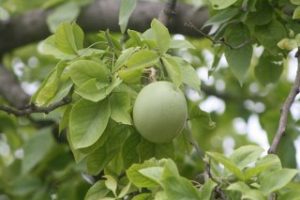
Aegle marmelos yCorrea
- In vitro antiproliferative effects on human tumor cell lines of extracts from the Bangladeshi medicinal plant Aegle marmelos Correa
- Antioxidant and hepatoprotective potential of Aegle marmelos Correa. against CCl4-induced oxidative stress and early tumor events
- Taxol, an anticancer drug produced by an endophytic fungus Bartalinia robillardoides Tassi, isolated from a medicinal plant, Aegle marmelos Correa ex Roxb.
- Radioprotective Effects of Aegle marmelos (L.) Correa (Bael): A Concise Review
- A study of hypoglycemic and antioxidant activity of Aegle marmelos in alloxan induced diabetic rats
- Fruit extract of Aegle marmelos protects mice against radiation-induced lethality
- Hepatoprotective effect of the pulp/seed of Aegle marmelos correa ex Roxb against carbon tetrachloride induced liver damage in rats
- Aegle marmelos (L.) Correa (Bael) and Its Phytochemicals in the Treatment and Prevention of Cancer
- Healing effects of Aegle marmelos (L.) Correa fruit extract on experimental colitis
- Effect of Aegle marmelos Correa. (Bael) fruit extract on tissue antioxidants in streptozotocin diabetic rats
- Antioxidant, anticancer, antibacterial activities and GC-MS analysis of aqueous extract of pulps of Aegle marmelos (L.) Correa
- Evaluation of Aegle marmelos L. Fruit Extract in Reduction of Mobile Phone Induced Oxidative Stress in Mice, Mus musculus
- Aegle marmelos (L.) CORREA Inhibits the Proliferation of Transplanted Ehrlich Ascites Carcinoma in Mice
- Aegle marmelos and Emblica officinalis, used in traditional Asian medicine in the treatment of tissue inflammation and cancer. To this aim, we evaluated the potential of the selected plant extracts to affect proliferation and differentiation of ERα-negative MDA-MB-231 breast cancer cells,
- Therapeutic potential of Aegle marmelos (L.)-An overview
- Aegle marmelos (L.) Correa (Bael) and Its Phytochemicals in the Treatment and Prevention of Cancer
- Isolation and characterization of bioactive metabolites from Xylaria psidii, an endophytic fungus of the medicinal plant Aegle marmelos and their role in mitochondrial dependent apoptosis against pancreatic cancer cells
- Effect of Aegle marmelos leaf extract on N-methyl N-nitrosourea-induced hepatocarcinogensis in Balb/c mice
- Pharmacognostic standardisation and antiproliferative activity of Aegle marmelos (L.) Correa leaves in various human cancer cell lines
- Aegle Marmelos In this work the extraction of the Aegeline is taken up along with the separation of its enantiomers, its crystal structure
and activity of individual isomers on cervical cancer - Aegle marmelos … to treat cancer) has been shown to increase the
level and function of natural killer cells in cervical cancer patients undergoing - (Aegle marmelos) leaves and … The nanoparticles were tested for cytotoxicity
on two human cancer cell lines, HeLa (human cervical cancer)
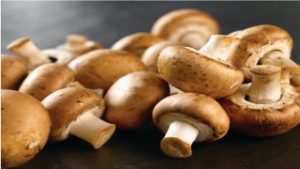
Agaricus blazei Murill
- Tumor-specific cytocidal and immunopotentiating effects of relatively low molecular weight products derived from the basidiomycete, Agaricus blazei Murill.
- Isolation of an antitumor compound from Agaricus blazei Murill and its mechanism of action
- Selective tumoricidal effect of soluble proteoglucan extracted from the basidiomycete, Agaricus blazei Murill, mediated via natural killer cell activation and apoptosis
- Quality of life were improved by consumption of a mushroom extract, Agaricus blazei Murill Kyowa, in gynecological cancer patients undergoing chemotherapy
- Effects of the medicinal mushroom Agaricus blazei Murill on immunity, infection and cancer
- Inhibition by Agaricus blazei Murill fractions of cytopathic effect induced by western equine encephalitis (WEE) virus on VERO cells in vitro
- Secretion of TNF-α, IL-8 and nitric oxide by macrophages activated with Agaricus blazei Murill fractions in vitro
- Suppressing effects of daily oral supplementation of beta-glucan extracted from Agaricus blazei Murill on spontaneous and peritoneal disseminated metastasis
- Isolation of an anti‐angiogenic substance from Agaricus blazei Murill: Its antitumor and antimetastatic actions
- The mushroom Agaricus blazei Murill elicits medicinal effects on tumor, infection, allergy, and inflammation
- The Polar High Molecular Weight Fraction of the Agaricus blazei Murill Extract, AndoSan™, Reduces the Activity of the Tumor-Associated Protease
- Influences of the Extract of Agaricus Blazei Murill on Hepatitis, Cancer and Immunity
- Inhibitory mechanisms of Agaricus blazei Murill on the growth of prostate cancer in vitro and in vivo
- An Alternative Medicine, Agaricus blazei, May Have Induced Severe Hepatic Dysfunction in Cancer Patients
- Measuring perceived effects of drinking an extract of basidiomycetes Agaricus blazei murill: a survey of Japanese consumers with cancer
- A novel medicinal mushroom blend which consists of a blend of mushroom mycelia from the species Agaricus blazei, demonstrates cytostatic effects through the inhibition of cell proliferation and cell cycle arrest at the G2/M phase of highly invasive human breast cancer cells
- Antitumor effects of a new polysaccharide-protein complex (ATOM) prepared from Agaricus blazei (Iwade strain 101) “Himematsutake” and its mechanisms in tumor-bearing mice.
- Medicinal Properties and Clinical Effects of Culinary-Medicinal Mushroom Agaricus blazei Murrill (Agaricomycetideae) (Review)
- Effect of water-soluble proteoglycan isolated from Agaricus blazei on the maturation of murine bone marrow-derived dendritic cells
- The effects of dietary supplementation with Agaricales mushrooms and other medicinal fungi on breast cancer: evidence-based medicine
- Hot water extract of Agaricus blazei Murrill specifically inhibits growth and induces apoptosis in human pancreatic cancer cells
- Anti-cancer Property of Aegle marmelos Leaves: Finding the Facts Against Hepatocellular Carcinoma HepG2 cell.
- Nontargeted analysis and cancer cells cytotoxicity of Aegle marmelos Correa Ex Roxb.
- ANTI-MICROBIAL AND ANTI-CANCER ACTIVITY OF AEGLE MARMELOS AND GAS CHROMATOGRAPHY COUPLED SPECTROMETRY ANALYSIS OF THEIR CHEMICAL CONSTITUENTS
- A xylorhamnoarabinogalactan I from Bael (Aegle marmelos L.) modulates UV/DMBA induced skin cancer via galectin-3 & gut microbiota
- Anticancer ability of Jamur Dewa Extract (Agaricus blazei Murill) On Cervical
Cancer cells as a Reading Material For Traditional Medicine. - which included 61 cervical cancer patients, stages Ia–IIIb, received either carboplatin and etoposide or carboplatin and Taxol every 3 weeks with or without oral Agaricus blazei (as Agaricus blazei Murill
- Immunomodulatory Effects of the Agaricus blazei Murrill-Based Mushroom Extract AndoSan in Patients with Multiple Myeloma Undergoing High Dose Chemotherapy and Autologous Stem Cell Transplantation: A Randomized, Double Blinded Clinical Study
- The Agaricus blazei-based mushroom extract, AndosanTM, has immuno-suppressive and anti-inflammatory effects when used as supplement to multiple myeloma patients receiving high-dose chemotherapy and autologous bone marrow transplantation
- Antitumor and immunomodulating effects of the mushroom product AndosanTM, based on the Basidiomycetes mushroom Agaricus blazei Murill, with special focus on multiple myeloma
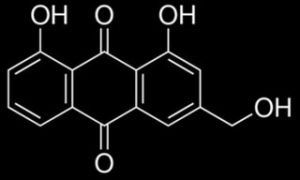
Aloe emodin
- Effects and mechanisms of aloe-emodin on cell death in human lung squamous cell carcinoma
- Protein kinase C involvement in aloe‐emodin‐and emodin‐induced apoptosis in lung carcinoma cell
- Combined effect of aloe-emodin and chemotherapeutic agents on the proliferation of an adherent variant cell line of Merkel cell carcinoma
- Aloe-emodin is a new type of anticancer agent with selective activity against neuroectodermal tumors
- The antiproliferative activity of aloe-emodin is through p53-dependent and p21-dependent apoptotic pathway in human hepatoma cell lines
- Aloe-emodin induces cell death through S-phase arrest and caspase-dependent pathways in human tongue squamous cancer SCC-4 cells
- Anticancer effect of aloe-emodin on cervical cancer cells involves G2/M arrest and induction of differentiation
- The effect of aloe emodin on the proliferation of a new merkel carcinoma cell line
- Emodin, aloe-emodin and rhein inhibit migration and invasion in human tongue cancer SCC-4 cells
- Evaluation of the anti-angiogenic effect of aloe-emodin
- Suppressed Transformation and Induced Differentiation of HER-2/neu-overexpressing Breast Cancer Cells by Emodin
- Tyrosine Kinase Inhibitor Emodin Suppresses Growth of HER-2/neu-overexpressing Breast Cancer Cells in Athymic Mice and Sensitizes These Cells to the Inhibitory Effect of Paclitaxel
- Emodin and Aloe-Emodin Suppress Breast Cancer Cell Proliferation through ERα Inhibition
- Silk fibroin mediated delivery of liposomal emodin to breast cancer cells
- Synergistic effects of curcumin with emodin against the proliferation and invasion of breast cancer cells through upregulation of miR-34a
- Emodin Down-Regulates Androgen Receptor and Inhibits Prostate Cancer Cell Growth
- Emodin enhances cytotoxicity of chemotherapeutic drugs in prostate cancer cells: The mechanisms involve ROS-mediated suppression of multidrug resistance and hypoxia inducible factor-1
- Emodin induces apoptosis in human prostate cancer cell LNCaP
- Aloe-emodin suppresses prostate cancer by targeting the mTOR complex 2
- Emodin inhibits invasion and migration of prostate and lung cancer cells by downregulating the expression of chemokine receptor CXCR4
- Aloe-Emodin Protects RIN-5F (Pancreatic β-cell) Cell from Glucotoxicity via Regulation of Pro-Inflammatory Cytokine and Downregulation of Bax and Caspase 3
- Erratum to “Aloe-Emodin Protects RIN-5F (Pancreatic β-cell) Cell from Glucotoxicity via Regulation of Pro-Inflammatory Cytokine and Downregulation of Bax and Caspase 3”
- Aloe emodin exerts potent anticancer effects in MIAPaCa-2 and PANC-1 human pancreatic adenocarcinoma cell lines through activation of both apoptotic and autophagic pathways, sub-G1 cell cycle arrest and disruption of mitochondrial membrane potential (ΛΨm)
- Photodynamic activity of aloe-emodin induces resensitization of lung cancer cells to anoikis
- Protein Kinase C Delta-mediated Cytoskeleton Remodeling Is Involved in Aloe-emodin-induced Photokilling of Human lung cancer Cells
- Abstract 133: Aloe-emodin as a potential lead targets lung cancer stem cells
- P-052 Aloe-emodin inhibit n-acetyltransferase activity and geneexpression in human lung cancer cell line (NCI-H209)
- Glycosylated Aloe Emodin Inhibits the Growth of Human lung cancer Cells in vitro and in vivo
- Aloe emodin inhibits colon cancer cell migration/angiogenesis by downregulating MMP-2/9, RhoB and VEGF via reduced DNA binding activity of NF-κB
- Aloe Emodin Induces G2/M Cell Cycle Arrest and Apoptosis via Activation of Caspase-6 in Human colon cancer Cells
- The Effect of Aloe-emodin on Multiplication Cycle and Apoptosis of Colon Carcinoma Cancer Cell SW480
- Aloe-Emodin Induces Endoplasmic Reticulum Stress-Dependent Apoptosis in colorectal cancer Cells
- Aloe-emodin induced in vitro G2/M arrest of cell cycle in human promyelocytic leukemia HL-60 cells
- Aloe-emodin inhibited N-acetylation and DNA adduct of 2-aminofluorene and arylamine N-acetyltransferase gene expression in mouse leukemia L 1210 cells
- Aloe-emodin as antiproliferative and differentiating agent on human U937 monoblastic leukemia cells
- Studies of the interaction between Aloe-emodin and DNA and preparation of DNA biosensor for detection of PML-RARα fusion gene in acute promyelocytic leukemia
- Pro-apoptic effect of Aloe emodin on human thyroid cancer cell K1.
- Emodin impairs radioresistance of human osteosarcoma cells by suppressing sonic Hedgehog signaling
- Anticancer effect of aloe-emodin on cervical cancer cells involves G2/M arrest and induction of differentiation
- Emodin induces apoptosis of human cervical cancer hela cells via intrinsic mitochondrial and extrinsic death receptor pathway
- Curcumin and Emodin Down-Regulate TGF-β Signaling Pathway in Human Cervical Cancer Cells
- Combination of aloe-emodin with radiation enhances radiation effects and improves differentiation in human cervical cancer cells
- Emodin Induces Apoptosis of Human Tongue Squamous Cancer SCC-4 Cells through Reactive Oxygen Species and Mitochondria-dependent Pathways
- Anticancer potential of emodin
- Emodin, Aloe-emodin and Rhein Induced DNA Damage and Inhibited DNA Repair Gene Expression in SCC-4 Human Tongue Cancer Cells
- The distinct mechanisms of the antitumor activity of emodin in different types of cancer (Review)
- [Inhibitory effect of emodin on the growth of cervical cancer in tumor-transplanted mice and underlying mechanism].
- Emodin induces apoptosis of human cervical cancer cells through poly(ADP-ribose) polymerase cleavage and activation of caspase-9
- Effects and mechanisms of emodin on cell death in human lung squamous cell carcinoma
- Effects and mechanisms of aloe-emodin on cell death in human lung squamous cell carcinoma
- Aloe-emodin (AE) nanoparticles suppresses proliferation and induces apoptosis in human lung squamous carcinoma via ROS generation in vitro and in vivo
- [Effect of emodin on proliferation and cell cycle of human oral squamous carcinoma Tca8113 cells in vitro].
- Emodin, Physcion, and Crude Extract of Rhamnus sphaerosperma var. pubescens Induce Mixed Cell Death, Increase in Oxidative Stress, DNA Damage, and Inhibition of AKT in Cervical and Oral Squamous Carcinoma Cell Lines
- Emodin has a cytotoxic activity against human multiple myeloma as a Janus-activated kinase 2 inhibitor
- [Inhibitory and Inducing Effects of Emodin Derivative E11 on Proliferation and Apoptosis of Multiple Myeloma Cells].
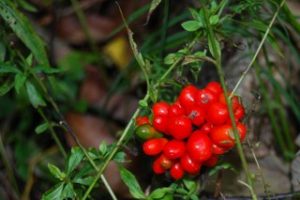
American ginseng extract
- American ginseng: potential structure–function relationship in cancer chemoprevention
- Pilot study of Panax quinquefolius (American ginseng) to improve cancer-related fatigue: a randomized, double-blind, dose-finding evaluation: NCCTG trial N03CA
- Red American ginseng: ginsenoside constituents and antiproliferative activities of heat-processed Panax quinquefolius roots
- American ginseng and breast cancer therapeutic agents synergistically inhibit MCF‐7 breast cancer cell growth
- Anti-proliferative effect of ginseng saponins on human prostate cancer cell line
- Preventive effect of ginseng intake against various human cancers: a case-control study on 1987 pairs.
- Cisplatin’s tumoricidal effect on human breast carcinoma MCF-7 cells was not attenuated by American ginseng
- Characterization of gene expression regulated by American ginseng and ginsenoside Rg3 in human colorectal cancer cells
- Extraction-dependent effects of American ginseng (Panax quinquefolium) on human breast cancer cell proliferation and estrogen receptor activation
- Panax ginseng—a non-organ-specific cancer preventive?
- Stereospecific anticancer effects of ginsenoside Rg3 epimers isolated from heat-processed American ginseng on human gastric cancer cell
- Rh2 from Ginseng Synergistically Enhances Paclitaxel or Mitoxantrone in Prostate Cancer Models
- Generation of ginsenosides Rg3 and Rh2 from North American ginseng
- Experimental therapy of prostate cancer with novel natural product anti‐cancer ginsenosides
- Protective Effects of Asian Dietary Items on Cancers – Soyand Ginseng
- Extraction-Dependent Effects of American Ginseng (Panax quinquefolium) on Human Breast Cancer Cell Proliferation and Estrogen Receptor Activation
- American Ginseng Transcriptionally Activates p21mRNA in BreastCancer Cell Lines
- American Ginseng Inhibits Induced COX-2 and NFKB Activation in Breast Cancer Cells
- Chemical and pharmacological studies of saponins with a focus on American ginseng
- The influence of lead and arsenite on the inhibition of human breast cancer MCF-7 cell proliferation by American ginseng root (Panax quinquefolius L.)
- Uses of north american ginseng fractions for treating leukemia
- American ginseng and its interactions with Imatinib mesylate (Gleevec) on K562 chronic myeloid leukemia cells
- The mitochondrial pathway is involved in American ginseng-induced apoptosis of SW-480 colon cancer cells
- American ginseng suppresses Western diet-promoted tumorigenesis in model of inflammation-associated colon cancer: role of EGFR
- Role of cyclin inhibitor protein p21 in the inhibition of HCT116 human colon cancer cell proliferation by American ginseng (Panax quinquefolius) and its constituents
- A Key Role of microRNA-29b for the Suppression of colon cancer Cell Migration by American Ginseng
- Mechanistic insight into the ability of American ginseng to suppress colon cancer associated with colitis
- A Hexane Fraction of American Ginseng Suppresses Mouse Colitis and Associated colon cancer: Anti-inflammatory and Proapoptotic Mechanisms
- Metabonomic Profiling Reveals Cancer Chemopreventive Effects of American Ginseng on Colon Carcinogenesis in ApcMin/+ Mice
- Role of intestinal microbiome in American ginseng-mediated colon cancer protection in high fat diet-fed AOM/DSS mice
- Hexane Fraction of American Ginseng Suppresses Colitis and colon cancer—Letter
- Red American ginseng enhances the effect of fluorouracil on human colon cancer cells via both paraptosis and apoptosis pathways
- Hexane Fraction of American Ginseng Suppresses Colitis and colon cancer—Response
- Abstract 1248: Gut microbiome and metabolomic profiling reveal preventive effects of American ginseng on inflammation-associated colon cancer
- Antioxidants potentiate American ginseng-induced killing of colorectal cancer cells
- Characterization of gene expression regulated by American ginseng and ginsenoside Rg3 in human colorectal cancer cells
- American ginseng berry enhances chemopreventive effect of 5-FU on human colorectal cancer cells
- [Progress in anti-cancer research of American ginseng: with an example of colorectal cancer].
- Abstract B28: Chemoprevention of colorectal cancer: Does American ginseng play a role?
- Abstract LB-168: A hexane fraction of American ginseng suppresses colon cancer associated with colitis
- Ginseng and cancer
- Effect of sun ginseng potentiation on epirubicin and paclitaxel-induced apoptosis in human cervical cancer cells
- Functional role of ginseng-derived compounds in cancer
- Potential Anti-Cancer Activities of Furanodiene, A Sesquiterpene from Curcuma wenyujin
- Improved anticancer effect of ginseng extract by microwave-assisted processing through the generation of ginsenosides Rg3, Rg5 and Rk1
- Ginseng nanoparticles: a budding tool for cancer treatment
- Determination of Ginsenosides Content in Korean Ginseng Seeds and Roots by High Performance Liquid Chromatography
- Notoginsenoside R7 suppresses cervical cancer via PI3K/PTEN/Akt/mTOR signaling
- Ginsenoside‑Rg5 induces apoptosis and DNA damage in human cervical cancer cells
- Ginseng: A medical Enigma
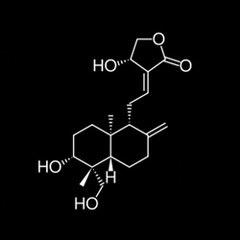
Andrographolide
- Inhibitory effects of andrographolide on migration and invasion in human non-small cell lung cancer A549 cells via down-regulation of PI3K/Akt signaling pathway
- Andrographolide, a potential cancer therapeutic agent isolated from Andrographis paniculata
- Apoptosis inducing effect of andrographolide on TF-47 human breast cancer cell line
- Andrographolide and its analogues: versatile bioactive molecules for combating inflammation and cancer
- DRF 3188 a novel semi-synthetic analog of andrographolide: cellular response to MCF 7 breast cancer cells
- Andrographolide, an herbal medicine, inhibits interleukin-6 expression and suppresses prostate cancer cell growth
- The natural products parthenolide and andrographolide exhibit anti-cancer stem cell activity in multiple myeloma
- Benzylidene derivatives of andrographolide inhibit growth of breast and colon cancer cells in vitro by inducing G1 arrest and apoptosis
- Andrographolide inhibits the adhesion of gastric cancer cells to endothelial cells by blocking E-selectin expression
- Andrographolide down-regulates hypoxia-inducible factor-1α in human non-small cell lung cancer A549 cells
- Induction of heme oxygenase-1 and inhibition of TPA-induced matrix metalloproteinase-9 expression by andrographolide in MCF-7 human breast cancer cells
- Andrographolide inhibits hypoxia-inducible factor-1 through phosphatidylinositol 3-kinase/AKT pathway and suppresses breast cancer growth
- Benzylidene derivatives of andrographolide inhibit growth of breast and colon cancer cells in vitro by inducing G1 arrest and apoptosis
- Cytotoxicity and cell cycle arrest induced by andrographolide lead to programmed cell death of MDA-MB-231 breast cancer cell line
- Andrographolide and its analogues: versatile bioactive molecules for combating inflammation and cancer
- Andrographolide, an Herbal Medicine, Inhibits Interleukin-6 Expression and Suppresses Prostate Cancer Cell Growth
- Andrographolide Targets Androgen Receptor Pathway in Castration-Resistant Prostate Cancer
- Taxifolin Enhances Andrographolide-Induced Mitotic Arrest and Apoptosis in Human Prostate Cancer Cells via Spindle Assembly Checkpoint Activation
- Andrographolide induces cell cycle arrest and apoptosis in PC-3 prostate cancer cells
- Morphological and Biochemical Changes of Andrographolide-induced Cell Death in Human Prostatic Adenocarcinoma PC-3 Cells
- Andrographolide causes apoptosis via inactivation of STAT3 and Akt and potentiates antitumor activity of gemcitabine in pancreatic cancer
- The HLJ1 -targeting drug screening identified Chinese herb andrographolide that can suppress tumour growth and invasion in non-small-cell lung cancer
- Andrographolide inhibits the activation of NF‑κB and MMP‑9 activity in H3255 lung cancer cells
- SRS06, a New Semisynthetic Andrographolide Derivative with Improved Anticancer Potency and Selectivity, Inhibits Nuclear Factor-κB Nuclear Binding in the A549 Non-Small Cell lung cancer Cell Line
- Andrographolide enhances cisplatin-mediated anticancer effects in lung cancer cells through blockade of autophagy
- Effect of Andrographolide on Human lung cancer Cells Proliferation and Invasion-associated Molecular Expression
- Molecular mechanism of Andrographolide on MMP-9 expression in human lung cancer cells
- Endoplasmic reticulum stress and IRE-1 signaling cause apoptosis in colon cancer cells in response to andrographolide treatment
- Andrographolide Exhibits Anti-Invasive Activity against colon cancer Cells via Inhibition of MMP2 Activity
- Increased reactive oxygen species levels cause ER stress and cytotoxicity in andrographolide treated colon cancer cells
- Andrographolide suppresses proliferation of human colon cancer SW620 cells through the TLR4/NF‑κB/MMP‑9 signaling pathway
- In vitro 3D colon tumor penetrability of SRJ09, a new anti-cancer andrographolide analog
- Andrographolide Exhibits Anticancer Potential Against Human colon cancer Cells by Inducing Cell Cycle Arrest and Programmed Cell Death via Augmentation of Intracellular Reactive Oxygen Species Level
- A silyl andrographolide analogue suppresses Wnt/β-catenin signaling pathway in colon cancer
- Cytotoxic activity of andrographolide in colon cancer through inhibition cox-2 by in silico study
- Induction of G1 arrest and apoptosis by new benzylidene derivatives of andrographolide in breast and colon cancer cells
- Effect of andrographolide in inhibition of human colon cancer SW1116 cell.
- Anticancer Activity of A Silyl Andrographolide Analogue Mediated Through Wnt/β-Catenin Signaling In colon cancer Cells
- Andrographolide reversed 5-FU resistance in human colorectal cancer by elevating BAX expression
- Andrographolide enhanced 5-fluorouracil-induced antitumor effect in colorectal cancer via inhibition of c-MET pathway
- The anti-cancer activity of an andrographolide analogue functions through a GSK-3β-independent Wnt/β-catenin signaling pathway in colorectal cancer cells
- Andrographolide Antagonizes TNF-α-Induced IL-8 via Inhibition of NADPH Oxidase/ROS/NF-κB and Src/MAPKs/AP-1 Axis in Human colorectal cancer HCT116 Cells
- An open-label, randomized, controlled clinical trial to explore the curative effects between the treatment of capecitabine and andrographolide and the single capecitabine in the patients with pathological and/or histologic diagnosed unresectable, advanced, recurrent, and metastatic colorectal cancer.
- Folate-Functionalized Amphiphilic Chitosan Polymeric Micelles Containing Andrographolide Analogue (3A.1) for colorectal cancer
- Andrographolide inhibits growth of human T-cell acute lymphoblastic leukemia Jurkat cells by downregulation of PI3K/AKT and upregulation of p38 MAPK pathways
- Andrographolide potentiates the antitumor effect of topotecan in acute myeloid leukemia cells through an intrinsic apoptotic pathway
- Andrographolide pre-treatment enhances the anti-tumor activity of topotecan on acute myeloid leukemia cells in vitro
- Andrographolide from Andrographis paniculata shows anti-proliferative activity and anti-inflammatory effects in human monocytic leukemia cells
- Andrographolide and its potent derivative exhibit anticancer effects against imatinib-resistant chronic myeloid leukemia cells by downregulating the Bcr-Abl oncoprotein
- Abstract 717: The diterpenoid lactone andrographolide (andro) induces apoptosis in all- trans-retinoic-acid (ATRA) resistant acute promyelocytic leukemia (APL) cell lines: Potential therapeutic implications
- Andrographolide induces autophagic cell death in human liver cancer cells through cyclophilin D-mediated mitochondrial permeability transition pore
- In vivo inhibitory activity of andrographolide derivative ADN-9 against liver cancer and its mechanisms involved in inhibition of tumor angiogenesis
- Andrographolide radiosensitizes human ovarian cancer SKOV3 xenografts due to an enhanced apoptosis and autophagy
- Anti-proliferative and Pro-apoptotic Effects from Sequenced Combinations of Andrographolide and Cisplatin on ovarian cancer Cell Lines
- Effects of andrographolide on invasion and apoptosis of ovarian cancer SKOV-3 cells
- A novel role of andrographolide, an NF-kappa B inhibitor, on inhibition of platelet activation: the pivotal mechanisms of endothelial nitric oxide synthase/cyclic GMP
- Andrographolide stimulates osteoblastogenesis and bone formation by inhibiting nuclear factor kappa-Β signaling both in vivo and in vitro
- Effects of rapeseed meal, terramycin, berberine hydrochloride and andrographolide on thyroid function in fattening swine
- Critical role of pro-apoptotic Bcl-2 family members in andrographolide-induced apoptosis in human cancer cells
- Inhibition of the JAK-STAT3 pathway by andrographolide enhances chemosensitivity of cancer cells to doxorubicin
- Activity of Andrographolide and Its Derivatives on HPV16 Pseudovirus Infection and Viral Oncogene Expression in Cervical Carcinoma Cells
- Andrographolide impedes cancer stemness and enhances radio-sensitivity in oral carcinomas via miR-218 activation
- Broad-spectrum antiviral properties of andrographolide
- The effect of andrographolide on Human papillomavirus type 16 (HPV16) positive cervical cancer cells (SiHa)
- Nanoparticle Engineering Enhances Anticancer Efficacy of Andrographolide in MCF-7 Cells and Mice Bearing EAC
- Synthesis and evaluation of anticancer activity of novel andrographolide derivatives†
- Andrographolide: A New Plant-Derived Antineoplastic Entity on Horizon
- Biodegradable andrographolide-eluting nanofibrous membranes for the treatment of cervical cancer
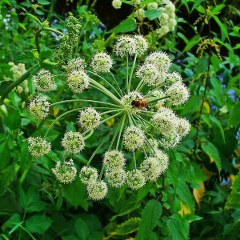
Angelica archangelica
- The cytotoxic effect of two chemotypes of essential oils from the fruits of Angelica archangelica L.
- Antitumour activity of Angelica archangelica leaf extract
- Antiproliferative effect of Angelica archangelica fruits
- Antioxidant and flavor properties of Angelica sinensis extracts as affected by processing
- Study of the antimutagenic properties of Angelica archangelica by the micronucleus test
- An Update on Antitumor Activity of Angelica Species
- Antitumour activity of Angelica archangelica leaf extract. – NCBI
- Antitumour activity of Angelica archangelica leaf extract – ResearchGate
- Antiproliferative Effect of Angelica archangelica Fruits
- Antitumour Activity of Angelica archangelica Leaf Extract
- Enhanced accumulation of decursin and decursinol angelate in root cultures and intact roots of Angelica gigas Nakai following elicitation
- Angelicin inhibits the malignant behaviours of human cervical cancer potentially via inhibiting autophagy
- Complementary and Alternative Approach to Heal Cancer: A Review
- Imperatorin efficiently blocks TNF-α-mediated activation of ROS/PI3K/Akt/NF-κB pathway

Angelica sinensis extract
- Experimental study of anti-tumor effects of polysaccharides from Angelica sinensis
- Study of the anti-proliferative effects and synergy of phthalides from Angelica sinensis on colon cancer cells
- Acetone extract of Angelica sinensis inhibits proliferation of human cancer cells via inducing cell cycle arrest and apoptosis
- Effect of polysaccharides from Angelica sinensis on gastric ulcer healing
- A novel polysaccharide, isolated from Angelica sinensis (Oliv.) Diels induces the apoptosis of cervical cancer HeLa cells through an intrinsic apoptotic pathway
- The antitumor effects of Angelica sinensis on malignant brain tumors in vitro and in vivo
- Structure of an anti-tumor polysaccharide from Angelica sinensis (Oliv.) Diels
- The natural compound n‐butylidenephthalide derived from Angelica sinensis inhibits malignant brain tumor growth in vitro and in vivo3
- Characterizations and anti-tumor activities of three acidic polysaccharides from Angelica sinensis (Oliv.) Diels
- The angiogenic effects of Angelica sinensis extract on HUVEC in vitro and zebrafish in vivo
- Potential therapeutic effects of N-butylidenephthalide from Radix Angelica Sinensis (Danggui) in human bladder cancer cells
- Use of dong quai (Angelica sinensis) to treat peri- or postmenopausal symptoms in women with breast cancer: is it appropriate?
- Among the top 10 most frequently prescribed CHP for treating breast cancer, seven contained dang qui (Angelica sinensis-radix) and six contained ren shen (Panax ginseng-radix), which are reported to have potential beneficial synergistic effects on breast cancer cells.
- Estrogenic activity of standardized extract of Angelica sinensis
- Angelicae sinensis are traditional Chinese herbs, all of which have proven immunomodulatory functions in laboratory‐based research.
- Epigenetic Reactivation of Nrf2 in Murine Prostate Cancer TRAMP C1 Cells by Natural Phytochemicals Z-Ligustilide and Radix Angelica Sinensis via Promoter CpG Demethylation
- Angelica sinensis suppresses human lung adenocarcinoma A549 cell metastasis by regulating MMPs/TIMPs and TGF-β1
- Angelica sinensis (also called danggui in Chinese) is one of the most commonly used traditional herbs in China. It is recommended as a tonic, hemopoetic, spasmolytic, and analgesic drug in clinical practice [4]. In our previous study, n-butylidenephthalide (BP), a compound isolated from Angelica sinensis chloroform extract, exhibits growth inhibitory activity on various human cancer cell lines, including brain, lung and liver cancer cells.
- Inhibitory effect of Angelica sinensis extract in the presence of 2-hydroxypropyl-β-cyclodextrin
- Oral administration of Angelica sinensis polysaccharide protects against pancreatic islets failure in type 2 diabetic mice: Pancreatic β-cell apoptosis inhibition
- [colorectal cancer preventive effect of combined administration of phenolic acids and supercritical extracts from Angelica sinensis].
- Senescence Effects of Angelica sinensis Polysaccharides on Human Acute Myelogenous leukemia Stem and Progenitor Cells
- Angelica sinensis polysaccharide induces erythroid differentiation of human chronic myelogenous leukemia k562 cells.
- [Experimental study on aging effect of Angelica sinensis polysaccharides combined with cytarabine on human leukemia KG1alpha cell lines].
- Structure characterization and anti-leukemia activity of a novel polysaccharide from Angelica sinensis (Oliv.) Diels
- [Biological mechanisms of human-derived leukemia stem cells senescence regulated by Angelica sinensis polysaccharide].
- Effects of combined injection of Angelica sinensis polysaccharide and cytarabine on bone marrow mononuclear cells of transplanted human leukemia mice
- Angelica sinensis polysaccharide nanoparticles as a targeted drug delivery system for enhanced therapy of liver cancer
- Angelica sinensis: A Chinese herb for brain cancer therapy
- A novel polysaccharide, isolated from Angelica sinensis (Oliv.) Diels induces the apoptosis of cervical cancer HeLa cells through an intrinsic apoptotic pathway
- Anti-Cancer Effect of Angelica Sinensis on Women’s Reproductive Cancer
- Natural Products Reported as Potential Inhibitorsof Uterine Cervical Neoplasia
- The effects of polysaccharides from the root of Angelica sinensis on tumor growth and iron metabolism in H22-bearing mice
- Angelica sinensis: A Chinese herb for brain cancer therapy
- The anticancer effects of ferulic acid is associated with induction of cell cycle arrest and autophagy in cervical cancer cells
- Medical composition for inhibiting the growth of cancer stem cells
antroquinonol
- Effects of commercial anthocyanin-rich extracts on colonic cancer and nontumorigenic colonic cell growth
- Anthocyanin-rich extracts inhibit multiple biomarkers of colon cancer in rats
- Antitumor effect of anthocyanin fractions extracted from red soybeans and red beans in vitro and in vivo
- Anti-angiogenic, antioxidant, and anti-carcinogenic properties of a novel anthocyanin-rich berry extract formula
- Structure− function relationships of anthocyanins from various anthocyanin-rich extracts on the inhibition of colon cancer cell growth
- Anticancer activities of an anthocyanin-rich extract from black rice against breast cancer cells in vitro and in vivo
- Antitumor effect of hydrolyzed anthocyanin from grape rinds and red rice
- Anthocyanin fraction from potato extracts is cytotoxic to prostate cancer cells through activation of caspase-dependent and caspase-independent pathways
- Anthocyanins and their role in cancer prevention
- Cranberry and blueberry: evidence for protective effects against cancer and vascular diseases
- Anthocyanin Extracted from Black Soybean Reduces Prostate Weight and Promotes Apoptosis in the Prostatic Hyperplasia-Induced Rat Model
- Anthocyanins: Targeting of Signaling Networks in Cancer Cells
- Anthocyanin Induces Apoptosis of DU-145 Cells In Vitro and Inhibits Xenograft Growth of Prostate Cancer
- Autophagy inhibition enhances anthocyanin-induced apoptosis in hepatocellular carcinoma
- Evaluation of Antiproliferative Activity of Red Sorghum Bran Anthocyanin on a Human Breast Cancer Cell Line (MCF-7)
- Cytotoxic Effects of Bilberry Extract on MCF7-GFP-Tubulin Breast Cancer Cells
- Isolation of bioactive constituents from Vaccinium myrtillus (bilberry) fruits and cell cultures β-Sitosterol and the carotenoids lutein and zeaxanthin were identified as components of the active hexane extract, which also exhibited a growth suppressing effect against two human breast cancer cell lines MCF-7 and BT-20.
- [Dietary supplementation with bilberry extract prevents macular degeneration and cataracts in senesce-accelerated OXYS rats].
- Protective effect of anthocyanin-rich extract from bilberry (Vaccinium myrtillus L.) against myelotoxicity induced by 5-fluorouracil
- Anthocyanins extract from bilberry enhances the therapeutic effect of pollen of Brassica napus L. on stress-provoked benign prostatic hyperplasia in restrained mice
- Antioxidative efficiency of an anthocyanin rich bilberry extract in the human colon tumor cell lines Caco-2 and HT-29
- Inhibition of pancreatic cancer cell migration by plasma anthocyanins isolated from healthy volunteers receiving an anthocyanin-rich berry juice
- Abstract 1615: Anthocyanin-rich black raspberry extract negatively regulates stem cell related molecules, EMT, and pluripotency of pancreatic cancer stem cells
- Anthocyanin from Mulberry Extract Protects Hyperglycemia-Induced Pancreatic β-cell Apoptosis
- Bilberry extract (Antho 50) selectively induces redox-sensitive caspase 3-related apoptosis in chronic lymphocytic leukemia cells by targeting the Bcl-2/Bad pathway
- Anthocyanin-rich bilberry extract induces apoptosis in acute lymphoblastic leukemia cells via redox-sensitive epigenetic modifications
- Evaluation of anthocyanin levels after consumption of bilberry extract in patients with colorectal cancer and liver metastases
- Influence of bilberry-derived anthocyanidins on key regulators of colorectal cancer development.
- Prevention and treatment of familial adenomatous polyposis and colorectal cancer by bilberry-derived anthocyanidins.
- Antiproliferative and Antioxidant Properties of Anthocyanin Rich Extracts from Blueberry and Blackcurrant Juice
- Antioxidant Activities of Chokeberry Extracts and the Cytotoxic Action of Their Anthocyanin Fraction on HeLa Human Cervical Tumor Cells
- Anticarcinogenic Activity of Strawberry, Blueberry, and Raspberry Extracts to Breast and Cervical Cancer Cells
- Berry Extracts Exert Different Antiproliferative Effects against Cervical and Colon Cancer Cells Grown in Vitro
- Beyond Conventional Medicine – a Look at Blueberry, a Cancer-Fighting Superfruit
- Blueberry as a Potential Radiosensitizer for Treating Cervical Cancer
- Health benefits of anthocyanins and molecular mechanisms: Update from recent decade
- Cancer prevention with freeze-dried berries and berry components
- Anthocyanins and Cancer Prevention
- The studies of cyanidin 3-glucoside-induced apoptosis in human cervical cancer Hela cells and its mechanism
- Antrodia cinnamomea fruiting bodies extract suppresses the invasive potential of human liver cancer
- Antitumor effects of the partially purified polysaccharides from Antrodia camphorata and the mechanism of its action
- Anti-angiogenic effects and mechanisms of polysaccharides from Antrodia cinnamomea with different molecular weights
- Study for anti-angiogenic activities of polysaccharides isolated from Antrodia cinnamomea in endothelial cells
- Review of pharmacological effects of Antrodia camphorata and its bioactive compounds
- Anti-inflammatory effects of methanol extract of Antrodia cinnamomea mycelia both in vitro and in vivo
- Apoptotic effects of extract from Antrodia camphorata fruiting bodies in human hepatocellular carcinoma cell lines
- Antioxidant Properties of Antrodia camphorata in Submerged Culture
- Cytotoxic triterpenes from Antrodia camphorata and their mode of action in HT-29 human colon cancer cells
- Growth inhibition and induction of apoptosis in MCF-7 breast cancer cells by Antrodia camphorata
- Inhibition of growth, migration and invasion of human bladder cancer cells by antrocin, a sesquiterpene lactone isolated from Antrodia cinnamomea, and its molecular
- Ethanol Extracts of Fruiting Bodies of Antrodia cinnamomea Suppress CL1-5 Human Lung Adenocarcinoma Cells Migration by Inhibiting Matrix Metalloproteinase-2/9 through ERK, JNK, p38, and PI3K/Akt Signaling Pathways
- Ethanol extracts of fruiting bodies of Antrodia cinnamomea exhibit anti-migration action in human adenocarcinoma CL1-0 cells through the MAPK and PI3K/AKT signaling pathways
- Unique Formosan Mushroom Antrodia camphorata Differentially Inhibits Androgen-Responsive LNCaP and -Independent PC-3 Prostate Cancer Cells
- Antrodan, A β-glucan obtained from Antrodia cinnamomea mycelia, is beneficial to benign prostate hyperplasia
- Elucidating the inhibitory mechanisms of the ethanolic extract of the fruiting body of the mushroom Antrodia cinnamomea on the proliferation and migration of murine leukemia WEHI-3 cells and their tumorigenicity in a BALB/c allograft tumor model
- Cytotoxic triterpenes from Antrodia camphorata and their mode of action in HT-29 human colon cancer cells
- Growth inhibition and induction of apoptosis in MCF-7 breast cancer cells by Antrodia camphorata
- Novel effect and the mechanistic insights of fruiting body extract of medicinal fungus Antrodia cinnamomea against T47D breast cancer
- Inhibition of cyclooxygenase-2 and induction of apoptosis in estrogen-nonresponsive breast cancer cells by Antrodia camphorata
- Identification of Antrocin from Antrodia camphorata as a Selective and Novel Class of Small Molecule Inhibitor of Akt/mTOR Signaling in Metastatic Breast Cancer MDA-MB-231 Cells
- Anticancer effects on human pancreatic cancer cells of triterpenoids, polysaccharides and 1,3-β-d-glucan derived from the fruiting body of Antrodia camphorata†
- Inhibition of the survival of pancreatic cancer by cyclohexenone compounds from Antrodia camphorata
- Antrodia cinnamomea induces autophagic cell death via the CHOP/TRB3/Akt/mTOR pathway in colorectal cancer cells
- Molecular mechanism of Antrodia cinnamomea sulfated polysaccharide on the suppression of lung cancer cell growth and migration via induction of transforming growth factor β receptor degradation
- Coenzyme Q0 from Antrodia cinnamomea in Submerged Cultures Induces Reactive Oxygen Species-Mediated Apoptosis in A549 Human lung cancer Cells
- Antrodia cinnamomea induces anti-tumor activity by inhibiting the STAT3 signaling pathway in lung cancer cells
- Suppression of Cell Growth, Migration and Drug Resistance by Ethanolic Extract of Antrodia cinnamomea in Human lung cancer A549 Cells and C57BL/6J Allograft Tumor Model
- Antrodia Cinnamomea Prolongs Survival in a Patient with Small Cell lung cancer
- Method of preparing bioactive compound from solid-state cultivated Antrodia cinnamomea mycelium for anti-metastasis against lung cancer cells
- A sulfated glucan from Antrodia cinnamomea reduces Slug expression through regulation of TGFβ/AKT/GSK3β axis in lung cancer
- 4-Acetylantroquinonol B from antrodia cinnamomea enhances immune function of dendritic cells against liver cancer stem cells
- Antrodia cinnamomea fruiting bodies extract suppresses the invasive potential of human liver cancer cell line PLC/PRF/5 through inhibition of nuclear factor κB pathway.
- Cytotoxic Effect and Induction of Apoptosis in Human Cervical Cancer Cells by Antrodia camphorata
- Pinicolol B from Antrodia cinnamomea induces apoptosis of nasopharyngeal carcinoma cells
- A polysaccharide from Antrodia cinnamomea mycelia exerts antitumor activity through blocking of TOP1/TDP1-mediated DNA repair pathway
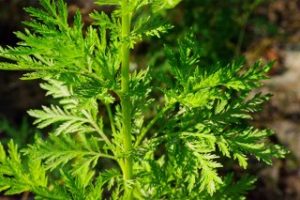
Artemisinin Artemisia annua L. (Huanghuahao)
- Flavonoids from Artemisia annua L. as antioxidants and their potential synergism with artemisinin against malaria and cancer
- Antiproliferative effects of extracts from Iranian Artemisia species on cancer cell lines
- Inhibitory effect of jaceosidin isolated from Artemisia argyi on the function of E6 and E7 oncoproteins of HPV 16
- Eupatilin, a Pharmacologically Active Flavone Derived from Artemisia Plants, Induces Apoptosis in Human Gastric Cancer (AGS) Cells
- Composition and anti-oxidant, anti-cancer and anti-inflammatory activities of Artemisia herba-alba, Ruta chalpensis L. and Peganum harmala L.
- Anti-inflammatory and immunosuppressive effect of flavones isolated from Artemisia vestita
- Study ontoxic effects of Artemisisa spp. fractions from Iran on human cancer cell lines
- Effects of artemisinin and its derivatives on growth inhibition and apoptosis of oral cancer cells
- Artemisia princeps var orientalis induces apoptosis in human breast cancer MCF-7 cells
- Oral artemisinin prevents and delays the development of 7, 12-dimethylbenz [a] anthracene (DMBA)-induced breast cancer in the rat
- Synthetic Derivatives of Artemisinin and Cancer
- Ethnopharmacology of Artemisia annua L.: A Review Research studies also report that artemisinin is effective for killing human breast cancer cells.
- Artemisia Species in Small Ruminant Production: their PotentialAntioxidant and Anthelmintic Effects.
- Nanocarriers for Delivery of Herbal Based Drugs in Breast Cancer – An Overview
- An Overview of the Current Development of Phytoremedies for Breast Cancer
- Role of angiogenic factors of herbal origin in regulation of molecular pathways that control tumor angiogenesis
- Antitumor activity of an Artemisia annua herbal preparation and identification of active ingredients
- Evaluation of the anticancer activities of pomegranate (Punica granatum) and harmal (Rhazya stricta) plants grown in Saudi arabia
- Artemisinin as a Chinese medicine, selectively induces apoptosis in pancreatic tumor cell line
- Potent anticancer activity of the second generation artemisinin-derived trioxane dimers on pancreatic cancer cells.
- Preclinical Efficacy and Safety Assessment of Artemisinin-Chemotherapeutic Agent Conjugates for ovarian cancer
- Artemisinin derivatives inhibit epithelial ovarian cancer cells via autophagy-mediated cell cycle arrest
- Abstract 470: Artemisinin derivatives synergize with paclitaxel by targeting FOXM1 through Raf/MEK/MAPK signaling pathway in ovarian cancer
- Artemisinin induced reversal of EMT affects the molecular biological activity of ovarian cancer SKOV3 cell lines
- Artemisinin inhibits the proliferation, migration, and inflammatory reaction induced by tumor necrosis factor-α in vascular smooth muscle cells through nuclear factor kappa B pathway
- Artemisinin derivative artesunate induces radiosensitivity in cervical cancer cells in vitro and in vivo
- Use of artemisinin and its derivatives to treat HPV-infected/transformed cells and cervical cancer: a review
- Selective Radiosensitization of Human Cervical Cancer Cells and Normal Cells by Artemisinin Through the Abrogation of Radiation-Induced G2 Block
- Study on the radiosensitizing effect of artemisinin on human cervical cancer and corresponding mechanisms.
- Synthesis of Artemisinin–Estrogen Hybrids Highly Active against HCMV, P. falciparum, and Cervical and Breast Cancer
- Molecular alterations induced by artemisinin in HPV-39 infected human cervical cancer cells
- Artemisinin derivative artesunate induces radiosensitivity in cervical cancer cells in vitro and in vivo
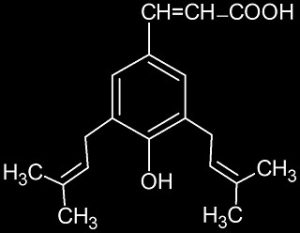
Artepillin C (Brazilian propolis)
- Apoptosis and suppression of tumor growth by artepillin C extracted from Brazilian propolis.
- Suppression of tumor-induced angiogenesis by Brazilian propolis: major component artepillin C inhibits in vitro tube formation and endothelial cell proliferation
- Anti-inflammatory effects of a bioavailable compound, Artepillin C, in Brazilian propolis
- Apoptosis of human leukemia cells induced by Artepillin C, an active ingredient of Brazilian propolis.
- Pulmonary carcinogenesis induced by ferric nitrilotriacetate in mice and protection from it by Brazilian propolis and artepillin C
- Artepillin C (3, 5-diprenyl-4-hydroxycinnamic acid) sensitizes LNCaP prostate cancer cells to TRAIL-induced apoptosis
- Artepillin C in Brazilian propolis induces G0/G1 arrest via stimulation of Cip1/p21 expression in human colon cancer cells
- Renal carcinogenesis induced by ferric nitrilotriacetate in mice, and protection from it by Brazilian propolis and artepillin C
- Antioxidative bioavailability of artepillin C in Brazilian propolis
- Cell growth inhibitory effect of cinnamic acid derivatives from propolis on human tumor cell lines
- Artepillin C induces selective oxidative stress and inhibits migration and invasion in a comprehensive panel of human cervical cancer cell lines.
- Ethanolic extract of Brazilian green propolis sensitizes prostate cancer cells to TRAIL-induced apoptosis
- Artepillin C (ARC) in Brazilian green propolis selectively blocks oncogenic PAK1 signaling and suppresses the growth of NF tumors in mice
- Antiproliferation of human prostate cancer cells by ethanolic extracts of Brazilian propolis and its botanical origin
- Inhibition of Inflammatory Response by Artepillin C in Activated RAW264.7 Macrophages
- Ivermectin inactivates the kinase PAK1 artepillin C (ARC), the major anti-cancer ingredients in propolis,and blocks the PAK1-dependent growth of human ovarian cancer and NF2 tumor cell lines
- Preferential cytotoxicity to tumor cells of 3,5-diprenyl-4-hydroxycinnamic acid (artepillin C) isolated from propolis.
- Antiproliferative Activity of Brown Cuban Propolis Extract on Human Breast Cancer Cells
- Biological Therapy Using Propolis as Nutritional Supplement in Cancer Treatment It was observed that administration of paclitaxel and propolis effectively suppressed breast cancer
- Brazilian green propolis and its constituent, Artepillin C inhibits allogeneic activated human CD4 T cells expansion and activation
- Propolis in Dentistry and Oral Cancer Management CAPE is a well-known NF-κB inhibitor at high concentrations of 50-80 μM. CAPE treatment suppresses the proliferation of several human cancer cell lines, including breast, prostate, lung, cervical, and oral cancer cells.
- Apoptosis of human leukemia cells induced by Artepillin C, an active ingredient of Brazilian propolis.
- Apoptosis of human leukemia cell lines induced by Artepillin C extracted from Brazilian propolis
- Artepillin C in Brazilian propolis induces G0/G1 arrest via stimulation of Cip1/p21 expression in human colon cancer cells
- Evaluate the cytotoxic activity of honey, propolis, and bee venom from different localities in Egypt against liver, breast, and colorectal cancer
- Artepillin C induces selective oxidative stress and inhibits migration and invasion in a comprehensive panel of human cervical cancer cell lines
- Effect of Withania somnifera (Ashwagandha) on the Development of Chemotherapy-Induced Fatigue and Quality of Life in Breast Cancer Patients
- Genomic analysis highlights the role of the JAK-STAT signaling in the anti-proliferative effects of dietary flavonoid—’Ashwagandha’in prostate cancer cells
- Withania somnifera Dunal (Ashwagandha): potential plant source of a promising drug for cancer chemotherapy and radiosensitization.
- Selective killing of cancer cells by leaf extract of Ashwagandha: Components, activity and pathway analyses
- Selective killing of cancer cells by Ashwagandha leaf extract and its component Withanone involves ROS signaling
- Antitumor and radiosensitizing effects of Withania somnifera (Ashwagandha) on a transplantable mouse tumor, Sarcoma-180.
- Ashwagandha (Withania somnifera): Role in safeguarding health, immunomodulatory effects, combating infections and therapeutic applications: A review
- In vivo growth inhibitory effect of Withania somnifera (Ashwagandha) on a transplantable mouse tumor, Sarcoma 180.
- Protective role of Ashwagandha leaf extract and its component withanone on scopolamine-induced changes in the brain and brain-derived cells
- Water extract of ashwagandha leaves limits proliferation and migration, and induces differentiation in glioma cells
- Ashwagandha for Cancer Metastasis: Bioactives and Basics of Their Function
- VARIAN TUMOR-ASSOCIATED GRP78 INDUCES IMMUNOSUPPRESSION AND WITHAFERIN A (ASHWAGANDHA) ENHANCES ANTI-TUMOR
- Effect of Withania somnifera (Ashwagandha) on the Development of Chemotherapy-Induced Fatigue and Quality of Life in Breast Cancer Patients
- Selective Killing of Cancer Cells by Ashwagandha Leaf Extract and Its Component Withanone Involves ROS Signaling
- Selective cytotoxicity of non-small cell lung cancer cells by the withaferin A-fortified root extract of Ashwagandha involves differential cell-cycle arrest and apoptosis APE is a well-known NF-κB inhibitor at high concentrations of 50-80 μM. CAPE treatment suppresses the proliferation of several human cancer cell lines, including breast, prostate, lung, cervical, and oral cancer cells.
- AOS14 Phase II clinical study of combination chemotherapy with herb Withania somnifera (ashwagandha) in breast cancer
- Withaferin A inhibits breast cancer invasion and metastasis at sub‐cytotoxic doses by inducing vimentin disassembly and serine 56 phosphorylation
- Ashwagandha Derived Withanone Targets TPX2-Aurora A Complex: Computational and Experimental Evidence to its Anticancer Activity
- Dietary Supplementation of Ashwagandha (Withania somnifera, Dunal) Enhances NK Cell Function in Ovarian Tumors in the Laying Hen Model of Spontaneous ovarian cancer
- Prevention of ovarian cancer metastasis by dietary Ashwagandha supplementation
- Abstract B061: Association of leukocyte inhibitory immunoglobulin-like transcript 3 (ILT3) with ovarian cancer and prevention of its expression by dietary supplementation of Ashwagandha (Withania somnifera)
- Dietary supplementation of Ashwagandha (W. somnifera, Dunal) enhances NK cell function against ovarian tumors in laying hen model of spontaneous ovarian cancer: P-8
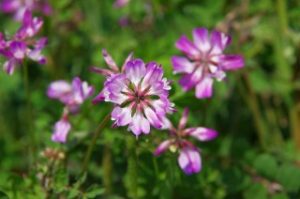
Astragalus membranaceus extract
- In vitro and in vivo anti-tumor effects of Astragalus membranaceus
- In vitro and in vivo immunomodulating and immunorestorative effects of Astragalus membranaceus
- Suppressive effect of Astragalus membranaceus Bunge on chemical hepatocarcinogenesis in rats
- Antitumor and immunomodulatory activity of Astragalus membranaceus polysaccharides in H22 tumor-bearing mice
- A study on the immune receptors for polysaccharides from the roots of Astragalus membranaceus, a Chinese medicinal herb
- Effects of cycloartane saponins from hairy roots of Astragalus membranaceus Bge., on human tumor cell targets
- Macrophage activation by polysaccharide isolated from Astragalus membranaceus
- Immune system effects of echinacea, ginseng, and astragalus: a review
- Differential effects of isoflavones, from Astragalus membranaceus and Pueraria thomsonii, on the activation of PPARα, PPARγ, and adipocyte differentiation in vitro
- Effects of components isolated from Astragalus membranaceus Bunge on cardiac function injured by myocardial ischemia reperfusion in rats
- Astragalus membranaceus: A Review of its Protection Against Inflammation and Gastrointestinal Cancers
- Astragalus membranaceus: A review study of its anti-carcinoma activities
- Formononetin, an isoflavone from Astragalus membranaceus inhibits proliferation and metastasis of ovarian cancer cells
- Does Astragalus Membranaceus Root Extract Have Any Survival Benefit for Metastatic Non-Small Cell Lung Cancer?
- Inhibition of Astragalus membranaceuspolysaccharides against liver cancer cell HepG2
- Accumulating evidences demonstrated the anticancer activity of formononetin on breast cancer
- We showed that formononetin inhibited the phosphorylation of AKT and induced the apoptosis of CC cell line HeLa in a dose-dependent manner.
- Effects of herbal preparation Equiguard™ on hormone-responsive and hormone-refractory prostate carcinoma cells: Mechanistic studies hese studies used prostate cancer cells mimicking the androgen-dependent (AD) and androgen-independent (AI) states of prostate carcinogenesis.
- Astragaloside IV Enhances Cisplatin Chemosensitivity in Non-Small Cell lung cancer Cells Through Inhibition of B7-H3
- Immunotherapy with Chinese medicinal herbs. I. Immune restoration of local xenogeneic graft-versus-host reaction in cancer patients by fractionated Astragalus membranaceus in vitro.
- Astragalus membranaceus lectin (AML) induces caspase‐dependent apoptosis in human leukemia cells
- Herbal Extract SH003 Suppresses Tumor Growth and Metastasis of MDA-MB-231 Breast Cancer Cells by Inhibiting STAT3-IL-6 Signaling
- Astragaloside IV inhibits breast cancer cell invasion by suppressing Vav3 mediated Rac1/MAPK signaling
- Biochanin A Promotes Proliferation that Involves a Feedback Loop of MicroRNA-375 and Estrogen Receptor Alpha in Breast Cancer Cells O-methylated isoflavones that are isolated from the root of Astragalus membranaceus, and have antitumorigenic effects.
- Astragalus membranaceus lectin (AML) induces caspase‐dependent apoptosis in human leukemia cells
- [Effects of large dose of Astragalus membranaceus on the dendritic cell induction of peripheral mononuclear cell and antigen presenting ability of dendritic cells in children with acute leukemia].
- Induction of Apoptosis by Ethyl Acetate Fraction of Astragalus membranaceus in Human Non-small Cell lung cancer Cells
- Changes of platelet Parameter in Patients with lung cancer Treated by Chemotherapy and Effects of Astragalus Membranaceus Injection
- Study of the anticarcinogenic mechanisms of astragalus membranaceus in colon cancer cells and tumor xenograft
- The antitumorigenic potential of total saponins from radix Astragalus membranaceus as chemotherapeutic adjuvant in treating colon cancer
- An in vivo molecular response analysis of colorectal cancer treated with Astragalus membranaceus extract
- [Effects of Couplet Medicines (Astragalus Membranaceus and Jiaozhen) on Intestinal Barrier in Postoperative colorectal cancer Patients].
- Inhibitory effect of Astragalus membranaceus root on matrix metalloproteinase‐1 collagenase expression and procollagen destruction in ultraviolet B‐irradiated human dermal fibroblasts by suppressing nuclear factor kappa‐B activity
- Astragalus membranaceus and Salvia miltiorrhiza Ameliorate Lipopolysaccharide-Induced Acute Lung Injury in Rats by Regulating the Toll-Like Receptor 4/Nuclear Factor-Kappa B Signaling Pathway
- [Astragalus polysaccharide may increase sensitivity of cervical cancer HeLa cells to cisplatin by regulating cell autophagy].
- [Regulatory effect of astragalus injection on Th1/Th2 cell function in patients with cervical cancer].
- Phytoestrogens derived from Belamcanda chinensis have an antiproliferative effect on prostate cancer cells in vitro
- Other phytochemicals extracted from leopard lily Belamcanda chinensis affect new and established targets for therapies in prostate cancer
- Phytoestrogens from Belamcanda chinensis regulate the expression of steroid receptors and related cofactors in LNCaP prostate cancer cells
- Phenolic Constituents of the Rhizomes of the Thai Medicinal Plant Belamcanda chinensis with Proliferative Activity for Two Breast Cancer Cell Lines
- Chemical constituents of the ethyl acetate extract of Belamcanda chinensis (L.) DC roots and their antitumor activities
- Antimutagenic and anti-oxidant activities of isoflavonoids from Belamcanda chinensis (L.) DC
- Hypoglycemic effect of Belamcanda chinensis leaf extract in normal and STZ-induced diabetic rats and its potential active faction
- Inhibitory effects of Irigenin from the rhizomes of Belamcanda chinensis on nitric oxide and prostaglandin E2 production in murine macrophage RAW 264.7 cells
- Advances in research on phytochemical constituents and pharmacology of Belamcanda chinensis [J]
- Iristectorigenin B isolated from Belamcanda chinensis is a liver X receptor modulator that increases ABCA1 and ABCG1 expression in macrophage RAW 264.7 cells
- Phytoestrogens derived from Belamcanda chinensis have an antiproliferative effect on prostate cancer cells in vitro.
- Phytoestrogens from Belamcanda chinensis regulate the expression of steroid receptors and related cofactors in LNCaP prostate cancer cells.
- PHYTOESTROGENS DERIVED FROM BELAMCANDA CHINENSIS HAVE AN ANTIPROLIFERATIVE EFFECT ON PROSTATE CANCER CELLS IN VITRO
- Phytoestrogens from Belamcanda chinensis regulate the expression of steroid receptors and related cofactors in LNCaP prostate cancer cells.
- Belamcanda chinensis and the thereof purified tectorigenin have selective estrogen receptor modulator activities
- PHYTOESTROGENS DERIVED FROM BELAMCANDA CHINENSIS HAVE AN ANTIPROLIFERATIVE EFFECT ON PROSTATE CANCER CELLS IN VITRO
- In vitro antitumor and antioxidant activities of Belamcanda chinensis (L.) DC
- Phytoestrogens from Belamcanda chinensis regulate the expression of steroid receptors and related cofactors in LNCaP prostate cancer cells
- [Pharmacological potential of phytoestrogens in the treatment of prostate cancer].Phytooestrogenes interact with these mechanisms as demonstrated exemplarily in the presented study with the isoflavone tectorigenin derived from Belamcanda chinensis.
- Inhibitory effect of Coptidis Rhizoma and berberine on the proliferation of human esophageal cancer cell lines
- Inhibition by berberine of cyclooxygenase-2 transcriptional activity in human colon cancer cells
- Inhibitory effect of berberine on the invasion of human lung cancer cells via decreased productions of urokinase-plasminogen activator and matrix metalloproteinase-2
- Modulation of apoptosis by berberine through inhibition of cyclooxygenase-2 and Mcl-1 expression in oral cancer cells
- The combination of berberine and irradiation enhances anti‐cancer effects via activation of p38 MAPK pathway and ROS generation in human hepatoma cells
- Effect of berberine on the antioxidant status, ultrastructural modifications and protein bound carbohydrates in azoxymethane-induced colon cancer in rats
- Berberine modulates AP-1 activity to suppress HPV transcription and downstream signaling to induce growth arrest and apoptosis in cervical cancer cells
- The alkaloid Berberine inhibits the growth of Anoikis-resistant MCF-7 and MDA-MB-231 breast cancer cell lines by inducing cell cycle arrest
- Berberine modulates expression of mdr1 gene product and the responses of digestive track cancer cells to Paclitaxel
- Berberine suppresses in vitro migration and invasion of human SCC-4 tongue squamous cancer cells
- Berberine-induced apoptosis in human prostate cancer cells is initiated by reactive oxygen species generation
- Berberine, a natural product, induces G1-phase cell cycle arrest and caspase-3-dependent apoptosis in human prostate carcinoma cells
- Berberine inhibits p53-dependent cell growth through induction of apoptosis of prostate cancer cells
- Berberine Suppresses Androgen Receptor Signaling in Prostate Cancer
- Berberine, a genotoxic alkaloid, induces ATM-Chk1 mediated G2 arrest in prostate cancer cells
- Berberine induces apoptosis in breast cancer cells (MCF-7) through mitochondrial-dependent pathway
- Berberine Suppresses TNF-α-induced MMP-9 and Cell Invasion through Inhibition of AP-1 Activity in MDA-MB-231 Human Breast Cancer Cells
- Targets and mechanisms of berberine, a natural drug with potential to treat cancer with special focus on breast cancer
- Modulation of drug-resistant membrane and apoptosis proteins of breast cancer stem cells by targeting berberine liposomes
- Berberine Inhibits Growth of the Breast Cancer Cell Lines MCF-7 and MDA-MB-231
- Berberine Inhibits Cell Growth and Mediates Caspase-Independent Cell Death in Human pancreatic cancer Cells
- Dose-Dependent AMPK-Dependent and Independent Mechanisms of Berberine and Metformin Inhibition of mTORC1, ERK, DNA Synthesis and Proliferation in pancreatic cancer Cells
- Berberine diminishes side population and down-regulates stem cell-associated genes in the pancreatic cancer cell lines PANC-1 and MIA PaCa-2
- Abilities of berberine and chemically modified berberines to inhibit proliferation of pancreatic cancer cells
- Tu1889 The Isoquinoline Alkaloid Berberine Inhibits the Growth of Human pancreatic cancer Cells In Vitro and In Vivo
- Genome-scale microRNA identify small RNA modulators of the effect of berberine on pancreatic cancer cell growth
- Abilities of berberine and chemically modified berberines to interact with metformin and inhibit proliferation of pancreatic cancer cells
- Tu1916 Berberine Potently Activates AMPK and Inhibits mTORC1, ERK and Cell Cycle Progression of Human pancreatic cancer Cells In Vitro and Reduces the Growth of Human pancreatic cancer Xenografts In Vivo
- Tu2034 Berberine Inhibits the Growth of Human pancreatic cancer Cells In Vitro and In Vivo
- Tu1988 Role of AMPK in the Inhibitory Effects of Metformin and Berberine on mTORC1, ERK, DNA Synthesis and Proliferation in Human pancreatic cancer Cells
- Apoptosis of Human leukemia HL-60 Cells and Murine leukemia WEHI-3 Cells Induced by Berberine through the Activation of Caspase-3
- Berberine‐induced apoptosis of human leukemia HL‐60 cells is associated with down‐regulation of nucleophosmin/B23 and telomerase activity
- Down-regulation of Cyclin B1 and Up-regulation of Wee1 by Berberine Promotes Entry of leukemia Cells into the G2/M-phase of the Cell Cycle
- Berberine Inhibits WEHI-3 leukemia Cells In Vivo
- Effects of Berberine on Arylamine N-acetyltransferase Activity and 2-Aminofluorene-DNA Adduct Formation in Human leukemia Cells
- Berberine inhibits arylamine N-acetyltransferase activity and gene expression in mouse leukemia L 1210 cells
- Berberine Decreased N-acetylation of 2-Aminofluorene through Inhibition of N-acetyltransferase Gene Expression in Human leukemia HL-60 Cells
- Berberine Induces Apoptosis in p53-Null leukemia Cells by Down-Regulating XIAP at the Post-Transcriptional Level
- Berberine Induces Apoptotic Cell Death via Activation of Caspase-3 and -8 in HL-60 Human leukemia Cells: Nuclear Localization and Structure–Activity Relationships
- Synergistic Effect of TPD7 and Berberine against leukemia Jurkat Cell Growth through Regulating Ephrin‐B2 Signaling
- The natural alkaloid berberine targets multiple pathways to induce cell death in cultured human colon cancer cells
- Berberine inhibits the proliferation of colon cancer cells by inactivating Wnt/β-catenin signaling
- Berberine inhibits human colon cancer cell migration via AMP-activated protein kinase-mediated downregulation of integrin β1 signaling
- Berberine enhances chemosensitivity to irinotecan in colon cancer via inhibition of NF‑κB
- Multiple Effects of Berberine Derivatives on colon cancer Cells
- Effect of new berberine derivatives on colon cancer cells
- Mechanisms involved in the cytotoxic effects of berberine onhuman colon cancer HCT-8 cells
- Berberine binds RXRα to suppress β-catenin signaling in colon cancer cells
- Fluorescent organic ion pairs based on berberine: counter-ion effect on the formation of particles and on the uptake by colon cancer cells
- [Preventive effects of berberine on experimental colon cancer and relationship with cyclooxygenase-2 expression].
- Berberine, a natural isoquinoline alkaloid, induces NAG-1 and ATF3 expression in human colorectal cancer cells
- Berberine Inhibits Invasion and Metastasis of colorectal cancer Cells via COX-2/PGE2 Mediated JAK2/STAT3 Signaling Pathway
- Targeting of multiple oncogenic signaling pathways by Hsp90 inhibitor alone or in combination with berberine for treatment of colorectal cancer
- Effect of evodiamine and berberine on miR-429 as an oncogene in human colorectal cancer
- [Effect and mechanism of EGFR expression in macrophages on the anti-cancer effect of berberine on colorectal cancer].
- Effects of evodiamine and berberine hydrochloride on cell apoptosis and expression of hTERT-mRNA of human colorectal cancer cell line HT-29
- Effects of Evodiamine and Berberine Hydrochloride on Telomerase Activity of Human colorectal cancer Cell Line HT29
- Long non‑coding RNA CASC2 enhances berberine‑induced cytotoxicity in colorectal cancer cells by silencing BCL2
- Berberine Promotes Apoptosis of colorectal cancer via Regulation of the Long Non-Coding RNA (lncRNA) Cancer Susceptibility Candidate 2 (CASC2)/AU-Binding Factor 1 (AUF1)/B-Cell CLL/Lymphoma 2 (Bcl-2) Axis
- Synergistic Tumor-Killing Effect of Radiation and Berberine Combined Treatment in lung cancer: The Contribution of Autophagic Cell Death
- p53 cooperates berberine‐induced growth inhibition and apoptosis of non‐small cell human lung cancer cells in vitro and tumor xenograft growth in vivo
- Protective effects of berberine on radiation-induced lung injury via intercellular adhesion molecular-1 and transforming growth factor-beta-1 in patients with lung cancer
- Melatonin inhibits AP-2β/hTERT, NF-κB/COX-2 and Akt/ERK and activates caspase/Cyto C signaling to enhance the antitumor activity of berberine in lung cancer cells
- Epithelial-to-mesenchymal transition markers to predict response of Berberine in suppressing lung cancer invasion and metastasis
- Berberine Increases Doxorubicin Sensitivity by Suppressing STAT3 in lung cancer
- Quantitative evaluation of berberine subcellular distribution and cellular accumulation in non-small cell lung cancer cells by UPLC–MS/MS
- Effect of berberine on activity and mRNA expression of N-acetyltransferase in human lung cancer cell line A549
- Berberine hydrochloride inhibits cell proliferation and promotes apoptosis of non-small cell lung cancer via the suppression of the MMP2 and Bcl-2/Bax signaling pathways
- Synergistic tumor-killing effect of radiation and berberine combined treatment in lung cancer
- Berberine induces autophagic cell death and mitochondrial apoptosis in liver cancer cells: The cellular mechanism†
- Berberine induces apoptosis via the mitochondrial pathway in liver cancer cells
- Investigation of differentially expressed proteins due to the inhibitory effects of berberine in human liver cancer cell line HepG2
- Functional Cross-Talking between Differentially Expressed and Alternatively Spliced Genes in Human liver cancer Cells Treated with Berberine
- Berberine, a natural plant alkaloid, synergistically sensitizes human liver cancer cells to sorafenib
- Cancer cell membrane-modified biodegradable mesoporous silica nanocarriers for berberine therapy of liver cancer
- Gram‐scale production of carrier‐free fluorescent berberine microrods for selective liver cancer therapy
- Berberine-loaded Janus gold mesoporous silica nanocarriers for chemo/radio/photothermal therapy of liver cancer and radiation-induced injury inhibition
- Sensitizing Effect of Berberine on Radiation-Induced Cytotoxicity in Human liver cancer Cells
- Berberine Sensitizes Human ovarian cancer Cells to Cisplatin Through miR-93/PTEN/Akt Signaling Pathway
- Berberine sensitizes ovarian cancer cells to cisplatin through miR-21/PDCD4 axis
- Berberine Exhibits Antitumor Effects in Human ovarian cancer Cells
- Modulation of the expression of folate cycle enzymes and polyamine metabolism by berberine in cisplatin-sensitive and -resistant human ovarian cancer cells
- Berberine induces oxidative DNA damage and impairs homologous recombination repair in ovarian cancer cells to confer increased sensitivity to PARP inhibition
- Berberine inhibits the chemotherapy‐induced repopulation by suppressing the arachidonic acid metabolic pathway and phosphorylation of FAK in ovarian cancer
- Research of berberine to proliferation and apoptotic mechanism of human ovarian cancer cell line SKOV3
- Effects of berberine on proliferation and apoptosis of human ovarian cancer cell line SKOV-3 in vitro
- Effect of berberine on D-dimer, fibrinogen and interleukin-6 in peripheral blood of ovarian cancer patients
- Berberine in combination with cisplatin induces necroptosis and apoptosis in ovarian cancer cells
- Effects of berberine on matrix accumulation and NF-kappa B signal pathway in alloxan-induced diabetic mice with renal injury
- Effect of Berberine on the Expression of Nuclear Factor Kappa B,Vascular Cell Adhesion Molecule-1 and Monocyte Chemoattractant Protein-1 in Carotid Artery Atherosclerosis of Rabbits
- Effects of 13-hexyl-berberine hydrochloride and 13-hexyl-palmatine hydrochloride on the activation of nuclear factor-kappa B and phosphorylation of p38 mitogen-activated kinase (MAPK) in a human keratinocyte cell line, HaCaT stimulated by tumor necrosis factor alpha.
- Berberine Inhibited the Growth of Thyroid Cancer Cell Lines 8505C and TPC1
- Delayed luminescence to monitor programmed cell death induced by berberine on thyroid cancer cells
- [The effects and mechanisms of berberine on proliferation of papillary thyroid cancer K1 cells induced by high glucose].
- Berberine, a natural compound, suppresses Hedgehog signaling pathway activity and cancer growth
- Molecular Modelling of Berberine Derivatives as Inhibitors of Human Smoothened Receptor and Hedgehog Signalling Pathway Using a Newly Developed Algorithm on Anti-Cancer Drugs
- Berberine modulates AP-1 activity to suppress HPV transcription and downstream signaling to induce growth arrest and apoptosis in cervical cancer cells
- GADD153 Mediates Berberine-induced Apoptosis in Human Cervical Cancer Ca Ski Cells
- Berberine Reverses Epithelial-to-Mesenchymal Transition and Inhibits Metastasis and Tumor-Induced Angiogenesis in Human Cervical Cancer Cells
- Berberine alters epigenetic modifications, disrupts microtubule network, and modulates HPV-18 E6–E7 oncoproteins by targeting p53 in cervical cancer cell HeLa: A mechanistic study including molecular docking
- Study on the Effect of Berberine in Human Cervical Cancer Hela Cells in Vitro
- Effect of berberine on radiosensitivity of cervical cancer cells
- Abstract C38: Berberine/cisplatin-based radiotherapy for cervical cancer: The new and effective method to treat cervical cancer
- Study on the Effect of Berberine in Human Cervical Cancer Hela Cells in Vitro
- Effects of Berberine on the Expression of Caspase-3 Gene in Human Cervical Cancer Hela Cell
- NATURAL PLANT PRODUCT BERBERINE/CISPLATIN BASED RADIOTHERAPY FOR CERVICAL CANCER: THE NEW AND EFFECTIVE METHOD TO TREAT CERVICAL CANCER
- Abstract A45: Berberine acts as an antagonist to estradiol-induced proliferation by inducing apoptosis in cervical cancer cells
- Mechanism of berberine-induced apoptosis in cervical cancer HeLa cell line
- Epigallocatechin‐3‐gallate in camellia sinensis leaves from Himalayan region of Sikkim: Inhibitory effects against biochemical events and tumor initiation in sencar
- Green tea (Camellia sinensis) for the prevention of cancer
- Green tea (Camellia sinensis) extract and its possible role in the prevention of cancer
- Inhibitory effect of six green tea catechins and caffeine on the growth of four selected human tumor cell lines.
- Epicatechins purified from green tea (Camellia sinensis) differentially suppress growth of gender-dependent human cancer cell lines
- Green tea (Camellia sinensis) and cancer prevention: a systematic review of randomized trials and epidemiological studies
- Chemopreventive effect of green tea (Camellia sinensis) among cigarette smokers.
- Chemoprotection: A review of the potential therapeutic antioxidant properties of green tea (Camellia sinensis) and certain of its constituents
- Protective effect of green tea on the risks of chronic gastritis and stomach cancer
- Black Tea (Camellia sinensis) as a Chemopreventive Agent in Oral Precancerous Lesions
- Green tea (Camellia sinensis) for the prevention of cancer
- Hepatoprotective Effect of Green Tea (Camellia sinensis) Extract against Tamoxifen-induced Liver Injury in Rats amoxifen citrate (TAM), is widely used for treatment of breast cancer.
- The Effects of Green Tea Consumption on Incidence of Breast Cancer and Recurrence of Breast Cancer: A Systematic Review and Meta-analysis
- (Camellia Sinensis) Extractand Its Possible Rolein the Prevention of Cancer current studies are hope-ful in suggesting a possible chemopreventiveeffect of green tea in cancer of the breast, pros-tate, and gastrointestinal tract
- Green tea (Camellia sinensis) extract inhibits both the metastasis and osteolytic components of mammary cancer 4T1 lesions in mice
- Nigerian foodstuffs with prostate cancer chemopreventive polyphenols
- Active extracts of black tea (Camellia Sinensis) induce apoptosis of PC-3 prostate cancer cells via mitochondrial dysfunction
- Plant derived products as a source of cellular growth inhibitory phytochemicals on PC-3M, DU-145 and LNCaP prostate cancer cell lines
- The present study compared the anti-proliferative effect of black tea (Camellia sinensis) polyphenol, thearubigin (TR), alone or combined with the isoflavone genistein, on human prostate (PC-3) carcinoma cells.
- Differential Growth Suppression of Human Melanoma Cells by Tea (Camellia sinensis) Epicatechins (ECG, EGC and EGCG)
- Inhibitory effect of black tea (Camellia sinensis) theaflavins and thearubigins against HCT 116 colon cancer cells and HT 460 lung cancer cells
- White tea (Camellia sinensis) inhibits proliferation of the colon cancer cell line, HT-29, activates caspases and protects DNA of normal cells against oxidative damage
- White Tea (Camellia sinensis) Extract Role as AntiProliferative of colon cancer Cell Line,
- Effekten av kråkbär (empetrum nigrum), extrakt från kakao (Theobroma cacao), samt ekstrakt från de två tesorterna Grönt te, Japanese Sencha (Camellia sinensis) och Rooibos (Aspalathus linearis) på proliferationen av colon cancer-cellinjen HT29
- Flower Extract Mixture of Camellia japonica and Camellia sinensis Inhibit Cell Growth and Induces Apoptosis in HT29 Human colon cancer Cells
- Evaluation of Anticancer Activity of Camellia Sinensis in the Caco-2 colorectal cancer Cell Line
- Green synthesis palladium nanoparticles mediated by white tea (Camellia sinensis) extract with antioxidant, antibacterial, and antiproliferative activities toward the human leukemia (MOLT-4) cell line
- Chemoprotective properties of rooibos (Aspalathus linearis), honeybush (Cyclopia intermedia) herbal and green and black (Camellia sinensis) teas against cancer promotion induced by fumonisin B1 in rat liver
- Inhibitory Effects of Total Triterpenoid Saponins Isolated from the Seeds of the Tea Plant (Camellia sinensis) on Human ovarian cancer Cells
- Anti-proliferative effect and cell cycle arrest induced by saponins extracted from tea (Camellia sinensis) flower in human ovarian cancer cells
- Abstract 716: Chakasaponin I from tea (Camellia sinensis) flower induce anti-proliferative effect and apoptosis of cisplatin-resistant ovarian cancer cells
- The anti-proliferative effect of L-carnosine correlates with a decreased expression of hypoxia inducible factor 1 alpha in human colon cancer cells
- Carnosine and cancer: a perspective
- Effects of l-carnosine on splenic sympathetic nerve activity and tumor proliferation
- Carnosine retards tumor growth in vivo in an NIH3T3-HER2/neu mouse model
- The effect of zinc sulphate and zinc carnosine on genome stability and cytotoxicity in the WIL2-NS human lymphoblastoid cell line
- Carnosine inhibits the proliferation of human gastric cancer SGC-7901 cells through both of the mitochondrial respiration and glycolysis pathways
- Carnosine inhibits ATP production in cells from malignant glioma
- Promotion of crown-gall tumor growth by lysopine, octopine, nopaline, and carnosine
- Identification of factors involved in the anti-tumor activity of carnosine on glioblastomas using a proteomics approach
- Beneficial effects of histidine and carnosine on ethanol-induced chronic liver injury
- Circulating carnosine dipeptidase 1 associates with weight loss and poor prognosis in gastrointestinal cancer
- l-carnosine dipeptide overcomes acquired resistance to 5-fluorouracil in HT29 human colon cancer cells via downregulation of HIF1-alpha and induction of apoptosis
- l-Carnosine and Human Colon Cancer
- Analysis of plasma from prostate cancer patients links decreased carnosine dipeptidase 1 levels to lymph node metastasis
- Circulating Carnosine Dipeptidase 1 Associates with Weight Loss and Poor Prognosis in Gastrointestinal Cancer
- Inflammatory bowel disease preventive and curative agent containing zinc l-carnosine salt as active ingredient
- The Anti-Proliferative Effect of L-Carnosine Correlates with a Decreased Expression of Hypoxia Inducible Factor 1 alpha in Human colon cancer Cells
- Carnosine mitigates apoptosis and protects testicular seminiferous tubules from gamma‐radiation‐induced injury in mice
- INFLUENCE OF CARNOSINE ON THE CARDIOTOXICITYOF DOXORUBICIN IN RABBITS DOX is used against humanneoplasms including a variety of solid tumors (e.g.head and neck tumors), breast cancer, bladder andtesticular cancer, small cell lung cancer
- Carnosine protects pancreatic beta cells and islets against oxidative stress damage
- Prevention of radiation esophagitis by polaprezinc (zinc L-carnosine) in patients with non-small cell lung cancer who received chemoradiotherapy
- Correction: The Anti-Proliferative Effect of L-CarnosineCorrelates with a Decreased Expression of HypoxiaInducible Factor 1 alpha in Human colon cancer Cells
- ID: 1029 Effects of carnosine on regulation of migration and invasion in human colorectal cancer cells
- L-Carnosine protects against Oxaliplatin-induced peripheral neuropathy in colorectal cancer patients: A perspective on targeting Nrf-2 and NF-κB pathways
- L-carnosine for prevention of oxaliplatin-induced neuropathy in colorectal cancer patients (pts)
- l-carnosine induces apoptosis/cell cycle arrest via suppression of NF-κB/STAT1 pathway in HCT116 colorectal cancer cells
- Investigations on in vitro anti-carcinogenic potential of l-carnosine in liver cancer cells
- L-Carnosine Prevents the Pro-cancerogenic Activity of Senescent Peritoneal Mesothelium Towards ovarian cancer Cells
- Carnosol, a dietary diterpene, displays growth inhibitory effects in human prostate cancer PC3 cells leading to G2-phase cell cycle arrest and targets the 5′-AMP
- Carnosol: a promising anti-cancer and anti-inflammatory agent
- Inhibitory effects of rosemary extracts, carnosic acid and rosmarinic acid on the growth of various human cancer cell lines
- Inhibition of skin tumorigenesis by rosemary and its constituents carnosol and ursolic acid
- Disruption of androgen and estrogen receptor activity in prostate cancer by a novel dietary diterpene carnosol: implications for chemoprevention
- Carnosol: a phenolic diterpene with cancer chemopreventive potential
- Protective effect of carnosol on CCl4-induced acute liver damage in rats
- Carnosol induces ROS-mediated beclin1-independent autophagy and apoptosis in triple negative breast cancer
- Carnosol inhibits the invasion of B16/F10 mouse melanoma cells by suppressing metalloproteinase-9 through down-regulating nuclear factor-kappaB and c-Jun
- Inhibition by rosemary and carnosol of 7, 12-dimethylbenz [a] anthracene (DMBA)-induced rat mammary tumorigenesis and in vivo DMBA-DNA adduct formation
- Carnosol inhibits tumor growth and metastasis of breast cancer through inhibition of the histone acetytransferase activity of p300 and proteasome
- Carnosol Induces ROS-Mediated Beclin1-Independent Autophagy and Apoptosis in Triple Negative Breast Cancer
- Antitumor activity of the dietary diterpene carnosol against a panel of human cancer cell lines Carnosol decreased cell viability in human breast, ovarian, and intestinal tumor cell lines, and inhibited cancer cell adhesion on fibronectin and growth of cancer cells in suspension.
- CYP1A1 Regulates Breast Cancer Proliferation and Survival hese findings led us to test the hypothesis that CYP1A1 promotes breast cancer progression by evaluating the effects of CYP1A1 knockdown
- Polyphenols from the Mediterranean herb rosemary (Rosmarinus officinalis) for prostate cancer
- Carnosol and Carnosic Acids from Salvia officinalis Inhibit Microsomal Prostaglandin E2 Synthase-1
- Dietetic factors associated with prostate cancer. Protective effects of Mediterranean dietFactores dietéticos asociados al cáncer de próstata. Beneficios de la dieta mediterránea
- Carnosol, radiation and melanoma: a translational possibility
- Phytochemicals, withaferin A and carnosol, overcome pancreatic cancer stem cells as c-Met inhibitors
- Carnosol induces apoptosis through generation of ROS and inactivation of STAT3 signaling in human colon cancer HCT116 cells
- Comparative Study of Green Sub- and Supercritical Processes to Obtain Carnosic Acid and Carnosol-Enriched Rosemary Extracts with in Vitro Anti-Proliferative Activity on colon cancer Cells
- Nano-liquid Chromatography-orbitrap MS-based Quantitative Proteomics Reveals Differences Between the Mechanisms of Action of Carnosic Acid and Carnosol in colon cancer Cells
- Carnosic Acid and Carnosol Induced Apoptosis through EP4 Signaling in Human colon cancer HCT116 Cells
- Carnosol, rosemary ingredient, induces apoptosis in adult T-cell leukemia/lymphoma cells via glutathione depletion: proteomic approach using fluorescent two-dimensional differential gel electrophoresis
- Glutathione As Preventive and Therapeutic Target of Adult T-Cell leukemia/Lymphoma and Its Regulation by Carnosol, a Functional Food Ingredient
- Carnosol, an Antioxidant in Rosemary, Suppresses Inducible Nitric Oxide Synthase through down-Regulating Nuclear Factor-Kappa B in Mouse Macrophages
- Carnosol inhibits Hedgehog signaling pathway in both LNCaP and DU145 prostate cancer cell lines.
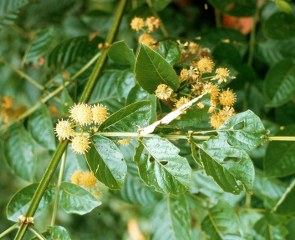
Cat’s Claw (Uncaria tomentosa)
- The antiproliferative effects of Uncaria tomentosa extracts and fractions on the growth of breast cancer cell line.
- Induction of apoptosis and inhibition of proliferation in human tumor cells treated with extracts of Uncaria tomentosa.
- Cytotoxic effect of the pentacyclic oxindole alkaloid mitraphylline isolated from Uncaria tomentosa bark on human Ewing’s sarcoma and breast cancer cell lines
- Antiproliferative effects of mitraphylline, a pentacyclic oxindole alkaloid of Uncaria tomentosa on human glioma and neuroblastoma cell lines
- Antitumoral and antioxidant effects of a hydroalcoholic extract of cat’s claw (Uncaria tomentosa)(Willd. Ex Roem. & Schult) in an in vivo carcinosarcoma model
- Uncaria tomentosa—adjuvant treatment for breast cancer: clinical trial
- Treatment of chemotherapy-induced leukopenia in a rat model with aqueous extract from Uncaria tomentosa
- Antiproliferative and pro-apoptotic effects of Uncaria tomentosa in human medullary thyroid carcinoma cells
- An extract of Uncaria tomentosa inhibiting cell division and NF-κB activity without inducing cell death
- Randomized double blind trial of an extract from the pentacyclic alkaloid-chemotype of uncaria tomentosa for the treatment of rheumatoid arthritis.
- Uncaria tomentosa (Cat’s Claw) Improves Quality of Life in Patients with Advanced Solid Tumors
- Shark cartilage, cat’s claw, and other complementary breast cancer therapies
- Cytotoxic Effect of the Pentacyclic Oxindole Alkaloid Mitraphylline Isolated from Uncaria tomentosa Bark on Human Ewing’s Sarcoma and Breast Cancer Cell Lines
- Induction of apoptosis by Uncaria tomentosa through reactive oxygen species production, cytochrome c release, and caspases activation in human leukemia cells
- leukemia.pdf”>Antiproliferative activity of various Uncaria tomentosa preparations on HL-60 promyelocytic leukemia cells
- Enhanced proapoptotic response of the promyelocytic leukemia HL-60 cells treated with an Uncaria tomentosa alkaloid preparation
- Effect of acetylsalicylic acid on secondary metabolism ofCatharanthus roseus tumor suspension cultures
- Cell and tissue cultures of Catharanthus roseus: a literature survey
- Serpentine accumulation during greening in normal and tumor tissues of Catharanthus roseus
- Targeted regulation of PI3K/Akt/mTOR/NF-κB signaling by indole compounds and their derivatives: mechanistic details and biological implications for cancer therapy
- Indole alkaloids from Catharanthus roseus: bioproduction and their effect on human health
- Effect of an antidiabetic extract of Catharanthus roseus on enzymic activities in streptozotocin induced diabetic rats
- Calcium chloride effects on salinity-induced oxidative stress, proline metabolism and indole alkaloid accumulation in Catharanthus roseus
- Effects of salt on lipid peroxidation and antioxidant enzyme activities of Catharanthus roseus suspension cells
- Effects of over-expression of strictosidine synthase and tryptophan decarboxylase on alkaloid production by cell cultures of Catharanthus roseus
- The discovery of the vinca alkaloids—chemotherapeutic agents against cancer
- Catharanthus roseus – Cancer fighting | Tropical Biodiversity
- Catharanthus roseus: The Cancer-Fighting Medicine
- Catharanthus roseus. An Anti-Cancer Plant.
- Catharanthus roseus: A cancer-killing champion of the plant world
- (PDF) Anticancer Alkaloids of Catharanthus roseus – ResearchGate
- Catharanthus roseus plant is used for the treatment of lung cancer
- Anti-Cancer Drug Discovery derived from the Madagscan periwinkle plant Catharantus roseus and Development in Brazil: Targeted Plant Collection as a Rational Strategy to Acquire Candidate Anti-Cancer Compounds
- Ethanolic periwinkle leaf extract reduces telomerase expression in T47D cancer cells An experimental study with controls was conducted involving T47D breast cancer cells.
- Mechanism of Action of Anticancer Herbal Medicines These include etoposide, vincristine and vinblastine from Catharantus roseus, camptothecin from Camptotheca acuminata, podophyllotoxin from Podophyllum peltatum, etc. The aim of the chapter is to describe various anticancer plants and their possible mechanisms of action in the prevention of cancer.
- Photosynthesized gold nanoparticles from Catharanthus roseus induces caspase-mediated apoptosis in cervical cancer cells (HeLa)
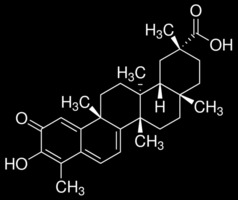
Celastrol (derived from Trypterygium wilfordii)
- Celastrol, a triterpene extracted from the Chinese “Thunder of God Vine,” is a potent proteasome inhibitor and suppresses human prostate cancer growth in nude mice
- The NF-kappa B inhibitor, celastrol, could enhance the anti-cancer effect of gambogic acid on oral squamous cell carcinoma
- Molecular targets of celastrol derived from Thunder of God Vine: potential role in the treatment of inflammatory disorders and cancer
- Natural proteasome inhibitor celastrol suppresses androgen-independent prostate cancer progression by modulating apoptotic proteins and NF-kappaB
- Anticancer effect of celastrol on human triple negative breast cancer: possible involvement of oxidative stress, mitochondrial dysfunction, apoptosis and PI3K/Akt
- Celastrol induces apoptosis in non-small-cell lung cancer A549 cells through activation of mitochondria-and Fas/FasL-mediated pathways
- Anticancer activity of Celastrol in combination with ErbB2-targeted therapeutics for treatment of ErbB2-overexpressing breast cancers
- Celastrol suppresses angiogenesis-mediated tumor growth through inhibition of AKT/mammalian target of rapamycin pathway
- Celastrol isolated from Tripterygium regelii induces apoptosis through both caspase-dependent and-independent pathways in human breast cancer cells
- Celastrol inhibits gastric cancer growth by induction of apoptosis and autophagy
- Natural Proteasome Inhibitor Celastrol Suppresses Androgen-Independent Prostate Cancer Progression by Modulating Apoptotic Proteins and NF-kappaB
- Celastrol Potentiates Radiotherapy by Impairment of DNA Damage Processing in Human Prostate Cancer
- Evaluation of anticancer activity of celastrol liposomes in prostate cancer cells
- Celastrol: Molecular targets of Thunder God Vine
- Celastrol Suppresses Tumor Cell Growth through Targeting an AR-ERG-NF-κB Pathway in TMPRSS2/ERG Fusion Gene Expressing Prostate Cancer
- Celastrol inhibits breast cancer cell invasion via suppression of NF-ĸB-mediated matrix metalloproteinase-9 expression.
- Celastrol inhibits the growth of estrogen positive human breast cancer cells through modulation of estrogen receptor α
- Celastrol induces the apoptosis of breast cancer cells and inhibits their invasion via downregulation of MMP-9
- Celastrol suppresses breast cancer MCF-7 cell viability via the AMP-activated protein kinase (AMPK)-induced p53–polo like kinase 2 (PLK-2) pathway
- Celastrol suppresses invasion of colon and pancreatic cancer cells through the downregulation of expression of CXCR4 chemokine receptor
- Role of the eIF4E binding protein 4E‐BP1 in regulation of the sensitivity of human pancreatic cancer cells to TRAIL and celastrol‐induced apoptosis
- Triptolide and celastrol loaded silk fibroin nanoparticles show synergistic effect against human pancreatic cancer cells†
- Celastrol Binds to HSP90 Trigger Functional Protein Interaction Network Against pancreatic cancer
- A novel nucleolin aptamer-celastrol conjugate (NACC) with super antitumor activity on advanced pancreatic cancer
- Erratum to: Celastrol suppresses invasion of colon and pancreatic cancer cells through the downregulation of expression of CXCR4 chemokine receptor
- A Smart Celastrol-nucleolin Aptamer Conjugate with Super Anti-tumor Activity in pancreatic cancer Cell Line
- HSP90 inhibitor, celastrol, arrests human monocytic leukemia cell U937 at G0/G1 in thiol-containing agents reversible way
- Celastrol, a novel HSP90 inhibitor, depletes Bcr–Abl and induces apoptosis in imatinib-resistant chronic myelogenous leukemia cells harboring T315I mutation
- Celastrol and an EGCG pro-drug exhibit potent chemosensitizing activity in human leukemia cells
- Metabolomics profiles delineate uridine deficiency contributes to mitochondria-mediated apoptosis induced by celastrol in human acute promyelocytic leukemia cells
- Celastrol Induces Cell Apoptosis and Inhibits the Expression of the AML1-ETO/C-KIT Oncoprotein in t(8;21) leukemia
- [Inhibition of proliferation of adult T-cell leukemia cells by celastrol].
- Molecular Studies on Celastrol-induced Bcr-Abl Oncoprotein Degradation in Humanleukemia Cells
- Metabolomics Reveals Cysteine Metabolism Plays a Role in Celastrol-Induced Mitochondrial Apoptosis of Acute Promyelocytic leukemia Cells
- Inhibitation of proliferation of human acute myelogenous leukemia cells in vitro by celastrol
- Exosomal formulation enhances therapeutic response of celastrol against lung cancer
- Cancerous inhibitor of PP2A is targeted by natural compound celastrol for degradation in non-small-cell lung
- Enhancement of radiation sensitivity in lung cancer cells by celastrol is mediated by inhibition of Hsp90
- Celastrol Induces Apoptosis in Gefitinib-Resistant Non-Small Cell lung cancer Cells via Caspases-Dependent Pathways and Hsp90 Client Protein Degradation
- ATF2 contributes to cisplatin resistance in non‐small cell lung cancer and celastrol induces cisplatin resensitization through inhibition of JNK/ATF2 pathway
- Celastrol induces proteasomal degradation of FANCD2 to sensitize lung cancer cells to DNA crosslinking agents
- [Effect of celastrol in inhibiting metastasis of lung cancer cells by influencing Akt signaling pathway and expressing integrins].
- Preliminary study on fabrication, characterization and synergistic anti-lung cancer effects of self-assembled micelles of covalently conjugated celastrol–polyethylene glycol–ginsenoside Rh2
- Celastrol improves the therapeutic efficacy of EGFR-TKIs for non-small-cell lung cancer by overcoming EGFR T790M drug resistance
- Celastrol induces apoptosis in human colon cancer SW620 cells through species reactive oxygen
- Abstract 2258: Celastrol shows chemopreventive properties in an inflammatory driven model for colon cancer via induction of Nrf2 transcription.
- Effects and Mechanisms of Celastrol (CSL) on Human colon cancer Cell Line HCT-116 in vitro
- Celastrol inhibits colon cancer cell proliferation by downregulating miR-21 and PI3K/AKT/GSK-3β pathway
- Celastrol Suppresses Tryptophan Catabolism in Human colon cancer Cells as Revealed by Metabolic Profiling and Targeted Metabolite Analysis
- Prooxidative Activity of Celastrol Induces Apoptosis, DNA Damage, and Cell Cycle Arrest in Drug-Resistant Human colon cancer Cells
- Celastrol Ameliorates Ulcerative Colitis-Related colorectal cancer in Mice via Suppressing Inflammatory Responses and Epithelial-Mesenchymal Transition
- Celastrol inhibits colorectal cancer cell proliferation and migration through suppression of MMP3 and MMP7 by the PI3K/AKT signaling pathway
- Potent suppression of both spontaneous and carcinogen-induced colitis-associated colorectal cancer in mice by dietary celastrol supplementation
- Celastrol inhibits colorectal cancer through TGF-β1/Smad signaling
- Celastrol suppresses nitric oxide synthases and the angiogenesis pathway in colorectal cancer
- LKB1 and YAP phosphorylation play important roles in Celastrol-induced β-catenin degradation in colorectal cancer
- Celastrol Enhances the Anti-liver cancer Activity of Sorafenib
- Celastrol inhibits migration and invasion through blocking the NF‑κB pathway in ovarian cancer cells
- Effects of celastrol on enhancing apoptosis of ovarian cancer cells via the downregulation of microRNA‑21 and the suppression of the PI3K/Akt‑NF‑κB signaling pathway in an in vitro model of ovarian carcinoma
- Celastrol strongly inhibits proliferation, migration and cancer stem cell properties through suppression of Pin1 in ovarian cancer cells
- Celastrol Inhibits the Growth of ovarian cancer Cells in vitro and in vivo
- Synthesis and biological evaluation of celastrol derivatives as anti-ovarian cancer stem cell agents
- The NF-kappa B inhibitor, celastrol, could enhance the anti-cancer effect of gambogic acid on oral squamous cell carcinoma
- NF-Kappa B Modulation Is Involved in Celastrol Induced Human Multiple Myeloma Cell Apoptosis
- Celastrol Inhibits Lipopolysaccharide-Induced Angiogenesis by Suppressing TLR4-Triggered Nuclear Factor-Kappa B Activation
- Synergism between NF-kappa B inhibitor, celastrol, and XIAP inhibitor, embelin, in an acute myeloid leukemia cell line, HL-60
- Effects of celastrol on human cervical cancer cells as revealed by ion-trap gas chromatography–mass spectrometry based metabolic profiling
- Competitive profiling of celastrol targets in human cervical cancer HeLa cells via quantitative chemical proteomics
- Celastrus orbiculatus extract inhibits tumor angiogenesis by targeting vascular endothelial growth factor signaling pathway and shows potent antitumor activity
- A New Sesquiterpene Ester from Celastrus orbiculatus Reversing Multidrug Resistance in Cancer Cells
- Celastrus orbiculatus extract induces mitochondrial-mediated apoptosis in human hepatocellular carcinoma cells
- Experimental study on anti-tumor effect of extractive from Celastrus orbiculatus in vivo
- Antiinflammatory Constituents of Celastrus orbiculatus Inhibit the NF-κB Activation and NO Production
- The effects of growth inhibition and quinone reductase activity stimulation of Celastrus orbiculatus fractions in various cancer cells
- Celastrus orbiculatus extract triggers apoptosis and autophagy via PI3K/Akt/mTOR inhibition in human colorectal cancer cells
- Anti-invasive effects of Celastrus Orbiculatus extract on interleukin-1 beta and tumour necrosis factor-alpha combination-stimulated fibroblast-like
- (-)-Epiafzelechin: cyclooxygenase-1 inhibitor and anti-inflammatory agent from aerial parts of Celastrus orbiculatus
- Antimetastatic Effects of Celastrus orbiculatus on Human Gastric Adenocarcinoma by Inhibiting Epithelial–Mesenchymal Transition and NF-κB/Snail Signaling
- Ascitic and solid Ehrlich tumor inhibition by Chenopodium ambrosioides L. treatment
- Cytotoxic effect of Argentine medicinal plant extracts on human hepatocellular carcinoma cell line
- Studies on the anti-inflammatory and analgesic properties of Chenopodium ambrosioides leaf extract in rats
- From popular use to pharmacological validation: a study of the anti-inflammatory, anti-nociceptive and healing effects of Chenopodium ambrosioides extract
- Evaluation of Chenopodium ambrosioides oil as a potential source of antifungal, antiaflatoxigenic and antioxidant activity
- Increase of cellular recruitment, phagocytosis ability and nitric oxide production induced by hydroalcoholic extract from Chenopodium ambrosioides leaves
- Cytotoxicity of Essential Oil of Chenopodium ambrosioides L against Human Breast Cancer MCF-7 Cells
- An overview of the anti-cancer properties of some plants used in traditional medicine in Nigeria
- Combined effect of the essential oil from Chenopodium ambrosioides and antileishmanial drugs on promastigotes of Leishmania amazonensis
- Effect of oral treatment with the essential oil from Chenopodium ambrosioides against cutaneous leishmaniasis in BALB/c mice, caused by Leishmania amazonensis
- Anticancer effects of Chenopodium ambrosiodes L. essential oil on human breast cancer MCF-7 cells in vitro
- Petroleum ether extract of Chenopodium album L. prevents cell growth and induces apoptosis of human lung cancer cells
- Ascitic and solid Ehrlich tumor inhibition by Chenopodium … – NCBI
- In vitro anticancer activity and cytotoxicity screening of phytochemical extracts from selected traditional Chinese medicinal plants MCF-7 breast cancer cell line [11];Ehrlich tumor [12]
- BIOACTIVE CONSTITUENTS, PHYTOCHEMICAL AND PHARMACOLOGICAL PROPERTIES OF CHENOPODIUM ALBUM: A MIRACLE WEED The methanol extract of C. ambro leaves exhibited maximum anti-breast cancer activity.
- Characterization and evaluation of the cytotoxic potential of the essential oil of Chenopodium ambrosioides commercial preparation of the essential oil of C. ambrosioides and analyzed in it using different strains of tumor cells in vitro (CCRF-CEM–human lymphoblastic leukemia T cells, HL60 – promyelocytic leukemia, and MDA MB-231 – breast cancer)
Cinnamomum cassia
- Aqueous cinnamon extract (ACE-c) from the bark of Cinnamomum cassia causes apoptosis in human cervical cancer cell line
- Antiproliferative activity of Cinnamomum cassia constituents and effects of pifithrin-alpha on their apoptotic signaling pathways in Hep G2 cells
- Cinnamaldehyde inhibits the tumor necrosis factor-α-induced expression of cell adhesion molecules in endothelial cells by suppressing NF-κB activation
- Cytotoxic effect of trans-cinnamaldehyde from cinnamomum osmophloeum leaves on Human cancer cell lines
- The ability of an ethanol extract of Cinnamomum cassia to inhibit Src and spleen tyrosine kinase activity contributes to its anti-inflammatory action
- Anti-inflammatory activities of Cinnamomum cassia constituents in vitro and in vivo
- Cinnamon extract induces tumor cell death through inhibition of NFκB and AP1
- Antitumor effect of the cinnamaldehyde derivative CB403 through the arrest of cell cycle progression in the G2/M phase
- Inhibition of benzo[a]pyrene- and cyclophoshamide-induced mutagenicity by Cinnamomum cassia
- Involvement of 5-HT1A and GABAA receptors in the anxiolytic-like effects of Cinnamomum cassia in mice
- Cinnamomum cassia extracts reverses TGFâ β1â induced epithelialâ mesenchymal transition in human lung adenocarcinoma cells and suppresses tumor growth
- Cinnamomum cassia extracts reverses TGF‐β1‐induced epithelial–mesenchymal transition in human lung adenocarcinoma cells and suppresses tumor growth
- Early growth response protein 1 upregulation and nuclear translocation by 2′-benzoyloxycinnamaldehyde from Cinnamomum cassia induces prostate cancer cell death
- Stimulatory effects of extract prepared from the bark of Cinnamomum cassia blume on the function of osteoblastic MC3T3‐E1 cells significantly induced the growth of MCF‐7 cells, an ER‐positive human breast cancer cell line,
- 2-Hydroxycinnamaldehyde inhibits the epithelial-mesenchymal transition in breast cancer cells
- Cinnamomum cassia Suppresses Caspase-9 through Stimulation of AKT1 in MCF-7 Cells but Not in MDA-MB-231 Cells In the present study, particular differences in the mechanism of the anti-proliferative property of C. cassia on two breast cancer cell lines,
- Cinnamaldehydes in Cancer Chemotherapy Finally, the application of cinnamaldehydes in treating various types of cancer, including breast, prostate, and colon cancers, has been discussed in detail.
- Methanol Extract of Cinnamomum cassia Represses Cellular Proliferation and Gli-mediated Transcription in PANC-1 Human pancreatic cancer Cells
- Cytotoxic activity of the twigs of Cinnamomum cassia through the suppression of cell proliferation and the induction of apoptosis in human colorectal cancer cells
- Young Stem of Cinnamomum cassia Blume Suppresses Wnt Signaling Through Downregulation of β-catenin and TCF4 in Human colorectal cancer Cells
- Mechanistic Study of Hot Water Extracts from Young Stem of Cinnamomum cassia Blume Against Human colorectal cancer Cells -Transcriptional Inhibition and Proteasomal Degradation of Cyclin D1
- Mechanistic Study for Anti-cancer Activity of Hot Water Extracts from Twigs of Cinnamomum cassia Against Human colorectal cancer Cells
- Hot Water Extracts from Young Stem of Cinnamomum cassia Induces ROS-Dependent Apoptosis in Human colorectal cancer Cells
- Cinnamomum Cassia Extracts Suppress Human lung cancer Cells Invasion by Reducing u-PA/MMP Expression through the FAK to ERK Pathways
- Water-extracted branch of Cinnamomum cassia promotes lung cancer cell apoptosis by inhibiting pyruvate dehydrogenase kinase activity
- Secondary metabolites from Commiphora opobalsamum and their antiproliferative effect on human prostate cancer cells
- Anti-inflammatory and analgesic activity of different extracts of Commiphora myrrha
- Cytotoxicity activity of extracts and compounds from Commiphora myrrha resin against human gynecologic cancer cells
- Composition and potential anticancer activities of essential oils obtained from myrrh and frankincense
- In vitro cytotoxic and anti-inflammatory effects of myrrh oil on human gingival fibroblasts and epithelial cells
- Evaluation of the anti-inflammatory and analgesic properties of individual and combined extracts from Commiphora myrrha, and Boswellia carterii
- Hepatoprotective effect of Commiphora myrrha against d-GalN/LPS-induced hepatic injury in a rat model through attenuation of pro inflammatory cytokines
- Sesquiterpenoids from the resinous exudates of Commiphora myrrha and their neuroprotective effects
- Four new sesquiterpenes from Commiphora myrrha and their neuroprotective effects
- In vitro anticancer activity of twelve Chinese medicinal herbs
- 3β-triol, a cycloartane-type triterpenoid from the resinous exudates of Commiphora myrrha, induces apoptosis in human prostatic cancer PC-3 cells
- Citrate reduced gold nanoparticles conjugated with Boswellia sacra and Commiphora myrrha to cause cytotoxicity in breast cancer cells
- Commiphora myrrha In vitro anticancer activity of twelve Chinese medicinal herbs Five human and three murine cancer cell lines representing different tissues (breast, lung, pancreas and prostate) were used.
- Cytotoxicity activity of extracts and compounds from Commiphora myrrha resin against human gynecologic cancer cells
- A Triterpenoid and Sesquiterpenoids from the Resinous Exudates of Commiphora myrrha he isolated compounds 1–6 were evaluated for their cytotoxicity against the PC3 and DU145 human prostate tumor cell lines.
- Furanosesquiterpenoids of Commiphora myrrha Compound 1 exhibited weak cytotoxic activity against a MCF-7 breast tumor cell line in a clonogenic assay,
- Sesquiterpenoids from myrrh inhibit androgen receptor expression and function in human prostate cancer cells
- Review on the Applications and Molecular Mechanisms of Xihuang Pill in Tumor Treatment XH has clinical effects on non-Hodgkin lymphoma, breast cancer, gastric cancer, liver cancer, and bone metastasis.
- Coprinus comatus and Ganoderma lucidum interfere with androgen receptor function in LNCaP prostate cancer cells
- In vitro effects on proliferation, apoptosis and colony inhibition in ER-dependent and ER-independent human breast cancer cells by selected mushroom species
- Coprinus comatus (Higher Basidiomycetes) Fruit Bodies on Cell Growth of Human Ovarian Cancer
- Ethyl acetate extracts of submerged cultured mycelium of higher Basidiomycetes mushrooms inhibit human ovarian cancer cell growth
- The Shaggy Inc Cap Medicinal Mushroom, Coprinus comatus (OFMull.: Fr.) Pers. (Agaricomycetideae) Substances Interfere with H2O2 Induction of the NF-κB
- The culinary-medicinal mushroom Coprinus comatus as a natural antiandrogenic modulator
- Coprinus comatus cap inhibits adipocyte differentiation via regulation of PPARγ and Akt signaling pathway
- Inhibition of the androgen receptor activity by Coprinus comatus substances
- Protective effect of selenium-polysaccharides from the mycelia of Coprinus comatus on alloxan-induced oxidative stress in mice
- Anti-oxidative activity of an aqueous suspension of commercial preparation of the mushroom Coprinus comatus
- The shaggy ink cap medicinal mushroom, Coprinus comatus (higher Basidiomycetes) extract induces apoptosis in ovarian cancer cells
- The shaggy ink cap medicinal mushroom, Coprinus comatus (higher Basidiomycetes) extract induces apoptosis in ovarian cancer cells via extrinsic and intrinsic
- Coprinus comatus and Ganoderma lucidum interfere with androgen receptor function in LNCaP prostate cancer cells
- leukemia-cell-uf-health-researchers-find/”>Common, edible mushroom has potential to kill one type of leukemia cell, UF Health researchers find
- Coprinus comatus and Ganoderma lucidum interfere with androgen receptor function in LNCaP prostate cancer cells
- The Culinary-Medicinal Mushroom Coprinus comatus as a Natural Antiandrogenic Modulator CC734-H was able to reduce AR levels and prostate-specific antigen gene expression in the LNCaP-treated cell line.
- Coprinus comatus, In vitro effects on proliferation, apoptosis and colony inhibition in ER-dependent and ER-independent human breast cancer cells by selected mushroom species
- The Shaggy Ink Cap Medicinal Mushroom,Coprinus comatus (Higher Basidiomycetes) Extract Induces Apoptosis in ovarian cancer Cells via Extrinsic and Intrinsic Apoptotic Pathways
- A Robust Cysteine-Deficient Chitinase-like Antifungal Protein from Inner Shoots of the Edible Chive Coprinus comatus It exerted some cytotoxic effect on breast cancer cells and was inhibitory toward HIV-1 reverse transcriptase.
- Antitumor promoters in leaves of jute (Corchorus capsularis and Corchorus olitorius)
- Protective effect of Corchorus olitorius leaves on sodium arsenite-induced toxicity in experimental rats
- Anti-inflammatory and cytotoxic activities of dietary phenolics isolated from Corchorus olitorius and Vitis vinifera
- Antiobesity effect of polyphenolic compounds from molokheiya (Corchorus olitorius L.) leaves in LDL receptor-deficient mice
- Induction of apoptosis by ethanolic extract of Corchorus olitorius leaf in human hepatocellular carcinoma (HepG2) cells via a mitochondria-dependent
- Protective effect of Corchorus olitorius leaves against arsenic-induced oxidative stress in rat brain
- Phenolic Antioxidants from the Leaves of Corchorus olitorius L.
- Anti-inflammatory effects of phenolic crude extracts from five fractions of Corchorus Olitorius L.
- Toxic effects of lead exposure in Wistar rats: involvement of oxidative stress and the beneficial role of edible jute (Corchorus olitorius) leaves
- Molokhia (Corchorus olitorius L.) extract suppresses transformation of the aryl hydrocarbon receptor induced by dioxins
- Polyphenolic compounds with anti-tumour potential from Corchorus olitorius (L.) Tiliaceae, a Nigerian leaf vegetable.
- CYTOTOXICITY OF Corchorus Olitorius Linn. AQUEOUS LEAF EXTRACT AGAINST HUMAN CARCINOMA CELLS
- Corchorus olitorius Leaf in Human Hepatocellular Carcinoma (HepG2) Cells via a Mitochondria-Dependent Pathway
- Chemical Constituents of Corchorus olitorius L
- Antitumor Promoters in Leaves of Jute (Corchorus capsularis and Corchorus olitorius)
- Induction of Apoptosis by Ethanolic Extract of Corchorus olitorius Leaf in Human Hepatocellular Carcinoma (HepG2) Cells via a Mitochondria-Dependent Pathway
- Aqueous extract of Corchorus olitorius decreases cytotoxicity of afl atoxin B1 and fumonisin B1 in H4IIE-luc cells
- Bioactivities of gold and iron oxide nanoparticles biosynthesized from the edible plant Corchorus olitorius against MCF 7 breast cancer cell lines in comparison with the leaf extract effect
- Successful Green Synthesis of Gold Nanoparticles using a Corchorus olitorius Extract and Their Antiproliferative Effect in Cancer Cells An in vitro cytotoxic assay of the biocompatible Au NPs revealed a strong cytotoxic activity in three human cancer cell lines, namely, colon carcinoma HCT-116, hepatocellular carcinoma HepG-2, and breast adenocarcinoma MCF-7.
- Semen quality, hormone profile and histological changes in male albino rats treated with Corchorus olitorius leaf extract A significant fall in relative organ weights for the testes and prostate was observed following high-dose treatment (p<0.05).
- Phenolic content and antioxidant activity of selected Ugandan traditional medicinal foods carotenoids in the various fruits and vege-tables may also reduce the risk of prostate cancer (Jian et al., 2005) while flavonoids in tea act against cardiovas-cular diseases
- Assessment of Soil Fertility, Fibre Production, Nutritional and Medicinal Values of Jute Leaves as Affected by Indigenous Organic Matters Management As a result of the availability of ascorbic acid in all the vegetables, they can be used in herbal medicine for the treatment of common cold and other diseases like prostate cancer [34].
- The apoptotic effect of cordycepin on human OEC-M1 oral cancer cell line
- Anti-cancer effect and apoptosis induction of cordycepin through DR3 pathway in the human colonic cancer cell HT-29
- Cordycepin causes p21WAF1-mediated G2/M cell-cycle arrest by regulating c-Jun N-terminal kinase activation in human bladder cancer cells
- Effect of cordycepin on nucleic acid metabolism in L5178Y cells and on nucleic acid-synthesizing enzyme systems
- Antitumor effect of cordycepin (3′-deoxyadenosine) on mouse melanoma and lung carcinoma cells involves adenosine A3 receptor stimulation
- Inhibitory effects of ethyl acetate extract of Cordyceps sinensis mycelium on various cancer cells in culture and B16 melanoma in C57BL/6 mice
- Cordycepin-induced apoptosis and autophagy in breast cancer cells are independent of the estrogen receptor
- Cordycepin suppresses TNF‐alpha‐induced invasion, migration and matrix metalloproteinase‐9 expression in human bladder cancer cells
- Effect of cordycepin (3′-deoxyadenosine) on hematogenic lung metastatic model mice
- c-Jun N-terminal kinase 1 is required for cordycepin-mediated induction of G2/M cell-cycle arrest via p21WAF1 expression in human colon cancer cells
- Cordycepin inhibits breast cancer migration and invasion by targeting epithelial to mesenchymal transition-inducing transcription factors (EMT-TFs)
- Apoptosis and inhibition of proliferation of cancer cells induced by cordycepin
- Apoptosis induction of human prostate carcinoma cells by cordycepin through reactive oxygen species‑mediated mitochondrial death pathway
- Inhibition of migration and invasion of LNCaP human prostate carcinoma cells by cordycepin through inactivation of Akt
- Involvement of autophagy in cordycepin-induced apoptosis in human prostate carcinoma LNCaP cells
- Cordycepin inhibits TPA-induced matrix metalloproteinase-9 expression by suppressing the MAPK/AP-1 pathway in MCF-7 human breast cancer cells
- Synergistic property of cordycepin in cultivated Cordyceps militaris-mediated apoptosis in human leukemia cells
- The nucleoside antagonist cordycepin causes DNA double strand breaks in breast cancer cells
- Cordycepin Blocks Lung Injury-Associated Inflammation and Promotes BRCA1-Deficient Breast Cancer Cell Killing by Effectively Inhibiting PARP
- Polyadenylate polymerase modulations in human epithelioid cervix and breast cancer cell lines, treated with etoposide or cordycepin, follow cell cycle rather than apoptosis induction
- Cordycepin, a Natural Antineoplastic Agent, Induces Apoptosis of Breast Cancer Cells via Caspase-dependent Pathways
- RNA‐directed agent, cordycepin, induces cell death in multiple myeloma cells s a result of the availability of ascorbic acid in all the vegetables, they can be used in herbal medicine for the treatment of common cold and other diseases like prostate cancer
- Cordycepin induces apoptosis in human pancreatic cancer cells via the mitochondrial-mediated intrinsic pathway and suppresses tumor growth in vivo
- The mechanism of cordycepin in inhibition of pancreatic cancer stem cells proliferation and metastasis
- Cordycepin induces Bax‑dependent apoptosis in colorectal cancer cells
- Toxicity evaluation of cordycepin and its delivery system for sustained in vitro anti-lung cancer activity
- Cordycepin Induces Apoptosis and Inhibits Proliferation of Human lung cancer Cell Line H1975 via Inhibiting the Phosphorylation of EGFR
- Cordycepin induces human lung cancer cell apoptosis by inhibiting nitric oxide mediated ERK/Slug signaling pathway
- Apoptotic effect of cordycepin on A549 human lung cancer cell line
- The effects of cordycepin on the cell proliferation, migration and apoptosis in human lung cancer cell lines A549 and NCI‐H460
- The inhibitory effect of Cordycepin on the proliferation of cisplatin-resistant A549 lung cancer cells
- Cordycepin regulates the malignant biological behaviors of lung cancer cell lines A549
- Effect of cordycepin on non-small cell lung cancer cell line H358 proliferation and related gene expression
- Cordycepin Inhibits Drug-resistance Non-small Cell lung cancer Progression by Activating AMPK Signaling Pathway
- Inhibitory effect on B16/F10 mouse melanoma cell and HT-29 human colon cancer cell proliferation and cordycepin content of the butanol extract of Paecilomyces militaris
- Cordycepin Induces Apoptosis through DR3 Pathway in Human colon cancer HT-29
- Induction of apoptosis by cordycepin in ADA-inhibited TdT-positive leukemia cells.
- Induction of apoptosis by cordycepin via reactive oxygen species generation in human leukemia cells
- Cordycepin/Hydroxyurea Synergy Allows Low Dosage Efficacy of Cordycepin in MOLT-4 leukemia Cells
- Cordycepin Regulates GSK-3β/β-Catenin Signaling in Human leukemia Cells
- Cordycepin induces cell cycle arrest and apoptosis by inducing DNA damage and up-regulation of p53 in leukemia cells
- Cordycepin disrupts leukemia association with mesenchymal stromal cells and eliminates leukemia stem cell activity
- Synergistic effect of HMGB1 knockdown and cordycepin in the K562 human chronic myeloid leukemia cell line
- Cordycepin induces apoptosis of human acute monocytic leukemia cells via downregulation of the ERK/Akt signaling pathway
- Induction of apoptosis by cordycepin in human leukemia U937 and THP-1 cells
- Effect of Domestic Cordycepin on NB4 leukemia Cell Proliferation and Apoptosis
- Towards specific therapy in TdT-positive leukemia: Role of cordycepin
- Induction of apoptosis by cordycepin via ROS generation in human leukemia cells
- Induction of Apoptosis by Cordycepin via Reactive Oxygen Species Generation in Human leukemia Cells
- Cordycepin induces apoptosis in human liver cancer HepG2 cells through extrinsic and intrinsic signaling pathways
- Optimal conditions for cordycepin production in surface liquid-cultured Cordyceps militaris treated with porcine liver extracts for suppression of oral cancer
- Targeted Delivery of Cordycepin to liver cancer Cells Using Transferrin-conjugated Liposomes
- The inhibition of cordycepin on cancer stemness in TGF-beta induced chemo-resistant ovarian cancer cell
- Cordycepin induces apoptosis of human ovarian cancer cells by inhibiting CCL5-mediated Akt/NF-κB signaling pathway
- Abstract 709: Cordycepin induces apoptosis of human ovarian cancer cells by inhibiting CCL5-mediated Akt/NF-κB signaling pathway
- Cordycepin induces apoptotic cell death of human brain cancer through the modulation of autophagy
- Packaging cordycepin phycocyanin micelles for the inhibition of brain cancer
- Effects of Cordyceps militaris extract on angiogenesis and tumor growth.
- Inhibitory effect of Cordyceps sinensis on spontaneous liver metastasis of Lewis lung carcinoma and B16 melanoma cells in syngeneic mice
- Anti-tumor activity of the fermentation broth of Cordyceps militaris cultured in the medium of Radix astragali
- Induction of apoptosis and inhibition of telomerase activity in human lung carcinoma cells by the water extract of Cordyceps militaris
- Constituents isolated from Cordyceps militaris suppress enhanced inflammatory mediator’s production and human cancer cell proliferation
- Growth inhibition of U937 leukemia cells by aqueous extract of Cordyceps militaris through induction of apoptosis
- Induction of apoptosis by aqueous extract of Cordyceps militaris through activation of caspases and inactivation of Akt in human breast cancer MDA-MB-231 Cells.
- Comparison of Protective Effects between Cultured Cordyceps militaris and Natural Cordyceps sinensis against Oxidative Damage
- Production of exo-polymers by submerged mycelial culture of Cordyceps militaris and its hypolipidemic effect
- The methanolic extract of Cordyceps militaris (L.) Link fruiting body shows antioxidant, antibacterial, antifungal and antihuman tumor cell lines properties
- Cordyceps militaris inhibit malignant transformation and proliferation by decreasing EGFR and IL-17RA signaling in a murine oral cancer
- Cordyceps militaris (L.) link fruiting body reduces the growth of a non-small cell lung cancer cell line by increasing cellular levels of p53 and p21
- Antifungal and Anticancer Activities of a Protein from the Mushroom Cordyceps militaris exhibited cytotoxicity against human breast and bladder cancer cells.
- Cordyceps militaris and mycelial fermentation induced apoptosis and autophagy of human glioblastoma cells PTEN coordinates the G1 arrest of breast cancer cells by downregulating cyclin D1 via its protein phosphatase activity and upregulating p27 via its lipid phosphatase activity
- Cordyceps Militaris Attenuates Oxidative Stress Induced Cell Damage in Pancreatic Beta-cells
- Induction of Apoptosis by Cordyceps militaris through Activation of Caspase-3 in leukemia HL-60 Cells
- Induction of apoptosis by Cordyceps militaris fraction in human chronic myeloid leukemia K562 cells involved with mitochondrial dysfunction
- Anticancer Efficacy of Cordyceps militaris Ethanol Extract in a Xenografted leukemia Model
- Increased Pro-apoptotic Effects of Hybrided Cordyceps militaris in U937 Human leukemia Cells
- Cordyceps militaris (L.) Link Fruiting Body Reduces the Growth of a Non-Small Cell lung cancer Cell Line by Increasing Cellular Levels of p53 and p21
- Bioassay-Guided Separation and Identification of a New Anti-lung cancer Compound from Cordyceps militaris by Means of Off-Line Two-Dimensional Preparative Chromatography, Real-Time Cell Analysis, and X-ray Single-Crystal Diffraction
- Induction of G2/M Arrest of the Cell Cycle by Aqueous Extract of Cordyceps militaris in A549 Human Non-small-cell lung cancer Cells
- The Extract of Cordyceps Militaris Inhibited the Proliferation of Cisplatin-Resistant A549 lung cancer Cells by Downregulation of H-Ras
- Cordyceps militaris fraction inhibits the invasion and metastasis of lung cancer cells through the protein kinase B/glycogen synthase kinase 3β/β‑catenin signaling pathway
- Cordyceps militaris Grown on Germinated Soybean Induces G2/M Cell Cycle Arrest through Downregulation of Cyclin B1 and Cdc25c in Human colon cancer HT-29 Cells
- Cordyceps militaris Grown on Germinated Soybean Suppresses KRAS-Driven colorectal cancer by Inhibiting the RAS/ERK Pathway
- Effects of Cordyceps militaris on CCl4
– Induced Liver Damage and Cancer Cell (HepG2 Cell) Growth - Green synthesis of gold nanoparticles using a Cordyceps militaris extract and their antiproliferative effect in liver cancer cells (HepG2)
- Anticancer Effects of Cordyceps Militaris Extract in Human ovarian cancer Cells via ADORA2B (P05-012-19)
- Cancer chemopreventive and tumoricidal properties of saffron (Crocus sativus L.)
- Crocin from Crocus sativus possesses significant anti-proliferation effects on human colorectal cancer cells
- Crocin, safranal and picrocrocin from saffron (Crocus sativus L.) inhibit the growth of human cancer cells in vitro
- Protective effect of saffron (Crocus sativus L.) aqueous extract against genetic damage induced by anti-tumor agents in mice
- Use of in vitro assays to assess the potential antiproliferative and cytotoxic effects of saffron (Crocus sativus L.) in human lung cancer cell line
- Biomedical properties of saffron and its potential use in cancer therapy and chemoprevention trials
- Protective effects of saffron (Crocus sativus Linn.) on genotoxins‐induced oxidative stress in Swiss albino mice
- The cytolytic effect of a glycoconjugate extracted from corms of saffron plant (Crocus sativus) on human cell lines in culture
- Suppression of Pulmonary Tumor Promotion and Induction of Apoptosis by Crocus sativus L. Extraction
- DNA fragmentation and cell cycle arrest: a hallmark of apoptosis induced by crocin from kashmiri saffron in a human pancreatic cancer cell line
- Crocus sativus L.(saffron) for cancer chemoprevention: a mini review Based on these findings investigators recommend that these agents could potentially be used as a chemopreventive as well as a chemotherapeutic agent for prostate cancer management
- Crocus Sativus Stigma Extract and Its Major Constituent Crocin Possess Significant Antiproliferative Properties Against Human Prostate Cancer
- DNA fragmentation and apoptosis induced by safranal in human prostate cancer cell line
- Antitumor Effects of Saffron-Derived Carotenoids in Prostate Cancer Cell Models
- Crocin from Kashmiri Saffron (Crocus sativus) Induces in Vitroand in Vivo Xenograft Growth Inhibition of Dalton’sLymphoma (DLA) in Mice
- ContributionofSelectedMedicinalPlantsforCancerPreventionandTherapy contains components that inhibit proli-feration and induce apoptosis in human prostate epi-thelial cell lines.
- Inhibition of Breast Cancer Cell Proliferation by Style Constituents of Different Crocus Species
- Anticarcinogenic effect of saffron (Crocus sativus L.) and its ingredients
- The Synergic Effects of Crocus Sativus L. and Low Frequency Electromagnetic Field on VEGFR2 Gene Expression in Human Breast Cancer Cells
- Role of saffron and its constituents on cancer chemoprevention
- The Cytolytic Effect of a Glycoconjugate Extracted from Corms of Saffron Plant (Crocus sativus) on Human Cell Lines in Culture
- DNA Fragmentation and Cell Cycle Arrest: A Hallmark of Apoptosis Induced by Crocin from Kashmiri Saffron in a Human pancreatic cancer Cell line
- Crocetin, a carotenoid compound isolated from Saffron, inhibits cell proliferation and tumor formation in pancreatic cancer
- Abstract 5397: Crocetin, a carotenoid compound derived from Saffron, enhances antitumor effects of paclitaxol and cisplatin in pancreatic cancer
- Abstract #1775: Crocetin, a carotenoid compound derived from saffron, antagonizes the anticancer effects of gemcitabine in pancreatic cancer
- Crocus sativus L. (Saffron) Stigma Aqueous Extract Induces Apoptosis in Alveolar Human lung cancer Cells through Caspase-Dependent Pathways Activation
- Distinct Pro-Apoptotic Properties of Zhejiang Saffron against Human lung cancer Via a Caspase-8-9-3 Cascade
- Su1944 – Metastatic Associated colon cancer 1 (MACC1) Inhibition and Gut Microbiome Alteration by Saffron
- The anticancer effect of saffron in two p53 isogenic colorectal cancer cell lines
- Abstract 1607: Saffron restricts MACC1-dependent cell proliferation and motility of colorectal cancer cells, and alters the microbiome structure
- In vitro antiproliferative activity of saffron extracts against human acute lymphoblastic T-cell human leukemia
- Safranal, a Crocus sativus L constituent suppresses the growth of K-562 cells of chronic myelogenous leukemia. In silico and in vitro study
- Saffron-Based Crocin Prevents Early Lesions of liver cancer: In vivo, In vitro and Network Analyses
- Saffron offers protection from liver cancer
- Saffron carotenoids inhibit STAT3 activation and promote apoptotic progression in IL-6-stimulated liver cancer cells
- Saffron offers protection from liver cancer
- Abstract 3684: Saffron protects against liver cancer in animal model: Molecular and imaging insights
- Saffron-based crocin prevents early lesions of liver cancer: In vivo, in vitro and in silico analyses
- Body & brain: Saffron fights liver cancer: Yellow spice inhibits key cell‐proliferation proteins
- Potential Anti-Cancer Activities of Furanodiene, A Sesquiterpene from Curcuma wenyujin
- Reversal of multidrug resistance in human breast cancer cells by Curcuma wenyujin and Chrysanthemum indicum
- Curcuma wenyujin extract induces apoptosis and inhibits proliferation of human cervical cancer cells in vitro and in vivo
- Antitumour effects of isocurcumenol isolated from Curcuma zedoaria rhizomes on human and murine cancer cells
- Essential oil of Curcuma wenyujin induces apoptosis in human hepatoma cells
- Curcuma wenyujin at different stages of tumor progression in an imageable orthotopic nude mouse model of metastatic human ovarian cancer
- Reversal effects of traditional Chinese herbs on multidrug resistance in cancer cells
- Guaiane-type sesquiterpenes from Curcuma wenyujin and their inhibitory effects on nitric oxide production
- Curcumolide, a unique sesquiterpenoid with anti-inflammatory properties from Curcuma wenyujin
- The synthesis and anti-proliferative effects of β-elemene derivatives with mTOR inhibition activity
- Curcuma wenyujin Diterpenoid compound C fought against gastric cancer: an experimental study
- Tetrahydrocurcumin‑induced autophagy via suppression of PI3K/Akt/mTOR in non‑small cell lung carcinoma cells
- Anti-tumor potential of ethanol extract of Curcuma phaeocaulis Valeton against breast cancer cells
- Furanodiene, a Natural Product, Inhibits Breast Cancer Growth Both in vitro and in vivo
- Curcumol triggers apoptosis of p53 mutant triple-negative human breast cancer MDA-MB 231 cells via activation of p73 and PUMA
- Curcuma wenyujin Extract Induces Apoptosis and Inhibits Proliferation of Human Cervical Cancer Cells In Vitro and In Vivo
- Discovering Bisdemethoxycurcumin from Curcuma longa rhizome as a potent small molecule inhibitor of human pancreatic α-amylase, a target for type-2 diabetes
- In vitro modulation of pancreatic insulin secretion, extrapancreatic insulin action and peptide glycation by Curcuma longa aqueous extracts
- Deciphering the Inactivation of Human Pancreatic α-Amylase, an Antidiabetic Target, by Bisdemethoxycurcumin, a Small Molecule Inhibitor, Isolated from Curcuma longa
- Effect of chelidonium, curcuma, absinth and Carduus marianus on the bile and pancreatic secretion in liver diseases
- [Clinico-experimental studies on the secretion of bile, pancreatic and gastric juice under the influence of phytocholagogous agents of a suspension of Carduus marianus, Chelidonium and Curcuma].
- Turmeric (Curcuma longa) Effects on Pancreatic β Cell Population and Glucose Level in Rat Diabetic Model
- Effect of Diterpenoid Curcumrinol C from Ether Extract of Curcuma Wenyujin on Proliferation of Human colon cancer Cells SW620
- Chemopreventive effect of curcumin, a naturally occurring anti-inflammatory agent, during the promotion/progression stages of colon cancer
- Fabrication of curcumin encapsulated PLGA nanoparticles for improved therapeutic effects in metastatic cancer cells
- Curcumin and cancer: an “old-age” disease with an “age-old” solution
- Anti cancer effects of curcumin: cycle of life and death
- Liposomal curcumin with and without oxaliplatin: effects on cell growth, apoptosis, and angiogenesis in colorectal cancer
- Curcumin confers radiosensitizing effect in prostate cancer cell line PC-3
- Antitumor effects of curcumin, alone or in combination with cisplatin or doxorubicin, on human hepatic cancer cells. Analysis of their possible relationship to changes
- Curcumin in cancer chemoprevention: molecular targets, pharmacokinetics, bioavailability, and clinical trials
- Curcumin and quercetin, upon azoxymethane-induced colon cancer and 7, 12-dimethylbenz[a]anthracene-induced mammary cancer
- Curcumin as an anti-cancer agent: review of the gap between basic and clinical applications
- Curcumin downregulates cell survival mechanisms in human prostate cancer cell lines
- Therapeutic potential of curcumin in human prostate cancer. III. Curcumin inhibits proliferation, induces apoptosis, and inhibits angiogenesis of LNCaP prostate cancer cells in vivo
- β-Cyclodextrin-curcumin self-assembly enhances curcumin delivery in prostate cancer cells
- Liposome encapsulation of curcumin and resveratrol in combination reduces prostate cancer incidence in PTEN knockout mice
- Chemopreventive potential of curcumin in prostate cancer
- Curcumin Suppresses the Paclitaxel-Induced Nuclear Factor-κB Pathway in Breast Cancer Cells and Inhibits Lung Metastasis of Human Breast Cancer in Nude Mice
- Curcumin induces apoptosis in human breast cancer cells through p53‐dependent Bax induction
- Targeting breast stem cells with the cancer preventive compounds curcumin and piperine
- Dietary Curcumin Inhibits Chemotherapy-induced Apoptosis in Models of Human Breast Cancer
- The Chemopreventive Polyphenol Curcumin Prevents Hematogenous Breast Cancer Metastases in Immunodeficient Mice
- Phase II Trial of Curcumin in Patients with Advanced pancreatic cancer
- Curcumin (diferuloylmethane) alters the expression profiles of microRNAs in human pancreatic cancer cells
- Curcumin Potentiates Antitumor Activity of Gemcitabine in an Orthotopic Model of pancreatic cancer through Suppression of Proliferation, Angiogenesis, and Inhibition of Nuclear Factor-κB–Regulated Gene Products
- Curcumin and Gemcitabine in Patients With Advanced pancreatic cancer
- Gemcitabine Sensitivity Can Be Induced in pancreatic cancer Cells through Modulation of miR-200 and miR-21 Expression by Curcumin or Its Analogue CDF
- A phase I/II study of gemcitabine-based chemotherapy plus curcumin for patients with gemcitabine-resistant pancreatic cancer
- Curcumin Analogue CDF Inhibits Pancreatic Tumor Growth by Switching on Suppressor microRNAs and Attenuating EZH2 Expression
- Retracted: Notch‐1 down‐regulation by curcumin is associated with the inhibition of cell growth and the induction of apoptosis in pancreatic cancer cells
- Inhibition of NFκB and pancreatic cancer Cell and Tumor Growth by Curcumin Is Dependent on Specificity Protein Down-regulation
- Curcumin Augments Gemcitabine Cytotoxic Effect on Pancreatic Adenocarcinoma Cell Lines
- Systemic Administration of Polymeric Nanoparticle-Encapsulated Curcumin (NanoCurc) Blocks Tumor Growth and Metastases in Preclinical Models of pancreatic cancer
- Activation of ATM/Chk1 by curcumin causes cell cycle arrest and apoptosis in human pancreatic cancer cells
- Curcumin, an antioxidant and anti-tumor promoter, induces apoptosis in human leukemia cells
- Curcumin Suppresses Activation of NF-κB and AP-1 Induced by Phorbol Ester in Cultured Human Promyelocytic leukemia Cells
- Induction of Apoptosis by Garcinol and Curcumin through Cytochrome c Release and Activation of Caspases in Human leukemia HL-60 Cells
- Curcumin induces pro-apoptotic endoplasmic reticulum stress in human leukemia HL-60 cells
- Curcumin Down-Regulates DNA Methyltransferase 1 and Plays an Anti-Leukemic Role in Acute Myeloid leukemia
- Curcumin induces growth-arrest and apoptosis in association with the inhibition of constitutively active JAK–STAT pathway in T cell leukemia
- Curcumin-induced Cell Cycle Arrest and Apoptosis in Human Acute Promyelocytic leukemia HL-60 Cells via MMP Changes and Caspase-3 Activation
- Curcumin Inhibits Prosurvival Pathways in Chronic Lymphocytic leukemia B Cells and May Overcome Their Stromal Protection in Combination with f
- Water-soluble antioxidants improve the antioxidant and anticancer activity of low concentrations of curcumin in human leukemia cells
- Induction of apoptosis in human lung cancer cells by curcumin
- Curcumin Inhibits lung cancer Cell Invasion and Metastasis through the Tumor Suppressor HLJ1
- Curcumin Induces Apoptosis in Human Non-small Cell lung cancer NCI-H460 Cells through ER Stress and Caspase Cascade- and Mitochondria-dependent Pathways
- Curcumin inhibits the migration and invasion of human A549 lung cancer cells through the inhibition of matrix metalloproteinase-2 and -9 and Vascular Endothelial Growth Factor (VEGF)
- Curcumin Blocks Small Cell lung cancer Cells Migration, Invasion, Angiogenesis, Cell Cycle and Neoplasia through Janus Kinase-STAT3 Signalling Pathway
- Curcumin promotes apoptosis by activating the p53-miR-192-5p/215-XIAP pathway in non-small cell lung cancer
- Curcumin inhibits COPD-like airway inflammation and lung cancer progression in mice
- Curcumin and lung cancer—a review
- Curcumin inhibits lung cancer cell migration and invasion through Rac1-dependent signaling pathway
- Curcumin: A Novel Stat 3 Pathway Inhibitor for Chemoprevention of lung cancer
- Curcumin for chemoprevention of colon cancer
- Curcumin induced modulation of cell cycle and apoptosis in gastric and colon cancer cells.
- Specific inhibition of cyclooxygenase-2 (COX-2) expression by dietary curcumin in HT-29 human colon cancer cells
- Curcumin-loaded biodegradable polymeric micelles for colon cancer therapy in vitro and in vivo
- Modulation of Apoptosis by Sulindac, Curcumin, Phenylethyl-3-methylcaffeate, and 6-Phenylhexyl Isothiocyanate: Apoptotic Index as a Biomarker in colon cancer Chemoprevention and Promotion
- β-Catenin-mediated transactivation and cell–cell adhesion pathways are important in curcumin (diferuylmethane)-induced growth arrest and apoptosis in colon cancer cells
- Genetic Reprogramming in Pathways of Colonic Cell Maturation Induced by Short Chain Fatty Acids: Comparison with Trichostatin A, Sulindac, and Curcumin and Implications for Chemoprevention of colon cancer
- Curcumin Inhibits the Proteasome Activity in Human colon cancer Cells In vitro and In vivo
- Elimination of colon cancer Stem-Like Cells by the Combination of Curcumin and FOLFOX
- Curcumin Synergizes With Resveratrol to Inhibit colon cancer
- Chemotherapeutic Potential of Curcumin for colorectal cancer
- Celecoxib and Curcumin Synergistically Inhibit the Growth of colorectal cancer Cells
- Curcumin regulates miR-21 expression and inhibits invasion and metastasis in colorectal cancer
- Upregulation of p53 Expression in Patients with colorectal cancer by Administration of Curcumin
- Curcumin Sensitizes Human colorectal cancer Xenografts in Nude Mice to γ-Radiation by Targeting Nuclear Factor-κB–Regulated Gene Products
- Curcumin Modulates the Radiosensitivity of colorectal cancer Cells by Suppressing Constitutive and Inducible NF-κB Activity
- New mechanisms and therapeutic potential of curcumin for colorectal cancer
- Curcumin Modulates DNA Methylation in colorectal cancer Cells
- Synergistic Role of Curcumin With Current Therapeutics in colorectal cancer: Minireview
- Curcumin and liver cancer: A Review
- Curcumin effectively inhibits oncogenic NF-κB signaling and restrains stemness features in liver cancer
- Potential Therapeutic Efficacy of Curcumin in liver cancer
- Codelivery of doxorubicin and curcumin with lipid nanoparticles results in improved efficacy of chemotherapy in liver cancer
- Curcumin inhibits MHCC97H liver cancer cells by activating ROS/TLR-4/caspase signaling pathway.
- Modulation of nuclear factor E2-related factor 2–mediated gene expression in mice liver and small intestine by cancer chemopreventive agent curcumin
- Synergetic Effect of SLN-Curcumin and LDH-5-Fu on SMMC-7721 liver cancer Cell Line
- Curcumin Decreases Survival of Hep3B Liver and MCF-7 Breast Cancer Cells
- Curcumin inhibits cancer stem cell phenotypes in ex vivo models of colorectal liver metastases, and is clinically safe and tolerable in combination with FOLFOX chemotherapy
- Dextran based nanosized carrier for the controlled and targeted delivery of curcumin to liver cancer cells
- Antiproliferation and apoptosis induced by curcumin in human ovarian cancer cells
- Curcumin induces chemo/radio-sensitization in ovarian cancer cells and curcumin nanoparticles inhibit ovarian cancer cell growth
- Curcumin induces G2/M arrest and apoptosis in cisplatin-resistant human ovarian cancer cells by modulating akt and p38 mAPK
- Curcumin enhances Apo2L/TRAIL-induced apoptosis in chemoresistant ovarian cancer cells
- Curcumin attenuates EGF-induced AQP3 up-regulation and cell migration in human ovarian cancer cells
- Lysophosphatidic acid induces STAT3 phosphorylation and ovarian cancer cell motility: Their inhibition by curcumin
- Polymeric Mixed Micelles for Delivery of Curcumin to Multidrug Resistant ovarian cancer
- Curcumin suppresses constitutive activation of STAT‐3 by up‐regulating protein inhibitor of activated STAT‐3 (PIAS‐3) in ovarian and endometrial cancer cells
- Curcumin induces apoptosis by inhibiting sarco/endoplasmic reticulum Ca2+ ATPase activity in ovarian cancer cells
- Polyethylene glycol-phosphatidylethanolamine (PEG-PE)/vitamin E micelles for co-delivery of paclitaxel and curcumin to overcome multi-drug resistance in ovarian cancer
- Synergism from Sequenced Combinations of Curcumin and Epigallocatechin-3-gallate with Cisplatin in the Killing of Human ovarian cancer Cells
- The effect of co-delivery of paclitaxel and curcumin by transferrin-targeted PEG-PE-based mixed micelles on resistant ovarian cancer in 3-D spheroids and in vivo tumors
- Potential Application of Curcumin and Its Analogues in the Treatment Strategy of Patients with Primary Epithelial ovarian cancer
- Induction of MicroRNA-9 Mediates Cytotoxicity of Curcumin Against SKOV3 ovarian cancer Cells
- Sphingosine kinase‐1 inhibition sensitizes curcumin‐induced growth inhibition and apoptosis in ovarian cancer cells
- Polymeric nanoassemblies entrapping curcumin overcome multidrug resistance in ovarian cancer
- Curcumin suppresses cisplatin resistance development partly via modulating extracellular vesicle-mediated transfer of MEG3 and miR-214 in ovarian cancer
- B19, a Novel Monocarbonyl Analogue of Curcumin, Induces Human ovarian cancer Cell Apoptosis via Activation of Endoplasmic Reticulum Stress and the Autophagy Signaling Pathway
- Curcumin sensitizes kidney cancer cells to TRAIL-mediated apoptosis via ROS-JNK- CHOP activation
- Co-Delivery of Triptolide and Curcumin for ovarian cancer Targeting Therapy via mPEG-DPPE/CaP Nanoparticle
- Nanostructured lipid carriers enhance the bioavailability and brain cancer inhibitory efficacy of curcumin both in vitro and in vivo
- Synergistic anti-cancer mechanisms of curcumin and paclitaxel for growth inhibition of human brain tumor stem cells and LN18 and U138MG cells
- Synthesis of diethylamino-curcumin mimics with substituted triazolyl groups and their sensitization effect of TRAIL against brain cancer cells
- Curcumin-lipoic acid conjugate as a promising anticancer agent on the surface of gold‑iron oxide nanocomposites: A pH-sensitive targeted drug delivery system for brain cancer theranostics
- Modulatory Effects of Curcumin and Tyrphostins (AG494 and AG1478) on Growth Regulation and Viability of LN229 Human Brain Cancer Cells
- The TRAIL Sensitization Effect of Substituted Triazolyl Curcumin Mimics Against Brain Cancer Cells
- Curcumin may be a new ally in fighting brain cancer
- Strategies Involving the Food-Derived Agent Curcumin to Eliminate Brain Cancer
- Targeting human brain cancer stem cells by curcumin-loaded nanoparticles grafted with anti-aldehyde dehydrogenase and sialic acid: Colocalization of ALDH and CD44
- Curcumin, both Histone Deacetylase and p300/CBP‐Specific Inhibitor, Represses the Activity of Nuclear Factor Kappa B and Notch 1 in Raji Cells
- Protective effect of curcumin in cisplatin-induced oxidative injury in rat testis: mitogen-activated protein kinase and nuclear factor-kappa B signaling pathways
- Curcumin inhibits metastatic progression of breast cancer cell through suppression of urokinase-type plasminogen activator by NF-kappa B signaling pathways
- Curcumin Inhibits Cell Migration of Human Colon Cancer Colo 205 Cells through the Inhibition of Nuclear Factor kappa B /p65 and Down-regulates Cyclooxygenase-2 and Matrix Metalloproteinase-2 Expressions
- Ameliorative effects of curcumin against renal injuries mediated by inducible nitric oxide synthase and nuclear factor kappa B during gentamicin-induced toxicity in Wistar rats
- Liposome-encapsulated curcumin suppresses neuroblastoma growth through nuclear factor-kappa B inhibition
- Hydrogel based oil encapsulation for controlled release of curcumin by using a ternary system of chitosan, kappa-carrageenan, and carboxymethylcellulose sodium salt
- Curcumin prevents shock-wave lithotripsy-induced renal injury through inhibition of nuclear factor kappa-B and inducible nitric oxide synthase activity in rats
- The effect of the NF-kappa B inhibitors curcumin and lactacystin on myogenic differentiation of rhabdomyosarcoma cells
- Curcumin attenuates IL-1β-induced endothelial lipase expression via blocking NF-κB pathway
- Curcumin ameliorates Ethanol induced Gastric Mucosal Erosion in Rats via alleviation of Oxidative Stress andRegulation of Pro-Inflammatory Cytokines and NF-kappa B activation
- Curcumin inhibits the invasion of thyroid cancer cells via down-regulation of PI3K/Akt signaling pathway
- Curcumin inhibits invasion and metastasis in K1 papillary thyroid cancer cells
- The mechanism underlying proliferation-inhibitory and apoptosis-inducing effects of curcumin on papillary thyroid cancer cells
- Curcumin inhibits the metastasis of K1 papillary thyroid cancer cells via modulating E-cadherin and matrix metalloproteinase-9 expression
- Curcumin inhibits hypoxia-induced migration in K1 papillary thyroid cancer cells
- Combinatorial anticancer effects of curcumin and sorafenib towards thyroid cancer cells via PI3K/Akt and ERK pathways
- Effects of different extracts of curcumin on TPC1 papillary thyroid cancer cell line
- Radiosensitive effect of curcumin on thyroid cancer cell death induced by radioiodine-131
- EF24 (a Curcumin Analog) and ZSTK474 Emphasize the Effect of Cabozantinib in Medullary Thyroid Cancer
- Curcumin enhances the radiosensitivity of thyroid cancer cells TPC-1
- Inhibition of Cancer Stem-Like Phenotype by Curcumin and Deguelin in CAL-62 Anaplastic Thyroid Cancer Cells.
- Curcumin inhibits the Sonic Hedgehog signaling pathway and triggers apoptosis in medulloblastoma cells
- Curcumin reverses the epithelial-mesenchymal transition of pancreatic cancer cells by inhibiting the Hedgehog signaling pathway
- Curcumin Suppresses Lung Cancer Stem Cells via Inhibiting Wnt/β‐catenin and Sonic Hedgehog Pathways
- Curcumin regulates cell fate and metabolism by inhibiting hedgehog signaling in hepatic stellate cells
- Curcumin inhibits hypoxia-induced epithelial‑mesenchymal transition in pancreatic cancer cells via suppression of the hedgehog signaling pathway
- Curcumin inhibits bladder cancer stem cells by suppressing Sonic Hedgehog pathway
- Sonic hedgehog and Wnt/β-catenin pathways mediate curcumin inhibition of breast cancer stem cells
- Curcumin increases efficiency of γ-irradiation in gliomas by inhibiting Hedgehog signaling pathway
- Arsenic trioxide and curcumin attenuate cisplatin-induced renal fibrosis in rats through targeting Hedgehog signaling
- Astragaloside IV and cycloastragenol stimulate the phosphorylation of extracellular signal-regulated protein kinase in multiple cell types
- Astragaloside IV and cycloastragenol are equally effective in inhibition of endoplasmic reticulum stress-associated TXNIP/NLRP3 inflammasome activation
- Pharmacokinetics, metabolism, and excretion of cycloastragenol, a potent telomerase activator in rats
- THE EFFECT OF CYCLOASTRAGENOL ON PROLIFERATION OF NEURAL STEM CELLS TREATED WITH OGD
- Astragaloside VI and cycloastragenol-6-O-beta-D-glucoside promote wound healing in vitro and in vivo
- Cycloastragenol extends T cell proliferation by increasing telomerase activity (90.30)
- Research progress of the preparation technology and pharmacological effect of cycloastragenol
- In vitro intestinal absorption and first-pass intestinal and hepatic metabolism of cycloastragenol, a potent small molecule telomerase activator
- Cycloastragenol improves hepatic steatosis by activating farnesoid X receptor signalling
- Effect of continuous oral cycloastragenol on the activity of cytochrome P450 enzymes in rats
- Characterization of Cycloartane-Type Sapogenol Derivatives for Prostate Cancer Chemoprevention
- Cycloartane-type sapogenol derivatives inhibit NFκB activation as chemopreventive strategy for inflammation-induced prostate carcinogenesis
- Cycloastragenol(Telomeres Activator) and its relation with Cancer: A Brief Review
- Semi-synthesis of Cytotoxic Molecules From Cycloartane Type Sapogenols cyctotoxicities were tested against three different cancer cell lines (HT-29: human column cancer cell line; MDA-MB-231: human breast cancer cell line; PC-3: human prostate cancer cell line)
- Pharmaceutical regulation of telomerase and its clinical potential This inhibitor has been applied to breast cancers [40, 41], prostate cancers [42], glioblastoma [43], myeloma [leukemia.”>44] and leukaemia [39].
- Cycloastragenol can negate constitutive STAT3 activation and promote paclitaxel-induced apoptosis in human gastric cancer cells
- Astragaloside attenuates the progression of prostate cancer cells through endoplasmic reticulum stress pathways Cycloastragenol and As IV, which are active ingredients of Astragalus membranaceus, were revealed to have almost equal efficiency in inhibiting ROS-associated ER stress
- A role of telomerase in cancer progression and therapeutic program for anti-telomerase approachand future objectives telomerase activity might be a useful marker for diagnosis and monitoring (detect stage of cancer and outcome of disease) in different cancers includingprostate, bladder,thyroid, breast, colon, gastric and lung
- Cycloastragenol suppressed the fat accumulation through regulating the Hedgehog signaling in high fat diet-induced obesity animal model
- Inhibitory effect of the flowers of artichoke (Cynara cardunculus) on TPA-induced inflammation and tumor promotion in two-stage carcinogenesis
- Growth inhibitory effect of ethyl acetate‐soluble fraction of Cynara cardunculus L. in leukemia cells involves cell cycle arrest, cytochrome c release and activation
- Antioxidative Properties of Cardoon (Cynara cardunculus L.) Infusion Against Superoxide Radical, Hydroxyl Radical, and Hypochlorous Acid
- Effect of salinity on growth, leaf-phenolic content and antioxidant scavenging activity in Cynara cardunculus L.
- In vitro investigation of cytotoxic and apoptotic effects of Cynara L. species in colorectal cancer cells
- Inhibition of Pro-inflammatory Secreted Phospholipase A2 by Extracts from Cynara cardunculus L.
- Antigenotoxic effect of extract from Cynara cardunculus L.
- Biological characterization of Cynara cardunculus L. methanolic extracts: antioxidant, anti-proliferative, anti-migratory and anti-angiogenic activities
- Antiproliferative effects of Cynara cardunculus L. var. altilis (DC) Lipophilic extracts
- Antinociceptive and anti-inflammatory effects of novel dietary protein hydrolysate produced from whey by proteases of Cynara cardunculus
- Antiproliferative Effects of Cynara cardunculus L. var. altilis (DC) Lipophilic Extracts
- Effect of Cynara extracts on multiple myeloma cell lines
- Cynara cardunculus ssp. cardunculus on C32 and ACHN cell lines with IC50 of 21 and 18 μg/ml, respectively. Mentha aquatica showed a selective antiproliferative activity on breast cancer while significant activity
- Effect of Cynara extracts on multiple myeloma cell lines Cancer is the main cause of death in the world. Breast, prostate, colon cancer are the most common types of neoplasia.
- Medicinal Plants Combating Against Cancer – a Green Anticancer Approach Vinblastine and vincristine are primarily used in combination with other cancer chemotherapeutic drugs for the treatment of different types of cancers, including leukemias, lymphomas, testicular cancer, breast and lung cancers, and Kaposi’s sarcoma
- Biological Characterization of Cynara cardunculus L. Methanolic Extracts: Antioxidant, Anti-proliferative, Anti-migratory and Anti-angiogenic Activities Different methanolic extracts obtained from wild and cultivated plants were tested for antioxidant activity and effect on breast tumor cell viability.
- Cynara cardunculus L. has evidenced anticancer potential on triple-negative breast cancer (TNBC). T
- EFFECT OF HYDROALCOHOLIC CYNARA SCOLYMUS L. EXTRACT ON INJURED PANCREATIC TISSUE IN DIABETIC RATS
- Growth inhibitory effect of ethyl acetate‐soluble fraction of Cynara cardunculus L. in leukemia cells involves cell cycle arrest, cytochrome c release and activation of caspases
- Biochemical and chemical characterization of Cynara cardunculus L. extract and its potential use as co-adjuvant therapy of chronic myeloid leukemia
- 4, 2′, 5′-Trihydroxy-4′-methoxychalcone from Dalbergia odorifera exhibits anti-inflammatory properties by inducing heme oxygenase-1 in murine macrophages
- Antitumor components isolated from the heartwood extract of Dalbergia odorifera
- Physicochemical Properties, Chemical Composition and Antioxidant Activity of Dalbergia odorifera T. Chen Seed Oil
- Antioxidant activities of compounds isolated from Dalbergia odorifera T. Chen and their inhibition effects on the decrease of glutathione level of rat lens induced by UV
- Isoliquiritigenin, from Dalbergia odorifera, up-regulates anti-inflammatory heme oxygenase-1 expression in RAW264. 7 macrophages
- Inhibitory constituents of the heartwood of Dalbergia odorifera on nitric oxide production in RAW 264.7 macrophages
- Identification and determination of major flavonoids in rat serum by HPLC–UV and HPLC–MS methods following oral administration of Dalbergia odorifera extract
- Antioxidant properties of butein isolated from Dalbergia odorifera
- Antioxidant activities of natural phenolic components from Dalbergia odorifera T. Chen
- Butein sensitizes human leukemia cells to apoptosis induced by tumor necrosis factor-related apoptosis inducing ligand (TRAIL)
- Dalbergia odorifera extract promotes angiogenesis through upregulation of VEGFRs and PI3K/MAPK signaling pathways
- New Cinnamylphenols from Dalbergia Species with Cancer Chemopreventive Activity
- Antitumor Components Isolated from the Heartwood Extract of Dalbergia odorifera
- Isolation of antitumor agent from the heartwood of Dalbergia odorifera
- The plant polyphenol butein inhibits testosterone-induced proliferation in breast cancer cells expressing aromatase
- Butein suppresses breast cancer growth by reducing a production of intracellular reactive oxygen species
- Butein suppresses cervical cancer growth through the PI3K/AKT/mTOR pathway
- Potential of butein, a tetrahydroxychalcone to obliterate cancer It also inhibits tumor angiogenesis, invasion and metastasis in prostate, liver and bladder cancers through the inhibition of MMPs, VEGF etc.
- Butein Shows Cytotoxic Effects and Induces Apoptosis in Human ovarian cancer Cells
- A Study on Ethanolic Extract of Dalbergia sissoo roxb. Leaves for Pancreatic Lipase Inhibition
- Apoptotic effect of EGCG in HT-29 colon cancer cells via AMPK signal pathway
- Green tea epigallocatechin gallate shows a pronounced growth inhibitory effect on cancerous cells but not on their normal counterparts
- Protective effects of green tea extracts (polyphenon E and EGCG) on human cervical lesions
- Green tea catechin, epigallocatechin-3-gallate (EGCG): mechanisms, perspectives and clinical applications
- Multifunctional effect of epigallocatechin-3-gallate (EGCG) in downregulation of gelatinase-A (MMP-2) in human breast cancer cell line MCF-7
- EGCG inhibits activation of HER3 and expression of cyclooxygenase-2 in human colon cancer cells.
- Comparative effects of EGCG, green tea and a nutrient mixture on the patterns of MMP-2 and MMP-9 expression in cancer cell lines
- Role of epigallocatechin gallate (EGCG) in the treatment of breast and prostate cancer
- A Major Constituent of Green Tea, EGCG, Inhibits the Growth of a Human Cervical Cancer Cell Line
- Epigallocatechin Gallate (EGCG) is the most effective cancer chemopreventive polyphenol in green tea
- Pre-clinical evaluation of prostate specific membrane antigen (PSMA) nanobioconjugate encapsulating green tea polyphenol EGCG for prostate cancer
- Green tea polyphenol EGCG blunts androgen receptor function in prostate cancer
- Laminin receptor specific therapeutic gold nanoparticles (198AuNP-EGCg) show efficacy in treating prostate cancer
- The dietary bioflavonoid quercetin synergizes with epigallocathechin gallate (EGCG) to inhibit prostate cancer stem cell characteristics, invasion, migration and epithelial-mesenchymal transition
- Epigallocatechin-3-gallate (EGCG) inhibits PC-3 prostate cancer cell proliferation via MEK-independent ERK1/2 activation
- Oral administration of naturally occurring chitosan-based nanoformulated green tea polyphenol EGCG effectively inhibits prostate cancer cell growth in a xenograft model
- Suppression of Wnt Signaling by the Green Tea Compound (–)-Epigallocatechin 3-Gallate (EGCG) in Invasive Breast Cancer Cells
- Suppression of cell proliferation and gene expression by combinatorial synergy of EGCG, resveratrol and γ-tocotrienol in estrogen receptor-positive MCF-7 breast cancer cells
- EGCG down-regulates telomerase in human breast carcinoma MCF-7 cells, leading to suppression of cell viability and induction of apoptosis
- Epigallocatechin-3-Gallate (EGCG) Inhibits Cell Proliferation and Migratory Behaviour of Triple Negative Breast Cancer Cells
- Epigallocatechin-3-gallate (EGCG) downregulates gelatinase-B (MMP-9) by involvement of FAK/ERK/NFκB and AP-1 in the human breast cancer cell line MDA-MB-231
- EGCG inhibits growth, invasion, angiogenesis and metastasis of pancreatic cancer
- EGCG Enhances the Therapeutic Potential of Gemcitabine and CP690550 by Inhibiting STAT3 Signaling Pathway in Human pancreatic cancer
- PDE3 inhibitor and EGCG combination treatment suppress cancer stem cell properties in pancreatic ductal adenocarcinoma
- Copolymeric Micelles for Delivery of EGCG and Cyclopamine to pancreatic cancer Cells
- Abstract 2868: EGCG inhibits pancreatic cancer growth in xenografts and KrasG12D transgenic mice models
- Abstract #3919: EGCG inhibits Hsp90 function by impairing Hsp90 association with cochaperones in pancreatic cancer cells
- Abstract 859: EGCG inhibits pancreatic cancer growth and stem cell characteristics in xenografts and KrasG12D transgenic mice models
- Abstract 200: EGCG inhibits pancreatic cancer stem cell characteristics in human primary tumors, and carcinogenesis in KrasG12D transgenic mice.
- Abstract 171: EGCG enhances the therapeutic potential of gemcitabine and CP690550 (Tasocitinib) by inhibiting STAT3 signaling pathway in human pancreatic cancer cells
- Effect of EGCG in combination with gemcitabine on β-catenin expression in PANC-1 human pancreatic cancer cells
- EGCG, An Active Ingredient in Green Tea, Modulates Cell Proliferation in Human pancreatic cancer Cells and Rat Osteosarcoma Cells in vitro
- The Effect of (−)-Epigallocatechin-3-gallate (EGCG) on Cell Viability and Protein Expression in Human pancreatic cancer Cells (Panc-1) and Rat Osteosarcoma Cell Cultures (UMR 106-01 BSP)
- Epigallocatechin-3-Gallate (EGCG) Suppresses pancreatic cancer Cell Growth, Invasion, and Migration partly through the Inhibition of Akt Pathway and Epithelial–Mesenchymal Transition: Enhanced Efficacy When Combined with Gemcitabine
- Inhibitory Effects of the Combination of (-)-epigallocatechin-3-gallate (EGCG) and Pterostilbene on pancreatic cancer Growth in Vitro
- VEGF receptor phosphorylation status and apoptosis is modulated by a green tea component, epigallocatechin-3-gallate (EGCG), in B-cell chronic lymphocytic leukemia
- Inhibition of HuR and MMP-9 expression in macrophage-differentiated HL-60 myeloid leukemia cells by green tea polyphenol EGCg
- Anti-proliferative and differentiation-inducing activities of the green tea catechin epigallocatechin-3-gallate (EGCG) on the human eosinophilic leukemia EoL-1 cell line
- Green tea polyphenol EGCG causes anti-cancerous epigenetic modulations in acute promyelocytic leukemia cells
- EGCG targeting efficacy of NF-κB downstream gene products is dictated by the monocytic/macrophagic differentiation status of promyelocytic leukemia cells
- Epigallocatechin Gallate (EGCG), Influences a Murine WEHI-3 leukemia Model In Vivo Through Enhancing Phagocytosis of Macrophages and Populations of T- and B-Cells
- Difference in growth suppression and apoptosis induction of EGCG and EGC on human promyelocytic leukemia HL-60 cells
- Effect of Epigallocatechin-3-gallate (EGCG) on cell proliferation inhibition and apoptosis induction in lymphoblastic leukemia cell line
- Gene expression spectra in human leukemia HL-60 cells treated with EGCG
- Biological significance of myeloperoxidase (MPO) on green tea component, (−)-epigallocatechin-3-gallate (EGCG)-induced apoptosis: its therapeutic potential for myeloid leukemia
- Green tea polyphenol EGCG suppresses lung cancer cell growth through upregulating miR-210 expression caused by stabilizing HIF-1α
- NEAT1 upregulates EGCG-induced CTR1 to enhance cisplatin sensitivity in lung cancer cells
- The Green Tea Polyphenol EGCG Potentiates the Antiproliferative Activity of c-Met and Epidermal Growth Factor Receptor Inhibitors in Non–small Cell lung cancer Cells
- TGF-β1-induced epithelial–mesenchymal transition and acetylation of Smad2 and Smad3 are negatively regulated by EGCG in Human A549 lung cancer cells
- Gene regulation mediated by microRNAs in response to green tea polyphenol EGCG in mouse lung cancer
- EGCG Inhibits Transforming Growth Factor-β-Mediated Epithelial-to-Mesenchymal Transition via the Inhibition of Smad2 and Erk1/2 Signaling Pathways in Nonsmall Cell lung cancer Cells
- EGCG Inhibits the Invasion of Highly Invasive CL1-5 lung cancer Cells through Suppressing MMP-2 Expression via JNK Signaling and Induces G2/M Arrest
- A prospective phase II trial of EGCG in treatment of acute radiation-induced esophagitis for stage III lung cancer
- Effects of Epigallocatechin-3-gallate (EGCG) on A549 lung cancer Tumor Growth and Angiogenesis
- Combination of Low Concentration of (−)-Epigallocatechin Gallate (EGCG) and Curcumin Strongly Suppresses the Growth of Non-Small Cell lung cancer in Vitro and in Vivo through Causing Cell Cycle Arrest
- Apoptotic effect of EGCG in HT-29 colon cancer cells via AMPK signal pathway
- EGCG inhibits activation of the insulin-like growth factor-1 receptor in human colon cancer cells
- A comparison of 5-fluorouracil and natural chemotherapeutic agents, EGCG and thymoquinone, delivered by sustained drug delivery on colon cancer cells.
- Implication of Akt, ERK1/2 and alternative p38MAPK signalling pathways in human colon cancer cell apoptosis induced by green tea EGCG
- Reduction in promotor methylation utilizing EGCG (epigallocatechin-3-gallate) restores RXRα expression in human colon cancer cells
- Apoptotic Effects of Curcumin and EGCG via Akt-p53 Signaling Pathway in HCT116 colon cancer Cell
- Control of AMP-activated protein kinase, Akt, and mTOR in EGCG-treated HT-29 colon cancer cells
- Differences in the Effects of EGCG on Chromosomal Stability and Cell Growth between Normal and colon cancer Cells
- EGCG and Polyphenon E inhibit growth and activation of EGFR and HER2 signaling pathways in human colon cancer cells
- Sa1956 Multiple Dosing Regimens With (-)-Epigallocatechin-Gallate (EGCG) Dramatically Reduce Tumor Burden in a Murine Model of Inflammation Induced colon cancer
- EGCG synergizes the therapeutic effect of cisplatin and oxaliplatin through autophagic pathway in human colorectal cancer cells
- (−)-Epigallocatechin-3-Gallate (EGCG) Post-transcriptionally and Post-translationally Suppresses the Cell Proliferative Protein TROP2 in Human colorectal cancer Cells
- Green tea catechin EGCG suppresses NUDT6 (nudix [nucleoside diphosphate linked moiety X]-type motif 6) expression in human colorectal cancer
- (−)-Epigallocatechin Gallate (EGCG) Enhances the Sensitivity of colorectal cancer Cells to 5-FU by Inhibiting GRP78/NF-κB/miR-155-5p/MDR1 Pathway
- Sa1953 Epigallocatechin-3-Gallate (EGCG) Targets Cancer Stem-Like Cells and Enhances 5-Fluorouracil Chemosensitivity in Chemoresistant colorectal cancer
- Binding affinity analysis and ADMET prediction of epigallocatechine gallate (EGCG) derivatives for AP-1 protein: a drug target for liver cancer
- Chemoprevention of elite tea variety CFT‐1 rich in EGCG against chemically induced liver cancer in rats
- A two-stage, single-arm, phase II study of EGCG-enriched green tea drink as a maintenance therapy in women with advanced stage ovarian cancer
- Pathophysiological Responses Associated with Exposure to TQ and EGCG Using CAOV-3 ovarian cancer Like Cells.
- Changes of cell cycle regulatory proteins expression by EGCGin ovarian cancer cells
- Bioinformatics analysis on molecular mechanism of active compound of green tea(EGCG) in treatment of ovarian cancer
- Abstract 5610: Epigallocatechin 3-gallate (EGCG) as a natural product (NP) with potent antitumor activity against human ovarian cancer
- Effect of EGCG on Methylation and Expression of RASSF1A in ovarian cancer Cell Line A2780
- “Suppression of the Progressive Behavior of ovarian cancer like Cells using Thymoquinone (TQ) and Epigallocatechin-3-gallate (EGCG) in vitro”
- Green tea epigallocatechin‐3‐gallate (EGCG) promotes neural progenitor cell proliferation and sonic hedgehog pathway activation during adult hippocampal neurogenesis
- Mechanism study of EGCG on proliferation of human MGC-803 cell through Hedgehog pathway
- EGCG通过Hedgehog信号抑制人胃癌MGC-803细胞增殖的机制研究
- Proliferative and inhibitory activity of siberian ginseng (eleutherococcus senticosus) extract on cancer cell lines; A-549, XWLC-05, HCT-116, CNE and Beas-2b
- Eleutherococcus senticosus (Rupr. & Maxim.) Maxim.(Araliaceae) as an adaptogen: a closer look
- Flow-cytometric studies with eleutherococcus senticosus extract as an immunomodulatory agent.
- Immunopharmacological in vitro effects of Eleutherococcus senticosus extracts
- Anti-metastatic activity of Acanthopanax senticosus extract and its possible immunological mechanism of action
- Effect of temperature on secondary metabolites production and antioxidant enzyme activities in Eleutherococcus senticosus somatic embryos
- Eleutherococcus senticosus extract attenuates LPS-induced iNOS expression through the inhibition of Akt and JNK pathways in murine macrophage
- The inhibiting effect of phytoadaptogenic preparations from bioginseng, Eleutherococcus senticosus and Rhaponticum carthamoides on the development of nervous
- Intraspecific relationship analysis by DNA markers and in vitro cytotoxic and antioxidant activity in Eleutherococcus senticosus
- Preventive effects of Eleutherococcus senticosus bark extract in OVX-induced osteoporosis in rats
- Eleutherococcus senticosus in human cancer cells
- Proliferative and Inhibitory Activity of Siberian ginseng (Eleutherococcus senticosus) Extract on Cancer Cell Lines; A-549, XWLC-05, HCT-116, CNE and Beas-2b
- Siberian Ginseng (Eleutherococcus Senticosus) Against Dog Cancer
- Suppression of growth and invasive behavior of human prostate cancer cells by ProstaCaidTM: Mechanism of activity
- ProstaCaid™ inhibits tumor growth in a xenograft model of human prostate cancer
- Holistic Approaches to Prostate Cancer
- ProstaCaid Induces G2/M Cell Cycle Arrest and Apoptosis in Human and Mouse Androgen-Dependent and-Independent Prostate Cancer Cells
- Cytotoxic Effects of Eleutherococcus senticosus Aqueous Extracts in Combination with N6(Δ2-Isopentenyl)-adenosine and 1-β-D-Arabinofuranosylcytosine Against L1210 leukemia Cells
- Cytotoxic activity of ethanolic extracts of Eleutherococcus species cultivated in Poland on HL60 leukemia cell line
- Emblica officinalis: effects on in vitro cell growth of human tumor cell lines
- Amla (Emblica officinalis Gaertn), a wonder berry in the treatment and prevention of cancer
- Antitumour activity of Emblica officinalis
- Antitumour effects of Phyllanthus emblica L.: induction of cancer cell apoptosis and inhibition of in vivo tumour promotion and in vitro invasion of human cancer cells
- Antioxidant activity of Emblica officinalis
- Emblica officinalis extract induces autophagy and inhibits human ovarian cancer cell proliferation, angiogenesis, growth of mouse xenograft tumors
- Protective effect of an extract of Emblica officinalis against radiation-induced damage in mice
- Pyrogallol, an active compound from the medicinal plant Emblica officinalis, regulates expression of pro-inflammatory genes in bronchial epithelial cells
- Free and bound phenolic antioxidants in amla (Emblica officinalis) and turmeric (Curcuma longa)
- Ameliorative effect of Emblica officinalis aqueous extract on ochratoxin-induced lipid peroxidation in the kidney and liver of mice
- Emblica officinalis Gaertn.) suppresses cell proliferation and induces apoptosis in human colon cancer
- The effects of Emblica officinalis and Tinospora cordifolia herbal treatment on the prognosis of squamous cell carcinoma of the buccal mucosa and tongue
- Emblica officinalis extract downregulates pro-angiogenic molecules via upregulation of cellular and exosomal miR-375 in human ovarian cancer cells
- Anticancer and cell cycle analysis of aqueous extract of fruits on Emblica officinalis human colorectal and neuroblastoma cancer cell lines
- Protective effect of a polyherbal preparation, Brahma rasayana against tumor growth and lung metastasis in rat prostate model system.
- anti-cancerous activity of E. officinalis that contains ellagic acid, gallic acid, quercetin, kaempferol, emblicannin etc. whereby ellagic acid has good anti-cancerous properties which successfully inhibited the breast and uterus cancers
- Synergistic growth inhibitory effects of Phyllanthus emblica and Terminalia bellerica extracts with conventional cytotoxic agents: Doxorubicin and cisplatin against human hepatocellular carcinoma and lung cancer cells
- From Ancient Medicine to Modern Medicine: AyurvedicConcepts of Health and Their Role in Inflammation andCancer
- Effects of extracts from Bangladeshi medicinal plants on in vitro proliferation of human breast cancer cell lines and expression of estrogen receptor α gene
- Vitamin C content and antioxidant activity of the fruit and of the Ayurvedic preparation of Emblica officinalis Gaertn.
- Immunomodulatory and anticancer activities of phenolics from emblica fruit (Phyllanthus emblica L.)
- Emblica officinalis Geart.: A Comprehensive Review on Phytochemistry, Pharmacology and Ethnomedicinal Uses E. officinalis also showed antiproliferative activity on MCF7 and MDA-MB-231 breast cancer cell lines
- Anticancer and cell cycle analysis of aqueous extract offruits onEmblica officinalishuman colorectal and neuroblastoma cancer cell lines
- Estrogenic/antiestrogenic activities of a Epimedium koreanum extract and its major components: in vitro and in vivo studies
- Icariside II from Epimedium koreanum inhibits hypoxia-inducible factor-1α in human osteosarcoma cells
- Combined Treatment with Epimedium koreanum Nakai Extract and Gefitinib Overcomes Drug Resistance Caused by T790M Mutation in Non-Small Cell Lung Cancer
- An integrated plasma and urinary metabonomic study using UHPLC–MS: Intervention effects of Epimedium koreanum on ‘Kidney-Yang Deficiency syndrome’rats
- 2-Phenoxychromones and Prenylflavonoids from Epimedium koreanum and Their Inhibitory Effects on LPS-Induced Nitric Oxide and Interleukin-1β Production
- Epimedium koreanum extract and its constituent icariin improve motor dysfunction in spinal cord injury
- Comparison of antioxidative and antitumor activities of six flavonoids from Epimedium koreanum
- Effects of Icariside II from Epimedium koreanum on Tumour Cell Lines In‐vitro
- Epimedium koreanum Nakai displays broad spectrum of antiviral activity in vitro and in vivo by inducing cellular antiviral state
- Cytotoxic Effects of Flavonol Glycosides and Nonflavonoid Constituents of Epimedium koreanum. on Primary Osteoblasts
- Epimedium koreanum Nakai inhibits PMA-induced cancer cell migration and invasion by modulating NF-κB/MMP-9 signaling in monomorphic malignant
- Polysaccharides from Epimedium koreanum Nakai with immunomodulatory activity and inhibitory effect on tumor growth in LLC-bearing mice
- Inhibitory Effects of the Aerial Parts of Epimedium koreanum on TPA-Induced Inflammation and Tumour Promotion in Two-Stage Carcinogenesis in Mouse Skin
- Inhibitory Effects of the Aerial Parts of Epimedium koreanum on TPA-Induced Inflammation and Tumour Promotion in Two-Stage Carcinogenesis in Mouse Skin
- Anti-androgenic activity of icarisid II from Epimedium Herb in prostate cancer LNCaP cells
- Cyclooxygenase-2/prostaglandin E2 pathway mediates icariside II induced apoptosis in human PC-3 prostate cancer cells
- Molecular and pharmacodynamic properties of estrogenic extracts from the traditional Chinese medicinal herb, Epimedium
- In Vitro cytotoxic activity of some Korean medicinal plants on human cancer cell lines: enhancement in cytotoxicity by heat processing. Hormone‐dependent prostate cancer cells (LNCaP).
- Reactive oxygen species-mediated mitochondrial pathway is involved in Baohuoside I-induced apoptosis in human non-small cell lung cancer
- Epimedium koreanum Nakai inhibits PMA-induced cancer cell migration and invasion by modulating NF-κB/MMP-9 signaling in monomorphic malignant human glioma cells
- Baohuoside I Suppresses Invasion of Cervical and Breast Cancer Cells through the Downregulation of CXCR4 Chemokine Receptor Expression
- Inhibitory Effects of Scutellaria Barbata D. Don. and Euonymus Alatus Sieb. on Aromatase Activity of Human Leiomyomal Cells
- Euonymus alatus prevents the hyperglycemia and hyperlipidemia induced by high-fat diet in ICR mice
- Phenolic constituents from the twigs of Euonymus alatus and their cytotoxic and anti-inflammatory activity
- Inhibitory effect of methanol extract of Euonymus alatus on matrix metalloproteinase-9
- A new matrix metalloproteinase-9 inhibitor 3, 4-dihydroxycinnamic acid (caffeic acid) from methanol extract of Euonymus alatus: isolation and structure determination
- Euonymus alatus (Thunb.) Sieb induces apoptosis via mitochondrial pathway as prooxidant in human uterine leiomyomal smooth muscle cells
- Inhibitory constituents of Euonymus alatus leaves and twigs on nitric oxide production in BV2 microglia cells
- Kaempferol and quercetin isolated from Euonymus alatus improve glucose uptake of 3T3-L1 cells without adipogenesis activity
- Alleviating Effects of Active Fraction of Euonymus alatus Abundant in Flavonoids on Diabetic Mice
- Inhibitory activity of Euonymus alatus against alpha-glucosidase in vitro and in vivo
- Euonymus alatus (Thunb.) Sieb induces apoptosis via mitochondrial pathway as prooxidant in human uterine leiomyomal smooth muscle cells.
- A study of antiproliferative effect by Euonymus alatus (Thunb.) Sieb water-extract on SKBR3 human breast cancer cell line
- ANTICANCER ACTIVITY OF EUONYMUS EUROPAEUSFRUITS EXTRACT ON HUMAN MELANOMA CELLS
- A study of antiproliferative effect by Euonymus alatus (Thunb.) Sieb water-extract on SKBR3 human breast cancer cell line
- Cytotoxic and Antioxidant Compounds Isolated from the Cork of Euonymus alatus Sieb.
- Screening of Stat3 inhibitory effects of Korean herbal medicines in the A549 human lung cancer cell line the cytotoxic activity of various chemotherapeutic agents in various human cancer cell lines, including colorectal cancer, prostate cancer, and breast cancer;
- Phytochemicals for breast cancer prevention by targeting aromatasextracts of the herb Scutellaria barata D. Don (SB) and the invasive shrub Euonymus alatus Sieb (EA) were also shown to possess anti-aromatase activity.
- Altered Protein Expression in Ovarian and Cervical Cancer Cells by the Treatment of Extracts from Euonymus alatus Sieb, Oldenlandia diffusa (Willd.) Roxburgh, and Orostachys japonicus A. Berger
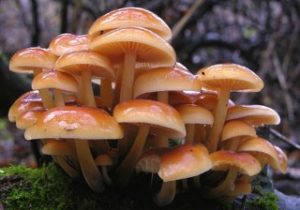
Flammulina velutipes (enokitake)
- The isolation and characterization of an immunomodulatory and anti-tumor polysaccharide preparation from Flammulina velutipes
- Purification, characterization and biological activity on hepatocytes of a polysaccharide from Flammulina velutipes mycelium
- Effect of Flammulina velutipes polysaccharides on production of cytokines by murine immunocytes and serum levels of cytokines in tumor-bearing mice
- INTENSIFICATION OF ANTITUMOR-IMMUNITY BY PROTEINBOUND POLYSACCHARIDE, EA6, DERIVED FROM FLAMMULINA VELUTIPES
- Immunomodulating and anti-tumor action of extracts of several mushrooms
- Interruption of lung cancer cell migration and proliferation by fungal immunomodulatory protein FIP-fve from Flammulina velutipes
- Purification, characterization and anti-proliferation activity of polysaccharides from Flammulina velutipes
- Anti-tumor mechanisms of orally administered a fungal immunomodulatory protein from Flammulina velutipes in mice
- Medicinal mushrooms as a source of antitumor and immunomodulating polysaccharides
- Enokitake, Flammulina velutipes: Host‐mediated antitumor polysaccharides
- Flammulina velutipes (Agaricomycetes), Capable of Enhancing Natural Killer Cell Activity against K562 Tumor
- Mushrooms and the prevention and treatment of Cancer
- Investigating the effect of N-terminal methionine addition, hydrophobic interaction enhancement and loop modification in modifying immunomodulatory and cancer-inhibitory activities of FIP-fve mutants Mutations of loop DE and hinge residue E61K were crucial in directing immune response towards T helper 1 (TH1) and displayed significant inhibition towards breast cancer MDA-MB-231 cell viability
- TREATEMNET OF CANCER BY MEDICINAL MUSHROOMS Agaricus bisporus shows inhibition of breast cancer development. Similarly other species like Lentinula edodes, Hericum erinaceus Flammulina velutipes shows effect.
- Cancer Killing Medicinal Mushrooms
- Interruption of lung cancer Cell Migration and Proliferation by Fungal Immunomodulatory Protein FIP-fve from Flammulina velutipes
- INTENSIFICATION OF ANTITUMOR-IMMUNITY BY PROTEINBOUND POLYSACCHARIDE, EA6, DERIVED FROM FLAMMULINA VELUTIPES (CURT.ex FR.) SING. COMBINED WITH MURINE leukemia L1210 VACCINE IN ANIMAL EXPERIMENTS

Frankincense (Boswellia carteri)
- Cancer chemopreventive effects and cytotoxic activities of the triterpene acids from the resin of Boswellia carteri
- Frankincense oil derived from Boswellia carteri induces tumor cell specific cytotoxicity
- Boswellia sacra essential oil induces tumor cell-specific apoptosis and suppresses tumor aggressiveness in cultured human breast cancer cells
- Effect of Boswellia thurifera gum methanol extract on cytotoxicity and P53 gene expression in human breast cancer cell line
- Frankincense essential oil prepared from hydrodistillation of Boswellia sacra gum resins induces human pancreatic cancer cell death in cultures
- Differential effects of selective frankincense (Ru Xiang) essential oil versus non-selective sandalwood (Tan Xiang) essential oil on cultured bladder cancer
- Review on anti-tumor effect of triterpene acid compounds
- Anti-inflammatory activities of the triterpene acids from the resin of Boswellia carteri
- Major constituents of Boswellia carteri resin exhibit cyclooxygenase enzyme inhibition and antiproliferative activity.
- Beckmann rearrangement products of methyl 3-oxo-tirucall-8, 24-dien-21-oate from Boswellia serrata gum and their anti-tumor activity
- Management of basal cell carcinoma of the skin using frankincense (Boswellia sacra) essential oil: a case report Acetyl-11-keto-b-boswellic acid inhibits prostate tumor growth by suppressing vascular endothelial growth factor receptor 2-mediated angiogenesis.
- Extraction of biologically active compounds by hydrodistillation of Boswelliaspecies gum resins for anti-cancer therapy
- The potential role of boswellic acids in cancer prevention and treatment
- 5α‐androstane‐3α,17β‐diol supports human prostate cancer cell survival and proliferation through androgen receptor‐independent signaling pathways: Implication of androgen‐independent prostate cancer progression
- Triterpenoids for Cancer Prevention and Treatment: Current Status and Future Prospects In this review, we have highlighted several studies on chemopreventive and anticancer potential of triterpenoids based on various preclinical animal models of colon, breast, prostate, and melanoma cancers.
- Design and synthesis of novel 2-substituted 11-keto-boswellic acid heterocyclic derivatives as anti-prostate cancer agents with Pin1 inhibition ability
- Methanolic extract of Boswellia serrata exhibits anti-cancer activities by targeting microsomal prostaglandin E synthase-1 in human colon cancer cells
- Effect of frankincense extract on VEGF and its receptor-1 expression in acute promyelocytic leukemia cell lines HL-60 cells
- INDUCED DIFFERENTIATION OF FRANKINCENSE EXTRACT ON CELLS WITH ACUTE NON-LYMPHATIC leukemia
- Impact of consuming Boswellia carteri oleo-gumresinswater extracton colon cancerinducedin rats
- A Pre-Clinical Investigation of the Anti-Cancer Effects of the Frankincense Constituent AKBA on ovarian cancer Cells
- Fucoidan from Sargassum sp. and Fucus vesiculosus reduces cell viability of lung carcinoma and melanoma cells in vitro and activates natural killer cells
- Fucoidan from seaweed Fucus vesiculosus inhibits migration and invasion of human lung cancer cell via PI3K-Akt-mTOR pathways
- In vitro chemopreventive potential of fucophlorethols from the brown alga Fucus vesiculosus L. by anti-oxidant activity
- Brown seaweed fucoidan: biological activity and apoptosis, growth signaling mechanism in cancer
- Fucoidan as a marine anticancer agent in preclinical development
- Fucoidan and cancer: a multifunctional molecule with anti-tumor potential
- Anticancer effects of different seaweeds on human colon and breast cancers
- Antioxidant capacities of phlorotannins extracted from the brown algae Fucus vesiculosus
- Fucoidan, a major component of brown seaweed, prohibits the growth of human cancer cell lines in vitro
- The anticancer effect of fucoidan in PC-3 prostate cancer cells
- Structure and antitumour activity of fucoidan isolated from sporophyll of Korean brown seaweed Undaria pinnatifida
- Seaweed Prevents Breast Cancer?
- The dietary intake of laminaria, a brown seaweed, and breast cancer prevention
- The consumption of seaweed as a protective factor in the etiology of breast cancer
- A case–control study on seaweed consumption and the risk of breast cancer
- Polyphenol-rich seaweed (Eucheuma cottonii) extract suppresses breast tumour via hormone modulation and apoptosis induction
- Fucoidan from Seaweed Fucus vesiculosus Inhibits Migration and Invasion of Human lung cancer Cell via PI3K-Akt-mTOR Pathways
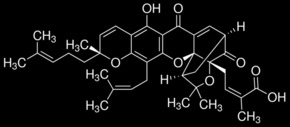
Gambogic acid (Garcinia hanburyi)
- Anticancer effect and apoptosis induction of gambogic acid in human gastric cancer line BGC-823
- Gambogic acid inhibits angiogenesis and prostate tumor growth by suppressing vascular endothelial growth factor receptor 2 signaling
- Gambogic acid induces apoptosis and regulates expressions of Bax and Bcl-2 protein in human gastric carcinoma MGC-803 cells
- Anti-invasive effect of gambogic acid in MDA-MB-231 human breast carcinoma cells
- Differential apoptotic induction of gambogic acid, a novel anticancer natural product, on hepatoma cells and normal hepatocytes
- Poloxamer 407/TPGS mixed micelles for delivery of gambogic acid to breast and multidrug-resistant cancer
- Gambogic acid mediates apoptosis as a p53 inducer through down-regulation of mdm2 in wild-type p53-expressing cancer cells
- Involvement of matrix metalloproteinase 2 and 9 in gambogic acid induced suppression of MDA-MB-435 human breast carcinoma cell lung metastasis
- Gambogic acid inhibits tumor cell adhesion by suppressing integrin β1 and membrane lipid rafts-associated integrin signaling pathway
- Gambogic acid inhibits TNF-α-induced invasion of human prostate cancer PC3 cells in vitro through PI3K/Akt and NF-κB signaling pathways
- Therapeutic potential of gambogic acid, a caged xanthone, to target cancer
- Gambogenic Acid Induction of Apoptosis in a Breast Cancer Cell Line
- Recent Research on Bioactive Xanthones from Natural Medicine: Garcinia hanburyi Gambogic acid dramatically inhibited the lung metastases and xenograft tumor growth in athymic BALB/c nude mice infecting MDA-MB-231 human breast carcinoma cells.
- Microtubule depolymerization and phosphorylation of c-Jun N-terminal kinase-1 and p38 were involved in gambogic acid induced cell cycle arrest and apoptosis in human breast carcinoma MCF-7 cells
- Gambogic Acid is a Novel Anti-cancer Agent that Inhibits Cell Proliferation, Angiogenesis and Metastasis
- Xanthones with Antiproliferative Effects on Prostate Cancer Cells from the Stem Bark of Garcinia
- Gambogic acid inhibits thioredoxin activity and induces ROS-mediated cell death in castration-resistant prostate cancer
- Antiproliferative activities of Garcinia bracteata extract and its active ingredient, isobractatin, against human tumor cell lines
- Gambogic acid, a potent inhibitor of survivin, reverses docetaxel resistance in gastric cancer cells
- Gambogic Acid Induces Apoptosis in Imatinib-Resistant Chronic Myeloid leukemia Cells via Inducing Proteasome Inhibition and Caspase-Dependent Bcr-Abl Downregulation
- Gambogic acid induces G0/G1 arrest and apoptosis involving inhibition of SRC-3 and inactivation of Akt pathway in K562 leukemia cells
- Caspase-8 preferentially senses the apoptosis-inducing action of NG-18, A gambogic acid derivative, in human leukemia HL-60 cells
- Synergistic effect of magnetic nanoparticles of Fe3O4 with gambogic acid on apoptosis of K562 leukemia cells
- Anticancer Effect and Apoptosis Induction of Gambogic Acid in Human leukemia Cell Line K562 In Vitro
- Effects of magnetic nanoparticle of Fe3O4 on apoptosis induced by Gambogic acid in U937 leukemia cells.
- Gambogic Acid Combined With CdTe QDs For leukemia Cancer Cells Inhibition and Their Bio-Safety For Rat Brain
- Gambogic acid induces growth inhibition and differentiation via upregulation of p21waf1/cip1 expression in acute myeloid leukemia cells
- Regulation of gambogic acid on hERG potassium channel protein of K562 leukemia cells
- Development of a safety and efficacy nanoemulsion delivery system encapsulated gambogic acid for acute myeloid leukemia in vitro and in vivo
- Gambogic acid synergistically potentiates cisplatin-induced apoptosis in non-small-cell lung cancer through suppressing NF-κB and MAPK/HO-1 signalling
- Mechanisms of Gambogic Acid-Induced Apoptosis in Non-Small Cell lung cancer Cells in Relation to Transferrin Receptors
- Suppression of NF-κB Signaling and P-glycoprotein Function by Gambogic Acid Synergistically Potentiates Adriamycin -induced Apoptosis in lung cancer
- Development of a More Efficient Albumin-Based Delivery System for Gambogic Acid with Low Toxicity for lung cancer Therapy
- Combined therapy with EGFR TKI and gambogic acid for overcoming resistance in EGFR‑T790M mutant lung cancer
- Combination of gambogic acid with cisplatin enhances the antitumor effects on cisplatin-resistant lung cancer cells by downregulating MRP2 and LRP expression
- Gambogic acid improves non-small cell lung cancer progression by inhibition of mTOR signaling pathway
- Gambogic Acid Induces Apoptosis of Non-Small Cell lung cancer (NSCLC) Cells by Suppressing Notch Signaling
- Gambogic acid induces apoptosis of SK-MES-1 lung cancer cells
- Gambogic acid-induced autophagy in nonsmall cell lung cancer NCI-H441 cells through a reactive oxygen species pathway
- Fine-Tuning Vitamin E-Containing Telodendrimers for Efficient Delivery of Gambogic Acid in colon cancer Treatment
- Effect of Gambogic acid on proliferation and invasion in colon cancer LoVo cell line
- Gambogic acid suppresses colon cancer cell activity in vitro
- Screening for natural compounds with anticancer activity in colon cancer cells identifies cytotoxic gambogic acid analogues
- ROS-Mediated Autophagy Induced by Dysregulation of Lipid Metabolism Plays a Protective Role in colorectal cancer Cells Treated with Gambogic Acid
- Gambogic acid inhibits growth, induces apoptosis, and overcomes drug resistance in human colorectal cancer cells
- Gambogic acid-loaded biomimetic nanoparticles in colorectal cancer treatment
- Gambogic Acid Efficiently Kills Stem-Like colorectal cancer Cells by Upregulating ZFP36 Expression
- Anti-EGFR-iRGD recombinant protein modified biomimetic nanoparticles loaded with gambogic acid to enhance targeting and antitumor ability in colorectal cancer treatment
- Suppression of APC production during apoptosis of human colorectal cancer cell line SW480 induced by gambogic acid
- Effect of gambogic acid on cell apoptosis and expressions of Bax, Bcl-2 and Caspase-3 in colorectal cancer cells with
- Gambogic acid potentiates the chemosensitivity of colorectal cancer cells to 5‑fluorouracil by inhibiting proliferation and inducing apoptosis
- Gambogic acid regulates the migration and invasion of colorectal cancer via microRNA‑21‑mediated activation of phosphatase and tensin homolog
- Gambogic acid reverses oxaliplatin resistance in colorectal cancer by increasing intracellular platinum levels
- Gambogic Acid Sensitizes ovarian cancer Cells to Doxorubicin Through ROS-Mediated Apoptosis
- Gambogic acid inhibits the growth of ovarian cancer tumors by regulating p65 activity
- Nanodelivery of gambogic acid by functionalized graphene enhances inhibition of cell proliferation and induces G0/G1 cell cycle arrest in cervical, ovarian, and prostate cancer cells
- Gambogic acid inhibited the growth of ovarian cancer via regulating p65 activity
- Gambogic Acid Combined With CdTe QDs For Leukemia Cancer Cells Inhibition and Their Bio-Safety For Rat Brain
- The NF-kappa B inhibitor, celastrol, could enhance the anti-cancer effect of gambogic acid on oral squamous cell carcinoma
- Bromodomain‑containing protein 4 is critical for the antiproliferative and pro‑apoptotic effects of gambogic acid in anaplastic thyroid cancer
- The anti‐tumor effect of Ganoderma lucidum is mediated by cytokines released from activated macrophages and T lymphocytes
- Effects of Ganopoly® (A Ganoderma lucidum Polysaccharide Extract) on the Immune Functions in Advanced‐Stage Cancer Patients
- Anti‐Inflammatory and Anti‐Tumor‐Promoting Effects of Triterpene Acids and Sterols from the Fungus Ganoderma lucidum
- Anti-tumor and immunoregulatory activities of Ganoderma lucidum and its possible mechanisms
- Ganoderma lucidum extract induces cell cycle arrest and apoptosis in MCF‐7 human breast cancer cell
- Effects of ganoderma lucidum on apoptotic and anti‐inflammatory function in HT‐29 human colonic carcinoma cells
- Anticancer effects of Ganoderma lucidum: a review of scientific evidence
- Free radical scavenging of Ganoderma lucidum polysaccharides and its effect on antioxidant enzymes and immunity activities in cervical carcinoma rats
- Ganoderma lucidum Polysaccharides: Immunomodulation and Potential Anti-Tumor Activities
- Ganoderma lucidum (Reishi) in cancer treatment
- Ganoderma lucidum suppresses motility of highly invasive breast and prostate cancer cells
- Ganoderma lucidum suppresses angiogenesis through the inhibition of secretion of VEGF and TGF-β1 from prostate cancer cells
- Ganoderma lucidum inhibits proliferation and induces apoptosis in human prostate cancer cells PC-3
- Biologic Activity of Spores and Dried Powder from Ganoderma lucidum for the Inhibition of Highly Invasive Human Breast and Prostate Cancer Cells
- Ganoderma Lucidum(Reishi) in Cancer Treatment
- Ganoderma lucidum extract induces cell cycle arrest and apoptosis in MCF‐7 human breast cancer cell
- Ganoderma lucidum Suppresses Growth of Breast Cancer Cells Through the Inhibition of Akt/NF-κB Signaling
- Ganoderma lucidum inhibits proliferation of human breast cancer cells by down-regulation of estrogen receptor and NF-κB signaling
- A novel polysaccharide from Se-enriched Ganoderma lucidum induces apoptosis of human breast cancer cells
- Ganoderma lucidum (Reishi) Inhibits Cancer Cell Growth and Expression of Key Molecules in Inflammatory Breast Cancer
- [Effect of Ganoderma lucidum polysaccharides on intestinal mucosal immune system in H22 liver cancer bearing mice].
- Research about the apoptosis of liver cancer HepG2 cells induced by Ganoderma lucidum polysaccharides
- Ganoderma lucidum polysaccharides peptide inhibits the growth of vascular endothelial cell and the induction of VEGF in human lung cancer cell
- Effects of Water-Soluble Ganoderma lucidum Polysaccharides on the Immune Functions of Patients with Advanced lung cancer
- A Randomized, Placebo-Controlled, Multicenter Study of Ganoderma lucidum (W.Curt.:Fr.) Lloyd (Aphyllophoromycetideae) Polysaccharides (Ganopoly®) in Patients with Advanced lung cancer
- The mushroom Ganoderma lucidum suppresses breast-to-lung cancer metastasis through the inhibition of pro-invasive genes
- Protection Against lung cancer Patient Plasma-Induced Lymphocyte Suppression by Ganoderma Lucidum Polysaccharides
- Ganoderma lucidum targeting lung cancer signaling: A review
- Khz (fusion of ganoderma lucidum and Polyporus umbellatus mycelia) induces apoptosis in A549 human lung cancer cells by generating reactive oxygen species and decreasing the mitochondrial membrane potential
- Effects of Ganoderma lucidum essence powder and Ganoderma Lucidum spore powder on immune function of mice with Lewis lung cancer
- Antiproliferative Effects of a Triterpene-Enriched Extract from Lingzhi or Reishi Medicinal Mushroom, Ganoderma lucidum (Agaricomycetes), on Human lung cancer Cells
- Ganodermanontriol, a lanostanoid triterpene from Ganoderma lucidum, suppresses growth of colon cancer cells through ß-catenin signaling
- Ganoderma lucidum polysaccharides target a Fas/caspase dependent pathway to induce apoptosis in human colon cancer cells.
- Inhibition of migration and induction of apoptosis in LoVo human colon cancer cells by polysaccharides from Ganoderma lucidum
- Inhibition of colon cancer cells by Ganoderma lucidum triterpenes.
- Cytotoxic Selectivity of Ganoderma lucidumin colon cancer through Cyclooxygenase 2 (COX-2) as Its Molecular Target
- Ganoderma lucidum extract inhibits proliferation of SW 480 human colorectal cancer cells
- Anticarcinogenic effects of water extract of sporoderm-broken spores of Ganoderma lucidum on colorectal cancer in vitro and in vivo
- Restoration of the tumor-suppressor function to mutant p53 by Ganoderma lucidum polysaccharides in colorectal cancer cells
- Ganoderma lucidum polysaccharide alleviating colorectal cancer by alteration of special gut bacteria and regulation of gene expression of colonic epithelial cells
- Immune Responses to Water-Soluble Ling Zhi Mushroom Ganoderma lucidum (W.Curt.:Fr.) P. Karst. Polysaccharides in Patients with Advanced colorectal cancer
- The ethanol extracts of sporoderm-broken spores of Ganoderma lucidum inhibit colorectal cancer in vitro and in vivo
- Abstract B12: Effect of Ganoderma lucidum on DNA damage and DNA repair in colorectal cancer cell lines
- Ganoderma lucidum polysaccharides induce cytotoxicity in colorectal cancer cells through inducing autophagosome accumulation and inhibiting autophagic flux
- Ganoderma Lucidum induces oxidative DNA damage and enhances the effect of 5-Fluorouracil in colorectal cancer in vitro and in vivo
- Ganoderma lucidum causes apoptosis in leukemia, lymphoma and multiple myeloma cells
- Ganoderma lucidum polysaccharides can induce human monocytic leukemia cells into dendritic cells with immuno-stimulatory function
- Ganoderma lucidum polysaccharides in human monocytic leukemia cells: from gene expression to network construction
- Enhanced induction of mitochondrial damage and apoptosis in human leukemia HL-60 cells by the Ganoderma lucidum and Duchesnea chrysantha extracts
- Ganoderma lucidum induced apoptosis in NB4 human leukemia cells: Involvement of Akt and Erk
- Ganoderma lucidum Extracts Inhibited leukemia WEHI-3 Cells in BALB/c Mice and Promoted an Immune Response in Vivo
- Ganoderma lucidum Polysaccharides Induce Macrophage-Like Differentiation in Human leukemia THP-1 Cells via Caspase and p53 Activation
- Active lipids of Ganoderma lucidum spores-induced apoptosis in human leukemia THP-1 cells via MAPK and PI3K pathways
- Ganoderma lucidum polysaccharide exerts anti-tumor activity via MAPK pathways in HL-60 acute leukemia cells
- Regulation of cell cycle transition and induction of apoptosis in HL-60 leukemia cells by the combination of Coriolus versicolor and Ganoderma lucidum
- Antrodia camphorata and ganoderma lucidum composition having functionality to inhibit renal cancer cell growth and enhance kidney functionmposition
- Modulatory effect of Ganoderma lucidum polysaccharides on serum antioxidant enzymes activities in ovarian cancer rats
- Ganoderma lucidum exerts anti-tumor effects on ovarian cancer cells and enhances their sensitivity to cisplatin
- Ganoderma lucidum inhibits proliferation of human ovarian cancer cells by suppressing VEGF expression and up-regulating the expression of connexin 43
- Effect of reversion of ganoderma lucidum polysaccharides on cisplatin resistant in ovarian cancer cells and its mechanism
- Ganoderma lucidum polysaccharides resistant ovarian cancer cells induced by experimental study
- Effect of Ganoderma lucidum on drug resistance of cisplantin-resistant ovarian cancer cell line
- Ganoderma tsugae extracts inhibit colorectal cancer cell growth via G2/M cell cycle arrest
- Antioxidant and radical scavenging properties of extracts from Ganoderma tsugae
- Antitumor active protein-containing glycans from the Chinese mushroom Songshan Lingzhi, Ganoderma tsugae mycelium
- Induction of premature senescence in human lung cancer by fungal immunomodulatory protein from Ganoderma tsugae
- Structure and antitumor activities of the water-soluble polysaccharides from Ganoderma tsugae mycelium
- Ganoderma tsugae extract inhibits expression of epidermal growth factor receptor and angiogenesis in human epidermoid carcinoma cells: In vitro and in vivo
- Effects of polysaccharides (FI0-c) from mycelium of Ganoderma tsugae on proinflammatory cytokine production by THP-1 cells and human PBMC (II).
- Antitumor Active Polysaccharides from the Chinese Mushroom Songshan Lingzhi, the Fruiting Body of Ganoderma tsugae
- Activity in human lung cancer cells by fungal immunomodulatory protein from Ganoderma tsugae
- Ganoderma tsugae extract inhibits growth of HER2-overexpressing cancer cells via modulation of HER2/PI3K/Akt signaling pathway
- Comparative Studies of Various Ganoderma Species and Their Different Parts with Regard to Their Antitumor and Immunomodulating Activities In Vitro
- Effects of a Chinese medical herbs complex on cellular immunity and toxicity-related conditions of breast cancer patients
- Chemical Composition and Medicinal Value of the New Ganoderma tsugae var. jannieae CBS-120304 Medicinal Higher Basidiomycete Mushroom
- Anti-tumor and immunoregulatory activitiesof Ganoderma lucidum and its possible mechanisms
- Recombinant FIP-gat, a Fungal Immunomodulatory Protein from Ganoderma atrum, Induces Growth Inhibition and Cell Death in Breast Cancer Cells
- Anti-androgenic activities of Ganoderma lucidum Ganoderma lucidum might be a useful ingredient for the treatment of benign prostatic hyperplasia (BPH).
- Ganoderic acid T from Ganoderma lucidum mycelia induces mitochondria mediated apoptosis in lung cancer cells
- Ganoderma tsugae induced ROS-independent apoptosis and cytoprotective autophagy in human chronic myeloid leukemia cells
- A whole-genome microarray approach to signal pathway of growth inhibition effects of Ganoderma tsugae extracts on lung cancer cells
- Ganoderma tsugae extracts induce cell cycle arrest and apoptosis in lung cancer cells
- Effect of genistein on in vitro and in vivo models of cancer
- Estrogenic effects of genistein on the growth of estrogen receptor-positive human breast cancer (MCF-7) cells in vitro and in vivo
- Growth-inhibitory effects of the natural phyto-oestrogen genistein in MCF-7 human breast cancer cells
- Genistein exerts multiple suppressive effects on human breast carcinoma cells
- Dietary genistein negates the inhibitory effect of tamoxifen on growth of estrogen-dependent human breast cancer (MCF-7) cells implanted in athymic mice
- Genistein inhibition of the growth of human breast cancer cells: independence from estrogen receptors and the multi-drug resistance gene
- Effects of soy phytoestrogens genistein and daidzein on breast cancer growth
- The effect of genistein aglycone on cancer and cancer risk: a review of in vitro, preclinical, and clinical studies
- Genistein‐induced upregulation of p21 WAF1 , downregulation of cyclin B, and induction of apoptosis in prostate cancer cells
- Estrogenic and antiproliferative properties of genistein and other flavonoids in human breast cancer cells in vitro
- Genistein and biochanin A inhibit the growth of human prostate cancer cells but not epidermal growth factor receptor tyrosine autophosphorylation
- Genistein Inhibits NF-kB Activation in Prostate Cancer Cells
- Rationale for the use of genistein‐containing soy matrices in chemoprevention trials for breast and prostate cancer
- Retracted: Genistein mediated histone acetylation and demethylation activates tumor suppressor genes in prostate cancer cells
- Dietary Genistein Inhibits Metastasis of Human Prostate Cancer in Mice
- Protection against breast cancer with genistein: a component of soy
- Genistein inhibits both estrogen and growth factor-stimulated proliferation of human breast cancer cells.
- Genistein These include chemoprevention of breast and prostate cancers, cardiovascular disease and post-menopausal ailments.
- Induction of apoptosis in breast cancer cells MDA-MB-231 by genistein
- Genistein: does it prevent or promote breast cancer?
- Biotherapy of B-cell precursor leukemia by targeting genistein to CD19-associated tyrosine kinases
- Induction of Differentiation and DNA Strand Breakage in Human HL-60 and K-562 leukemia Cells by Genistein
- The natural tyrosine kinase inhibitor genistein produces cell cycle arrest and apoptosis in Jurkat T-leukemia cells
- Genistein induces topoisomerase IIbeta- and proteasome-mediated DNA sequence rearrangements: Implications in infant leukemia
- Selection of myeloid progenitors lacking BCR/ABL mRNA in chronic myelogenous leukemia patients after in vitro treatment with the tyrosine kinase inhibitor genistein
- Synergistic Effect of 5-Aza-2′-Deoxycytidine and Genistein in Combination Against leukemia
- Comparison of the Effects of Genistein and Amsacrine on leukemia Cell Proliferation
- Therapeutic targeting of nuclear receptor corepressor misfolding in acute promyelocytic leukemia cells with genistein
- Genistein inhibited proliferation and induced apoptosis in acute lymphoblastic leukemia, lymphoma and multiple myeloma cells in vitro
- Genistein exhibits preferential cytotoxicity to a leukemogenic variant but induces differentiation of a non-leukemogenic variant of the mouse monocytic leukemia Mm cell line
- p53-Independent Apoptosis Induced by Genistein in lung cancer Cells
- Genistein‐induced G2‐m arrest, P21WAF1 upregulation, and apoptosis in a non‐small‐cell lung cancer cell line
- Competitive inhibition by genistein and ATP dependence of daunorubicin transport in intact MRP overexpressing human small cell lung cancer cells
- Genistein enhances the effect of epidermal growth factor receptor tyrosine kinase inhibitors and inhibits nuclear factor kappa B in nonsmall cell lung cancer cell lines
- p21 response to DNA damage induced by genistein and etoposide in human lung cancer cells
- Genistein exhibits anti-cancer effects via down-regulating FoxM1 in H446 small-cell lung cancer cells
- Genistein downregulates de novo lipid synthesis and impairs cell proliferation in human lung cancer cells
- Protection of p53 Wild Type Cells From Taxol by Genistein in the Combined Treatment of lung cancer
- Genistein inhibits A549 human lung cancer cell proliferation via miR-27a and MET signaling
- Genistein enhances the effect of cisplatin on the inhibition of non‑small cell lung cancer A549 cell growth in vitro and in vivo
- Enhancement of Experimental colon cancer by Genistein
- Genistein induces apoptosis and topoisomerase II-mediated DNA breakage in colon cancer cells
- Estrogen Receptor β mRNA in colon cancer Cells: Growth Effects of Estrogen and Genistein
- Inhibition of proliferation and induction of apoptosis by genistein in colon cancer HT-29 cells
- A combination of indole-3-carbinol and genistein synergistically induces apoptosis in human colon cancer HT-29 cells by inhibiting Akt phosphorylation and progression of autophagy
- Genistein induces G2/M cell cycle arrest and apoptosis via ATM/p53-dependent pathway in human colon cancer cells
- Genistein Inhibits Insulin-Like Growth Factor-I Receptor Signaling in HT-29 Human colon cancer Cells: A Possible Mechanism of the Growth Inhibitory Effect of Genistein
- Genistein attenuates WNT signaling by up-regulating sFRP2 in a human colon cancer cell line
- Genistein Increases Gene Expression by Demethylation of WNT5a Promoter in colon cancer Cell Line SW1116
- Genistein Affects Histone Modifications on Dickkopf-Related Protein 1 (DKK1) Gene in SW480 Human colon cancer Cell Line
- Nonsteroidal anti‐inflammatory drug‐activated gene (NAG‐1) is induced by genistein through the expression of p53 in colorectal cancer cells
- Genistein suppresses FLT4 and inhibits human colorectal cancer metastasis
- Genistein Inhibits Human colorectal cancer Growth and Suppresses MiR-95, Akt and SGK1
- Genistein induces activation of the mitochondrial apoptosis pathway by inhibiting phosphorylation of Akt in colorectal cancer cells
- Abstract 4000: Genistein-induced reduction of Wnt/beta-catenin pathway activity in colorectal cancer cell lines correlates with inhibition of proliferation and colony growth in soft agar .
- SYMPOSIUMS: GENISTEIN, EPIGENETIC & colorectal cancer
- Genistein: mechanisms of action in colorectal cancer
- Genistein and Its Role in Regulation of AP-1 in colorectal cancer
- Apoptosis of Human colorectal cancer Cell SW480 Induced by Genistein and Its Molecular Mechanism
- In vitro study on estrogenic effects of quercetin and genistein on a model of colorectal cancer cells
- Genistein is an effective stimulator of sex hormone-binding globulin production in hepatocarcinoma human liver cancer cells and suppresses proliferation of these cells in culture
- Glucuronidation of the soyabean isoflavones genistein and daidzein by human liver is related to levels of UGT1A1 and UGT1A9 activity and alters isoflavone response in the MCF-7 human breast cancer cell line
- Genistein Reinforces the Inhibitory Effect of Cisplatin on liver cancer Recurrence and Metastasis after Curative Hepatectomy
- Genistein-loaded nanoparticles of star-shaped diblock copolymer mannitol-core PLGA–TPGS for the treatment of liver cancer
- Genistein-triggered anticancer activity against liver cancer cell line HepG2 involves ROS generation, mitochondrial apoptosis, G2/M cell cycle arrest and inhibition of cell migration
- Genistein reduced colon cancer metastasis to liver through regulating the expression of metastasis-related genes in xenographed mice model
- Genistein-induced apoptosis and autophagocytosis in ovarian cancer cells
- Inhibitory Effect of Genistein and Daidzein on ovarian cancer Cell Growth
- Modulation of microRNA associated with ovarian cancer cells by genistein.
- Genistein induces G2/M cell cycle arrest and apoptosis of human ovarian cancer cells via activation of DNA damage checkpoint pathways
- Oncogenic MicroRNA-27a is a Target for Genistein in ovarian cancer Cells
- Sensitization of ovarian cancer cells to cisplatin by genistein: the role of NF-kappaB
- Pro-apoptotic effect and cytotoxicity of genistein and genistin in human ovarian cancer SK-OV-3 cells
- Genistein as a Potential Anticancer Agent against ovarian cancer
- Gene Expression Profiling in Response to Estradiol and Genistein in ovarian cancer Cells
- Genistein induces apoptosis in ovarian cancer cells via different molecular pathways depending on Breast Cancer Susceptibility gene-1 (BRCA1) status
- Antibodies directed against L1-CAM synergize with Genistein in inhibiting growth and survival pathways in SKOV3ip human ovarian cancer cells
- Apoptosis induced by 7-difluoromethoxyl-5,4′-di-n-octyl genistein via the inactivation of FoxM1 in ovarian cancer cells
- Genistein, a soy phytoestrogen, prevents the growth of BG-1 ovarian cancer cells induced by 17β-estradiol or bisphenol A via the inhibition of cell cycle progression
- Anticancer effect of genistein on BG-1 ovarian cancer growth induced by 17 β-estradiol or bisphenol A via the suppression of the crosstalk between estrogen receptor alpha and insulin-like growth factor-1 receptor signaling pathways
- Genistein suppressed epithelial–mesenchymal transition and migration efficacies of BG-1 ovarian cancer cells activated by estrogenic chemicals via estrogen receptor pathway and downregulation of TGF-β signaling pathway
- 7‑difluoromethoxyl‑5,4’‑di‑n‑octyl genistein inhibits ovarian cancer stem cell characteristics through the downregulation of FOXM1
- FOXO3a-mediated suppression of the self-renewal capacity of sphere-forming cells derived from the ovarian cancer SKOV3 cell line by 7-difluoromethoxyl-5,4′-di-n-octyl genistein
- A genistein derivative, ITB-301, induces microtubule depolymerization and mitotic arrest in multidrug-resistant ovarian cancer
- Let-7d increases ovarian cancer cell sensitivity to a genistein analog by targeting c-Myc
- Estrogen receptor modulators genistein, daidzein and ERB-041 inhibit cell migration, invasion, proliferation and sphere formation via modulation of FAK and PI3K/AKT signaling in ovarian cancer
- The effect of short-term oral phytoestrogen supplementation on the concentration of plasma and prostate tissue genistein and daidzein as well as on hormones of the hypothalamic-pituitary-testicular axis in prostate cancer patients
- Genistein Prevents Nuclear Factor-Kappa B Activation and Acute Lung Injury Induced by Lipopolysaccharide
- Genistein enhances the effect of epidermal growth factor receptor tyrosine kinase inhibitors and inhibits nuclear factor kappa B in nonsmall cell lung cancer cell lines
- Apoptotic effect of genistein on human colon cancer cells via inhibiting the nuclear factor-kappa B (NF-κB) pathway
- The soy isoflavone genistein blunts nuclear factor kappa-B, MAPKs and TNF-α activation and ameliorates muscle function and morphology in mdx mice
- Inhibition of LPS Induced iNOS, COX-2 and Cytokines Expression by Genistein−4′−O−α−L−Rhamnopyranosyl−(1−2)−β−D−Glucopyranoside
through the NF−κB
Inactivation in RAW 264 - Time Course for Inhibition of Lipopolysaccharide-induced Lung Injury by Genistein: Relationship to Alteration in Nuclear Factor-Kappa B Activity and Inflammatory Agents
- Genetics, Epigenetics and GenomicsP269Curcumin and genistein inhibit TNF-alpha-inducted matrix metalloproteinase-9 (MMP-9) expression by repressing NF-kappa B-mediated transcription
- Cells Exposed to GenisteinExpression in TLR4Stimulated of NF{kappa}B-Dependent Gene A Critical Role for p53 in theControl
- The soy isoflavone genistein blunts nuclear factor kappa-B,MAPKs and TNF-aactivation and ameliorates muscle functionand morphology inmdxmice
- Time course for inhibition of lung injury by genistein: alteration in NF-kappa B activity and inflammatory agents
- 17β-Estradiol, Genistein, and 4-Hydroxytamoxifen Induce the Proliferation of Thyroid Cancer Cells through the G Protein-Coupled Receptor GPR30
- Combination with genistein enhances the efficacy of photodynamic therapy against human anaplastic thyroid cancer cells†
- The effects of thymoquinone and genistein treatment on telomerase activity, apoptosis, angiogenesis, and survival in thyroid cancer cell lines
- Genistein inhibits human papillary thyroid cancer cell detachment, invasion and metastasis
- Genotoxicity Evaluation of the Soybean Isoflavone Genistein in Human Papillary Thyroid Cancer Cells. Study of Its Potential Use in Thyroid Cancer Therapy
- Genistein inhibits the stemness properties of prostate cancer cells through targeting Hedgehog–Gli1 pathway
- Genistein decreases the breast cancer stem-like cell population through Hedgehog pathway
- Sonic hedgehog pathway mediates genistein inhibition of renal cancer stem cells
- Genistein inhibits nasopharyngeal cancer stem cells through sonic hedgehog signaling
- Genistein down-regulates Notch-1 expression and inactivates Hedgehog signaling pathway in pancreatic cancer cells
- Effects of Ginkgo biloba extract (EGb 761) and quercetin on lipopolysaccharide-induced signaling pathways involved in the release of tumor necrosis factor-α1
- Ginkgo biloba extracts and cancer: a research area in its infancy
- Effects of Ginkgo biloba extract on cell proliferation and cytotoxicity in human hepatocellular carcinoma cells
- Ginkgo biloba extract kaempferol inhibits cell proliferation and induces apoptosis in pancreatic cancer cells
- Ginkgo biloba extract inhibits tumor necrosis factor-α–induced reactive oxygen species generation, transcription factor activation, and cell adhesion molecule
- Kaempferol and quercetin, components of Ginkgo biloba extract (EGb 761), induce caspase‐3‐dependent apoptosis in oral cavity cancer cells
- Ginkgo biloba and ovarian cancer prevention: epidemiological and biological evidence
- Cancer-related overexpression of the peripheral-type benzodiazepine receptor and cytostatic anticancer effects of Ginkgo biloba extract (EGb 761)
- mRNA expression profile of a human cancer cell line in response to Ginkgo biloba extract: Induction of antioxidant response and the golgi system
- Phase II study of Ginkgo biloba in irradiated brain tumor patients: effect on cognitive function, quality of life, and mood
- Ginkgo biloba extracts and cancer: a research area in its infancy
- The use of Ginkgo biloba for the prevention of chemotherapy-related cognitive dysfunction in women receiving adjuvant treatment for breast cancer, N00C9
- Drug-induced inhibition of the peripheral-type benzodiazepine receptor expression and cell proliferation in human breast cancer cells.
- Ginkgo biloba Extract Kaempferol Inhibits Cell Proliferation and Induces Apoptosis in Pancreatic Cancer Cells
- Ginkgo biloba and risk of cancer: secondary analysis of the Ginkgo Evaluation of Memory (GEM) Study
- Kaempferol and quercetin, components of Ginkgo biloba extract (EGb 761), induce caspase‐3‐dependent apoptosis in oral cavity cancer cells
- Specialty Supplements and Prostate Cancer Risk in the VITamins And Lifestyle (VITAL) Cohort
- Ginkgo biloba extract (EGb 761) induces apoptosis by the activation of caspase-3 in oral cavity cancer cells
- Hepatocellular Carcinomas in B6C3F1 Mice Treated with Ginkgo biloba Extract for Two Years Differ from Spontaneous Liver Tumors in Cancer Gene Mutations and Genomic Pathways
- Studies of Ginkgo Biloba Testa Polysaccharides in Inhibiting liver cancer and Inducing Apoptosis of the liver cancer Cell in Mice
- Extract of Ginkgo biloba exacerbates liver metastasis in a mouse colon cancer Xenograft model
- Effects of total flavonoids in Ginkgo biloba leaves on proliferation and apoptosis of human liver cancer cell line HepG2 in vitro
- The effects of Ginkgo biloba leaf flavonoids and Quercetin on proliferation or Apoptosis of human liver cancer cell line HepG2
- Ginkgo biloba Extract Decreases Non-Small Cell lung cancer Cell Migration by Downregulating Metastasis-Associated Factor Heat-Shock Protein 27
- Ginkgo biloba exocarp extracts inhibits angiogenesis and its effects on Wnt/β-catenin-VEGF signaling pathway in Lewis lung cancer
- Ginkgo biloba exocarp extracts induces apoptosis in Lewis lung cancer cells involving MAPK signaling pathways
- Anti-metastasis effect of Ginkgo bilobaexocarp extracts on metastasis of Lewis lung cancer in C_(57)BL/6J mice and its mechanism
- Ginkgo Biloba Extract Can Inhibit Non-Small Cell lung cancer Cell Metastasis Through Suppression Of HSP27 Expression
- Effects of Ginkgo Biloba Extract on Proliferation of Non-small Cell lung cancer PC-9 Cells
- Abstract 3325: Ginkgetin, a biflavonoid derived from leaves of Ginkgo biloba, induces autophagic cell death in non-small cell lung cancer via p62
- Ginkgo biloba Extract Decreases Non-Small Cell lung cancer Cell Migration by Downregulating Metastasis-Associated Factor Heat-Shock Protein 27
- Effects of ginseng and Ginkgo biloba on the efficacy of 5-flurouracil in colon cancer cells
- Effect of Ginkgo biloba extract EGb761 on apoptosis of K-ras mutational human colon cancer cells DLD1 and its mechanism
- lincRNA-p21 Mediates the Anti-Cancer Effect of Ginkgo Biloba Extract EGb 761 by Stabilizing E-Cadherin Protein in colon cancer
- Phase II Study of Combined 5‐Fluorouracil/ Ginkgo biloba Extract (GBE 761 ONC) Therapy in 5‐Fluorouracil Pretreated Patients with Advanced colorectal cancer
- Ginkgo biloba extract EGb 761–induced upregulation of LincRNA-p21 inhibits colorectal cancer metastasis by associating with EZH2
- Ginkgo biloba extract 761 enhances 5-fluorouracil chemosensitivity in colorectal cancer cells through regulation of high mobility group-box 3 expression
- Ginkgo biloba L. leaf extract offers multiple mechanisms in bridling N-methylnitrosourea – mediated experimental colorectal cancer
- Phase II study of combined 5-fluorouracil/ginkgo biloba extract (GBE 761 ONC) therapy in 5-fluorouracil pretreated patients with advanced colorectal cancer
- Experimental Study on Inhibition of Polysaccharides of Ginkgo Biloba Leaf on Proliferation of Human leukemia Cell
- Epidemiological and biological evidence for protective effect of ginkgo biloba on ovarian cancer
- Ginkgo biloba inhibits hydrogen peroxide–induced activation of nuclear factor kappa B in vascular endothelial cells
- Hyperbaric Oxygen and Ginkgo Biloba Extract Ameliorate Cognitive and Memory Impairment via Nuclear Factor Kappa-B Pathway in Rat Model of Alzheimer’s Disease
- Ginkgo biloba extract inhibits the expressions of cell adhesion molecules and nuclear factor-kappa B in arterial endothelial cells
- Ginkgo Biloba Extract Inhibits Metastasis and ERK/Nuclear Factor kappa B (NF-κB) Signaling Pathway in Gastric Cancer
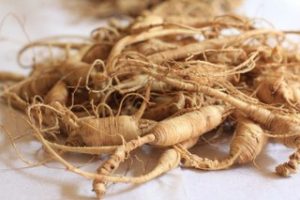
Ginseng extract, ginsenoside Rh
- Inhibitory effects of ginsenoside Rh2 on tumor growth in nude mice bearing human ovarian cancer cells
- Inhibition of human ovarian cancer cell proliferation in vitro by ginsenoside Rh2 and adjuvant effects to cisplatin in vivo.
- Anti-proliferating effects of ginsenoside Rh2 on MCF-7 human breast cancer cells.
- Inhibitory effect of ginsenoside Rg3 combined with cyclophosphamide on growth and angiogenesis of ovarian cancer.
- Inhibitory effect of ginsenoside Rg3 combined with gemcitabine on angiogenesis and growth of lung cancer in mice
- Inhibitory effects by oral administration of ginsenoside Rh2 on the growth of human ovarian cancer cells in nude mice
- Inhibitory effect of ginsenoside Rg3 on ovarian cancer metastasis
- Proteomic analysis of the anti-cancer effect of 20S-ginsenoside Rg3 in human colon cancer cell lines
- Effect and mechanism of ginsenoside Rg3 on postoperative life span of patients with non-small cell lung cancer
- Effects of ginsenosides Rg3 and Rh2 on the proliferation of prostate cancer cells
- Combination of ginsenoside Rg3 with docetaxel enhances the susceptibility of prostate cancer cells via inhibition of NF-κB
- Ginsenoside Rg3 attenuates cell migration via inhibition of aquaporin 1 expression in PC-3M prostate cancer cells
- Stereospecificity of hydroxyl group at C-20 in antiproliferative action of ginsenoside Rh2 on prostate cancer cells
- Anti-androgen-independent prostate cancer effects of ginsenoside metabolites In Vitro: Mechanism and possible structure-activity relationship investigation
- Anti-lung cancer effects of novel ginsenoside 25-OCH3-PPD
- Ginsenoside F2 induces apoptosis accompanied by protective autophagy in breast cancer stem cells
- Ginsenoside-Rb1 acts as a weak phytoestrogen in MCF-7 human breast cancer cells
- Antiangiogenic Effect of Capecitabine Combined with Ginsenoside Rg3 on Breast Cancer in Mice
- Anti-breast cancer activity of Fine Black ginseng (Panax ginseng Meyer) and ginsenoside Rg5
- Natural Product Ginsenoside 25-OCH3-PPD Inhibits Breast Cancer Growth and Metastasis through Down-Regulating MDM2
- Ginsenoside Rh2 induces cell cycle arrest and differentiation in human leukemia cells by upregulating TGF-β expression
- Anti-cancer effects of ginsenoside compound k on pediatric acute myeloid leukemia cells
- Characterizing the mechanism for ginsenoside-induced cytotoxicity in cultured leukemia (THP-1) cells
- Ginsenoside Rg3 inhibits HIF-1α and VEGF expression in patient with acute leukemia via inhibiting the activation of PI3K/Akt and ERK1/2 pathways
- Ginsenoside Rg1 Induces Apoptosis through Inhibition of the EpoR-Mediated JAK2/STAT5 Signalling Pathway in the TF-1/Epo Human leukemia Cell Line
- Ginsenoside 20(s)-Rh2 as potent natural histone deacetylase inhibitors suppressing the growth of human leukemia cells
- Ginsenoside Rh2 Mitigates Pediatric leukemia Through Suppression of Bcl-2 in leukemia Cells
- Ginsenoside Rh1 inhibits the invasion and migration of THP-1 acute monocytic leukemia cells via inactivation of the MAPK signaling pathway
- Senescence as A Consequence of Ginsenoside Rg1 Response on K562 Human leukemia Cell Line
- Pharmaceutical composition for preventing or treating gleevec-resistant leukemia containing ginsenoside F1 or ginsenoside Rg3 as an active ingredient
- Ginsenoside Rg3 inhibits epithelial-mesenchymal transition (EMT) and invasion of lung cancer by down-regulating FUT4
- Stereospecific effects of ginsenoside 20-Rg3 inhibits TGF-β1-induced epithelial–mesenchymal transition and suppresses lung cancer migration, invasion and anoikis resistance
- Ginsenoside Rh2 mediates changes in the microRNA expression profile of human non-small cell lung cancer A549 cells
- Immunopotentiation and antitumor effects of a ginsenoside Rg3-fortified red ginseng preparation in mice bearing H460 lung cancer cells
- Anti-tumor activity of three ginsenoside derivatives in lung cancer is associated with Wnt/β-catenin signaling inhibition
- AD-1, a novel ginsenoside derivative, shows anti-lung cancer activity via activation of p38 MAPK pathway and generation of reactive oxygen species
- Inhibiting PI3K-AKt signaling pathway is involved in antitumor effects of ginsenoside Rg3 in lung cancer cell
- Ginsenoside Rg3 sensitizes human non‑small cell lung cancer cells to γ-radiation by targeting the nuclear factor-κB pathway
- Ginsenoside metabolite compound K enhances the efficacy of cisplatin in lung cancer cells
- Therapeutic potential of Ginsenoside Rg3 via inhibiting Notch/HES1 pathway in lung cancer cells
- Proteomic Analysis of the Anti-Cancer Effect of 20S-Ginsenoside Rg3 in Human colon cancer Cell Lines
- Inhibition of NF-κB by ginsenoside Rg3 enhances the susceptibility of colon cancer cells to docetaxel
- Compound K, a Ginsenoside Metabolite, Inhibits colon cancer Growth via Multiple Pathways Including p53-p21 Interactions
- Ginsenoside Rg3 inhibits colon cancer cell migration by suppressing nuclear factor kappa B activity
- Ginsenoside Rh2 inhibiting HCT116 colon cancer cell proliferation through blocking PDZ-binding kinase/T-LAK cell-originated protein kinase
- Ginsenoside-Rp1-induced apolipoprotein A-1 expression in the LoVo human colon cancer cell line
- A Distinctive Pattern of Beauveria bassiana‐biotransformed Ginsenoside Products Triggers Mitochondria/FasL‐mediated Apoptosis in colon cancer Cells
- Effect of 20(S)-ginsenoside Rh_2 on cell proliferation and cycle of human colon cancer cells
- MicroRNA‑146a‑5p enhances ginsenoside Rh2‑induced anti‑proliferation and the apoptosis of the human liver cancer cell line HepG2
- Ginsenoside Rg3 inhibits the migration and invasion of liver cancer cells by increasing the protein expression of ARHGAP9
- Mechanism of Ginsenoside Rh2 in Enhancing Sensitivity of Human liver cancer HepG2 Cells to Betulinic Acid
- Composition for preventing or treating liver cancer containing ginsenoside F2
- Anti-tumor activity of ginsenoside structure modification on the human liver cancer SMMC-7721 cells in vitro
- Microarray analysis of altered long non-coding RNA expression profile in liver cancer cells treated by ginsenoside Rh2
- Recent clinical observation of Cidan Capsule with ginsenoside Rg_3 in advanced primary liver cancer
- Ginsenoside Rh2 enhances anti-tumor immunity through improving liver fatty acid metabolism in non-small cell lung cancer mice
- Ginsenoside Rh2 induces apoptosis and paraptosis-like cell death in colorectal cancer cells through activation of p53
- Ginsenoside compound K, not Rb1, possesses potential chemopreventive activities in human colorectal cancer
- Ginsenoside 20(S)-Rh2 exerts anti-cancer activity through targeting IL-6-induced JAK2/STAT3 pathway in human colorectal cancer cells
- Ginsenoside Rg3 targets cancer stem cells and tumor angiogenesis to inhibit colorectal cancer progression in vivo
- Ginsenoside Rh4 induces apoptosis and autophagic cell death through activation of the ROS/JNK/p53 pathway in colorectal cancer cells
- Anti-tumor activity of three novel derivatives of ginsenoside on colorectal cancer cells
- Ginsenoside Rb2 inhibits epithelial-mesenchymal transition of colorectal cancer cells by suppressing TGF-β/Smad signaling
- Ginsenoside Rh2 induced human colorectal cancer cell apoptosis through PI3K/AKT/GSK-3βpathway
- Inhibitory Effects of Ginsenoside Rh2 on Tumor Growth in Nude Mice Bearing Human ovarian cancer Cells
- Inhibitory effect of ginsenoside Rg3 combined with cyclophosphamide on growth and angiogenesis of ovarian cancer
- Inhibitory effect of ginsenoside Rg3 on ovarian cancer metastasis
- Inhibition of human ovarian cancer cell proliferation in vitro by ginsenoside Rh2 and adjuvant effects to cisplatin in vivo.
- 20(s)-ginsenoside Rg3 promotes apoptosis in human ovarian cancer HO-8910 cells through PI3K/Akt and XIAP pathways
- Ginsenoside 20(S)-Rg3 Targets HIF-1α to Block Hypoxia-Induced Epithelial-Mesenchymal Transition in ovarian cancer Cells
- Ginsenoside 20(S)‑Rg3 inhibits the Warburg effect through STAT3 pathways in ovarian cancer cells
- Ginsenoside-Rb1 targets chemotherapy-resistant ovarian cancer stem cells via simultaneous inhibition of Wnt/β-catenin signaling and epithelial-to-mesenchymal transition
- Effect of Ginsenoside Rh-2 via Activation of Caspase-3 and Bcl-2-Insensitive Pathway in ovarian cancer Cells
- Ginsenoside Rb1 inhibits hypoxia-induced epithelial‑mesenchymal transition in ovarian cancer cells by regulating microRNA-25
- Ginsenoside 20(S)-Rg3 Inhibits the Warburg Effect Via Modulating DNMT3A/ MiR-532-3p/HK2 Pathway in ovarian cancer Cells
- Ginsenoside 20(S)-Rg3 suppresses ovarian cancer migration via hypoxia-inducible factor 1 alpha and nuclear factor-kappa B signals
- Effect of Amino Acids on the Generation of Ginsenoside Rg3 Epimers by Heat Processing and the Anticancer Activities of Epimers in A2780 Human ovarian cancer Cells
- Inhibitory effects of 20 (S)-ginsenoside Rg3 on ovarian cancer growth
- Effect of ginsenoside Rh2 combined with cisplatin on apoptosis of human ovarian cancer SKOV-3 cells
- Effects of ginsenoside Rg3 on epigenetic modification in ovarian cancer cells
- Ginsenoside Rg3 inhibits colon cancer cell migration by suppressing nuclear factor kappa B activity
- Anti-inflammatory function of ginsenoside Rg1 on alcoholic hepatitis through glucocorticoid receptor related nuclear factor-kappa B pathway
- Sulfated Derivative of 20(S)-Ginsenoside Rh2 Inhibits Inflammatory Cytokines Through MAPKs and NF-kappa B Pathways in LPS-Induced RAW264.7 Macrophages
- Ginsenoside 20(S)-Rg3 suppresses ovarian cancer migration via hypoxia-inducible factor 1 alpha and nuclear factor-kappa B signals
- Effects of Ginsenoside Rg1 on nuclear factor-kappa B activity in beta amyloid protein-treated neural cells
- Ginsenoside compound K inhibits nuclear factor-kappa B by targeting Annexin A2
- INHIBITION OF NF-<KAPPA>B BY GINSENOSIDE RB1 AMELIORATES OXIDATIVE STRESS-INDUCED SENESCENCE
- GW24-e2242 Effects of Ginsenoside-Rbl improving nuclear factor kappa B system in rats with chronic heart failure induced by adriamycin
- Effect of ginsenoside Rg3 on hypoxia-induced expression of vascular endothelial growth factor and nuclear factor kappa B in Eca-109 and 786-0 cells.
- Ginsenoside Rb1 attenuates intestinal ischemia-reperfusion- induced liver injury by inhibiting NF-kappa B activation.
- Ginsenoside improves papillary thyroid cancer cell malignancies partially through upregulating connexin 31
- Ginsenoside Rg3 Inhibition of Thyroid Cancer Metastasis Is Associated with Alternation of Actin Skeleton
- Inhibitory of ginsenoside on proliferation of human thyroid cancer cells and expression of C -myc and Bcl -2 protein in vitro
- Angiogenic and proliferative effects of the cytokine VEGF in Ehrlich ascites tumor cells is inhibited by Glycyrrhiza glabra
- Licochalcone-A, a novel flavonoid isolated from licorice root (Glycyrrhiza glabra), causes G2 and late-G1 arrests in androgen-independent PC-3 prostate cancer cells
- Regulation for the proliferation of breast cancer MCF-7 cells by the treatment with an extract of Glycyrrhiza glabra root
- Modulations of the Bcl-2/Bax Family Were Involved in the Chemopreventive Effects of Licorice Root (Glycyrrhiza uralensis Fisch) in MCF-7 Human Breast Cancer Cell
- The effect of Echinacea purpurea, Astragalus membranaceus and Glycyrrhiza glabra on CD69 expression and immune cell activation in humans
- (Glycyrrhiza uralensis) root: induction of apoptosis and G1 cell cycle arrest in MCF-7 human breast cancer cells
- Phytocomplexes from liquorice (Glycyrrhiza glabra L.) leaves—chemical characterization and evaluation of their antioxidant, anti-genotoxic and anti-inflammatory
- Protective effect of Yashtimadhu (Glycyrrhiza glabra) against side effects of radiation/chemotherapy in head and neck malignancies
- Effect of gamma irradiation on the antimicrobial and free radical scavenging activities of Glycyrrhiza glabra root
- Licorice and cancer
- Evaluation of cytotoxicity activity and NM23 gene expression in T47D breast cancer cell line treated with glycyrrhiza glabra extract
- Estrogenic activities of extracts of Chinese licorice (Glycyrrhiza uralensis) root in MCF-7 breast cancer cells
- In-vitro Cytotoxic Screening of Glycyrrhiza glabra L. (Fabaceae): A Natural Anticancer Drug
- Isoliquiritigenin Inhibits the Growth of Prostate Cancer
- PC‐SPES, a dietary supplement for the treatment of hormone‐refractory prostate cancer
- Herbal composition for treating prostate carcinoma Dendranthema morifolium Tzvel, Glycyrrhiza glabra L.
- Chinese herbal mixture PC SPES in treatment of prostate cancer (review).
- Anti-tumor effects of PC-SPES, an herbal formulation in prostate cancer.
- Effect of root extracts of medicinal herb Glycyrrhiza glabra on HSP90 gene expression and apoptosis in the HT-29 colon cancer cell line
- The Anticancer Effect of Arctium lappa and Glycyrrhiza glabra on HT-29 colon cancer and MCF-7 Breast Cancer Cell Lines
- An active constituent of grape seed extract, exhibits anti-proliferative, pro-apoptotic and anti-tumorigenic effects against prostate carcinoma xenograft growth
- Synergistic anti-cancer effects of grape seed extract and conventional cytotoxic agent doxorubicin against human breast carcinoma cells
- Grape seed extract inhibits in vitro and in vivo growth of human colorectal carcinoma cells
- Anticancer and cancer chemopreventive potential of grape seed extract and other grape-based products
- Grape seed extract inhibits advanced human prostate tumor growth and angiogenesis and upregulates insulin‐like growth factor binding protein‐3
- Grape seed extract induces apoptotic death of human prostate carcinoma DU145 cells via caspases activation accompanied by dissipation of mitochondrial
- Oral grape seed extract inhibits prostate tumor growth and progression in TRAMP mice
- Chemoprevention by grape seed extract and genistein in carcinogen-induced mammary cancer in rats is diet dependent
- Grape seed extract inhibits EGF-induced and constitutively active mitogenic signaling but activates JNK in human prostate carcinoma DU145 cells
- Antiproliferative and apoptotic effects triggered by grape seed extract (GSE) versus epigallocatechin and procyanidins on colon cancer cell lines
- Fractionation of grape seed extract and identification of gallic acid as one of the major active constituents causing growth inhibition and apoptotic death of DU145 human prostate carcinoma cells
- Matrix Metalloproteinases in Cancer Metastasis: Molecular Targets for Prostate Cancer Prevention by Green Tea Polyphenols and Grape Seed Proanthocyanidins
- Grape seed extract induces anoikis and caspase-mediated apoptosis in human prostate carcinoma LNCaP cells: possible role of ataxia telangiectasia mutated–p53 activation
- Inhibition of NF-κB pathway in grape seed extract-induced apoptotic death of human prostate carcinoma DU145 cells
- Fractionation of high molecular weight tannins in grape seed extract and identification of procyanidin B2-3,3′-di-O-gallate as a major active constituent causing growth inhibition and apoptotic death of DU145 human prostate carcinoma cells
- The cytotoxic effects of a novel IH636 grape seed proanthocyanidin extract on cultured human cancer cells
- Grape seed proanthocyanidins induce apoptosis and inhibit metastasis of highly metastatic breast carcinoma cells
- Effect of Grape Seed Proanthocyanidins on Colon Aberrant Crypts and Breast Tumors in a Rat Dual-Organ Tumor Model
- Double-blind, placebo-controlled, randomised phase II trial of IH636 grape seed proanthocyanidin extract (GSPE) in patients with radiation-induced breast induration
- Induction of Apoptosis in Human leukemia Cells by Grape Seed Extract Occurs via Activation of c-Jun NH2-Terminal Kinase
- Tempranillo-derived grape seed extract induces apoptotic cell death and cell growth arrest in human promyelocytic leukemia HL-60 cells
- Antiproliferative and Apoptotic Effects Triggered by Grape Seed Extract (GSE) versus Epigallocatechin and Procyanidins on colon cancer Cell Lines
- Resveratrol potentiates grape seed extract induced human colon cancer cell apoptosis
- Apoptosis-inducing factor and caspase-dependent apoptotic pathways triggered by different grape seed extracts on human colon cancer cell line Caco-2
- Grape seed proanthocyanidins inhibit colon cancer-induced angiogenesis through suppressing the expression of VEGF and Ang1
- Grape Seed Extract Dose-Responsively Decreases Disease Severity in a Rat Model of Mucositis; Concomitantly Enhancing Chemotherapeutic Effectiveness in colon cancer Cells
- Grape seed extract triggers apoptosis in Caco-2 human colon cancer cells through reactive oxygen species and calcium increase: extracellular signal-regulated kinase involvement
- Functional modification of adipocytes by grape seed extract impairs their pro-tumorigenic signaling on colon cancer stem cells and the daughter cancer cells
- Characterization of azoxymethane-induced colon tumor metastasis to lung in a mouse model relevant to human sporadic colorectal cancer and evaluation of grape seed extract efficacy
- Grape seed extracts modify the outcome of oxaliplatin in colon cancer cells by interfering with cellular mechanisms of drug cytotoxicity
- Antiproliferative and apoptotic effects of grape seed extract on human colon cancer cell line HCT116
- Abstract 4116: Grape seed extract impairs adipocyte-colorectal cancer cell interaction and decreases adipocyte-driven colon cancer stem colonosphere formation
- Resveratrol and grape seed extract combination elevates apoptosis in the colon cancer stem cells, even in the presence of IGF-1, via P53 dependent pathway
- Grape Seed Proanthocyanidins Inhibit the Growth of Human Non-Small Cell lung cancer Xenografts by Targeting Insulin-Like Growth Factor Binding Protein-3, Tumor Cell Proliferation, and Angiogenic Factors
- Inhibition of non‐small cell lung cancer cell migration by grape seed proanthocyanidins is mediated through the inhibition of nitric oxide, guanylate cyclase, and ERK1/2
- MicroRNA-19a/b mediates grape seed procyanidin extract-induced anti-neoplastic effects against lung cancer
- Differential Effect of Grape Seed Extract against Human Non-small-Cell lung cancer Cells: The Role of Reactive Oxygen Species and Apoptosis Induction
- Grape seed proanthocyanidins inhibit cigarette smoke condensate‐induced lung cancer cell migration through inhibition of NADPH oxidase and reduction in the binding of p22phox and p47phox proteins
- Grape Seed Procyanidin Extract Mediates Antineoplastic Effects against lung cancer via Modulations of Prostacyclin and 15-HETE Eicosanoid Pathways
- [Grape seed proanthocyanidins inhibits the invasion and migration of A549 lung cancer cells].
- Grape seed procyanidin extract against lung cancer: the role of microrna-106b, bioavailability, and bioactivity
- A72 MECHANISMS OF lung cancer BIOLOGY: Grape Seed Proanthocyanidin Extract Modulates Rna Exosome Expression In A549 lung cancer Cells
- Chemoprevention of colorectal cancer by Grape Seed Proanthocyanidin Is Accompanied by a Decrease in Proliferation and Increase in Apoptosis
- Differential effects of grape seed extract against human colorectal cancer cell lines: The intricate role of death receptors and mitochondria
- Target Identification of Grape Seed Extract in colorectal cancer Using Drug Affinity Responsive Target Stability (DARTS) Technique: Role of Endoplasmic Reticulum Stress Response Proteins
- Oligomeric proanthocyanidins (OPCs) from grape seed extract suppress the activity of ABC transporters in overcoming chemoresistance in colorectal cancer cells
- Antiproliferative and cytotoxic effects of grape pomace and grape seed extracts on colorectal cancer cell lines
- Abstract 901: Grape seed extract decreases visceral adiposity and impairs the pro-tumorigenic adipose tissue secretions affecting colorectal cancer growth and progression
- Grape seed procyanidin B2 promotes the autophagy and apoptosis in colorectal cancer cells via regulating PI3K/Akt signaling pathway
- Abstract 5721: Grape seed extract induces both intrinsic and extrinsic apoptotic pathways in its efficacy against human colorectal cancer cells harboring varying degrees of metastatic potential
- Oral Administration of Grape Seed Proanthocyanidin Extracts Downregulate RAGE Dependant Nuclear Factor- Kappa BP65 Expression in the Hippocampus of Streptozotocin Induced Diabetic Rats
- Effects of D-Fraction, a polysaccharide from Grifola frondosa on tumor growth involve activation of NK cells
- Effects of Lentinus Edodes, Grifola Frondosa and Pleurotus Ostreatus Administration on Cancer Outbreak, and Activities of Macrophages and Lymphocytes in Mice
- Effect of Maitake (Grifola frondosa) D-Fraction on the Activation of NK Cells in Cancer Patients
- Effects of maitake (Grifola frondosa) D-Fraction on the carcinoma angiogenesis
- Structural analysis of anti-tumor heteropolysaccharide GFPS1b from the cultured mycelia of Grifola frondosa GF9801
- Antitumor and immunomodulating activities of a β-glucan obtained from liquid-cultured Grifola frondosa
- Antitumor activity exhibited by orally administered extract from fruit body of Grifola frondosa (maitake)
- Grifola frondosa enhances the anti-tumor activity of bone marrow-derived dendritic cell-based immunotherapy against murine colon cancer
- Antitumor effects of a water-soluble extract from Maitake (Grifola frondosa) on human gastric cancer cell lines
- Anticancer activities of a chemically sulfated polysaccharide obtained from Grifola frondosa and its combination with 5-fluorouracil against human gastric carcinoma
- Can Maitake MD-Fraction Aid CancerPatients?
- Maitake D-fraction:Healingand Preventive Potential for Cancer
- Antitumoral Effects of D-Fraction from Grifola Frondosa (Maitake) Mushroom in Breast Cancer
- Maitake (D Fraction) Mushroom Extract Induces Apoptosis in Breast Cancer Cells by BAK-1 Gene Activation
- Anticancer and Hypoglycemic Effects of Polysaccharides in Edible and Medicinal Maitake Mushroom [Grifola frondosa (Dicks.: Fr.) S. F. Gray]
- Grifola frondosa (Dicks.: Fr.) S.F. Gray (Maitake Mushroom): Medicinal Properties, Active Compounds, and Biotechnological Cultivation Medicinal effects and modes of action are presented in detail, including anticancer activity, immunostimulation, effects on angiogenesis, reduction of benign prostatic hyperplasia
- Maitake Mushroom {Grifóla frondosa): Systematic Reviewby theNatural Standard Research Collaboration The author suggested thatmaitake is effective against breast, liver, and lung cancer butless effective against leukemia and stomach and bone can-cers based on this study
- Compositions and methods for treating prostate disorders
- Chemopreventive effect of the polysaccharides from Grifola frondosa in colitis-associated colorectal cancer by modulating the Wnt/β-catenin/GSK-3β signaling pathway in C57BL/6 mice
- Experimental Study on Effect of Grifola Frondosa on Lich-up Function of MΦ and Activity of IL-1 in Mice With lung cancer
- In Vitro Anti-proliferative and Anti-invasive Effect of Polysaccharide-rich Extracts from Trametes Versicolor and Grifola Frondosa in colon cancer Cells
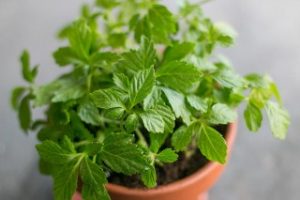
Gynostemma pentaphylla extract
- Antiproliferation Effect and Apoptosis Mechanism of Prostate Cancer Cell PC-3 by Flavonoids and Saponins Prepared from Gynostemma pentaphyllum
- A preliminary observation of preventive and blocking effect of Gynostemma pentaphyllum (Thunb) Makino on esophageal cancer in rats
- Gynostemma pentaphyllum, in vincristine-resistant human oral cancer (KB/VCR) cells
- Preparative chromatography of flavonoids and saponins in Gynostemma pentaphyllum and their antiproliferation effect on hepatoma cell
- Isolation and characterization of immunostimulatory polysaccharide from an herb tea, Gynostemma pentaphyllum Makino
- Gypenosides induced G0/G1 arrest via inhibition of cyclin E and induction of apoptosis via activation of caspases-3 and-9 in human lung cancer A-549 cells
- Morphological and structural characterization of a polysaccharide from Gynostemma pentaphyllum Makino and its anti-exercise fatigue activity
- Chemical composition and anti-proliferative and anti-inflammatory effects of the leaf and whole-plant samples of diploid and tetraploid Gynostemma pentaphyllum
- Anticancer and immunoregulatory activity of Gynostemma pentaphyllum polysaccharides in H22 tumor-bearing mice
- Flavonoids from Gynostemma pentaphyllum exhibit differential induction of cell cycle arrest in H460 and A549 cancer cells
- Mechanistic study of the anti‐cancer effect of Gynostemma pentaphyllum saponins in the ApcMin/+ mouse model
- Heat shock protein 27 is a potential indicator for response to YangZheng XiaoJi and chemotherapy agents in cancer cells A range of cell lines from different tumour types including pancreatic, lung, gastric, colorectal, breast, prostate and ovarian cancer (both wild-type and resistant) were used.
- Novel dammarane-type triterpenes isolated from hydrolyzate of total Gynostemma pentaphyllum saponins mong them, compound 1 showed strong inhibition toward MCF-7 human breast cancer cells
- Further New Gypenosides from Jiaogulan (Gynostemma pentaphyllum) moderate cytotoxicity against human breast cancer cells MCF7, MCF7/ADR, and MDA-MB-231, with IC50 values ranging from 10.5 ± 1.4 to 14.2 ± 2.6 μM. The outcome of the study provided crucial information regarding the structural diversity and health benefits of gypenosides.
- Anti-Cancer Properties of Diethylether Extract of Wood from Sukun (Artocarpus altilis) in Human Breast Cancer (T47D) Cells
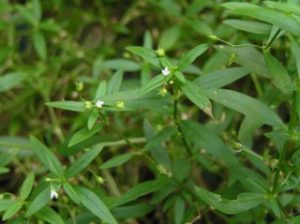
Hedyotis Diffusa Willd extract
- Effect of Hedyotis Diffusa Willd extract on tumor angiogenesis
- Hedyotis Diffusa Willd extract induces apoptosis via activation of the mitochondrion-dependent pathway in human colon carcinoma cells
- Hedyotis diffusa Willd inhibits colorectal cancer growth in vivo via inhibition of STAT3 signaling pathway
- Hedyotis diffusa Willd extract suppresses Sonic hedgehog signaling leading to the inhibition of colorectal cancer angiogenesis
- Methylanthraquinone from Hedyotis diffusa WILLD induces Ca2+-mediated apoptosis in human breast cancer cells
- Clarification of the Phenotypic Characteristics and Anti-Tumor Activity of Hedyotis diffusa
- Hedyotis diffusa Willd. extract suppresses proliferation and induces apoptosis via IL-6-inducible STAT3 pathway inactivation in human colorectal cancer cells
- Water extract of Hedyotis Diffusa Willd suppresses proliferation of human HepG2 cells and potentiates the anticancer efficacy
- Hedyotis diffusa combined with Scutellaria barbata are the core treatment of Chinese herbal medicine used for breast cancer patients: a population-based study
- Hedyotis diffusa water extract diminished the cytotoxic effects of chemotherapy drugs against human breast cancer MCF7 cells.
- Hedyotis diffusa Water Extract Diminished the Cytotoxic Effects of Chemotherapy Drugs against Human Breast Cancer MCF7 Cells
- Hedyotis diffusa Willd overcomes 5-fluorouracil resistance in human colorectal cancer HCT-8/5-FU cells by downregulating the expression of P-glycoprotein and ATP-binding casette subfamily G member 2
- The anti-tumor effect and bioactive phytochemicals of Hedyotis diffusa willd on ovarian cancer cells
- Novel cyclotides from Hedyotis diffusa induce apoptosis and inhibit proliferation and migration of prostate cancer cells
- Hedyotis diffusa Willd extract inhibits HT‑29 cell proliferation via cell cycle arrest
- Hedyotis diffusa plus Scutellaria barbata Induce Bladder Cancer Cell Apoptosis by Inhibiting Akt Signaling Pathway through Downregulating miR-155 Expression
- Ethanol extract of Hedyotis diffusa willd upregulates G0/G1 phase arrest and induces apoptosis in human leukemia cells by modulating caspase cascade signaling and altering associated genes expression was assayed by cDNA microarray
- Synergistic inhibition of leukemia WEHI-3 cell growth by arsenic trioxide and Hedyotis diffusa Willd extract in vitro and in vivo
- The inhibition of extracts of hedyotis diffusa on leukemia HL-60 cell
- Systems pharmacology uncover the mechanism of anti-non-small cell lung cancer for Hedyotis diffusa Willd
- Purification and characterization a polysaccharide from Hedyotis diffusa and its apoptosis inducing activity toward human lung cancer cell line A549
- Research of material base of Hedyotis diffusa Willd. in preventing lung cancer.
- Quantitative and qualitative determination of gallic acid in Hedyotis diffusaWilld. extract and its anti-lung cancer NCI-H460 cell activity.
- Hedyotis diffusa Willd Inhibits colorectal cancer Growth in Vivo via Inhibition of STAT3 Signaling Pathway
- Inhibitory effects of Hedyotis diffusa Willd. on colorectal cancer stem cells
- Hedyotis diffusa willd extract suppresses colorectal cancer growth through multiple cellular pathways
- A Network Pharmacology Approach to Uncover the Multiple Mechanisms of Hedyotis diffusa Willd. on colorectal cancer
- Hedyotis diffusa Willd suppresses metastasis in 5‑fluorouracil‑resistant colorectal cancer cells by regulating the TGF‑β signaling pathway
- Hedyotis diffusa Willd inhibits proliferation and induces apoptosis of 5‑FU resistant colorectal cancer cells by regulating the PI3K/AKT signaling pathway
- Chloroform extract of Hedyotis diffusa Willd inhibits viability of human colorectal cancer cells via suppression of AKT and ERK signaling pathways
- Hedyotis diffusa Willd inhibits the growth of colorectal cancer cells and stem cells via suppressing Wnt/β-catenin signaling pathway
- Hedyotis diffusa Willd. inhibits VEGF‑C‑mediated lymphangiogenesis in colorectal cancer via multiple signaling pathways
- Antiproliferative, antimigratory, and anticlonogenic effects of Hedyotis diffusa, Panax ginseng, and their combination on colorectal cancer cell lines
- Hedyotis diffusa Willd reduces migration and invasion through inhibition of TGF-β-induced EMT in colorectal cancer cells
- Hedyotis diffusa Willd extract suppresses Sonic hedgehog signaling leading to the inhibition of colorectal cancer angiogenesis
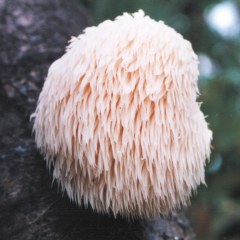
Hericium erinaceus — Lions mane
- Composition and Mechanism of Antitumor Effects of Hericium erinaceus Mushroom Extracts in Tumor-Bearing Mice
- Hericium erinaceus enhances doxorubicin-induced apoptosis in human hepatocellular carcinoma cells
- Anticancer potential of Hericium erinaceus extracts against human gastrointestinal cancers
- Antitumor and immunoenhancing activities of polysaccharide from culture broth of Hericium spp.
- Hericium erinaceus (Lion’s Mane) mushroom extracts inhibit metastasis of cancer cells to the lung in CT-26 colon cancer-tansplanted mice
- In vitro anti-Helicobacter pylori effects of medicinal mushroom extracts, with special emphasis on the Lion’s Mane mushroom, Hericium erinaceus
- Antimutagenicity of extracts of Hericium erinaceus.
- Mechanism of Hericium erinaceus (Yamabushitake) mushroom-induced apoptosis of U937 human monocytic leukemia cells
- Inhibitory Effect on Aflatoxin B₁-8, 9-epoxide Formation and Anti-complementary Activity of Methanol Extract from Hericium erinaceus
- A new cerebroside from the fruiting bodies of Hericium erinaceus and its applicability to cancer treatment
- Hericium erinaceus mycelium and its isolated erinacine A protection from MPTP-induced neurotoxicity through the ER stress, triggering an apoptosis cascade
- Medicinal mushrooms as an attractive new source of natural compounds for future cancer therapy
- Hericium erinaceus polysaccharide-protein HEG-5 inhibits SGC-7901 cell growth via cell cycle arrest and apoptosis
- Medicinal properties of Hericium erinaceus and its potential to formulate novel mushroom-based pharmaceuticals
- Mechanism of Hericium erinaceus (Yamabushitake) mushroom-induced apoptosis of U937 human monocytic leukemia cells
- Anticancer potential of Hericiumerinaceus extracts against particular human cancer cell lines
- Effect of the replacement of aspartic acid/glutamic acid residues with asparagine/glutamine residues in RNase He1 from Hericium erinaceus on inhibition of human leukemia cell line proliferation
- Hericium erinaceus isolectins recognize mucin-type O-glycans as tumor-associated carbohydrate antigens on the surface of K562 human leukemia cells
- Protective effects of dried flower extracts of Hibiscus sabdariffa L. against oxidative stress in rat primary hepatocytes
- Inhibitory effect of Hibiscus protocatechuic acid on tumor promotion in mouse skin
- Chemopreventive properties of Hibiscus sabdariffa L. on human gastric carcinoma cells through apoptosis induction and JNK/p38 MAPK signaling activation
- Hibiscus sabdariffa Extract Inhibits the Development of Atherosclerosis in Cholesterol-Fed Rabbits
- Protective Effects of Extracts of Vernonia amygdalina, Hibiscus sabdariffa and Vitamin C against Radiation-induced Liver Damage in Rats
- Hibiscus sabdariffa leaf induces apoptosis of human prostate cancer cells in vitro and in vivo
- Hibiscus sabdariffa L. water extract inhibits the adipocyte differentiation through the PI3-K and MAPK pathway
- Hibiscus sabdariffa leaf extract inhibits human prostate cancer cell invasion via down-regulation of Akt/NF-kB/MMP-9 pathway
- Hypolipidemic effect of ethanolic extract from the leaves of Hibiscus sabdariffa L. in hyperlipidemic rats
- Antioxidant and drug detoxification potentials of Hibiscus sabdariffa anthocyanin extract
- Hibiscus sabdariffa leaf extract inhibits human prostate cancer cell invasion via down-regulation of Akt/NF-kB/MMP-9 pathway
- Antitumoral effects of Hibiscus Sabdariffa on human breast cancer cells
- Delphinidin-rich extracts of Hibiscus sabdariffa L. trigger mitochondria-derived autophagy and necrosis through reactive oxygen species in human breast cancer cells
- Selective Cytotoxicity and Apoptogenic Activity of
Hibiscus Sabdariffa Aqueous Extract against
MCF-7 Human Breast Cancer Cell Line - Chemopreventive Properties and Molecular Mechanisms of the Bioactive Compounds in Hibiscus Sabdariffa Linne
- Antioxidant and Cytotoxic Effect of Barringtonia racemosa and Hibiscus sabdariffa Fruit Extracts in MCF-7 Human Breast Cancer Cell Line
- Antioxidant and anti-proliferative activities of Roselle juice on Caov-3, MCF-7, MDA-MB-231 and HeLa cancer cell lines
- Influence of aqueous extract of Hibiscus sabdariffa L. petal on cadmium toxicity in rats Total superoxide dismutase activity was decreased in the liver, testis, and prostate of Cd-exposed rats, whereas malondialdehyde (MDA) concentrations were increased relative to the Cd-free control.
- In vitro antioxidant, anti-inflammatory, cytotoxic activities against prostate cancer of extracts from Hibiscus sabdariffa leaves.
- Nanoparticles green synthesis by Hibiscus Sabdariffa flower extract: Main physical properties
- In vitro cytotoxic activity of extracts from Hibiscus sabdariffa leaves against human lung cancer cell lines
- The Extract of Hibiscus syriacus Inducing Apoptosis by Activating p53 and AIF in Human lung cancer Cells
- Inhibition of Chemically-Induced ColonCancer by Dietary Treatment ofHibiscussabdariffaL. Dried Calyx in Rats
- EFFECTS OF SUPERCRITICAL FLUID-EXTRACTED HIBISCUSCANNABINUSL. SEED OIL ON colon cancer IN VITRO AND IN VIVO
- Induction of apoptosis by Hibiscus protocatechuic acid in human leukemia cells via reduction of retinoblastoma (RB) phosphorylation and Bcl-2 expression
- Hibiscus anthocyanins rich extract-induced apoptotic cell death in human promyelocytic leukemia cells
- Delphinidin 3-sambubioside, a Hibiscus anthocyanin, induces apoptosis in human leukemia cells through reactive oxygen species-mediated mitochondrial pathway
- An Anthocyanin-Rich Extract from Hibiscus sabdariffa Linnaeus Inhibits N-Nitrosomethylurea-Induced leukemia in Rats
- Effect of Origanum syriacum, Hibiscus sabdariffa, Thymus vulgaris and Pelargonium graveolens Extracts on Human leukemia THP-1 Cells in Vitro
- Anti-tumor effect of honokiol alone and in combination with other anti-cancer agents in breast cancer
- Honokiol arrests cell cycle, induces apoptosis, and potentiates the cytotoxic effect of gemcitabine in human pancreatic cancer cells
- Down-modulation of Bcl-XL, release of cytochrome c and sequential activation of caspases during honokiol-induced apoptosis in human squamous lung cancer CH27
- Honokiol causes G0-G1 phase cell cycle arrest in human prostate cancer cells in association with suppression of retinoblastoma protein level/phosphorylation
- Honokiol in combination with radiation targets notch signaling to inhibit colon cancer stem cells
- Chemopreventive effects of honokiol on UVB-induced skin cancer development
- Honokiol: a novel natural agent for cancer prevention and therapy
- Synergistic antitumor effects of liposomal honokiol combined with adriamycin in breast cancer models
- Honokiol induces cytotoxic and cytostatic effects in malignant melanoma cancer cells
- Honokiol activates AMP-activated protein kinase in breast cancer cells via an LKB1-dependent pathway and inhibits breast carcinogenesis
- Honokiol, a natural plant product, inhibits the bone metastatic growth of human prostate cancer cells
- Honokiol, a Multifunctional Antiangiogenic and Antitumor Agent
- Honokiol: A Novel Natural Agent for Cancer Prevention and Therapy
- Honokiol mediated inhibition of PI3K/mTOR pathway: A potential strategy to overcome immunoresistance in glioma, breast and prostate carcinoma without impacting T cell function
- Honokiol inhibits androgen receptor activity in prostate cancer cells
- Down-regulation of P-glycoprotein expression in MDR breast cancer cell MCF-7/ADR by honokiol
- Honokiol, a natural biphenyl, inhibits in vitro and in vivo growth of breast cancer through induction of apoptosis and cell cycle arrest
- Down-regulation of c-Src/EGFR-mediated signaling activation is involved in the honokiol-induced cell cycle arrest and apoptosis in MDA-MB-231 human breast cancer cells
- Synergistic antitumor effects of liposomal honokiol combined with adriamycin in breast cancer models
- Honokiol inhibits epithelial–mesenchymal transition in breast cancer cells by targeting signal transducer and activator of transcription 3/Zeb1/E-cadherin axis
- The natural product honokiol induces caspase-dependent apoptosis in B-cell chronic lymphocytic leukemia (B-CLL) cells
- Honokiol induces apoptosis in human lymphoid leukemia Molt 4B cells.
- Magnolol and honokiol enhance HL-60 human leukemia cell differentiation induced by 1,25-dihydroxyvitamin D3 and retinoic acid
- Inhibition of Leukotriene Synthesis by Honokiol in Rat Basophilic leukemia Cells
- Honokiol induces cell cycle arrest and apoptosis via inhibition of survival signals in adult T-cell leukemia
- Honokiol induces paraptosis and apoptosis and exhibits schedule-dependent synergy in combination with imatinib in human leukemia cells
- Honokiol induces caspase-independent paraptosis via reactive oxygen species production that is accompanied by apoptosis in leukemia cells
- Honokiol Inhibits Constitutive and Inducible STAT3 Signaling via PU.1-Induced SHP1 Expression in Acute Myeloid leukemia Cells
- Honokiol induces proteasomal degradation of AML1-ETO oncoprotein via increasing ubiquitin conjugase UbcH8 expression in leukemia
- Honokiol Induces Cell Cycle Arrest and Apoptosis Via Inhibiting Class I Histone Deacetylases in Acute Myeloid leukemia
- Improved therapeutic effectiveness by combining liposomal honokiol with cisplatin in lung cancer model
- Honokiol Inhibits Non-Small Cell lung cancer Cell Migration by Targeting PGE2-Mediated Activation of β-Catenin Signaling
- Inhibition of class I histone deacetylases in non-small cell lung cancer by honokiol leads to suppression of cancer cell growth and induction of cell death in vitro and in vivo
- Honokiol Decreases lung cancer Metastasis through Inhibition of the STAT3 Signaling Pathway
- Honokiol inhibits EMT-mediated motility and migration of human non-small cell lung cancer cells in vitro by targeting c-FLIP
- Honokiol from Magnolia spp. induces G1 arrest via disruption of EGFR stability through repressing HDAC6 deacetylated Hsp90 function in lung cancer cells
- Functional paclitaxel plus honokiol micelles destroying tumour metastasis in treatment of non-small-cell lung cancer
- Mitochondria-Targeted Honokiol Confers a Striking Inhibitory Effect on lung cancer via Inhibiting Complex I Activity
- Abstract 4118: Honokiol inhibits lung cancer brain metastasis through inhibition of STAT3 signaling pathway
- Honokiol nanoparticles based on epigallocatechin gallate functionalized chitin to enhance therapeutic effects against liver cancer
- The inhibition effect of Honokiol in liver cancer
- Effect and mechanism of Honokiol on proliferation of human liver cancer cell line HepG2
- Synergistic antitumor effects of liposomal honokiol combined with cisplatin in colon cancer models
- Honokiol augments the anti-cancer effects of oxaliplatin in colon cancer cells
- Inferring the Effects of Honokiol on the Notch Signaling Pathway in SW480 colon cancer Cells
- Abstract 1626: Honokiol inhibits IL-8 production and exerts anti-tumor effects in colon cancer cells: therapeutic and preventive implications
- Honokiol augments the anti-cancer effects of oxaliplatin on colon cancer cell: Apoptosis and analysis of the molecular mechanisms
- Inhibitory growth effect of honokiol and BMP7 in human colon cancer cells
- Abstract 1007: Honokiol inhibits colon cancer stem cell growth and mechanism mediated through Notch signaling pathway
- Inferring the effects of Honokiol on the Notch signaling pathway in SW480 colon cancer cells
- Expression of Survivin and p53 Modulates Honokiol‐Induced Apoptosis in colorectal cancer Cells
- Honokiol radiosensitizes colorectal cancer cells: enhanced activity in cells with mismatch repair defects
- S1871 P53-Dependent and p53-Independent Mechanisms of Apoptosis in Human colorectal cancer Cell Lines Following Treatment with Honokiol
- Abstract 2337: Effect of Honokiol and Indol-3-carbinol in viability and apoptosis of colorectal cancer cell lines treated with Orexin-A
- Liposomal honokiol, a promising agent for treatment of cisplatin-resistant human ovarian cancer
- Self-Assembled Honokiol-Loaded Microbubbles in the Treatment of ovarian cancer by Ultrasound Irradiation
- The Cytotoxic Activity of Honokiol‐Triazole Derivatives in ovarian cancer Cells
- Comparative Inhibitory Effects of Magnolol, Honokiol, Eugenol and bis-Eugenol on Cyclooxygenase-2 Expression and Nuclear Factor-Kappa B Activation in RAW264.7 Macrophage-like Cells Stimulated with Fimbriae of Porphyromonas gingivalis
- Honokiol Attenuates Oligomeric Amyloid β1-42-Induced Alzheimer’s Disease in Mice Through Attenuating Mitochondrial Apoptosis and Inhibiting the Nuclear Factor Kappa-B Signaling Pathway
- Abstract 4118: Honokiol inhibits lung cancer brain metastasis through inhibition of STAT3 signaling pathway
- Honokiol, a potential therapeutic agent, induces cell cycle arrest and program cell death in vitro and in vivo in human thyroid cancer cells
- Proteomic analysis of honokiol-induced cytotoxicity in thyroid cancer cells
- Induction of differentiation of myelogenous leukemia cells by humulone, a bitter in the hop
- Structure elucidation and an investigation into the in vitro effects of hop acids on human cancer cells
- Humulone inhibits phorbol ester-induced COX-2 expression in mouse skin by blocking activation of NF-κB and AP-1: IκB kinase and c-Jun-N-terminal kinase
- Inhibition of angiogenesis by humulone, a bitter acid from beer hop
- Chemopreventive effects of lupulone, a hop β-acid, on human colon cancer-derived metastatic SW620 cells and in a rat model of colon carcinogenesis
- Hexahydro-β-Acids Potently Inhibit 12-O-Tetradecanoylphorbol 13-Acetate-Induced Skin Inflammation and Tumor Promotion in Mice
- Lupulone, a hop phytochemical, activates different apoptotic pathways in human colon tumor cells and in their derived metastatic cells
- Beer constituents as potential cancer chemopreventive agents
- Beer in health and disease prevention
- Wine, beer, alcohol and polyphenols on cardiovascular disease and cancer
- Antiproliferative activity of Humulus lupulus extracts on human hepatoma (Hep3B), colon (HT-29) cancer cells and proteases, tyrosinase, β-lactamase enzyme
- The synthesis and anticancer effects of a range of natural and unnatural hop β-acids on breast cancer cells
- Lippia origanoides extract induces cell cycle arrest and apoptosis and suppresses NF-κB signaling in triple-negative breast cancer cells
- Tetrahydro-iso-alpha Acids Antagonize Estrogen Receptor Alpha Activity in MCF-7 Breast Cancer Cells
- Mechanisms of Cancer Chemoprevention by Hop Bitter Acids (Beer Aroma) through Induction of Apoptosis Mediated by Fas and Caspase Cascades
- Differential Role of Apoptosis and Autophagy Associated with Anticancer Effect of Lupulone (Hop β-Acid) Derivatives on Prostate Cancer Cells
- An Investigation into the Anticancer Effects and Mechanism of Action of Hop β-Acid Lupulone and Its Natural and Synthetic Derivatives in Prostate Cancer Cells
- The chemical synthesis of natural and novel [beta]-acid derivatives for biological evaluation as anticancer and antibacterial agents demonstrating the propensity of this compound to have a cytotoxic effect against the SK-MES lung cancer cell line and the MCF-7 breast cancer cell line.
- Medical Attributes of Humulus lupulus – Hops H. lupulus have emerged as major constituents of commercial breast enhancement preparations (Nikolic 2007). In addition to their traditional uses, H. lupulus has been shown within the past decade to be effective in suppressing human cancer cell growth, especially in the case of colon cancers (Chung 2009).
- Induction of differentiation of myelogenous leukemia cells by humulone, a bitter in the hop
- Hydroxytyrosol inhibits cholangiocarcinoma tumor growth: An in vivo and in vitro study
- Protective role of oleuropein and its metabolite hydroxytyrosol on cancer
- Hydroxytyrosol Protects against Oxidative DNA Damage in Human Breast Cells
- Oleuropein and hydroxytyrosol inhibit MCF‐7 breast cancer cell proliferation interfering with ERK1/2 activation
- Phenolic compounds oleuropein and hydroxytyrosol exert differential effects on glioma development via antioxidant defense systems
- Hydroxytyrosol, a natural molecule from olive oil, suppresses the growth of human hepatocellular carcinoma cells via inactivating AKT and nuclear factor-kappa B pathways
- Hydroxytyrosol ameliorates oxidative stress and mitochondrial dysfunction in doxorubicin-induced cardiotoxicity in rats with breast cancer
- Naturally Occurring Hydroxytyrosol: Synthesis and Anticancer Potential
- Hydroxytyrosol and potential uses in cardiovascular diseases, cancer, and AIDS
- Selective Cytotoxic Activity of New Lipophilic Hydroxytyrosol Alkyl Ether Derivatives
- Hydroxytyrosol Promotes Superoxide Production and Defects in Autophagy Leading to Anti-proliferation and Apoptosis on Human Prostate Cancer Cells
- Hydroxytyrosol induces apoptosis in human colon cancer cells through ROS generation
- Hydroxytyrosol Induces Apoptosis and Cell Cycle Arrest and Suppresses Multiple Oncogenic Signaling Pathways in Prostate Cancer Cells
- Olive-oil consumption and cancer risk
- In vitro chemo-preventive activities of hydroxytyrosol: the main phenolic compound present in extra-virgin olive
- Hydroxytyrosol rich extract from olive leaves modulates cell cycle progression in MCF-7 human breast cancer cells
- Valorization of olive mill residues: Antioxidant and breast cancer antiproliferative activities of hydroxytyrosol-rich extracts derived from olive oil by-products
- Hydroxytyrosol, a Natural Molecule Occurring in Olive Oil, Induces Cytochrome c-Dependent Apoptosis
- Hydroxytyrosol inhibits growth and cell proliferation and promotes high expression of sfrp4 in rat mammary tumours
- Antiproliferative and proapoptotic activities of hydroxytyrosol derivatives on human promyelocytic leukemia cell lines
- Synthesis of a novel ester of hydroxytyrosol and α-lipoic acid exhibiting an antiproliferative effect on human colon cancer HT-29 cells
- Hydroxytyrosol, a product from olive oil, reduces colon cancer growth by enhancing epidermal growth factor receptor degradation
- Hydroxytyrosol and the Colonic Metabolites Derived from Virgin Olive Oil Intake Induce Cell Cycle Arrest and Apoptosis in colon cancer Cells
- Inhibition of cell cycle progression by the hydroxytyrosol–cetuximab combination yields enhanced chemotherapeutic efficacy in colon cancer cells
- Comparison of pure and PLGA-PAA nano-encapsulated of Hydroxytyrosol and Doxorubicin effects on hTERT and CREB gene expression in HT-29 colon cancer cell line
- Olive oil phenolic hydroxytyrosol inhibits Caco-2 colon cancer cells proliferation through ERK1/2 and cyclin D1 modulation
- Lipophilization of Hydroxytyrosol-Enriched Fractions from Olea europaea L. Byproducts and Evaluation of the in Vitro Effects on a Model of colorectal cancer Cells
- Involvement of AKT/PKB in hydroxytyrosol induced apoptosis in kidney cancer cells
- Hydroxytyrosol, a natural molecule from olive oil, suppresses the growth of human hepatocellular carcinoma cells via inactivating AKT and nuclear factor-kappa B pathways
- High doses of hydroxytyrosol induce apoptosis in papillary and follicular thyroid cancer cells
- Estrogenic effects of two derivatives of icariin on human breast cancer MCF-7 cells
- Cytotoxic effects of Coptis chinensis and Epimedium sagittatum extracts and their major constituents (berberine, coptisine and icariin) on hepatoma and leukaemia cell
- Icariin exterts negative effects on human gastric cancer cell invasion and migration by vasodilator-stimulated phosphoprotein via Rac1 pathway
- Icariin and its derivative, ICT, exert anti-inflammatory, anti-tumor effects, and modulate myeloid derived suppressive cells (MDSCs) functions
- Icariin potentiates the antitumor activity of gemcitabine in gallbladder cancer by suppressing NF-κB
- Icariin-mediated inhibition of NF-κB activity enhances the in vitro and in vivo antitumour effect of 5-fluorouracil in colorectal cancer
- Icariin regulates the proliferation and apoptosis of human ovarian cancer cells through microRNA-21 by targeting PTEN, RECK and Bcl-2
- Icariin stimulates angiogenesis by activating the MEK/ERK-and PI3K/Akt/eNOS-dependent signal pathways in human endothelial cells
- The antioxidative effect of icariin in human erythrocytes against free‐radical‐induced haemolysis
- Icariin stimulates the osteogenic differentiation of rat bone marrow stromal cells via activating the PI3K–AKT–eNOS–NO–cGMP–PKG
- Icariin, a flavonoid with anti-cancer effects, alleviated paclitaxel-induced neuropathic pain in a SIRT1-dependent manner
- Anti-Cancer Properties of the Naturally Occurring Aphrodisiacs: Icariin and Its Derivatives
- Determination of rat urinary metabolites of icariin in vivo and estrogenic activities of its metabolites on MCF-7 cells the metabolism of icariin in rat urine was analyzed in vivo, and the estrogenic activity of its metabolites was measured in cultured MCF-7 human breast cancer cells,
- A novel anticancer agent, icaritin, induced cell growth inhibition, G1 arrest and mitochondrial transmembrane potential drop in human prostate carcinoma PC-3 cells
- Icariin Synergizes with Arsenic Trioxide to Suppress Human Hepatocellular Carcinoma
- Icariin Enhances Radiosensitivity of colorectal cancer Cells by Suppressing NF-κB Activity
- Icariin reversed metastatic phenotype of methotrexate-resistant lung cancer A549 cells
- Icariin induces apoptosis in acute promyelocytic leukemia by targeting PIM1
- Icariin suppresses cell cycle transition and cell migration in ovarian cancer cells
- Icariin enhances the chemosensitivity of cisplatin‑resistant ovarian cancer cells by suppressing autophagy via activation of the AKT/mTOR/ATG5 pathway
- Icariin Intervenes in Cardiac Inflammaging through Upregulation of SIRT6 Enzyme Activity and Inhibition of the NF-Kappa B Pathway
- Icariin ameliorates IgA nephropathy by inhibition of nuclear factor kappa b/Nlrp3 pathway
- Icariin improves Fanconi anemia hematopoietic stem cell function through SIRT6-mediated NF-kappa B inhibition
- Icariin inhibits cell proliferation, migration and invasion by down-regulation of microRNA-625-3p in thyroid cancer cells
- Icariin Reduces Cartilage Degeneration in a Mouse Model of Osteoarthritis and is Associated with the Changes in Expression of Indian Hedgehog and Parathyroid Hormone-Related Protein
- Icariin‐induced miR‐875‐5p attenuates epithelial‐mesenchymal transition by targeting hedgehog signaling in liver fibrosis
- Anti-cancer effect and structural characterization of endo-polysaccharide from cultivated mycelia of Inonotus obliquus
- Optimization of ultrasonic/microwave assisted extraction (UMAE) of polysaccharides from Inonotus obliquus and evaluation of its anti-tumor activities
- In vivo and in vitro anti-inflammatory and anti-nociceptive effects of the methanol extract of Inonotus obliquus
- Structure determination of inonotsuoxides A and B and in vivo anti-tumor promoting activity of inotodiol from the sclerotia of Inonotus obliquus
- Comparative study of antioxidant activity and antiproliferative effect of hot water and ethanol extracts from the mushroom Inonotus obliquus
- Antihyperglycemic and antilipidperoxidative effects of dry matter of culture broth of Inonotus obliquus in submerged culture on normal and alloxan-diabetes mice
- Anticancer activity of subfractions containing pure compounds of Chaga mushroom (Inonotus obliquus) extract in human cancer cells and in Balbc/c mice
- Antitumor activity of water extract of a mushroom, Inonotus obliquus, against HT‐29 human colon cancer cells
- Anti-inflammatory and anticancer activities of extracts and compounds from the mushroom Inonotus obliquus
- Antitumor and immunomodulatory activity of water-soluble polysaccharide from Inonotus obliquus
- Chaga mushroom (Inonotus obliquus) induces G0/G1 arrest and apoptosis in human hepatoma HepG2 cells
- Progress on Understanding the Anticancer Mechanisms of Medicinal Mushroom: Inonotus Obliquus
- A Study on the Mechanisms by Which the Aqueous Extract of Inonotus obliquus Induces Apoptosis and Inhibits Proliferation in HT-29 Human colon cancer Cells
- Ethanol extract of Innotus obliquus (Chaga mushroom) induces G1 cell cycle arrest in HT-29 human colon cancer cells
- Chemical constituents from the sclerotia of Inonotus obliquus were evaluated for in vitro cytotoxic activity against A 549 (human alveolar basal epithelial carcinoma cells), L1210 (mouse lymphocytic leukemia cells), COLO 205 (colorectal adenocarcinoma cells), MCF-7 (breast cancer cells),
- Inonotus obliquus-derived polysaccharide inhibits the migration and invasion of human non-small cell lung carcinoma cells via suppression of MMP-2 and MMP-9
- Potential Role of Medicinal Mushrooms in Breast Cancer Treatment: Current Knowledge and Future Perspectives Other medicinal mushrooms that have also been reported to produce biologically active substances, have been tested in in vivo or in vitro, and have demonstrated breast cancer inhibitory activity are Agaricus bisporus, A. brasiliensis, Trametes versicolor, Grifola frondosa, Inonotus obliquus,
- Evaluation of antitumor activity of peptide extracts from medicinal plants on the model of transplanted breast cancer in CBRB-Rb(8.17)1Iem mice
- Observation on Anti-proliferation and Apoptosis Inducement of Cells of lung cancer from Inonotus obliquus
- Polysaccharide from Inonotus obliquus Inhibits Migration and Invasion in Human Non-Small Cell lung cancer A549 Cells by Suppressing MMPs
- Cytotoxic Effect of Inonotus obliquus Composition in HCT-15 Human colon cancer Cells and AGS Gastric Cancer Cells
- Effect of Fermented Compositions Containing Inonotus obliquus with Houttuynia cordata on Growth of Human AGS Gastric and HCT-15 colon cancer Cells
- Cytotoxic effect of Inonotus obliquus composition in human colon cancer cells HCT-15 and gastric cancer cells AGS
- Inonotus Obliquus Suppresses Proliferation of colorectal cancer Cells and Tumor Growth in Mice Models by Downregulation of β-Catenin/NF-κB-Signaling Pathways
- Effect of Inonotus obliquus on mice models of colonic inflammation and colorectal cancer
- Downregulatory Effect of AGI-1120 (α−GlucosidaseInhibitor)
and Chaga Mushroom (Inonotus obliquus) on Cellular NF−κB
Activation and Their Antioxidant Activity
- Purification and characterization of a lectin with antiproliferative activity toward cancer cells from the dried fruit bodies of Lactarius flavidulus
- Purification and characterization of a novel RNase with antiproliferative activity from the mushroom Lactarius flavidulus
- Novel hemagglutinin with antiproliferative activity against tumor cells from the hallucinogenic mushroom Boletus speciosus
- Mushrooms: a potential natural source of anti-inflammatory compounds for medical applications
- Recent developments in mushrooms as anti-cancer therapeutics: a review
- Effect of Fruiting Body Maturity Stage on Chemical Composition and Antimicrobial Activity of Lactarius sp. Mushrooms
- Potential of mushroom bioactive molecules to develop healthcare biotech products
- MUSHROOMS: PROTEINS, POLYSACCHARIDEPEPTIDE COMPLEXES AND POLYSACCHARIDES WITH ANTIPROLIFERATIVE AND ANTICANCER ACTIVITIES
- Mushroom lectins as promising anticancer substances
- Molecular identity and cytotoxicity of Lenzites quercina macrofungus extracts toward cancer cell lines
- Purification and characterization of a lectin with antiproliferative activity toward cancer cells from the dried fruit bodies of Lactarius flavidulus.
- Medicinal Mushrooms for Cancer: Science andPractice Lactarius flavidulusRu(B)Anti-cancer properties [44

Lapacho (Tabebuia impetiginosa)
- Upregulation of NAD (P) H: quinone oxidoreductase by radiation potentiates the effect of bioreductive β-lapachone on cancer cells
- Synergistic Effects of Radiation and β-Lapachone in DU-145 Human Prostate Cancer Cells In Vitro
- Cancer therapy with ß-lapachone
- The chemotherapeutic effects of lapacho tree extract: β-lapachone
- β-Lapachone-mediated apoptosis in human promyelocytic leukemia (HL-60) and human prostate cancer cells: a p53-independent response
- Anti-cancer effect of bio-reductive drug β-lapachon is enhanced by activating NQO1 with heat shock
- Efficacy of beta-lapachone in pancreatic cancer treatment: exploiting the novel, therapeutic target NQO1
- β-Lapachone-induced apoptosis is associated with activation of caspase-3 and inactivation of NF-κB in human colon cancer HCT-116 cells
- Beta-lapachone induces cell cycle arrest and apoptosis in human colon cancer cells.
- Preparation and cytotoxicity toward cancer cells of mono (arylimino) derivatives of β-lapachone
- Cancer Therapy with ß-Lapachone
- Suppression of Human Prostate Cancer Cell Growth by β-Lapachone via Down-regulation of pRB Phosphorylation and Induction of Cdk Inhibitor p21WAF1/CIP1
- Induction of Apoptosis in MCF-7:WS8 Breast Cancer Cells by β-Lapachone
- Activation of a Cysteine Protease in MCF-7 and T47D Breast Cancer Cells during β-Lapachone-Mediated Apoptosis
- [Cytotoxicity of beta-lapachone, an naphthoquinone with possible therapeutic use].
- β-Lapachone-induced apoptosis is associated with activation of caspase-3 and inactivation of NF-κB in human colon cancer HCT-116 cells
- Shikonins, phytocompounds from Lithospermum erythrorhizon, inhibit the transcriptional activation of human tumor necrosis factor α promoter in vivo
- In vitro and in vivo anticancer effects of Lithospermum erythrorhizon extract on B16F10 murine melanoma
- Shikonin, an ingredient of Lithospermum erythrorhizon induced apoptosis in HL60 human premyelocytic leukemia cell line
- Shikonin, an ingredient of Lithospermum erythrorhizon, down-regulates the expression of steroid sulfatase genes in breast cancer cells
- Protection of human keratinocytes from UVB-induced inflammation using root extract of Lithospermum erythrorhizon
- Effect of shikonin on human breast cancer cells proliferation and apoptosis in vitro
- Comparative effect of gromwell (Lithospermum erythrorhizon) extract and borage oil on reversing epidermal hyperproliferation in guinea pigs
- A novel antiestrogen agent Shikonin inhibits estrogen-dependent gene transcription in human breast cancer cells
- Shikonin-induced apoptosis involves caspase-3 activity in a human bladder cancer cell line (T24)
- Effects of shi-ka-ron and Chinese herbs in mice treated with anti-tumor agent mitomycin C
- Shikonin induces apoptosis, necrosis, and premature senescence of human A549 lung cancer cells through upregulation of p53 expression
- Shikonin, an ingredient of Lithospermum erythrorhizon, down-regulates the expression of steroid sulfatase genes in breast cancer cells
- Shikonin modulates cell proliferation by inhibiting epidermal growth factor receptor signaling in human epidermoid carcinoma cells
- Apoptosis induced by β,β‑dimethylacrylshikonin is associated with Bcl‑2 and NF‑κB in human breast carcinoma MCF‑7 cells
- Shikonin blocks migration and invasion of human breast cancer cells through inhibition of matrix metalloproteinase-9 activation
- Shikonin inhibits the growth of human prostate cancer cells via modulation of the androgen receptor
- Shikonin inhibits prostate cancer cells metastasis by reducing matrix metalloproteinase-2/-9 expression via AKT/mTOR and ROS/ERK1/2 pathways
- Antitumor activities of a newly synthesized shikonin derivative, 2-hyim-DMNQ-S-33
- Lithospermum erythrorhizon extract inhibits Der p2-induced inflammatory response through alleviation of thymic stromal lymphopoietin, nuclear factor Kappa B, and inflammasome expression in human bronchial epithelial cells
- EGF receptor and downstream MAPK pathway in human cancer cell lines by active components partially purified from the seeds of Livistona chinensis R. Brown
- Livistona extract inhibits angiogenesis and cancer growth
- Screening of anti-tumor parts from the seeds of Livistona chinensis and its anti-angiogenesis effect
- Livistona chinensis seed suppresses hepatocellular carcinoma growth through promotion of mitochondrial-dependent apoptosis
- Phenolic compounds with cell protective activity from the fruits of Livistona chinensis
- Livistona chinensis seeds inhibit hepatocellular carcinoma angiogenesis in vivo via suppression of the Notch pathway
- Study on the anticancer effects of extracts from roots of Livistona chinensis in vitro
- Preliminary study on the anti-tumor effect of the extracts of four traditional Chinese medicines [J]
- Antibacterial and membrane damaging activity of Livistona chinensis fruit extract
- Antioxidant flavanes from Livistona chinensis
- EHHM, a novel phenolic natural product from Livistona chinensis, induces autophagy-related apoptosis in hepatocellular carcinoma cells
- Surgery, Nanfang Hospital, Southern Medical University, Livistona chinensis, induces autophagy-related apoptosis in hepatocellular carcinoma cells
- In vitro Cytotoxic, Antioxidant and Antimicrobial Activities of Adoninia merrilli and Archontopheonix tukeri Fruit Pericarps
- Livistona extract inhibits angiogenesis and cancer growth
- EHHM, a novel phenolic natural product from Livistona chinensis, induces autophagy-related apoptosis in hepatocellular carcinoma cells
- Bioactive phenolics from the fruits of Livistona chinensis
- Lupeol, a novel anti-inflammatory and anti-cancer dietary triterpene
- Lupeol modulates NF-κB and PI3K/Akt pathways and inhibits skin cancer in CD-1 mice
- Suppression of cFLIP by lupeol, a dietary triterpene, is sufficient to overcome resistance to TRAIL-mediated apoptosis in chemoresistant human pancreatic cancer
- A novel dietary triterpene Lupeol induces fas-mediated apoptotic death of androgen-sensitive prostate cancer cells and inhibits tumor growth in a xenograft model
- Lupeol inhibits proliferation of human prostate cancer cells by targeting β-catenin signaling
- Pentacyclic triterpenes of the lupane, oleanane and ursane group as tools in cancer therapy
- Beneficial health effects of lupeol triterpene: a review of preclinical studies
- Regulation of signaling pathways involved in lupeol induced inhibition of proliferation and induction of apoptosis in human prostate cancer cells
- Lupeol inhibits growth of highly aggressive human metastatic melanoma cells in vitro and in vivo by inducing apoptosis
- Lupeol triterpene, a novel diet-based microtubule targeting agent: disrupts survivin/cFLIP activation in prostate cancer cells
- Lupeol and its esters: NMR, powder XRD data and in vitro evaluation of cancer cell growth
- Lupeol, a novel anti-inflammatory and anti-cancer dietary triterpene
- Lupeol: Connotations for chemoprevention
- In vitro evaluation of anticancer potentials of lupeol isolated from Elephantopus scaber L. on MCF-7 cell line
- Lupeol targets liver tumor‐initiating cells through phosphatase and tensin homolog modulation
- Lupeol inhibits proliferation and induces apoptosis of human pancreatic cancer PCNA-1 cells through AKT/ERK pathways
- Lupeol, a Novel Androgen Receptor Inhibitor: Implications in Prostate Cancer Therapy
- Regulation of signaling pathways involved in lupeol induced inhibition of proliferation and induction of apoptosis in human prostate cancer cells
- Protective effects of lupeol and mango extract against androgen induced oxidative stress in Swiss albino mice To investigate antioxidant potential of lupeol/mango pulp extract (MPE) in testosterone induced oxidative stress in prostate of male Swiss albino mice.
- Dietary agents for chemoprevention of prostate cancer In this review, we have summarized the findings from clinical and preclinical studies on dietary agents including green tea, pomegranate, lupeol, fisetin, and delphinidin that are currently being investigated in our laboratory for their chemopreventive potential against CaP.
- Induction of Apoptosis by Lupeol and Mango Extract in Mouse Prostate and LNCaP Cells
- The dietary terpene lupeol targets colorectal cancer cells with constitutively active Wnt/β‐catenin signaling
- Lupeol alters ER stress‐signaling pathway by downregulating ABCG2 expression to induce Oxaliplatin‐resistant LoVo colorectal cancer cell apoptosis
- Lupeol inhibits growth and migration in two human colorectal cancer cell lines by suppression of Wnt–β-catenin pathway
- STUDY ON THE ANTI METASTATIC AND ANTICANCER ACTIVITY OF TRITERPENE COMPOUND LUPEOL IN HUMAN lung cancer
- Lupeol Induced Apoptosis in Human lung cancer Cell Line: A Flow Cytometry Study
- Suppression of EGFR/STAT3 activity by lupeol contributes to the induction of the apoptosis of human non‑small cell lung cancer cells
- Abstract 3847: Lupeol, a novel inhibitor of Wnt/β-catenin signaling: Implications in colon cancer therapy
- Abstract #1066: The specific targeting of liver cancer stem cells by lupeol through PTEN modulation
- Induction of apoptosis by lupeol isolated from mokumen (Gossampinus malabarica L. Merr) in human promyelotic leukemia HL-60 cells
- Effect of Lupeol on the Proliferation and Apoptosis of leukemia Cell Lines
- Induction of apoptosis by lupeol isolated from mokumem (Gossampinusmalabarica L. Merr) in human promyelotic leukemia HL-60 cells
- Lupeol inhibits LPS-induced NF-kappa B signaling in intestinal epithelial cells and macrophages, and attenuates acute and chronic murine colitis
- Luteolin, a flavonoid with potential for cancer prevention and therapy
- Apoptosis protein degradation contribute to the sensitization effect of luteolin on tumor necrosis factor–related apoptosis-inducing ligand–induced apoptosis in cancer
- Effects of luteolin and quercetin, inhibitors of tyrosine kinase, on cell growth and metastasis‐associated properties in A431 cells
- Anti-carcinogenic effects of the flavonoid luteolin
- Induction of cell cycle arrest and apoptosis in HT-29 human colon cancer cells by the dietary compound luteolin
- Anti-proliferative and chemosensitizing effects of luteolin on human gastric cancer AGS cell line
- Luteolin, an emerging anti-cancer flavonoid, poisons eukaryotic DNA topoisomerase I
- Luteolin, quercetin and ursolic acid are potent inhibitors of proliferation and inducers of apoptosis in both KRAS and BRAF mutated human colorectal cancer cells
- Luteolin, a bioflavonoid inhibits colorectal cancer through modulation of multiple signaling pathways: a review
- Interactions between dietary flavonoids apigenin or luteolin and chemotherapeutic drugs to potentiate anti-proliferative effect on human pancreatic cancer cells, in vitro
- Downregulation of androgen receptor expression by luteolin causes inhibition of cell proliferation and induction of apoptosis in human prostate cancer cells and xenografts
- Effect of flavonoids on cell cycle progression in prostate cancer cells
- Pomegranate and Its Components as Alternative Treatment for Prostate Cancer
- Novel antiproliferative flavonoids induce cell cycle arrest in human prostate cancer cell lines
- Specific Pomegranate Juice Components as Potential Inhibitors of Prostate Cancer Metastasis
- Inhibition of 17β-Hydroxysteroid Oxidoreductase by Flavonoids in Breast and Prostate Cancer Cells
- Luteolin as a glycolysis inhibitor offers superior efficacy and lesser toxicity of doxorubicin in breast cancer cells
- Luteolin induces apoptotic cell death through AIF nuclear translocation mediated by activation of ERK and p38 in human breast cancer cell lines
- Luteolin Regulation of Estrogen Signaling and Cell Cycle Pathway Genes in MCF-7 Human Breast Cancer Cells
- Luteolin Inhibits Breast Cancer Development and Progression In Vitro and In Vivo by Suppressing Notch Signaling and Regulating MiRNAs
- Luteolin sensitises drug-resistant human breast cancer cells to tamoxifen via the inhibition of cyclin E2 expression
- Effect of luteolin and geraldol on redox potential in leukemia cell HL-60
- Pyrrolidine Dithiocarbamate Inhibition of Luteolin-Induced Cleavage of Bcl-2 Family Members in Human leukemia HL-60 Cells
- Can luteolin be a therapeutic molecule for both colon cancer and diabetes?
- Luteolin Down-Regulates ErbB3 Signaling Pathway in HT-29 Human colon cancer Cells
- Luteolin downregulates the phosphoinositide 3-kinase (PI3K)/Akt pathway in HT-29 human colon cancer cells
- Luteolin inhibits the colon cancer HT-29 cell proliferation, migration and epithelial-mesenchymal transition: an experimental study
- Luteolin promotes apoptotic cell death via upregulation of Nrf2 expression by DNA demethylase and the interaction of Nrf2 with p53 in human colon cancer cells
- Luteolin induces apoptosis in human colon cancer cells by inhibiting ceramide traffic and metabolism
- Role of “sphingolipid rheostat” in mediating the apoptotic effect of luteolin in colon cancer cells
- Luteolin induces an alteration of the Ceramide/Sphingosine-1-phosphate ratio leading to apoptosis in human colon cancer cells
- A superoxide-mediated MKP-1 Degradation and JNK Activation Pathway for Luteolin-induced lung cancer Cytotoxicity
- Sensitization of tumor necrosis factor-induced lung cancer cell eath by luteolin
- Abstract 3797: Luteolin induces cytotoxicity in lung cancer cells depending on superoxide-mediated MKP-1 degradation and JNK activation
- Abstract A63: Superoxide‐dependent MKP‐1 degradation and JNK activation contribute to luteolin‐induced cytotoxicity in lung cancer cells
- Anti-proliferation activity of luteolin and its role in combined chemotherapy on lung cancer A549 cells
- [Combined treatment with myo-inositol and luteolin selectively suppresses growth of human lung cancer A549 cells possibly by suppressing activation of PDK1 and Akt].
- The dietary flavone luteolin epigenetically activates the Nrf2 pathway and blocks cell transformation in human colorectal cancer HCT116 cells
- In Vivo Effect of Luteolin during Oxaliplatin Treatment for colorectal cancer
- Understanding the Mechanism of Luteolin, aBioflavonoid on colorectal cancer
- Luteolin suppresses colorectal cancer cell metastasis via regulation of the miR‑384/pleiotrophin axis
- Luteolin promotes the sensitivity of cisplatin in ovarian cancer by decreasing PRPA1-medicated autophagy.
- Luteolin sensitizes the antitumor effect of cisplatin in drug-resistant ovarian cancer via induction of apoptosis and inhibition of cell migration and invasion
- Luteolin inhibited the gene expression, production and secretion of MUC5AC mucin via regulation of nuclear factor kappa B signaling pathway in human airway epithelial cells
- Luteolinattenuates adipocyte-derived inflammatory responses viasuppression ofNF-κB/MAPK pathway
- Luteolin attenuates TGF-beta 1-induced epithelial-mesenchymal transition of lung cancer cells by interfering in the PI3K/Akt-NF-kappa B-Snail pathway
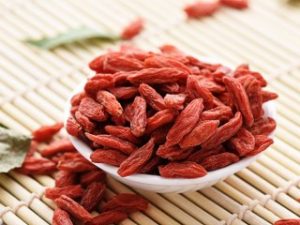
Lycium barbarum—Wolfberry (goji)
- Immunomodulation and antitumor activity by a polysaccharide–protein complex from Lycium barbarum
- Anticancer effect of Lycium barbarum polysaccharides on colon cancer cells involves G0/G1 phase arrest
- Observation of the effects of LAK/IL-2 therapy combining with Lycium barbarum polysaccharides in the treatment of 75 cancer patients
- Biological activities and potential health benefit effects of polysaccharides isolated from Lycium barbarum L.
- A review of the anticancer and immunomodulatory effects of Lycium barbarum fruit
- Therapeutic Effects of Lycium barbarum Polysaccharide (LBP) on Irradiation or Chemotherapy-Induced Myelosuppressive Mice
- Growth inhibition and cell-cycle arrest of human gastric cancer cells by Lycium barbarum polysaccharide
- Lycium barbarum polysaccharides induce apoptosis in human prostate cancer cells and inhibits prostate cancer growth in a xenograft mouse model of human prostate
- Effects of Lycium barbarum polysaccharide on tumor microenvironment T-lymphocyte subsets and dendritic cells in H22-bearing mice
- Lycium barbarum polysaccharides: Protective effects against heat-induced damage of rat testes and H2O2-induced DNA damage in mouse testicular cells
- Preparation of carotenoid extracts and nanoemulsions from Lycium barbarum L. and their effects on growth of HT-29 colon cancer cells
- Lycium Barbarum Inhibits Growth of Estrogen Receptor Positive Human Breast Cancer Cells by Favorably Altering Estradiol Metabolism
- Lycium barbarum polysaccharide stimulates proliferation of MCF-7 cells by the ERK pathway Breast cancer
- Anticancer effect of ethanol Lycium barbarum (Goji berry) extract on human breast cancer T47D cell line
- Polysaccharides derived from Lycium barbarum suppress IGF-1-induced angiogenesis via PI3K/HIF-1α/VEGF signalling pathways in MCF-7 cells The aim of this study was to elucidate possible signal transduction pathways functioning to mediate the breast cancer-suppressive effects of LBPs.
- Lycium barbarum polysaccharide inhibits the proliferation of HeLa cells by inducing apoptosis
- Lycium barbarum polysaccharides inhibit proliferation and migration of bladder cancer cell lines BIU87 by suppressing Pi3K/AKT pathway
- Synergistic immunotherapeutic effects of Lycium barbarum polysaccharide and interferon-α2b on the murine Renca renal cell carcinoma cell line in vitro and in vivo
- Effects of Lycium barbarum Polysaccharides on Apoptosis, Cellular Adhesion, and Oxidative Damage in Bone Marrow Mononuclear Cells of Mice Exposed to Ionizing Radiation Injury
- Preparation of carotenoid extracts and nanoemulsions from Lycium barbarum L. and their effects on growth of HT-29 colon cancer cells
- Lycium barbarum Polysaccharide Promotes Maturation of Dendritic Cell via Notch Signaling and Strengthens Dendritic Cell Mediated T Lymphocyte Cytotoxicity on colon cancer Cell CT26-WT
- Mechanism of Lycium barbarum polysaccharide on anti-tumor effects for experimental liver cancer in mice
- Influence of Lycium Barbarum L. Polysaccharide on Rats liver cancer Lnduced by Diethylinitrosamine
- The Effect of Lycium barbarum Polysaccharides on the Telomerase Activation and hTERT Expression on the Portability liver cancer in Mice
- [Radiosensitizing effects of Lycium barbarum polysaccharide for Lewis lung cancer].
- Inhibition the growth of human leukemia cells by Lycium barbarum polysaccharide
- Effect of Lycium barbarum polysaccharide on apoptosis of human leukemia cells
- Efficacy of Lycium barbarum polysaccharide and synergism with paclitaxel/cisplatin in ovarian cancer in mice
- Lycium barbarum polysaccharides intervene nuclear factor kappa B expression in the submandibular gland tissue of diabetic rats
- Lycium barbarum Polysaccharides Protect against Trimethyltin Chloride-Induced Apoptosis via Sonic Hedgehog and PI3K/Akt Signaling Pathways in Mouse Neuro-2a Cells
- Lower prostate cancer risk in men with elevated plasma lycopene levels: results of a prospective analysis
- Lycopene is a more potent inhibitor of human cancer cell proliferation than either α‐carotene or β‐carotene
- Lycopene interferes with cell cycle progression and insulin-like growth factor I signaling in mammary cancer cells
- Tomatoes, tomato-based products, lycopene, and cancer: review of the epidemiologic literature
- Role of antioxidant lycopene in cancer and heart disease
- Effects of lycopene supplementation in patients with localized prostate cancer
- The role of tomato products and lycopene in the prevention of prostate cancer: a meta-analysis of observational studies
- Lycopene and vitamin E interfere with autocrine/paracrine loops in the Dunning prostate cancer model
- Colorectal cancer protective effects and the dietary micronutrients folate, methionine, vitamins B6, B12, C, E, selenium, and lycopene
- Bioavailability and in vivo antioxidant properties of lycopene from tomato products and their possible role in the prevention of cancer
- A Prospective Study of Tomato Products, Lycopene, and Prostate Cancer Risk
- A Review of Epidemiologic Studies of Tomatoes, Lycopene, and Prostate Cancer
- The Role of Tomato Products and Lycopene in the Prevention of Prostate Cancer: A Meta-Analysis of Observational Studies
- Tomatoes, Lycopene, and Prostate Cancer
- Tomatoes, Lycopene, and Prostate Cancer: Progress and Promise
- Modulation of gene methylation by genistein or lycopene in breast cancer cells
- Dietary and Plasma Lycopene and the Risk of Breast Cancer
- Is lycopene beneficial to human health?
- Lycopene and Beta-carotene Induce Cell-Cycle Arrest and Apoptosis in Human Breast Cancer Cell Lines
- Gene signature of breast cancer cell lines treated with lycopene
- Lycopene phytocomplex, but not pure lycopene, is able to trigger apoptosis and improve the efficacy of photodynamic therapy in HL60 human leukemia cells
- In vitro anti-telomerase activity of novel lycopene-loaded nanospheres in the human leukemia cell line K562
- Evaluating the effect of lycopene on telomerase activity in the human leukemia cell line K562
- Serum Lycopene, Other Carotenoids, and Prostate Cancer Risk: a Nested Case-Control Study in the Prostate, Lung, Colorectal, and ovarian cancer Screening Trial
- Colorful cancer prevention: α-carotene, lycopene, and lung cancer
- Long-term Use of β-Carotene, Retinol, Lycopene, and Lutein Supplements and lung cancer Risk: Results From the VITamins And Lifestyle (VITAL) Study
- Tomato Lycopene and lung cancer Prevention: From Experimental to Human Studies
- Chemoprevention of lung cancer by lycopene
- Tobacco carcinogen induces both lung cancer and non‐alcoholic steatohepatitis and hepatocellular carcinomas in ferrets which can be attenuated by lycopene supplementation
- APO-10′-LYCOPENOIC ACID, A METABOLITE OF LYCOPENE, INHIBITS THE PROLIFERATION OF NON-SMALL CELL lung cancer CELLS
- Experimental research on the effects of lycopene on the invasion and migratory ability of human non-small cell lung cancer H520 cells
- Intracellular accumulation and metabolism of beta-carotene and lycopene in normal and non-small cell lung cancer cells
- Lycopene improves the efficiency of anti-PD-1 therapy via activating IFN signaling of lung cancer cells
- RE: “LONG-TERM USE OF β-CAROTENE, RETINOL, LYCOPENE, AND LUTEIN SUPPLEMENTS AND lung cancer RISK: RESULTS FROM THE VITAMINS AND LIFESTYLE (VITAL) STUDY”
- Long-term use of β-carotene, retinol, lycopene, and lutein supplements and lung cancer risk: Results from the VITamins and Lifestyle (VITAL) Study (American Journal of Epidemiology (2009) 169:7 (815-828))
- Lycopene inhibits growth of human colon cancer cells via suppression of the Akt signaling pathway
- Concomitant supplementation of lycopene and eicosapentaenoic acid inhibits the proliferation of human colon cancer cells
- Cancer Chemopreventive Effects of Lycopene: Suppression of MMP-7 Expression and Cell Invasion in Human colon cancer Cells
- Tomato lycopene extract supplementation decreases insulin-like growth factor-I levels in colon cancer patients
- Consumption of Lycopene Inhibits the Growth and Progression of colon cancer in a Mouse Xenograft Model
- Inhibition of colon cancer cell growth by nanoemulsion carrying gold nanoparticles and lycopene
- Concomitant consumption of lycopene and fish oil inhibits tumor growth and progression in a mouse xenograft model of colon cancer
- Effect of Lycopene on the Insulin-like Growth Factor-I Receptor Signaling Pathway in Human colon cancer HT-29 Cells
- Lycopene inhibits the proliferation and progression of human colon cancer cells in both in vitro and in vivo models
- Lycopene suppressed leptin-mediated malignant progression in human colon cancer cells
- Lycopene inhibits growth of human colon cancer cells via suppression of PI-3K/Akt signaling pathways
- Lycopene supplementation elevates circulating insulin-like growth factor–binding protein-1 and -2 concentrations in persons at greater risk of colorectal cancer
- Anti-inflammatory effect of lycopene in SW480 human colorectal cancer cells
- Lycopene Consumption and Risk of colorectal cancer: A Meta-Analysis of Observational Studies
- colorectal cancer: AN UPDATE ON THE EFFECTS OF LYCOPENE ON TUMOR PROGRESSION AND CELL PROLIFERATION
- Effects of isoflavones and lycopene on the insulin-like growth factor (IGF) system in men and women at increased colorectal cancer risk; randomized cross-over trials.
- Effects of Lycopene and Sho-saiko-to on Hepatocarcinogenesis in a Rat Model of Spontaneous liver cancer
- Study on Antioxidation Quality of Lycopene and its Effect on liver cancer H_(22) of Mice
- Meta-analysis of the association between dietary lycopene intake and ovarian cancer risk in postmenopausal women
- Novel biomolecule lycopene-reduced graphene oxide-silver nanoparticle enhances apoptotic potential of trichostatin A in human ovarian cancer cells (SKOV3)
- Lycopene Protects Against Spontaneous ovarian cancer Formation in Laying Hens
- The effects and mechanism of Lycopene on immune function of ovarian cancer rats
- Effects of lycopene on ovarian cancer cell line SKOV3 in vitro: Suppressed proliferation and enhanced apoptosis
- CORRIGENDUM: Meta-analysis of the association between dietary lycopene intake and ovarian cancer risk in postmenopausal women
- Lycopene inhibits matrix metalloproteinase-9 expression and down-regulates the binding activity of nuclear factor-kappa B and stimulatory protein-1
- Pengaruh Likopen terhadap Penurunan Aktivitas Nuclear Factor kappa Beta (NF-kB) dan Ekspresi Intracelular Cell Adhesion Molecule-1 (ICAM-1) pada Kultur HUVECs yang Dipapar Leptin (The Role Of Lycopene to Nuclear Factor Kappa Beta (NfκB) Activities and Intracellular Cell Adhesion Molecule-1 (Icam-1) Expressions on Leptin-Induced Endothelial Cell)
- Lycopene treatment of androgen-independent prostate cancer cell lines increases the level of Inhibitor kappa B-α but inhibits the adhesion and migration properties of the cells
- The Role Of Lycopene to Nuclear Factor Kappa Beta (Nf-κB) Activities and Intracellular Cell Adhesion Molecule-1 (Icam-1) Expressions on Leptin-Induced Endothelial Cell
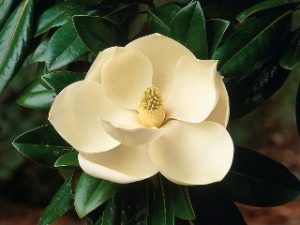
Magnolia officinalis (Chinese magnolia tree)
- Studies on inhibitors of skin tumor promotion, IX. Neolignans from Magnolia officinalis
- Honokiol, a constituent of oriental medicinal herb magnolia officinalis, inhibits growth of PC-3 xenografts in vivo in association with apoptosis induction
- Targeting apoptosis pathways in cancer with magnolol and honokiol, bioactive constituents of the bark of Magnolia officinalis
- Screening active anti‐breast cancer compounds from Cortex Magnolia officinalis by 2D LC–MS
- Honokiol: a potent chemotherapy candidate for human colorectal carcinoma
- Inhibitory effects of the aqueous extract of Magnolia officinalis on the responses of human urinary bladder cancer 5637 cells in vitro and mouse urinary bladder tumors
- Aqueous extract of Magnolia officinalis mediates proliferative capacity, p21WAF1 expression and TNF-α-induced NF-κB activity in human urinary bladder cancer 5637
- Magnolol suppresses proliferation of cultured human colon and liver cancer cells by inhibiting DNA synthesis and activating apoptosis
- Honokiol, a natural biphenyl, inhibits in vitro and in vivo growth of breast cancer through induction of apoptosis and cell cycle arrest
- Effector mechanism of magnolol‐induced apoptosis in human lung squamous carcinoma CH27 cells
- Novel histone deacetylase inhibitors derived from Magnolia officinalis significantly enhance TRAIL-induced apoptosis in non-small cell lung cancer
- Screening active anti‐breast cancer compounds from Cortex Magnolia officinalis by 2DLC–MS
- Cytotoxicity of the bisphenolic honokiol from Magnolia officinalis against multiple drug-resistant tumor cells as determined by pharmacogenomics and molecular docking
- The natural compound magnolol inhibits invasion and exhibits potential in human breast cancer therapy
- Magnolol induces apoptosis via inhibiting the EGFR/PI3K/Akt signaling pathway in human prostate cancer cells
- Growth inhibitory effects of obovatol through induction of apoptotic cell death in prostate and colon cancer by blocking of NF-κB
- Magnolol Suppresses Metastasis via Inhibition of Invasion, Migration, and Matrix Metalloproteinase-2/-9 Activities in PC-3 Human Prostate Carcinoma Cells
- Magnolol Affects Expression of IGF-1 and Associated Binding Proteins in Human Prostate Cancer Cells In Vitro
- Gold nano particles synthesized from Magnolia officinalis and anticancer activity in A549 lung cancer cells
- Acid indanone and mangiferin xanthone are strong determinants of immunosuppressive anti-tumour effects of Mangifera indica L. bark in MDA-MB231 breast cancer
- The inhibitory effects of mangiferin, a naturally occurring glucosylxanthone, in bowel carcinogenesis of male F344 rats
- Mangiferin exerts antitumor activity in breast cancer cells by regulating matrix metalloproteinases, epithelial to mesenchymal transition, and β-catenin signaling
- Effect of mangiferin on benzo (a) pyrene induced lung carcinogenesis in experimental Swiss albino mice
- Protective effects of Mangifera indica L. extract, mangiferin and selected antioxidants against TPA-induced biomolecules oxidation and peritoneal macrophage
- Combination treatment with oxaliplatin and mangiferin causes increased apoptosis and downregulation of NFκB in cancer cell lines
- Mangiferin in cancer chemoprevention and treatment: pharmacokinetics and molecular targets
- Cytoprotective Effect of Mangiferin on Benzo (a) pyrene‐Induced Lung Carcinogenesis in Swiss Albino Mice
- Anticarcinogenic effects of polyphenolics from mango (Mangifera indica) varieties
- The potential role of mangiferin in cancer treatment through its immunomodulatory, anti‐angiogenic, apoptopic, and gene regulatory effects
- Mangiferin and cancer: Mechanisms of action
- Mangiferin inhibition of proliferation and induction of apoptosis in human prostate cancer cells is correlated with downregulation of B-cell lymphoma-2 and upregulation of microRNA-182
- Mangiferin inhibits tumor necrosis factor-α-induced matrix metalloproteinase-9 expression and cellular invasion by suppressing nuclear factor-κB activity
- Mangiferin: a promising anticancer bioactive
- The potential role of mangiferin in cancer treatment through its immunomodulatory, anti‐angiogenic, apoptopic, and gene regulatory effects
- Mangiferin functionalized radioactive gold nanoparticles (MGF-198AuNPs) in prostate tumor therapy: green nanotechnology for production, in vivo tumor retention and evaluation of therapeutic efficacy
- Gallic acid indanone and mangiferin xanthone are strong determinants of immunosuppressive anti-tumour effects of Mangifera indica L. bark in MDA-MB231 breast cancer cells
- Mangiferin and Cancer: Mechanisms of Action
- in vitro Modulation of P-glycoprotein, MRP-1 and BCRP Expression by Mangiferin in Doxorubicin-Treated MCF-7 Cells Doxorubicin is an effective chemotherapeutic agents, which has been used extensively for treatment in various cancer, including breast cancer
- Mangiferin blocks proliferation and induces apoptosis of breast cancer cells via suppression of the mevalonate pathway and by proteasome inhibition
- Mangiferin induces cell cycle arrest at G2/M phase through ATR-Chk1 pathway in HL-60 leukemia cells
- Mangiferin increases Nrf2 protein stability by inhibiting its ubiquitination and degradation in human HL60 myeloid leukemia cells
- Mangiferin activates Nrf2-antioxidant response element signaling without reducing the sensitivity to etoposide of human myeloid leukemia cells in vitro
- INHIBITORY EFFECT OF MANGIFERIN ON THE PROLIFERATION OF K562 leukemia CELLS
- Effect of Mangiferin on Proliferation and Apoptosis of leukemia Cell Line HL-60
- Effect of mangiferin on the invasive ability of leukemia HL-60 cells
- [Effect of Mangiferin on Proliferation of FLT3-ITD Mutation Positive Acute Myeloid leukemia Cell MV4-11 and Its Mechanism].
- Effects of mangiferin on proliferation and apoptosis of lung cancer A549 cells
- Mangiferin fails to attenuate TGFß-induced EMT in Non-Small-Cell lung cancer
- Anti-proliferation effects and mechanisms of mangiferin on human lung cancer cell line A549
- Expression profiles of genes involved in the mouse nuclear factor-kappa B signal transduction pathway are modulated by mangiferin
- Mangiferin induces apoptosis in multiple myeloma cell lines by suppressing the activation of nuclear factor kappa B-inducing kinase
- Mangiferin, a novel nuclear factor kappa B-inducing kinase inhibitor, suppresses metastasis and tumor growth in a mouse metastatic melanoma model
- A novel PEGylated carbon nanotube conjugated mangiferin: An explorative nanomedicine for brain cancer cells
- Growth Inhibitory Effect of Mangiferin on Thyroid Cancer Cell Line TPC1
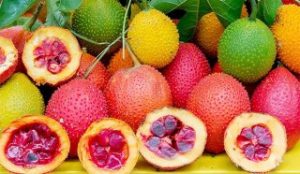
Momordica cochinchinensis Spreng
- Inhibition of tumor growth and angiogenesis by water extract of Gac fruit (Momordica cochinchinensis Spreng)
- Momordica cochinchinensis seed extracts suppress migration and invasion of human breast cancer ZR-75-30 cells via down-regulating MMP-2 and MMP-9
- Momordica cochinchinensis aril extract induced apoptosis in human MCF-7 breast cancer cells
- Cochinchina momordica seed extract induces G2/M arrest and apoptosis in human breast cancer MDA-MB-231 cells by modulating the PI3K/Akt pathway
- Cochinchina momordica seed extract induces apoptosis and cell cycle arrest in human gastric cancer cells via PARP and p53 signal pathways
- Antioxidative effect of a chymotrypsin inhibitor from Momordica cochinchinensis (Cucurbitaceae) seeds in a primary rat hepatocyte culture
- Phytochemicals and antioxidant activity of different fruit fractions (peel, pulp, aril and seed) of Thai gac (Momordica cochinchinensis Spreng)
- Immunomodulatory activity of a chymotrypsin inhibitor from Momordica cochinchinensis seeds
- Proteins with abortifacient, ribosome inactivating, immunomodulatory, antitumor and anti-AIDS activities from Cucurbitaceae plants
- Anti-tumor activity of cochinchina momordica seed extract [J]
- Antiproliferative effect of Momordica cochinchinensis seeds on human lung cancer cells and isolation of the major constituents
- Momordica cochinchinensis Spreng. seed extract suppresses breast cancer growth by inducing cell cycle arrest and apoptosis
- Inhibition of tumor growth and angiogenesis by water extract of Gac fruit (Momordica cochinchinensis Spreng)
- Cochinchina Momordica Seed Suppresses Proliferation and Metastasis in Human lung cancer Cells by Regulating Multiple Molecular Targets
- Bitter Melon (Momordica charantia) Extract Inhibits Tumorigenicity and Overcomes Cisplatin-Resistance in ovarian cancer Cells Through Targeting AMPK Signaling Cascade
- BG-4, a bioactive peptide from Momordicacharantia, promotes apoptosis in ovarian cancercells
- Chemomodulatory effect of Moringa oleifera, Lam, on hepatic carcinogen metabolising enzymes, antioxidant parameters and skin papillomagenesis in mice
- An antitumor promoter from Moringa oleifera Lam.
- Antiproliferation and induction of apoptosis by Moringa oleifera leaf extract on human cancer cells
- Moringa Oleifera aqueous leaf extract down-regulates nuclear factor-kappaB and increases cytotoxic effect of chemotherapy in pancreatic cancer cells
- The antiproliferative effect of Moringa oleifera crude aqueous leaf extract on cancerous human alveolar epithelial cells
- Soluble extract from Moringa oleifera leaves with a new anticancer activity
- Possible role of Moringa oleifera Lam. root in epithelial ovarian cancer
- Active principle from Moringa oleifera Lam leaves effective against two leukemias and a hepatocarcinoma
- Anticancer activity of Moringa oleifera mediated silver nanoparticles on human cervical carcinoma cells by apoptosis induction
- Green synthesis of NiO nanoparticles using Moringa oleifera extract and their biomedical applications: Cytotoxicity effect of nanoparticles against HT-29 cancer cells
- Moringa oleifera as an Anti-Cancer Agent against Breast and colorectal cancer Cell Lines
- Insilico studies on the enhancing effect of anti-cancer phytochemicals of Moringa oleifera on cellular prostatic acid phosphatase activity.
- Cytotoxic activity of Thai medicinal plants forcancer treatment
- Moringa oleifera Lam: Targeting Chemoprevention
- Antioxidant and anticancer activities ofMoringa oleiferaleaves
- Antiproliferative effect on breast cancer (MCF7) of Moringa oleifera seed extracts
- Phytochemicals and uses of Moringa oleifera leaves in Ugandan rural communities induced a stress response and apoptosis in human breast cancer cells.
- Suppressive Effects of Moringa oleifera Lam Pod Against Mouse Colon Carcinogenesis Induced by Azoxymethane and Dextran Sodium Sulfate induced tumors cell apoptosis by modulation effects on breast cancer through a different combination of Ras signaling pathways,
- Chemopreventive and Anti-leukemic Effects of Ethanol Extracts of Moringa oleifera Leaves on Wistar Rats Bearing Benzene Induced leukemia
- Antiproliferative Action of Moringa oleifera Lam. Root Extracts in Acute Myeloid leukemia (AML) Cell Line
- Moringa oleifera: Natural leaf extract with potential anti-cancerous effect on A549 lung cancer cells
- Antiproliferativeeffectof Moringa oleifera Lam. and Pseuderanthemum palatiferum (Nees) Radlk extracts on the colon cancer cells
- Induction of Apoptosis with Moringa oleifera Fruits in HCT116 Human colon cancer Cells Via Intrinsic Pathway
- Apoptotic activities of the extract from Moringa oleifera leaves on human HCT116 colon cancer cells
- Anti-proliferative effect of Moringa oleifera Lam (Moringaceae) leaf extract on human colon cancer HCT116 cell line
- Abstract 5439: Inhibition of growth and induction of differentiation of colon cancer cells by extracts from okra (Abelmoschus esculentus) and drumstick (Moringa oleifera)
- Cytotoxic effect of Moringa oleifera on colon cancer cell lines
- Ethanolic Extract of Moringa oleifera L. Increases Sensitivity of WiDr colon cancer Cell Line Towards 5-Fluorouracil
- Amelioration of oxidative stress through apoptosis-mediated pathway in colon cancer cells by hexane fraction of Moringa oleifera extract
- Cytotoxic effect of Moringa oleifera on colon cancer cell lines
- CYTOTOXIC AND APOPTOTIC ACTIVITIES OF ISOLATED FRACTIONS FROM MORINGA OLEIFERA LEAF EXTRACT TOWARDHUMAN HCT116 colon cancer CELLS
- Abstract A004: Developing ovarian cancer xenograft in mouse model to see FSHR-mediated anticancer effect of Moringa oleifera root extract
- Abstract A56: Alterations in female reproductive organs of cyclic rats treated with aqueous extract of moringa oleifera lam: Indication of possible role in epithelial ovarian cancer
- Cancer preventive effect of Morinda citrifolia (Noni)
- Tumor cell‐selective antiproliferative effect of the extract from Morinda citrifolia fruits
- Anti-inflammatory and Potential Cancer Chemopreventive Constituents of the Fruits of Morinda citrifolia (Noni)
- Extraction of anti-cancer damnacanthal from roots of Morinda citrifolia by subcritical water
- Apoptosis‐inducing effects of Morinda citrifolia L. and doxorubicin on the Ehrlich ascites tumor in Balb‐c mice
- Antitumour potential of a polysaccharide‐rich substance from the fruit juice of Morinda citrifolia (Noni) on sarcoma 180 ascites tumour in mice
- Inhibitory effect of anthraquinones isolated from the Noni (Morinda citrifolia) root on animal A-, B-and Y-families of DNA polymerases and human cancer cell
- Preventative and treatment effects of Morinda citrifolia as a colon cancer cell growth inhibitor
- Characterization, anti-oxidative and anti-inflammatory effects of Costa Rican noni juice (Morinda citrifolia L.)
- Induction of mitochondrial-mediated apoptosis by Morinda citrifolia (Noni) in human cervical cancer cells
- Preventative effects of morinda citrifolia on mammary breast cancer
- Formulations and methods for treating breast cancer with Morinda citrifolia and methylsulfonym
- Inhibition of angiogenic initiation and disruption of newly established human vascular networks by juice from Morinda citrifolia (noni) We also found that 10% noni juice in media was an effective inhibitor of capillary initiation in explants from human breast tumors.
- Morinda citrifolia-based formulation for inhibiting metastasis of carcinogenic cells
- The fruit juice of Morinda citrifolia (noni) downregulates HIF-1α protein expression through inhibition of PKB, ERK-1/2, JNK-1 and S6 in manganese-stimulated A549 human lung cancer cells
- Metastasized lung cancer suppression by Morinda citrifolia (Noni) leaf compared to Erlotinib via anti-inflammatory, endogenous antioxidant responses and apoptotic gene activation
- Studies on cytotoxicity of Divine Noni(Noni Garcinia cambogia mix) againsthuman liver cancer cells (HepG2 Cells)
- Damnacanthal, a noni component, exhibits antitumorigenic activity in human colorectal cancer cells
- Morinda citrifolia leaf extract ameliorated leukemia in mice model
- Epicatechin and scopoletin‐rich Morinda citrifolia leaf ameliorated leukemia via anti‐inflammatory, anti‐angiogenesis, and apoptosis pathways in vitro and in vivo
- Morinda citrifolia edible leaf extract enhanced immune response against lung cancer
- Morinda citrifolia extract inhibits proliferation of non-small human lung cancer cell line NCI-H23 via apoptosis by modulating the Bax:Bcl-2 ratio
- Elevation of p53 level in human lung cancer cell line NCI-H23 apoptosis treated by Morinda citrifolia extract
- IN VITRO AND IN VIVO ANTI-lung cancer PROPERTIES OF LEAF ETHANOLIC EXTRACT OF MORINDA CITRIFOLIA
- Anti-proliferative and Apoptosis-Inducing Effects of Morinda citrifolia L. Shoot on Breast, Liver, and colorectal cancer Cell Lines
- Morinda citrifolia enhanced colon cancer cell growth inhibitor
- Inhibition of breast tumor growth and angiogenesis by a medicinal herb: Ocimum gratissimum
- Ocimum gratissimum retards breast cancer growth and progression and is a natural inhibitor of matrix metalloproteases
- Ocimum gratissimum aqueous extract induces apoptotic signalling in lung adenocarcinoma cell A549
- Potential cancer-fighting Ocimum gratissimum (OG) leaf extracts: increased anti-proliferation activity of partially purified fractions and their spectral fingerprints
- Ocimum gratissimum aqueous extract protects H9c2 myocardiac cells from H2O2-induced cell apoptosis through Akt signalling
- Phytochemical analysis of Ocimum gratissimum by LC-ESI–MS/MS and its antioxidant and anxiolytic effects
- Anthelmintic activity of essential oil of Ocimum gratissimum Linn. and eugenol against Haemonchus contortus
- Antibacterial effects of extracts of Ocimum gratissimum and piper guineense on Escherichia coli and Staphylococcus aureus
- Safety and hypoglycaemic properties of aqueous leaf extract of Ocimum gratissimum in streptozotocin induced diabetic rats.
- Effect of aqueous extract of scent leaf (Ocimum gratissimum) on carbon tetrachloride (CCl4) induced liver damage in albino Wister rats
- Ocimum basilicum but not Ocimum gratissimum present cytotoxic effects on human breast cancer cell line MCF-7, inducing apoptosis and triggering mTOR/Akt
- Novel Target Genes Responsive to Apoptotic Activity by Ocimum gratissimum in Human Osteosarcoma Cells
- Potential cancer-fighting Ocimum gratissimum (OG) leaf extracts: increased anti-proliferation activity of partially purified fractions and their spectral fingerprints.
- Ocimum gratissimum retards breast cancer growth and progression and is a natural inhibitor of matrix metalloproteases.
- POTENTIAL CANCER FIGHTINGOCIMUMGRATISSIMUM(OG)LEAFEXTRACTS:INCREASEDANTI-PROLIFERATIONACTIVITY OFPARTIALLYPURIFIEDFRACTIONS ANDTHEIRSPECTRALFINGERPRINTS
- The Effects of Aqueous Ocimum gratissimum Leaf Extract on Some Biochemical and Hematological Parameters in Male Mice while it may cause increased particularly on the prostate/testes during prolonged administration, with little (protective) or no effects on hepatic cells.
- Fractionated Ocimum gratissimum Leaf Extract Inhibit Prostate Cancer (PC3·AR) Cells Growth by Reducing Androgen Receptor and Survivin Levels
- Ocimum basilicum but not Ocimum gratissimum present cytotoxic effects on human breast cancer cell line MCF-7, inducing apoptosis and triggering mTOR/Akt/p70S6K pathway
- Anti-Cancer and Free Radical Scavenging Activity of Some Nigerian Food Plants In vitro. The cytotoxic activity of each of the extracts was tested against human myeloid leukemia (HL-60), human hepatocellular carcinoma (SMMC-7721), human lung carcinoma (A-549), human breast adenocarcinoma (MCF-7) and colon cancer (SW480) cell lines using Cisplatin as standard.
- Caffeic Acid Induces Apoptosis in Human Cervical Cancer Cells Through the Mitochondrial Pathway
- Preliminary qualitative screening for cancer chemopreventive agents in Telfairia occidentalis Hook.f., Gnetum africanum Welw., Gongronema latifolium Benth. and Ocimum gratissimum L. from Nigeria
- Oldenlandia diffusa extracts exert antiproliferative and apoptotic effects on human breast cancer cells through ERα/Sp1‐mediated p53 activation
- Oldenlandia diffusa and Scutellaria barbata Augment Macrophage Oxidative Burst and Inhibit Tumor Growth
- Anticancer Activities of Oldenlandia diffusa
- Antitumour effects of ursolic acid isolated from Oldenlandia diffusa
- Oldenlandia diffusa induces apoptosis via activation of caspases and phosphorylation of glycogen synthase kinase 3 beta in SK-OV-3 ovarian cancer cells
- Aqueous Oldenlandia diffusa extracts inhibits colorectal cancer cells via activating AMP-activated protein kinase signalings
- Immunomodulatory activity and anti-tumor activity of Oldenlandia diffusa in vitro
- Apoptotic effect of Oldenlandia diffusa on the leukaemic cell line HL60 and human lymphocytes
- Antiinflammatory Effect of Oldenlandia diffusa and its Constituent, Hentriacontane, through Suppression of Caspase‐1 Activation in Mouse Peritoneal Macrophages
- Antitumor and phytotoxic activities of leaf methanol extract of Oldenlandia diffusa (willd.) roxb
- Oldenlandia diffusa extracts exert antiproliferative and apoptotic effects on human breast cancer cells through ERα/Sp1‐mediated p53 activation
- Oldenlandia diffusa suppresses metastatic potential through inhibiting matrix metalloproteinase-9 and intercellular adhesion molecule-1 expression via p38 and ERK1/2 MAPK pathways and induces apoptosis in human breast cancer MCF-7 cells
- Effect of Chinese Herbal Therapy on Breast Cancer Adenocarcinoma Cell Lines
- Activities of fresh juice of Scutellaria barbata and warmed water extract of Radix Sophorae Tonkinensis on anti-proliferation and apoptosis of human cancer cell lines
- The oxysterol receptor LXR inhibits proliferation of human breast cancer cells
- Complementary traditional Chinese medicine therapy improves survival in patients with metastatic prostate cancer
- An Evidence-based Perspective of Hedyotis Diffusa or Oldenlandia Diffusa (Spreading Hedyotis) for Cancer Patients
- Inhibition of colon cancer Cells by Ethanol Extract of Oldenlandia Diffusa
- Abstract LB-420: Chinese medicinal herb Oldenlandia diffusa inhibits Azoxymethane-induced aberrant crypt foci in C57BL/6 mice and modulates apoptosis in mice and in human colon cancer cells
- Ethanol Extract of Oldenlandia diffusa – an Effective Chemotherapeutic for the Treatment of colorectal cancer in Humans
- Anti-Cancer Effects of Oldenlandia diffusa extract on WiDr human colorectal adenocarcinoma cells
- Inhibitory Effect of Ethanol Extract of Oldenlandia Diffusa on colorectal cancer Angiogenesis in BALB/c Mice
- Effects of ursolic acid and oleanolic acid on human colon carcinoma cell line HCT15
- Effects of oleanolic acid and ursolic acid on inhibiting tumor growth and enhancing the recovery of hematopoietic system postirradiation in mice
- Inhibitory effects of ursolic and oleanolic ancid on skin tumor promotion by 12-O-tetradecanoylphorbol-13-acetate
- Oleanolic acid and ursolic acid induce apoptosis in four human liver cancer cell lines
- In vitro anti-breast cancer activity of ethanolic extract of Wrightia tomentosa: role of pro-apoptotic effects of oleanolic acid and urosolic acid
- Inhibition of cytochrome P450 2E1 expression by oleanolic acid: hepatoprotective effects against carbon tetrachloride-induced hepatic injury
- Proliferation-inhibiting and apoptosis-inducing effects of ursolic acid and oleanolic acid on multi-drug resistance cancer cells in vitro
- Inhibitory effect of oleanolic acid on hepatocellular carcinoma via ERK–p53-mediated cell cycle arrest and mitochondrial-dependent apoptosis
- Protective effects of ursolic acid and oleanolic acid in leukemic cells
- Anti-tumor activity of a 3-oxo derivative of oleanolic acid
- Chemoprevention of cancer
- Anti-tumor activity of a 3-oxo derivative of oleanolic acid
- Oleanolic Acid and Ursolic Acid Induce Apoptosis in HuH7 Human Hepatocellular Carcinoma Cells through a Mitochondrial-Dependent Pathway and Downregulation of XIAP
- Oleanolic acid inhibits cell survival and proliferation of prostate cancer cells in vitro and in vivo through the PI3K/Akt pathway
- Oleanane triterpenoid CDDO-Me inhibits growth and induces apoptosis in prostate cancer cells through a ROS-dependent mechanism
- Selective concomitant inhibition of mTORC1 and mTORC2 activity in estrogen receptor negative breast cancer cells by BN107 and oleanolic acid
- Synthesis of novel ring-A fused hybrids of oleanolic acid with capabilities to arrest cell cycle and induce apoptosis in breast cancer cells
- 3-O-[N-(p-fluorobenzenesulfonyl)-carbamoyl]-oleanolic acid, a semisynthetic analog of oleanolic acid, induces apoptosis in breast cancer cells
- Discovery, Optimization, and Pharmacophore Modeling of Oleanolic Acid and Analogues as Breast Cancer Cell Migration and Invasion Inhibitors Through Targeting Brk/Paxillin/Rac1 Axis
- Oleanolic acid inhibits colorectal cancer angiogenesis in vivo and in vitro via suppression of STAT3 and Hedgehog pathways
- Oleanolic Acid Inhibits colorectal cancer Angiogenesis by Blocking the VEGFR2 Signaling Pathway
- Oleanolic Acid Inhibits colorectal cancer Growth and Angiogenesis through Multiple Cellular Pathways
- A novel oleanolic acid-loaded PLGA-TPGS nanoparticle for liver cancer treatment
- Oleanolic acid-loaded PLGA-TPGS nanoparticles combined with heparin sodium-loaded PLGA-TPGS nanoparticles for enhancing chemotherapy to liver cancer
- Therapeutic effects of oleanolic acid nanoparticles combined with heparin sodium nanoparticles on liver cancer in vivo and in vitro
- Chemoprevention of Colon Carcinogenesis by Oleanolic Acid and Its Analog in Male F344 Rats and Modulation of COX-2 and Apoptosis in Human Colon HT-29 Cancer Cells
- Identification of nitric oxide-releasing derivatives of oleanolic acid as potential anti-colon cancer agents
- Characterization of oleanolic acid derivative for colon cancer targeting with positron emission tomography
- Effects of Oleanolic Acid on Proliferation and Apoptosis of Human colon cancer LoVo Cell
- Synthesis and evaluation of radiolabeled oleanolic acid for diagnosis of colon cancer using PET
- Oleanolic Acid Initiates Apoptosis in Non-Small Cell lung cancer Cell Lines and Reduces Metastasis of a B16F10 Melanoma Model In Vivo
- Preparation and antitumor evaluation of self-assembling oleanolic acid-loaded Pluronic P105/d-α-tocopheryl polyethylene glycol succinate mixed micelles for non-small-cell lung cancer treatment
- A Study on Cytotoxic and Apoptotic Potential of a Triterpenoid Saponin (3-O-
-L-Arabinosyl Oleanolic Acid) Isolated from Schumacheria castaneifolia Vahl in Human Non-Small-Cell lung cancer (NCI-H292) Cells - Cytotoxic Effect of Oleanolic Acid-Coated Magnetic Nanoparticles on Reversal of Multidrug Resistance in A549 lung cancer Cells
- Oleanolic Acid Induces Apoptosis in Human leukemia Cells through Caspase Activation and Poly(ADP‐ribose) Polymerase Cleavage
- Proapoptotic activity and ABCC1-related multidrug resistance reduction ability of semisynthetic oleanolic acid derivatives DIOXOL and HIMOXOL in human acute promyelocytic leukemia cells
- Potentiation of Acute Promyelocytic leukemia Cell Differentiation and Prevention of leukemia Development in Mice by Oleanolic Acid
- Oleanolic acid derivatives induce apoptosis in human leukemia K562 cell involved in inhibition of both Akt1 translocation and pAkt1 expression
- Effect of oleanolic acid on the proliferation of human leukemia NB4 cells in vitro
- Oleanolic acid derivative methyl 3-hydroxyimino-11-oxoolean-12-en-28-oate inhibits ABCC1/MRP1 protein function and reduces its levelin acute promyelocytic leukemia cells
- Inhibiting Effect of Oleanolic Acid on Ovarian Carcinomas IGROV1 and Breast Cancer Cell Line MDA-MB-231
- Oleanolic acid inhibits cell proliferation migration and invasion and induces SW579 thyroid cancer cell line apoptosis by targeting forkhead transcription factor A
- Oleanolic acid inhibits colorectal cancer angiogenesis in vivo and in vitro via suppression of STAT3 and Hedgehog pathways
oleuropein
- Anti-proliferative and apoptotic effects of oleuropein and hydroxytyrosol on human breast cancer MCF-7 cells
- Oleuropein and hydroxytyrosol inhibit MCF‐7 breast cancer cell proliferation interfering with ERK1/2 activation
- Protective role of oleuropein and its metabolite hydroxytyrosol on cancer
- Oleuropein Induces Anti-metastatic Effects in Breast Cancer
- Olive oil oleuropein has anti-breast cancer properties with higher efficiency on ER-negative cells
- Oleuropein Induces Apoptosis Via the p53 Pathway in Breast Cancer Cells
- Antiproliferative and antioxidant effects on breast cancer cells of oleuropein and its semisynthetic peracetylated derivatives
- Oleuropein, a Secoiridoid Derived from Olive Tree, Inhibits the Proliferation of Human Colorectal Cancer Cell Through Downregulation of HIF-1α
- Oleuropein and hydroxytyrosol activate GPER/ GPR30‐dependent pathways leading to apoptosis of ER‐negative SKBR3 breast cancer cells
- Chemopreventive effect of oleuropein in colitis‐associated colorectal cancer in c57bl/6 mice
- Oleuropein inhibits tumour growth and metastases dissemination in ovariectomised nude mice with MCF-7 human breast tumour xenografts
- Antiproliferative effect of oleuropein in prostate cell lines
- Oleuropein Mediated Targeting of Signaling Network in Cancer
- Antioxidant and antigrowth actionof peracetylated oleuropein inthyroid cancer cells
- Anticancer effects of oleuropein
- Oleuropein and Cancer Chemoprevention: The Link is Hot
- Investigation of anticancer mechanism of oleuropein via cell cycle and apoptotic pathways in SH-SY5Y neuroblastoma cells
- The Olive Biophenols Oleuropein and Hydroxytyrosol Selectively Reduce Proliferation, Influence the Cell Cycle, and Induce Apoptosis in Pancreatic Cancer Cells
- Apoptotic markers in a prostate cancer cell line: Effect of ellagic acid
- Oleuropein inhibits key pathways involved in colon cancer and supresses associated colitis colorectal cancer in C57BL/6 mice
- Abstract 4388: Anti-cancer effects of oleuropein olive leaf extract in K562 leukemia cells
- Oleuropein reduces Prdx1 expression, cell proliferation and viability in K562 human leukemia cells
- Oleuropein represses the radiation resistance of ovarian cancer by inhibiting hypoxia and microRNA-299-targetted heparanase expression
- The cytostatic and cytotoxic effects of oridonin (Rubescenin), a diterpenoid from Rabdosia rubescens, on tumor cells of different lineage
- NF-κB in human breast cancer cells MCF-7, MCF-10A, and MDA-MB-231 by ponicidin and oridonin, diterpenoids from the chinese herb Rabdosia rubescens
- Ent-kaurane diterpenoids from Rabdosia rubescens and their cytotoxic effects on human cancer cell lines
- Oridonin, a diterpenoid purified from Rabdosia rubescens, inhibits the proliferation of cells from lymphoid malignancies in association with blockade
- Rabdosia rubescens inhibits breast cancer growth and angiogenesis
- Oridonin induces growth inhibition and apoptosis of a variety of human cancer cells
- The inhibitory effect of oridonin on the growth of fifteen human cancer cell lines
- Flavonoids from Rabdosia rubescens exert anti-inflammatory and growth inhibitory effect against human leukemia HL-60 cells
- Oridonin: An active diterpenoid targeting cell cycle arrest, apoptotic and autophagic pathways for cancer therapeutics
- Effects of oridonin on proliferation of HT29 human colon carcinoma cell lines both in vitro and in vivo in mice
- Rabdosia rubescens inhibits breast cancer growth and angiogenesis
- The cytostatic and cytotoxic effects of oridonin (Rubescenin), a diterpenoid from Rabdosia rubescens, on tumor cells of different lineage
- Oridonin induces growth inhibition and apoptosis of a variety of human cancer cells
- Oridonin Induces Apoptosis, Inhibits Migration and Invasion on Highly-Metastatic Human Breast Cancer Cells
- Ponicidin, an Ent-Kaurane Diterpenoid Derived from a Constituent of the Herbal Supplement PC-SPES, Rabdosia rubescens, Induces Apoptosis by Activation of Caspase-3 and Mitochondrial Events in lung cancer Cells In Vitro
- Role of Herbal Compounds (PC-SPES) in Hormone-Refractory Prostate Cancer: Two Case Reports Rabdosia rubescens, saw palmetto, and Scutellaria), which has been used as an alternative in the treatment of prostate cancer.
- Analysis of the Interactions of Botanical Extract Combinations Against the Viability of Prostate Cancer Cell Lines
- Genomic and in vivo evidence of synergy of a herbal extract compared to its most active ingredient: Rabdosia rubescens vs. oridonin Both RRE and pure oridonin inhibited the proliferation of DU-145, PC3, LNCaP and 22Rv1 prostate cancer cells in vitro.
- Ponicidin and Oridonin Are Responsible for the Antiangiogenic Activity of Rabdosia rubescens, a Constituent of the Herbal Supplement PC SPES ponicidin (1) and oridonin (2), with significant antiangiogenic activity at subcytotoxic concentrations, suggesting that these constituents may strongly contribute to the demonstrated clinical efficacy of PC SPES as a treatment for advanced prostate cancer.
- Rabdosia rubescens Linn: green synthesis of gold nanoparticles and their anticancer effects against human lung cancer cells A549
- Cat’s whiskers tea (Orthosiphon stamineus) extract inhibits growth of colon tumor in nude mice and angiogenesis in endothelial cells via suppressing
- Optimization of cat’s whiskers tea (orthosiphon stamineus) using supercritical carbon dioxide and selective chemotherapeutic potential against prostate cancer cells
- Free radical scavenging, antimicrobial and immunomodulatory activities of Orthosiphon stamineus
- HPLC and anti-inflammatory studies of the flavonoid rich chloroform extract fraction of Orthosiphon stamineus leaves
- Marked antitumor activity of cat’s whiskers tea (Orthosiphon stamineus) extract in orthotopic model of human colon tumor in nude mice
- Antiproliferative and cytostatic effects of the natural product eupatorin on MDA-MB-468 human breast cancer cells due to CYP1-mediated metabolism
- Antiproliferative and antiangiogenic effects of flavone eupatorin, an active constituent of chloroform extract of Orthosiphon stamineus leaves
- Orthosiphon stamineus Benth. methanolic extract enhances the anti-proliferative effects of tamoxifen on human hormone dependent breast cancer.
- Antioxidant and Anti-Inflammatory Effects of Orthosiphon aristatus and Its Bioactive Compounds
- An Investigation of the Anti-Inflammatory and Analgesic Effects of Orthosiphon stamineus Leaf Extract
- Anti-proliferative activity of Vitex agnus castus methanol leaves extract on Human ductal breast epithelial tumor cell line T47D
- Medicinal Potentials Of Orthosiphon Stamineus Benth Above all, the plant has synergistic bio-enhancing ability for tamoxifen against human breast cancer.
- Marked antitumor activity of cat’s whiskers tea (Orthosiphon stamineus) extract in orthotopic model of human colon tumor in nude mice
- In vitro effects of active constituents and extracts of Orthosiphon stamineus on the activities of three major human cDNA-expressed cytochrome P450 enzymes
- A Glance on Medical Applications of Orthosiphon stamineusand Some of its Oxidative Compounds possibility to prevent the growth of cancer cell in vivofor animal experiments including those from breast, colon, prostate andlung cancers
- Abstract A54: Orthosiphon stamineus leaf extract can prevent the development of colorectal and breast cancer in vivo
- Abstract B87: Antiangiogenic and antimetastatic activities of cat’s whiskers tea (Orthosiphon stamineus) extract against colon cancer cell line
- Antitumor effects of Osthol from Cnidium monnieri: an in vitro and in vivo study
- Effects of osthole on migration and invasion in breast cancer cells
- Osthole induces G2/M arrest and apoptosis in lung cancer A549 cells by modulating PI3K/Akt pathway
- Effects of total coumarins of Cnidium monnieri on bone density and biomechanics of glucocorticoids-induced osteoporosis in rats.
- Osthole suppresses migration and invasion of A549 human lung cancer cells through inhibition of matrix metalloproteinase-2 and matrix metallopeptidase-9
- Discovery of novel osthole derivatives as potential anti-breast cancer treatment
- Osthole exhibits anti-cancer property in rat glioma cells through inhibiting PI3K/Akt and MAPK signaling pathways
- Osthole inhibits proliferation of human breast cancer cells by inducing cell cycle arrest and apoptosis
- Osthole suppresses hepatocyte growth factor (HGF)-induced epithelial-mesenchymal transition via repression of the c-Met/Akt/mTOR pathway in human breast cancer
- Osthole suppresses fatty acid synthase expression in HER2-overexpressing breast cancer cells through modulating Akt/mTOR pathway
- Osthole inhibits bone metastasis of breast cancer
- Potential Anticancer Properties of Osthol: A Comprehensive Mechanistic Review
- [Inhibitory effects of osthole, psoralen and aconitine on invasive activities of breast cancer MDA-MB-231BO cell line and the mechanisms].
- Click chemistry inspired synthesis and bioevaluation of novel triazolyl derivatives of osthol as potent cytotoxic agents
- Osthol, a Coumarin Isolated from Common Cnidium Fruit, Enhances the Differentiation and Maturation of Osteoblasts in vitro
- Killing cancer with platycodin D through multiple mechanisms
- Soy Consumption and the Risk of Prostate Cancer: An Updated Systematic Review and Meta-Analysis
- Inhibit effect on growth of human prostate cancer DU145 cells by osthole and its mechanism in vitro
- Comparative Evaluation of Cytotoxic and Apoptogenic Effects of Several Coumarins on Human Cancer Cell Lines: Osthole Induces Apoptosis in p53-Deficient H1299 Cells
- Osthole inhibited TGF β-induced epithelial–mesenchymal transition (EMT) by suppressing NF-κB mediated Snail activation in lung cancer A549 cell
- Synergistic effect of coumarine derivatives imperatorin and osthol on 5-fluorourasil cytotoxicity on nonsmall cell lung cancer cells
- EXPERIMENTAL STUDIES ON THE ANITUMOR EFFECT OF OYSTER EXTRACT [J]
- Pleurotus ostreatus inhibits proliferation of human breast and colon cancer cells through p53-dependent as well as p53-independent pathway
- Oyster (Crassostrea gigas) hydrolysates produced on a plant scale have antitumor activity and immunostimulating effects in BALB/c mice
- Antioxidant activity and anticancer effect of bioactive peptide from enzymatic hydrolysate of oyster (Saccostrea cucullata)
- Experimental studies on the anitumor effect of oyster extract
- Antioxidant Peptides from Oyster (Saccostrea cucullata) Hydrolysate and the Anticancer Activity of Hydrolysate on Human Colon Cancer Cell
- Protective effects of oyster extract against hepatic tissue injury in alcoholic liver diseases
- Effect of Dietary Oyster Extract on the p-aminophenol-induced Nephrotoxicity in Rats
- Expression of Caspase-3 and Bcl-2 protein in epithelial ovarian tumor and relation of the expression with cell apoptosis and proliferation
- Pleurotus ostreatus inhibits colitis-related colon carcinogenesis in mice
- Augmentation of Cytolytic Activity in Murine Natural Killer Cells and Inhibition of Tumor Growth by the Ethanol Fraction of Oyster Extract
- Inhibition of 4NQO-induced oral carcinogenesis by dietary oyster shell calcium
- Laser-assisted Bipolar Transurethral Resection of the Prostate With the Oyster Procedure for Patients With Prostate Glands Larger Than 80 mL
- Pleurotus ostreatus inhibits proliferation of human breast and colon cancer cells through p53-dependent as well as p53-independent pathway
- Pleurotus ostreatus: an oyster mushroom with nutritional and medicinal properties
- Anticancer effect of lipids partially purified from Pacific oyster, Crassostrea gigas on PC3 cells
- Bioluminescence-Based Detection of MicroRNA, miR21 in Breast Cancer Cells
- P388 leukemia
- Two homologues of inhibitor of NF-kappa B (IκB) are involved in the immune defense of the Pacific oyster, Crassostrea gigas
- CgIκB3, the third novel inhibitor of NF-kappa B (IκB) protein, is involved in the immune defense of the Pacific oyster, Crassostrea gigas
- Consumer Acceptability and Descriptive Characterization of Fresh and Dried King Oyster (Pleurotus eryngii) and Hedgehog (Hydnum repandum) Mushrooms
- Molecular Characterization of the Hedgehog Signaling Pathway and Its Necessary Function on Larval Myogenesis in the Pacific Oyster Crassostrea gigas
- Antiproliferative effects of different plant parts of Panax notoginseng on SW480 human colorectal cancer cells
- Chemopreventive effects of Panax notoginseng and its major constituents on SW480 human colorectal cancer cells
- Effects of steaming the root of Panax notoginseng on chemical composition and anticancer activities
- Sensitization of a tumor, but not normal tissue, to the cytotoxic effect of ionizing radiation using Panax notoginseng extract
- Anti-proliferative effects of raw and steamed extracts of Panax notoginseng and its ginsenoside constituents on human liver cancer cells
- Anti-carcinogenic activity of the roots of Panax notoginseng. II
- Ginsenoside Rd from Panax notoginseng is cytotoxic towards HeLa cancer cells and induces apoptosis
- Panax notoginseng saponins (PNS) inhibits breast cancer metastasis
- Effects of Panax ginseng on tumor necrosis factor-α-mediated inflammation: a mini-review
- Induction of apoptosis in human lung carcinoma cells by the water extract of Panax notoginseng is associated with the activation of caspase-3 through downregulation
- Reversal Effect of Panaxnotoginseng Saponins on Multidrug Resistance Breast Cancer Cell MCF/ADM
- Protective Effect of Saponins from Panax notoginseng against Doxorubicin-Induced Cardiotoxicity in Mice
- Panax Notoginseng Saponins Enhances the Cytotoxicity of Cisplatin via Increasing Gap Junction Intercellular Communication
- Estrogen-Like Activity of Ginsenoside Rg1 Derived from Panax notoginseng The present study is aimed to determine whether ginsenoside Rg1 can act like an estrogen analog in stimulating human breast cancer cell growth as well as in the activation of estrogen response element
- Antiproliferative effects of different plant parts of Panax notoginseng on SW480 human colorectal cancer cells
- Notoginseng enhances anti-cancer effect of 5-fluorouracil on human colorectal cancer cells
- Anticancer activity of Panax notoginseng extract 20(S)‐25‐OCH3‐PPD: Targetting β‐catenin signalling
- Panax notoginseng saponins improves the malignancy of chronic myeloid leukemia by inducing cell apoptosis and autophagy
- Panax notoginseng saponins attenuate lung cancer growth in part through modulating the level of Met/miR-222 axis
- Anticancer activity of trilinolein from Panax notoginseng in human non-small cell lung cancer cells A549
- Study on the Inhibition of Panax Notoginseng Saponins on Cell HCCLM3 of liver cancer Metastasis
- 185: Regulation of Panax notoginseng extract on metastasis in human colon cancer cells
- Inhibition of human colorectal cancer metastasis by notoginsenoside R1, an important compound from Panax notoginseng
- Effects of Panax notoginseng on the Metastasis of Human colorectal cancer Cells
- Targeting beta-catenin signaling in colorectal cancer: anti-cancer bioactivities of 20(S)-25-OCH3-PPD, a natural product from Panax notoginseng
- Panax Notoginseng flower saponins (PNFS) inhibit LPS-stimulated NO overproduction and iNOS gene overexpression via the suppression of TLR4-mediated MAPK/NF-kappa B signaling pathways in RAW264.7 macrophages
- Effects of panax notoginseng saponins on the expression of nuclear factor kappa B and interleukin-1β in lung tissue of paraquat poisoned rats
- Ethyl acetate extract of Patrinia scabiosaefolia downregulates anti-apoptotic Bcl-2/Bcl-XL expression, and induces apoptosis in human breast carcinoma MCF-7 cells
- Antitumor effects of saponin extract from Patrinia villosa (Thunb.) Juss on mice bearing U14 cervical cancer
- Patrinia scabiosaefolia inhibits colorectal cancer growth through suppression of tumor angiogenesis
- Patrinia scabiosaefolia induces mitochondrial-dependent apoptosis in a mouse model of colorectal cancer
- Patrinia scabiosaefolia inhibits the proliferation of colorectal cancer in vitro and in vivo via G1/S cell cycle arrest
- Experimental research on the function of anti-cancer in the saponins from Patrinia scabiosaefolia Fisch [J]
- Metabolomic study on the preventive effect of patrinia scabiosaefolia fisch on multipathogen induced pelvic inflammatory disease in rats
- Anti-inflammatory effects of methanol extract of Patrinia scabiosaefolia in mice with ulcerative colitis
- Patrinia scabiosaefolia extract suppresses proliferation and promotes apoptosis by inhibiting the STAT3 pathway in human multiple myeloma cells
- Chemical Composition, Anticancer, Anti-neuroinflammatory, and Antioxidant Activities of the Essential Oil of Patrinia scabiosaefolia
- Ethanol extract of Patrinia scabiosaefolia induces the death of human renal cell carcinoma 786-O cells via SIRT-1 and mTOR signaling-mediated metabolic
- Patrinia scabiosaefolia extract suppresses proliferation and promotes apoptosis by inhibiting the STAT3 pathway in human multiple myeloma cells
- Antitumor effects of saponin extract from Patrinia villosa (Thunb.) Juss on mice bearing U14 cervical cancer
- Preliminary evaluation of antitumor effect and induction apoptosis in PC-3 cells of extract from Patrinia heterophylla
- Giganteaside D induces ROS-mediated apoptosis in human hepatocellular carcinoma cells through the MAPK pathway giganteaside D (GD), an oleanolic acid saponin from P. scabiosaefolia, on the growth and apoptosis of HCC cells.
- The Role of Traditional Chinese Herbal Medicines in Cancer Therapy – from TCM Theory to Mechanistic Insights With regard to advanced breast cancer, the herbal preparation Shenqi Fuzheng Injection (SFI), was demonstrated to alleviate bone marrow inhibition and cellular immunity suppression caused by chemotherapy, and to relieve clinical symptoms, raise the quality of life and prolong survival time compared to patients receiving only chemotherapy
- Ursolic acid inhibits colorectal cancer angiogenesis through suppression of multiple signaling pathways
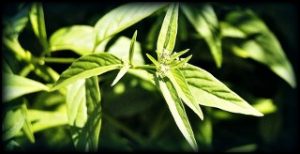
Pfaffia paniculata —Brazilian Ginseng (Suma)
- Effect of Pfaffia paniculata (Brazilian ginseng) on the Ehrlich tumor in its ascitic form
- Cytotoxic effects of butanolic extract from Pfaffia paniculata (Brazilian Ginseng) on cultured human breast cancer cell line MCF-7
- Effects of oral administration of Pfaffia paniculata (Brazilian ginseng) on incidence of spontaneous leukemia in AKR/J mice.
- Effects of Pfaffia paniculata (Brazilian ginseng) extract on macrophage activity
- Inhibitory effects of Pfaffia paniculata (Brazilian ginseng) on preneoplastic and neoplastic lesions in a mouse hepatocarcinogenesis model
- Pfaffia paniculata (Brazilian ginseng) methanolic extract reduces angiogenesis in mice
- Pfaffia paniculata (Brazilian ginseng) roots decrease proliferation and increase apoptosis but do not affect cell communication in murine hepatocarcinogenesis
- Brazilian Ginseng extraction via LPSE and SFE: global yields, extraction kinetics, chemical composition and antioxidant activity
- Effect of Brazilian, Indian, Siberian, Asian, and North American ginseng on serum digoxin measurement by immunoassays and binding of digoxin-like immunoreactive
- Pfaffosides and nortriterpenoid saponins from Pfaffia paniculata
- In vivo antimutagenic activity of the medicinal plants Pfaffia glomerata (Brazilian ginseng) and Ginkgo biloba
- Inhibition of ascitic ehrlich tumor cell growth by intraperitoneal injection of Pfaffia paniculata (Brazilian ginseng) butanolic residue
- Anti-breast Cancer Agents Derived from Plants An Amazon shrub Suma (Pfaffia paniculata), also nicknamed Brazilian ginseng and “para tudo” (“for everything”), is used in folk medicine as tonic and assures resistance to stress.
- Taraxasterol andb-sitosterol: new naturally compoundswith chemoprotective/chemopreventive effects
- Effects of oral administration of Pfaffia paniculata (Brazilian ginseng) on incidence of spontaneous leukemia in AKR/J mice.
- The inhibitory effect of polysaccharides isolated from Phellinus linteus on tumor growth and metastasis
- Antitumor action of some basidiomycetes, especially Phellinus linteus
- Acidic polysaccharide isolated from Phellinus linteus enhances through the up-regulation of nitric oxide and tumor necrosis factor-α from peritoneal macrophages
- Protein-bound polysaccharide from Phellinus linteus induces G2/M phase arrest and apoptosis in SW480 human colon cancer cells
- Hispolon from Phellinus linteus has antiproliferative effects via MDM2-recruited ERK1/2 activity in breast and bladder cancer cells
- Anti-tumor effects of proteoglycan from Phellinus linteus by immunomodulating and inhibiting Reg IV/EGFR/Akt signaling pathway in colorectal carcinoma
- The apoptosis effect of hispolon from Phellinus linteus (Berkeley & Curtis) Teng on human epidermoid KB cells
- Phellinus linteus suppresses growth, angiogenesis and invasive behaviour of breast cancer cells through the inhibition of AKT signalling
- Proteoglycan isolated from Phellinus linteus inhibits tumor growth through mechanisms leading to an activation of CD11c+ CD8+ DC and type I helper T cell
- Phellinus linteus activates different pathways to induce apoptosis in prostate cancer cells
- Medicinal mushroom Phellinus linteus as an alternative cancer therapy (Review)
- Phellinus linteus sensitises apoptosis induced by doxorubicin in prostate cancer
- Protein-bound polysaccharide from Phellinus linteus inhibits tumor growth, invasion, and angiogenesis and alters Wnt/β-catenin in SW480 human colon cancer cells
- Acidic polysaccharide from Phellinus linteus inhibits melanoma cell metastasis by blocking cell adhesion and invasion
- Phellinus Linteus Extract Sensitizes Advanced Prostate Cancer Cells to Apoptosis in Athymic Nude Mice
- Dramatic Remission of Hormone Refractory Prostate Cancer Achieved with Extract of the Mushroom, Phellinus linteus
- Orally administered mycelial culture of Phellinus linteus exhibits antitumor effects in hepatoma cell-bearing mice
- The ethyl acetate extract of PGP (Phellinus linteus grown on Panax ginseng) suppresses B16F10 melanoma cell proliferation through inducing cellular differentiation and apoptosis
- Modulation of lung cancer growth arrest and apoptosis by Phellinus Linteus
- The anti-tumor effect of Phellinus Linteus and Coriolus Versicolor Capsules on spontaneous lung metastasis model mice of lewis lung cancer
- Antitumor Effects and Immunomodulating Activities of Phellinus linteus Extract in a CT-26 Cell-Injected colon cancer Mouse Model
- Phellinus linteus grown on germinated brown rice Suppress metastasis and Induce Apoptosis of colon cancer Cells by suppressing NF-κB and Wnt/β-catenin Signaling Pathways
- A lethal synergy induced by phellinus linteus and camptothecin11 in colon cancer cells
- Phellinus linteus Grown on Germinated Brown Rice Increases Cetuximab Sensitivity of KRAS-Mutated colon cancer
- 1031 POSTER Protein-bound Polysaccharide From Phellinus Linteus Inhibits Tumour Growth, Invasion, and Angiogenesis Through Inhibition of Wnt/β-catenin Signaling in SW480 Human colon cancer Cells
- STUDY OF THE LETHAL SYNERGY OF PHELLINUS LINTEUSAND CPT11 IN colon cancer
- Abstract 5646: Protein-bound polysaccharide from Phellinus linteus inhibits tumor growth, invasion and angiogenesis of SW480 human colon cancer cells by modulating Wnt/b-catenin signaling
- Corrigendum to ‘Phellinus linteus grown on germinated brown rice suppress metas
- Extracts of Medicinal Mushrooms Agaricus bisporus and Phellinus linteus Induce Proapoptotic Effects in the Human leukemia Cell Line K562
- Effect of Phellinus linteus on Differentiation and Cell Proliferation in Human leukemia HL-60 cells
- C-phycocyanin: a biliprotein with antioxidant, anti-inflammatory and neuroprotective effects
- Inhibitory effect of phycocyanin from Spirulina platensis on the growth of human leukemia K562 cells
- Anti-cancer effects of polysaccharide and phycocyanin from Porphyra yezoensis
- The synergistic antitumor effects of all-trans retinoic acid and C-phycocyanin on the lung cancer A549 cells in vitro and in vivo
- Effects of CD59 on antitumoral activities of phycocyanin from Spirulina platensis
- THE EXPERIMENTAL STUDY OF APPLICATION OF PHYCOCYANIN IN CANCER ALSER THERAPY [J]
- Phycocyanin-mediated apoptosis in AK-5 tumor cells involves down-regulation of Bcl-2 and generation of ROS
- A study of pervasion character and PDT effect of phycocyanin subunits on cancer cell treatment
- Molecular mechanism of anti-cancer activity of phycocyanin in triple-negative breast cancer cells
- Antioxidant and anti-inflammatory properties of C-phycocyanin from blue-green algae
- Phycocyanin Induces Apoptosis and Enhances the Effect of Topotecan on Prostate Cell Line LNCaP
- C-Phycocyanin, a selective cyclooxygenase-2 inhibitor, induces apoptosis in lipopolysaccharide-stimulated RAW 264.7 macrophages
- C-Phycocyanin inhibits MDR1 through reactive oxygen species and cyclooxygenase-2 mediated pathways in human hepatocellular carcinoma cell line
- Antitumor activity of C-phycocyanin from Arthronema africanum (Cyanophyceae)
- Molecular mechanism of anti-cancer activity of phycocyanin in triple-negative breast cancer cells
- In Vitro Photodynamic Effect of Phycocyanin against Breast Cancer Cells
- Bio-fabrication of silver nanoparticles by phycocyanin, characterization, in vitro anticancer activity against breast cancer cell line and in vivo cytotxicity
- Apoptotic mechanism of MCF-7 breast cells in vivo and in vitro induced by photodynamic therapy with C-phycocyanin
- Molecular mechanisms in C-Phycocyanin induced apoptosis in human chronic myeloid leukemia cell line-K562
- Supercritical fluid extraction of phycocyanin and investigation of cytotoxicity on human lung cancer cells
- Study of the Effects of Betaine and/or C-Phycocyanin on the Growth of lung cancer A549 Cells In Vitro and In Vivo
- The In Vitro Anti-Tumor Activity of Phycocyanin against Non-Small Cell lung cancer
- Transcriptome Analysis of Phycocyanin-Mediated Inhibitory Functions on Non-Small Cell lung cancer A549 Cell Growth
- Abstract A2-27: Effects of C-Phycocyanin in combination with anticancer drugs in lung cancer implanted mice
- Effect of betaine, C-phycocyanin or physical activity on tumour growth of lung cancer in rats
- Abstract 5318: Effect of C-phycocyanin on the anticancer properties of taxol and topotecan in lung cancer implanted athymic nude mice
- Phycocyanin Exerts Anti-Proliferative Effects through Down-Regulating TIRAP/NF-κB Activity in Human Non-Small Cell lung cancer Cells
- C-Phycocyanin Suppresses the In Vitro Proliferation and Migration of Non-Small-Cell lung cancer Cells through Reduction of RIPK1/NF-κB Activity
- INHIBITION ACTIVITY OF PHYCOCYANIN IMMOBILIZATION BIOMATERIAL ON PROLIFERATION OF liver cancer CELLS 7402
- INHIBITION ACTIVITY OF SE – CONTAINING PHYCOCYANIN IMMOBILIZATION BIOMATERIAL ON PROLIFERATION OF liver cancer CELL 7402
- Targeting angiogenic pathway for chemoprevention of experimental colon cancer using C-phycocyanin as cyclooxygenase-2 inhibitor
- Targeted delivery of phycocyanin for the prevention of colon cancer using electrospun fibers
- Nuclear factor-kappa B and JNK mediate macrophage polarization shift induced by C-phycocyanin
- Packaging cordycepin phycocyanin micelles for the inhibition of brain cancer
- Anti-tumor and anti-angiogenic effects of Phyllanthus urinaria in mice bearing Lewis lung carcinoma
- Anti-oxidant and inflammatory mediator’s growth inhibitory effects of compounds isolated from Phyllanthus urinaria
- Anti-cancer effects of Phyllanthus urinaria and relevant mechanisms
- Phyllanthus urinaria triggers the apoptosis and Bcl-2 down-regulation in Lewis lung carcinoma cells
- Aqueous Extract of Phyllanthus urinaria Induces Apoptosis in Human Cancer Cells
- Antimetastatic effects of Phyllanthus on human lung (A549) and breast (MCF-7) cancer cell lines
- Phyllanthus urinaria increases apoptosis and reduces telomerase activity in human nasopharyngeal carcinoma cells
- Phyllanthus urinaria suppresses human osteosarcoma cell invasion and migration by transcriptionally inhibiting u-PA via ERK and Akt signaling pathways
- Phyllanthus spp. induces selective growth inhibition of PC-3 and MeWo human cancer cells through modulation of cell cycle and induction of apoptosis
- Antimetastatic Potentials of Phyllanthus urinaria L on A549 and Lewis Lung Carcinoma Cells via Repression of Matrix-Degrading Proteases
- Phyllanthus Suppresses Prostate Cancer Cell, PC-3, Proliferation and Induces Apoptosis through Multiple Signalling Pathways (MAPKs, PI3K/Akt, NF
B, and Hypoxia) - Suppression of ERK1/2 and hypoxia pathways by four Phyllanthus species inhibits metastasis of human breast cancer cells
- Geraniin, a typical ellagitannin isolated from Phyllanthus urinaria Linn, Geraniin induces apoptosis of human breast cancer cells MCF-7 via ROS-mediated stimulation of p38 MAPK
- Antimetastatic Potentials of Phyllanthus urinaria L on A549 and Lewis Lung Carcinoma Cells via Repression of Matrix-Degrading Proteases
- Effect of extracts from Phyllanthus watsonii Airy Shaw on cell apoptosis in cultured human breast cancer MCF-7 cells
- Phyllanthus spp. Induces Selective Growth Inhibition of PC-3 and MeWo Human Cancer Cells through Modulation of Cell Cycle and Induction of Apoptosis
- Phyllanthus spp. Exerts Anti-Angiogenic and Anti-Metastatic Effects Through Inhibition on Matrix Metalloproteinase Enzymes
- Evaluation of Phyllanthus for its anti-cancer properties
- In-vitro Inhibitory Effect of Phyllanthus Urinaria L Compound on Proliferation of Human liver cancer Cell HePG_2 and Its Apoptosis Induction
- Anti-tumor and immunomodulating effects of Pleurotus ostreatus mycelia-derived proteoglycans
- An aqueous polysaccharide extract from the edible mushroom Pleurotus ostreatus induces anti-proliferative and pro-apoptotic effects on HT-29 colon cancer cells
- Effects of Lentinus Edodes, Grifola Frondosa and Pleurotus Ostreatus Administration on Cancer Outbreak, and Activities of Macrophages and Lymphocytes in Mice
- Pleurotus ostreatus inhibits proliferation of human breast and colon cancer cells through p53-dependent as well as p53-independent pathway
- Proliferating cell nuclear antigen and p53 protein in chemically induced colon cancer in rats fed corncob fiber treated with the fungus Pleurotus ostreatus.
- Cytotoxic Effect of Oyster Mushroom Pleurotus ostreatus on Human Androgen-Independent Prostate Cancer PC-3 Cells
- Effect of oyster mushroom (Pleurotus ostreatus) on pathological changes in dimethylhydrazine-induced rat colon cancer.
- Anti-cancer effects of protein extracts from Calvatia lilacina, Pleurotus ostreatus and Volvariella volvacea
- Application of DNA from mushroom Pleurotus ostreatus for cancer biotherapy: a pilot study
- Anti-tumor and macrophage activation induced by alkali-extracted polysaccharide from Pleurotus ostreatus
- Antioxidant and antitumor effects of polysaccharides from the fungus Pleurotus abalonus
- ROS-Dependent Mitochondria Molecular Mechanisms Underlying Antitumor Activity of Pleurotus abalonus Acidic Polysaccharides in Human Breast Cancer MCF-7 Cells
- Biosynthesis and characterization of silver nanoparticles produced by Pleurotus ostreatus and their anticandidal and anticancer activities
- Effect of processing on the content and biological activity of polysaccharides from Pleurotus ostreatus mushroom The antioxidant potential was decreased by the processing. Similarly, antiproliferative activity of WSP towards human breast cell lines (MCF-7 and T-47D) was lower due to the processing.
- Commonly consumed and specialty dietary mushrooms reduce cellular proliferation in MCF-7 human breast cancer cells Pleurotus ostreatus
- Anti-invasive and antiproliferative effects of Pleurotus ostreatus extract on acute leukemia cell lines
- Role of apoptosis, proliferating cell nuclear antigen and p53 protein in chemically induced colon cancer in rats fed corncob fiber treated with the fungus Pleurotus ostreatus.
- Effect of oyster mushroom (Pleurotus ostreatus) on pathological changes in dimethylhydrazine-induced rat colon cancer.
- Pleurotus ostreatus inhibits proliferation and modulates expression of cell cycle regulatory proteins in human breast and colon cancer cells
- Consumer Acceptability and Descriptive Characterization of Fresh and Dried King Oyster (Pleurotus eryngii) and Hedgehog (Hydnum repandum) Mushrooms
- Extract of Pleurotus pulmonarius suppresses liver cancer development and progression through inhibition of VEGF-induced PI3K/AKT signaling pathway
- Anti-inflammatory and analgesic properties in a rodent model of a (1→ 3),(1→ 6)-linked β-glucan isolated from Pleurotus pulmonarius
- Water Extract from Pleurotus pulmonarius with Antioxidant Activity Exerts In Vivo Chemoprophylaxis and Chemosensitization for Liver Cancer
- Antioxidant, Anti-inflammatory, and Antitumor Activities of Culinary-Medicinal Mushroom Pleurotus pufmonanus (Fr.) Quel. (Agaricomycetideae)
- Indian medicinal mushrooms as a source of antioxidant and antitumor agents
- Antinociceptive effects of (1→ 3),(1→ 6)-linked β-glucan isolated from Pleurotus pulmonarius in models of acute and neuropathic pain in mice
- Chemical characterization, antiproliferative and antiadhesive properties of polysaccharides extracted from Pleurotus pulmonarius mycelium and fruiting bodies
- Orally administered glucans from the edible mushroom Pleurotus pulmonarius reduce acute inflammation in dextran sulfate sodium-induced experimental colitis
- Glucans from the edible mushroom Pleurotus pulmonarius inhibit colitis-associated colon carcinogenesis in mice
- Anti-leukemic and immunomodulatory effects of fungal metabolites of Pleurotus pulmonarius
- Effectiveness of immunotherapies from oyster mushroom (Pleurotus species) in the management of immunocompromised patients Polysaccharides from hot water extract of P. geesteranus showed significant cytotoxicity in human breast cancer cell line MCF-7[70].
- Abstract 5643A: Pleurotus pulmonarius extract suppresses liver cancer development and progression through VEGF-mediated autocrine regulation of PI3K/AKT pathway
- Plumbagin from Plumbago Zeylanica L induces apoptosis in human non-small cell lung cancer cell lines through NF-κB inactivation
- Antitumor activity of different organic solvents extracts and plumbagin from plumbago zeylanica L. on EMT-6 breast cancer and transplanting S180 in vivo
- Apoptosis inducing effect of plumbagin on colonic cancer cells depends on expression of COX-2
- Antiinflammatory activity of Phyllanthus emblica, Plumbago zeylanica and Cyperus rotundus in acute models of inflammation
- Plumbagin, a medicinal plant (lumbago zeylanica)‐derived 1, 4‐naphthoquinone, inhibits growth and metastasis of human prostate cancer
- Plumbagin-induced apoptosis in human prostate cancer cells is associated with modulation of cellular redox status and generation of reactive oxygen species
- Plumbagin, a medicinal plant–derived naphthoquinone, is a novel inhibitor of the growth and invasion of hormone-refractory prostate cancer
- Plumbagin‐induced apoptosis of human breast cancer cells is mediated by inactivation of NF‐κB and Bcl‐2
- The Antitumor Activity of Different Solution Extracts from Plumbago Zeylanica L. in Vitro
- Effects of plumbagin on the human breast cancer cell mda-mb-231 in vitro
- Plumbagin (5-hydroxy-2-methyl-1,4-naphthoquinone), isolated from Plumbago zeylanica , inhibits ultraviolet radiation-induced development of squamous cell carcinomas
- Plumbagin, a medicinal plant (lumbago zeylanica)‐derived 1,4‐naphthoquinone, inhibits growth and metastasis of human prostate cancer PC‐3M‐luciferase cells in an orthotopic xenograft mouse model
- A comprehensive review on PlumbagozeylanicaLinn studied ainhibitory effect of plumbagin on growth and invasion of hormone in refractory prostate cancer.
- Plumbagin inhibits prostate cancer development in TRAMP mice via targeting PKCε, Stat3 and neuroendocrine markers
- Plumbagin Nanoparticles Induce Dose and pH Dependent Toxicity on Prostate Cancer Cells.
- 3β-Hydroxylup-20(29)-ene-27,28-dioic acid dimethyl ester, a novel natural product from Plumbago zeylanica inhibits the proliferation and migration of MDA-MB-231 cells
- Plumbagin shows anti-cancer activity in human breast cancer cells by the upregulation of p53 and p21 and suppression of G1 cell cycle regulators.
- Antitumor activity of different organic solvents extracts and plumbagin from plumbago zeylanica L. on EMT-6 breast cancer and transplanting S180 in vivo
- Plumbagin, Isolated from Plumbago zeylanica, Induces Cell Death through Apoptosis in Human Pancreatic Cancer Cells
- Plumbago zeylanica Extract Inhibits Cyclin D1, NF-κß and Induces Apoptosis in Oral Cancer Cells

Podophyllotoxin (Podophyllyum emodi)
- Antitumor activity of a novel podophyllotoxin derivative (TOP-53) against lung cancer and lung metastatic cancer
- Analysis of the inhibitory effects of VP-16-213 (etoposide) and podophyllotoxin on thymidine transport and metabolism in Ehrlich ascites tumor cells in vitro
- The in vitro and in vivo anti-tumor effect of layered double hydroxides nanoparticles as delivery for podophyllotoxin
- Podophyllotoxin acetate triggers anticancer effects against non-small cell lung cancer cells by promoting cell death via cell cycle arrest, ER stress
- Podophyllotoxin analogs: effects on DNA topoisomerase II, tubulin polymerization, human tumor KB cells, and their VP-16-resistant variants
- Cytotoxicity of in vitro produced podophyllotoxin from podophyllum hexandrum on human cancer cell line
- Activity of a new glycosidic lignan derivative (VP 16-213) related to podophyllotoxin in experimental tumors
- Effect of alpha-peltatin, beta-peltatin, and podophyllotoxin on lymphomas and other transplanted tumors.
- Preparation, characterization, and anti-tumor property of podophyllotoxin-loaded solid lipid nanoparticles
- Podophyllotoxin derivatives: current synthetic approaches for new anticancer agents
- A polypeptide based podophyllotoxin conjugate for the treatment of multi drug resistant breast cancer with enhanced efficiency and minimal toxicity
- Novel D-ring analogues of podophyllotoxin as potent anti-cancer agents
- Differential regulation of mitogen-activated protein kinases by microtubule-binding agents in human breast cancer cells
- Synthesis and anticancer activities of fatty acid analogs of podophyllotoxin
- Lignans from Dysosma versipellis with Inhibitory Effects on Prostate Cancer Cell Lines
- 4β-amidotriazole linked podophyllotoxin congeners: DNA topoisomerase-IIα inhibition and potential anticancer agents for prostate cancer
- Investigation of podophyllotoxin esters as potential anticancer agents: Synthesis, biological studies and tubulin inhibition properties
- Adva-27a, a Novel Podophyllotoxin Derivative Found to Be Effective against Multidrug Resistant Human Cancer Cells
- One-pot synthesis of podophyllotoxin–thiourea congeners by employing NH2SO3H/NaI: Anticancer activity, DNA topoisomerase-II inhibition, and apoptosis inducing agents
- A Synthetic Podophyllotoxin Derivative Exerts Anti-Cancer Effects by Inducing Mitotic Arrest and Pro-Apoptotic ER Stress in lung cancer Preclinical Models
- Γ-Ionizing radiation-induced activation of the EGFR–p38/ERK–STAT3/CREB-1–EMT pathway promotes the migration/invasion of non-small cell lung cancer cells and is inhibited by podophyllotoxin acetate
- Semi-synthesis and anti-lung cancer activity evaluation of aryl dihydrothiazol acyl podophyllotoxin ester derivatives
- Chemosensitizing effect of podophyllotoxin acetate on topoisomerase inhibitors leads to synergistic enhancement of lung cancer cell apoptosis
- [In vitro comparison of podophyllotoxin analogues; etoposide, teniposide and NK 611 using human lung cancer cell lines].
- Novel hybrids of podophyllotoxin and formononetin inhibit the growth, migration and invasion of lung cancer cells
- Abstract 3197: Beta-Apopicropodophyllin, a derivative of podophyllotoxin, has a function as anticancer drug and radiosenstizer against non-small cell lung cancer cells
- Antitumor activity and cross-resistance of a novel podophyllotoxin analog, NK611, to human small-cell lung cancer cell lines
- Abstract 1241: Podophyllotoxin acetate (PA) as an anti-cancer drug candidate regulates various malignancy traits of non-small cell lung cancer
- Podophyllotoxin acetate blocks IR-induced invasion of non-small cell lung cancer cell, A549
- Newly synthesized podophyllotoxin derivative, LJ12, induces apoptosis and mitotic catastrophe in non-small cell lung cancer cells in vitro
- Γ-Ionizing radiation activated EGFR-p38/ERK-STAT3/CREB-1-EMT pathway for promotion of the migration/invasion of lung cancer cell and its inhibition by podophyllotoxin acetate
- SCHEDULE DEPENDENCY OF THE ANTILEUKEMIC ACTIVITY OF THE PODOPHYLLOTOXIN‐DERIVATIVE VP 16–213 (NSC‐141540) IN L1210 leukemia
- Aromatic heterocyclic esters of podophyllotoxin exert anti-MDR activity in human leukemia K562/ADR cells via ROS/MAPK signaling pathways
- Potential anti-MDR agents based on the podophyllotoxin scaffold: synthesis and antiproliferative activity evaluation against chronic myeloid leukemia cells by activating MAPK signaling pathways
- Design, synthesis and evaluation of the multidrug resistance-reversing activity of pyridine acid esters of podophyllotoxin in human leukemia cells
- Reversal of mdr1-mediated multidrug resistance in human leukemia cells by a new spin-labeled derivative of podophyllotoxin
- Effects of spin labeled derivatives of podophyllotoxin on cell cycle and macromolecular synthesis in human lymphoid leukemia Molt 4B cells.
- Compound A398, a Novel Podophyllotoxin Analogue: Cytotoxicity and Induction of Apoptosis in Human leukemia Cells
- Design, synthesis and biological evaluation of novel nitric oxide-donating podophyllotoxin derivatives as potential antiproliferative agents against multi-drug resistant leukemia cells
- Study on Effects of New Spin Labled Derivatives of Podophyllotoxin(GP-14) on Apoptosis and Telomerase Activity of Human leukemia Cell Line HL-60
- Sensitivity and resistance of cultured leukemia p388 cells to vincristine (vcr) and 4′-demethyl podophyllotoxin (vp-16-213) abstr.
- Acute leukemia and various hematosarcomas. Trial treatment with a second derivative of podophyllotoxin (4-demethyl-epipodophyllotoxin beta D ethylidene glucoside VP 16213 or EPE)
- A Novel Podophyllotoxin-Derived Compound GL331 Is More Potent than Its Congener VP-16 in Killing Refractory Cancer Cells
- Synthesis and cytotoxic activity on human cancer cells of carbamate derivatives of 4β-(1,2,3-triazol-1-yl)podophyllotoxin
- Nuclear factor-kappa beta/P53 mediated signaling pathways assisted the recovery of radiation induced gastrointestinal injuries in mice by prophylactic administration of a combination of podophyllotoxin and Rutin
- Resveratrol isolated from Polygonum cuspidatum root prevents tumor growth and metastasis to lung and tumor-induced neovascularization
- Apoptotic effect of Polygonum Cuspidatum in oral cancer cells through the regulation of specificity protein 1
- An Antiinflammatory and Reactive Oxygen Species Suppressive Effects of an Extract of Polygonum Cuspidatum Containing Resveratrol
- Dose-dependent effect of resveratrol on proliferation and apoptosis in endothelial and tumor cell cultures
- Topical anti-inflammatory activity of Polygonum cuspidatum extract in the TPA model of mouse ear inflammation
- Resveratrol inhibits invasion and metastasis of colorectal cancer cells via MALAT1 mediated Wnt/β-catenin signal pathway
- Studies on active substance of anticancer effect in Polygonum cuspidatum
- Angiogenesis and anti-angiogenesis activity of Chinese medicinal herbal extracts
- Analgesic and anti-inflammatory effects of ethyl acetate fraction of Polygonum cuspidatum in experimental animals
- Effect of resveratrol on cell cycle proteins in murine transplantable liver cancer
- Resveratrol-based combinatorial strategies for cancer management
- Resveratrol induces apoptosis in human esophageal carcinoma cells
- Antitumor Activity of Resveratrol and its Sulfated Metabolites against Human Breast Cancer Cells
- Apoptotic effect of Polygonum Cuspidatum in oral cancer cells through the regulation of specificity protein 1
- Anti-leukemia effect of resveratrol of Polygonum cuspidatum exerts and possible molecular mechanism
- Inhibitory Effects of Hybrid Liposomes Including Extracts from Polygonum cuspidatum on the Growth of leukemia Cells in Vitro
- Inhibitory effect of active extract of Polygonum Cuspidatum on human colon cancer SW480 Cells.
- Autophagy and apoptotic machinery caused by Polygonum cuspidatum extract in cisplatin‑resistant human oral cancer CAR cells
- Abstract 223: Apoptotic activity of Polygonum cuspidatum in KB human oral cancer cells through the downregulation of specificity protein 1
- Inhibitory effects of fructus amomi, polygonum cuspidatum sieb and cinnamomi ramulus on the proliferation of MCF-7 breast cancer cells
- Polyozellus multiplex, a Korean wild mushroom, as a potent chemopreventive agent against stomach cancer
- Chemoprevention effect of Polyozellus multiplex, a wild and edible mushroom
- Polyozellin blocks tumor necrosis factor α-induced interleukin 8 and matrix metalloproteinase 7 production in the human intestinal epithelial cell line HT-29
- Medicinal mushrooms in adjuvant cancer therapies: an approach to anticancer effects and presumed mechanisms of action
- Potential Anti-angiogenesis Effects of p-Terphenyl Compounds from Polyozellus multiplex
- β-Secretase (BACE1) inhibitory and neuroprotective effects of p-terphenyls from Polyozellus multiplex
- Polyozellin, a key constituent of the edible mushroom Polyozellus multiplex, attenuates glutamate-induced mouse hippocampal neuronal HT22 cell death
- Inhibitory effects of polyozellin from Polyozellus multiplex on HMGB1-mediated septic responses
- Polyozellin, a new inhibitor of prolyl endopeptidase from Polyozellus multiplex
- Polyozellin Isolated from Polyozellus multiplex Induces Phase 2 Enzymes in Mouse Hepatoma Cells and Differentiation in Human Myeloid Leukaemic Cell Lines
- Antiproliferative and differentiating effects of polysaccharide fraction from fu-ling (Poria cocos) on human leukemic U937 and HL-60 cells
- 3β-p-Hydroxybenzoyldehydrotumulosic acid from Poria cocos, and its anti-inflammatory effect
- Inhibition of tumor-promoting effects by poricoic acids G and H and other lanostane-type triterpenes and cytotoxic activity of poricoic acids A and G from Poria cocos
- Inhibitory effects of lanostane-type triterpene acids, the components of Poria cocos, on tumor promotion by 12-O-tetradecanoylphorbol-13-acetate
- Growth-inhibitory effects of a β-glucan from the mycelium of Poria cocos on human breast carcinoma MCF-7 cells: Cell-cycle arrest and apoptosis induction
- Triterpene Acids from Poria cocos and Their Anti-Tumor-Promoting Effects
- Polysaccharide isolated from Poria cocos sclerotium induces NF-κB/Rel activation and iNOS expression in murine macrophages
- Induction of apoptosis in prostate cancer cells by pachymic acid from Poria cocos
- Anti-Tumor-Promoting Effects of 25-Methoxyporicoic Acid A and Other Triterpene Acids from Poria cocos
- Structure, molecular size and antitumor activities of polysaccharides from Poria cocos mycelia produced in fermenter
- An ethanol extract of Poria cocos inhibits the proliferation of non-small cell lung cancer A549 cells via the mitochondria-mediated caspase activation pathway
- Cell-cycle arrest and apoptosis induction in human breast carcinoma MCF-7 cells by carboxymethylated β-glucan from the mushroom sclerotia of Pleurotus tuber-regium
- Cytotoxic and Anti-oxidant Activities of Lanostane-Type Triterpenes Isolated from Poria cocos howed good cytotoxicity against human lung cancer cell line A549 and human prostate cancer cell line DU145.
- Cytotoxic and Apoptosis-Inducing Activities of Triterpene Acids from Poria cocos
- Triterpenes from Poria cocos suppress growth and invasiveness of pancreatic cancer cells through the downregulation of MMP-7 As previously demonstrated P. cocos triterpenes: PA, DPA and PPAC inhibited growth of human breast cancer, lung cancer and prostate cancer cells
- Natural health products that inhibit angiogenesis: a potential source for investigational new agents to treat cancer—Part 1 Poria cocos is a mushroom extract that, by tradition, has anticancer activity
- Pachymic acid impairs breast cancer cell invasion by suppressing nuclear factor-κB-dependent matrix metalloproteinase-9 expression In this study, the activity of PA against breast cancer cell invasion was evaluated.
- Inhibition of Breast Cancer Metastasis Via PITPNM3 by Pachymic Acid
- Adjunctive traditional Chinese medicine therapy improves survival in patients with advanced breast cancer: A population‐based study
- Induction of apoptosis by an ethanol extract of Poria cocos Wolf. in human leukemia U937 cells
- Nuclear Translocation of NF-kappa
B/Rel Component by PCSC22 Isolated from Poria cocos Sclerotium
- Photoprotective properties of Prunella vulgaris and rosmarinic acid on human keratinocytes
- Suppression of PMA-induced tumor cell invasion and metastasis by aqueous extract isolated from Prunella vulgaris via the inhibition of NF-κB-dependent
- Antioxidant activities of total phenols of Prunella vulgaris L. in vitro and in tumor-bearing mice
- Identification of two polysaccharides from Prunella vulgaris L. and evaluation on their anti-lung adenocarcinoma activity
- In vitro antioxidant and anticancer effects of solvent fractions from Prunella vulgaris var. lilacina
- Chemoprevention by Prunella vulgaris L. extract of non-small cell lung cancer via promoting apoptosis and regulating the cell cycle
- Oleanolic acid from Prunella Vulgaris L. Induces SPC-A-1 cell line apoptosis via regulation of Bax, Bad and Bcl-2 Expression
- Combination of active components enhances the efficacy of Prunella in prevention and treatment of lung cancer
- The Aqueous Extract of Prunella vulgaris Suppresses Cell Invasion and Migration in Human Liver Cancer Cells by Attenuating Matrix Metalloproteinases
- Immunostimulatory activity of aqueous extract isolated from Prunella vulgaris
- Prunella vulgaris polysaccharide inhibits growth and migration of breast carcinoma-associated fibroblasts by suppressing expression of basic fibroblast growth factor
- Oral administration of Prunella vulgaris L improves the effect of taxane on preventing the progression of breast cancer and reduces its side effects
- Ultrasonic extraction and structural identification of polysaccharides from Prunella vulgaris and its antioxidant and antiproliferative activities The antiproliferative activities of PVP (2.0 mg/mL) on the growth of human hepatoma HepG2, gastric carcinoma SGC 901, and human breast cancer MCF-7 cells
- Effect of Water Extracts from Thesium chinense Tunczaninov and Prunella vulgaris L. on Aromatase and Cyclooxygenase Activities These results suggest that TCTW and PVW may have breast cancer chemopreventive potentials by inhibiting aromatase and cyclooxygenase activities.
- Prunella vulgaris polysaccharide inhibits growth and migration of breast carcinoma-associated fibroblasts by suppressing expression of basic fibroblast growth factor
- The Chinese herb Prunella vulgaris promotes apoptosis in human well-differentiated thyroid carcinoma cells via the B-cell lymphoma-2/Bcl-2-associated X protein/caspase-3 signaling pathway
- Extracts of endophytic fungus xkc-s03 from Prunella vulgaris L. spica inhibit gastric cancer in vitro and in vivo
- Antioxidant, antiangiogenic and antiproliferative activities of root methanol extract of Calliandra portoricensis in human prostate cancer cells
- Selective anticancer effects and protection from chemotherapy by the botanical compound LCS101: Implications for cancer treatment LCS101 selectively induced cell death in breast, colon and prostate cancer cell lines, as measured by XTT assay.
- Effect of Prunella vulgaris L. on Chemopreventive Enzymes of colorectal cancer
- Therapeutic Efficacy of Prunella Vulgaris L and Kangyan No.1 Infused Via Hepatic Artery Against Advanced Primary liver cancer in Rat
- Prevention and ImmunomodulationActivity of Prunella vulgaris L. on lung cancer
- Comparision of anti-non small cell lung cancer compound corosolic acid in Prunella vulgaris L.from different regions
- Anti-tumor Effects of Prunella vulgaris var. lilacina in lung cancer xenograft mouse
- Chemoprevention by Prunella vulgarisL. excract of non-small cell lung cancer via promotiong apoptosis and regulating the cell cycle
- Apoptogenic activity of 2α,3α-dihydroxyurs-12-ene-28-oic acid from Prunella vulgaris var. lilacina is mediated via mitochondria-dependent activation of caspase cascade regulated by Bcl-2 in human acute leukemia Jurkat T cells
- Prunella vulgaris and cremastra appendiculata anti-proliferate thyroid cancer cell in vitro
- The pro-apoptotic effect and mechanism of Prunella Vulgaris extracts on thyroid cancer cell line B-CPAP
- Content determination in Prunella vulgaris L. and its anti-proliferative effect on thyroid cancer cells.
- Punica granatum (pomegranate) and its potential for prevention and treatment of inflammation and cancer
- Chemopreventive and adjuvant therapeutic potential of pomegranate (Punica granatum) for human breast cancer
- Breast cancer chemopreventive properties of pomegranate (Punica granatum) fruit extracts in a mouse mammary organ culture
- Pomegranate (Punica granatum) pure chemicals show possible synergistic inhibition of human PC-3 prostate cancer cell invasion across Matrigel™
- Differentiation-Promoting Activity of Pomegranate (Punica granatum) Fruit Extracts in HL-60 Human Promyelocytic leukemia Cells
- The Antioxidant Potency of Punica granatum L. Fruit Peel Reduces Cell Proliferation and Induces Apoptosis on Breast Cancer
- Chemopreventive Effects of Pomegranate Seed Oil on Skin Tumor Development in CD1 Mice
- The role of pomegranate (Punica granatum L.) in colon cancer.
- Suppressive effect of Punica granatum on the production of tumor necrosis factor (Tnf) in BV2 microglial cells
- Potential anti-inflammatory effects of the hydrophilic fraction of pomegranate (Punica granatum L.) seed oil on breast cancer cell lines
- Prostate cancer prevention through pomegranate fruit.
- PUNICA GRANATUM: A REVIEWONPHARMACOLOGICAL AND THERAPEUTIC PROPERTIES reported that pomegranate fruit, pomegranate juice, seed and seed oil are effective in prostate, breast, skin, colon, lung, oral and leukaemia cancers
- Pomegranate Extracts Potently Suppress Proliferation, Xenograft Growth, and Invasion of Human Prostate Cancer Cells
- Ellagic acid, pomegranate and prostate cancer — a mini review
- Rapid dereplication of estrogenic compounds in pomegranate (Punica granatum) using on-line biochemical detection coupled to mass spectrometry Punica granatum; Punicaceae), e.g. seed oil, juice, fermented juice and peel extract, have been shown to exert suppressive effects on human breast cancer cells in vitro.
- Spontaneous ultra fast synthesis of gold nanoparticles using Punica granatum for cancer targeted drug delivery
- Anticancer Activities of Pomegranate Extracts and Genistein in Human Breast Cancer Cells
- Punicic acid is an ω-5 fatty acid capable of inhibiting breast cancer proliferation
- Bioactive Actions of Pomegranate Fruit Extracts on leukemia Cell Lines In Vitro Hold Promise for New Therapeutic Agents for leukemia
- Polyphenols are responsible for the proapoptotic properties of pomegranate juice on leukemia cell lines
- Growth inhibitory effects of crude pomegranate peel extract on chronic myeloid leukemia, K562 cells
- Functional Variation of Soluble Polyphenols in Oak Apple Gall and PomegranatePeels and their Inhibition Activity in leukemia K562 Cells
- Punica granatum (pomegranate) leaves extract induces apoptosis through mitochondrial intrinsic pathway and inhibits migration and invasion in non-small cell lung cancer in vitro
- Pomegranate fruit as a lung cancer chemopreventive agent
- The Effects of Pomegranate Extracts on the Growth Inhibition against HepG-2 liver cancer Cells and Antioxidant Activities
- colon cancer Chemopreventive Activities of Pomegranate Ellagitannins and Urolithins
- THE ROLE OF POMEGRANATE (PUNICA GRANATUM L.) IN colon cancer
- Role of pomegranate and citrus fruit juices in colon cancer prevention
- Pomegranate (Punica granatum) Peel Extract Efficacy as a Dietary Antioxidant against Azoxymethane-Induced colon cancer
- Targeted metabolic profiling of pomegranate polyphenols and urolithins in plasma, urine and colon tissues from colorectal cancer patients
- Gene expression changes in colon tissues from colorectal cancer patients following the intake of an ellagitannin-containing pomegranate extract: a randomized clinical trial
- MicroRNAs expression in normal and malignant colon tissues as biomarkers of colorectal cancer and in response to pomegranate extracts consumption: Critical issues to discern between modulatory effects and potential artefacts
- A PHYTOCHEMICAL STUDY AND COMPARISON OF THE EFFECT OF POMEGRANATE EXTRACTS SPONGY TISSUE ON colon cancer CELLS CACO-2
- Influence of Pomegranate Elalgitannins and their Intestinal Microbial Metabolites on HT-29 colon cancer Cells
- Anti-proliferative and cell-cycle effects of chokeberry and pomegranate juices on colon cancer cells in vitro: 27/783. Nutrition Research and Education
- Pomegranate By‐Products in colorectal cancer Chemoprevention: Effects in Apc‐Mutated Pirc Rats and Mechanistic Studies In Vitro and Ex Vivo
- Ellagitannins from Pomegranate Ameliorates 5-Fluorouracil-Induced Intestinal Mucositis in Rats while Enhancing Its Chemotoxicity against HT-29 colorectal cancer Cells through Intrinsic Apoptosis Induction
- Consumption of pomegranate decreases plasma lipopolysaccharide-binding protein levels, a marker of metabolic endotoxemia, in patients with newly diagnosed colorectal cancer: a randomized controlled clinical trial
- The In-Vitro Impact ofPunica GranutumL. (Pomegranate) Juice on colorectal cancer Tumors with TP53and KRAS Mutation
- Screening and Identification of Compounds in Pomegranate Peel to Ameliorate 5-Fluorouracil Induced Intestinal Mucositis in Rats and Induce HT-29 colorectal cancer Cell Death through Reactive Oxygen Species Mediated Apoptosis and Cell Cycle Arrest
- Urolithins, pomegranate ellagitannin microbial metabolites, as potential modulators of cell and molecular events associated with colorectal cancer: in vitro vs.: human studies= Potencial de las urolitinas, metabolitos microbianos derivados de los elagitaninos de la granada, como moduladores de procesos celulares y moleculares asociados a cáncer colorrectal: in vitro vs.: estudios en humanos
- Main components of pomegranate, ellagic acid and luteolin, inhibit metastasis of ovarian cancer by down-regulating MMP2 and MMP9
- Anti-cancer activity of pomegranate (Punica granatum ) extracts in testicular cancer
- Punica granatum (pomegranate) peel extract exerts potent antitumor and anti-metastasis activity in thyroid cancer
- The effect of pomegranate juice extract on theHedgehog signaling pathway in pancreatic cancer

Punicalagin (from pomegranate extract)
- Pomegranate juice, total pomegranate ellagitannins, and punicalagin suppress inflammatory cell signaling in colon cancer cells
- In vitro antiproliferative, apoptotic and antioxidant activities of punicalagin, ellagic acid and a total pomegranate tannin extract
- The dietary hydrolysable tannin punicalagin releases ellagic acid that induces apoptosis in human colon adenocarcinoma Caco-2 cells by using the mitochondrial
- The role of pomegranate (Punica granatum L.) in colon cancer.
- Antioxidant and hepatoprotective effects of punicalagin and punicalin on acetaminophen‐induced liver damage in rats
- Chemopreventive effect of punicalagin, a novel tannin component isolated from Terminalia catappa, on H-ras-transformed NIH3T3 cells
- Effects of punicalagin and punicalin on carrageenan-induced inflammation in rats
- Effects of pomegranate chemical constituents/intestinal microbial metabolites on CYP1B1 in 22Rv1 prostate cancer cells
- Potential effects of pomegranate polyphenols in cancer prevention and therapy
- Antioxidant and Hepatoprotective Activity of Punicalagin and Punicalin on Carbon Tetrachloride‐induced Liver Damage in Rats
- Nanoencapsulation of pomegranate bioactive compounds for breast cancer chemoprevention
- Multitargeted therapy of cancer by ellagitannins
- Anti-proliferative activity and protection against oxidative DNA damage by punicalagin isolated from pomegranate husk PC exhibited strong anti-proliferative activity against the human lung, breast and cervical cancer cell lines.
- Pomegranate Ellagitannin–Derived Compounds Exhibit Antiproliferative and Antiaromatase Activity in Breast Cancer Cells In vitro
- Pomegranate Fruit Extract Impairs Invasion and Motility in Human Breast Cancer
- Pomegranate polyphenols down-regulate expression of androgen-synthesizing genes in human prostate cancer cells overexpressing the androgen receptor
- Pomegranate extract induces apoptosis in human prostate cancer cells by modulation of the IGF–IGFBP axis
- Ellagitannin-rich pomegranate extract inhibits angiogenesis in prostate cancer in vitro and in vivo
- Pomegranate Ellagitannin-Derived Metabolites Inhibit Prostate Cancer Growth and Localize to the Mouse Prostate Gland
- Pomegranate Juice and Prostate Cancer: Importance of the Characterisation of the Active Principle
- Effect of Punicalagin on Human colon cancer Caco-Cells.
- Inhibition of telomerase activity and cell growth by free and nanoliposomal forms of punicalagin in human leukemia cell line K562
- The effect of quercetin on cell cycle progression and growth of human gastric cancer cells
- Quercetin potentiates the effect of adriamycin in a multidrug-resistant MCF-7 human breast–cancer cell line: P-glycoprotein as a possible target
- Modulating effect of resveratrol and quercetin on oral cancer cell growth and proliferation.
- Quercetin mediates the down-regulation of mutant p53 in the human breast cancer cell line MDA-MB468
- Growth‐inhibitory effect of quercetin and presence of type‐II estrogen‐binding sites in human colon‐cancer cell lines and primary colorectal tumors
- Inhibition of 7, 12-dimethylbenz (a) anthracene-and N-nitrosomethylurea-induced rat mammary cancer by dietary flavonol quercetin
- Multitargeted cancer prevention by quercetin
- Quercetin inhibits the expression and function of the androgen receptor in LNCaP prostate cancer cells
- The inhibitory effect of curcumin, genistein, quercetin and cisplatin on the growth of oral cancer cells in vitro.
- The effect of the flavonoids, quercetin, myricetin and epicatechin on the growth and enzyme activities of MCF7 human breast cancer cells
- Quercetin downregulates matrix metalloproteinases 2 and 9 proteins expression in prostate cancer cells (PC-3)
- Inhibition of Prostate Cancer Cell Colony Formation by the Flavonoid Quercetin Correlates with Modulation of Specific Regulatory Genes
- The dietary bioflavonoid, quercetin, selectively induces apoptosis of prostate cancer cells by down‐regulating the expression of heat shock protein 90
- Quercetin enhances TRAIL-induced apoptosis in prostate cancer cells via increased protein stability of death receptor 5
- Role of Bax in quercetin-induced apoptosis in human prostate cancer cells
- Induction of cell cycle arrest and apoptosis in human breast cancer cells by quercetin
- Quercetin-induced apoptosis acts through mitochondrial- and caspase-3-dependent pathways in human breast cancer MDA-MB-231 cells
- Quercetin-mediated cell cycle arrest and apoptosis involving activation of a caspase cascade through the mitochondrial pathway in human breast cancer MCF-7 cells
- Antitumor activities of quercetin and quercetin-5′,8-disulfonate in human colon and breast cancer cell lines
- Quercetin inhibits human breast cancer cell proliferation and induces apoptosis via Bcl-2 and Bax regulation
- Studies on the inhibitory effects of quercetin on the growth of HL-60 leukemia cells
- Ellagic acid and quercetin interact synergistically with resveratrol in the induction of apoptosis and cause transient cell cycle arrest in human leukemia cells
- Low Concentrations of Quercetin and Ellagic Acid Synergistically Influence Proliferation, Cytotoxicity and Apoptosis in MOLT-4 Human leukemia
- Dietary polyphenols in cancer prevention: the example of the flavonoid quercetin in leukemia
- Cyclopamine and Quercetin Suppress the Growth of leukemia and Lymphoma Cells
- Quercetin induces FasL-related apoptosis, in part, through promotion of histone H3 acetylation in human leukemia HL-60 cells
- Quercetin decreases intracellular GSH content and potentiates the apoptotic action of the antileukemic drug arsenic trioxide in human leukemia cell lines
- Quercetin, a bioflavonoid, inhibits the DNA synthesis of human leukemia cells.
- Quercetin enhances CD95- and TRAIL-induced apoptosis in leukemia cell lines
- Quercetin induced apoptosis in human leukemia HL-60 cells.
- The role of activated MEK-ERK pathway in quercetin-induced growth inhibition and apoptosis in A549 lung cancer cells
- INHIBITION OF lung cancer CELL GROWTH BY QUERCETIN GLUCURONIDES VIA G2/M ARREST AND INDUCTION OF APOPTOSIS
- Interaction with Type II Estrogen Binding Sites and Antiproliferative Activity of Tamoxifen and Quercetin in Human Non-Small-Cell lung cancer
- Perorally active nanomicellar formulation of quercetin in the treatment of lung cancer
- Induction of death receptor 5 and suppression of survivin contribute to sensitization of TRAIL-induced cytotoxicity by quercetin in non-small cell lung cancer cells
- Dietary quercetin, quercetin-gene interaction, metabolic gene expression in lung tissue and lung cancer risk
- Anticancer effect and apoptosis induction by quercetin in the human lung cancer cell line A-549
- Quercetin Potentiates Apoptosis by Inhibiting Nuclear Factor-kappaB Signaling in H460 lung cancer Cells
- Influence of Quercetin-Rich Food Intake on microRNA Expression in lung cancer Tissues
- Plasma Rich in Quercetin Metabolites Induces G2/M Arrest by Upregulating PPAR-γ Expression in Human A549 lung cancer
- Quercetin Potentiates Doxorubicin Mediated Antitumor Effects against liver cancer through p53/Bcl-xl
- Quercetin nanoparticles display antitumor activity via proliferation inhibition and apoptosis induction in liver cancer cells
- Quercetin-loaded poly (lactic-co-glycolic acid)-d-α-tocopheryl polyethylene glycol 1000 succinate nanoparticles for the targeted treatment of liver cancer
- Quercetin – A Flavonoid Compound from Sarcopyramis bodinieri var delicate with Potential Apoptotic Activity in HepG2 liver cancer Cells
- Senolytic Cocktail Dasatinib+Quercetin (D+Q) Does Not Enhance the Efficacy of Senescence-Inducing Chemotherapy in liver cancer
- Study on Reversion Effect of Quercetin on Drug-resistance of Human liver cancer Cell SMMC7721/VCR
- Nanoencapsulated quercetin for the treatment of liver cancer: a literature review
- Abstract 4615: Quercetin increases the bioavailability and decreases methylation of green tea polyphenols in SCID mice and in A549 lung cancer, 786-O renal cancer and HepG2 liver cells
- Quercetin, a potent inhibitor against β-catenin/Tcf signaling in SW480 colon cancer cells
- Quercetin Inhibit Human SW480 colon cancer Growth in Association with Inhibition of Cyclin D1 and Survivin Expression through Wnt/β-Catenin Signaling Pathway
- Quercetin inhibits p21‐RAS expression in human colon cancer cell lines and in primary colorectal tumors
- Quercetin enhances TRAIL-mediated apoptosis in colon cancer cells by inducing the accumulation of death receptors in lipid rafts
- Quercetin decreases the expression of ErbB2 and ErbB3 proteins in HT-29 human colon cancer cells
- Inhibitory effect of quercetin on the synthesis of a possibly cell‐cycle‐related 17‐kDa protein, in human colon cancer cells
- Integrated assessment by multiple gene expression analysis of quercetin bioactivity on anticancer–related mechanisms in colon cancer cells in vitro
- Apoptotic Effect of Quercetin on HT-29 colon cancer Cells via the AMPK Signaling Pathway
- Luteolin, quercetin and ursolic acid are potent inhibitors of proliferation and inducers of apoptosis in both KRAS and BRAF mutated human colorectal cancer cells
- Quercetin enhances 5-fluorouracil-induced apoptosis in MSI colorectal cancer cells through p53 modulation
- Quercetin induces cell cycle arrest and apoptosis in CD133+ cancer stem cells of human colorectal HT29 cancer cell line and enhances anticancer effects of doxorubicin
- Preclinical colorectal cancer Chemopreventive Efficacy and p53-Modulating Activity of 3′,4′,5′-Trimethoxyflavonol, a Quercetin Analogue
- Synergistic antiproliferative activity of quercetin and cisplatin on ovarian cancer cell growth.
- Anticancer effect and mechanism of polymer micelle-encapsulated quercetin on ovarian cancer
- Quercetin enhances transforming growth factor β1, secretion by human ovarian cancer cells
- Quercetin enhances apoptotic effect of tumor necrosis factor‐related apoptosis‐inducing ligand (TRAIL) in ovarian cancer cells through reactive oxygen species (ROS) mediated CCAAT enhancer‐binding protein homologous protein (CHOP)‐death receptor 5 pathway
- Low Concentration of Quercetin Antagonizes the Cytotoxic Effects of Anti-Neoplastic Drugs in ovarian cancer
- Effect of quercetin on the proliferation of the human ovarian cancer cell line SKOV-3 in vitro
- The cranberry flavonoids PAC DP-9 and quercetin aglycone induce cytotoxicity and cell cycle arrest and increase cisplatin sensitivity in ovarian cancer cells
- Quercetin induces protective autophagy and apoptosis through ER stress via the p-STAT3/Bcl-2 axis in ovarian cancer
- Quercetin induces endoplasmic reticulum stress to enhance cDDP cytotoxicity in ovarian cancer: involvement of STAT3 signaling
- Quercetin and ovarian cancer: An evaluation based on a systematic review
- Synergism from Combinations of tris(benzimidazole) monochloroplatinum(II) Chloride with Capsaicin, Quercetin, Curcumin and Cisplatin in Human ovarian cancer Cell Lines
- Quercetin inhibits proliferation and increases sensitivity of ovarian cancer cells to cisplatin and paclitaxel
- Quercetin suppresses DNA double-strand break repair and enhances the radiosensitivity of human ovarian cancer cells via p53-dependent endoplasmic reticulum stress pathway
- QUERCETIN AND HYPERTHERMIA PRODUCE A SYNERGISTIC INHIBITORY EFFECT ON PRIMARY HUMAN OVARIAN-CANCER CELLS
- Quercetin: a natural compound for ovarian cancer treatment
- Basic Studies on Chemopreventive Properties of Quercetin and Curcumin andOther Plant-origin Compounds in ovarian cancer Cells – A Mini-review
- Chemosensitization and mitigation of Adriamycin-induced cardiotoxicity using combinational polymeric micelles for co-delivery of quercetin/resveratrol and resveratrol/curcumin in ovarian cancer
- Inhibition of iNOS gene expression by quercetin is mediated by the inhibition of IκB kinase, nuclear factor-kappa B and STAT1, and depends on heme oxygenase-1 induction in mouse BV-2 microglia
- Quercetin suppresses inflammation by reducing ERK1/2 phosphorylation and NF kappa B activation in Leptin-induced Human Umbilical Vein Endothelial Cells (HUVECs)
- Quercetin induces human colon cancer cells apoptosis by inhibiting the nuclear factor-kappa B Pathway
- Quercetin Suppresses the Migration and Invasion in Human Colon Cancer Caco-2 Cells Through Regulating Toll-like Receptor 4/Nuclear Factor-kappa B Pathway
- Quercetin Protects Mice from ConA-Induced Hepatitis by Inhibiting HMGB1-TLR Expression and Down-Regulating the Nuclear Factor Kappa B Pathway
- Hepatoprotective Effect of Quercetin on Endoplasmic Reticulum Stress and Inflammation after Intense Exercise in Mice through Phosphoinositide 3-Kinase and Nuclear Factor-Kappa B
- Quercetin ameliorates peripheral nerve ischemia–reperfusion injury through the NF-kappa B pathway
- Induction of apoptosis and NF-$\kappa$B by quercetin in growing murine L1210 lymphocytic leukaemic cells potentiated by TNF-
- Quercetin Mitigates Inflammatory Responses Induced by Vascular Endothelial Growth Factor in Mouse Retinal Photoreceptor Cells through Suppression of Nuclear Factor Kappa B
- Quercetin and Vitamin C Mitigate Cobalt Chloride-Induced Hypertension through Reduction in Oxidative Stress and Nuclear Factor Kappa Beta (NF-Kb) Expression in Experimental Rat Model
- Impact of Quercetin, Diallyl Disulfide and Nimbolide on the Regulation of Nuclear Factor Kappa B Expression in Prostate and Breast Cancer Cell Lines
- Quercetin Ameliorates NO Production via Down-regulation of iNOS Expression, NFκB
Activation and Oxidative Stress in LPS-Stimulated Macrophages - EFFECT OF QUERCETIN AND GLIBENCLAMIDE COMBINATION ON CARDIAC MUSCLE NUCLEAR FACTOR KAPPA B (NF-KB) EXPRESSION IN TYPE 2 DIABETIC RATS
- Effects of Quercetin and Omega-3 Combination on Nuclear Factor Kappa B (NFκB) Expression Level in Pancreatic Tissue of Rats with Type-2 Diabetes Mellitus
- Quercetin-Induced Cell Death in Human Papillary Thyroid Cancer (B-CPAP) Cells
- New Treatment of Medullary and Papillary Human Thyroid Cancer: Biological Effects of Hyaluronic Acid Hydrogel Loaded With Quercetin Alone or in Combination to an Inhibitor of Aurora Kinase
- The role of HSP90 inQuercetin-induced apoptosis inhuman papillary thyroid (B-CPAP) cancer cells
- Preparation and evaluation of 131I-quercetin as a novel radiotherapy agent against dedifferentiated thyroid cancer
- Effects of quercetin on hedgehog signaling in chronic myeloid leukemia KBM7 cells
- Quercetin inhibits kidney fibrosis and epithelial to mesenchymal transition of the renal tubular system involving suppression of Sonic Hedgehog signaling pathway
- Anti-proliferative effect of RCE-4 from Reineckia carnea on human cervical cancer HeLa cells by inhibiting the PI3K/Akt/mTOR signaling pathway
- Growth inhibition and apoptosis-inducing effect on human cancer cells by RCE-4, a spirostanol saponin derivative from natural medicines
- In-vitro Screening of Anti-tumor Active Extracts from Herb of Reineckia carnea and Its Fruits
- Effect of TLR4 on the growth of SiHa human cervical cancer cells via the MyD88‑TRAF6-TAK1 and NF-κB-cyclin D1-STAT3 signaling pathways
- Imperatorin efficiently blocks TNF-α-mediated activation of ROS/PI3K/Akt/NF-κB pathway
- The in vivo expectorant and antitussive activity of extract and fractions from Reineckia carnea
- Nitrogen-removal ability and niche of Coix lacryma-jobi and Reineckia carnea in response to NO3−/NH4+ ratio
- Study on Antioxidant Performance of Extracts of Reineckia Carnea (Andr.) Kunth in Vitro [J]
- A Steroidal Saponin RCE-4 Inhibits Lipopolysaccharide-Stimulated InflammatoryResponses via Blocking PI3K/Akt-Mediated Nf-κB Activation in RAW264. 7 Cells
- Three new steroidal glycosides from roots of Reineckia carnea
- anti-tumor Activity of the Extracts from Reineckia Carnea on Human Lung Adenocarcinoma A549 Cells in Vitro and its Apoptosis Mechanisms: p123
- Metformin is associated with reduced cell proliferation in human endometrial cancer by inbibiting PI3K/AKT/mTOR signaling
- Fluoxetine enhances cellular chemosensitivity to Cisplatin in cervical cancer
- Isolation and characterization of Cepa2, a natural alliospiroside A, from shallot (Allium cepa L. Aggregatum group) with anticancer activity
- Differential effects on growth, cell cycle arrest, and induction of apoptosis by resveratrol in human prostate cancer cell lines
- Cancer chemopreventive activity of resveratrol, a natural product derived from grapes
- Cancer prevention and treatment with resveratrol: from rodent studies to clinical trials
- Role of resveratrol in prevention and therapy of cancer: preclinical and clinical studies
- Cancer chemopreventive activity of resveratrol
- Resveratrol induces apoptosis and inhibits angiogenesis in human breast cancer xenografts in vivo
- Liposome encapsulation of curcumin and resveratrol in combination reduces prostate cancer incidence in PTEN knockout mice
- Resveratrol: a review of preclinical studies for human cancer prevention
- Combined effects of resveratrol and paclitaxel on lung cancer cells.
- Phase I dose escalation pharmacokinetic study in healthy volunteers of resveratrol, a potential cancer chemopreventive agent
- Resveratrol, a natural product derived from grape, exhibits antiestrogenic activity and inhibits the growth of human breast cancer cells
- Resveratrol inhibits human breast cancer cell growth and may mitigate the effect of linoleic acid, a potent breast cancer cell stimulator
- Resveratrol and breast cancer risk
- Resveratrol and breast cancer chemoprevention: Molecular mechanisms
- Antiproliferative effect of synthetic resveratrol on human breast epithelial cells.
- Resveratrol Inhibits the Expression and Function of the Androgen Receptor in LNCaP Prostate Cancer Cells
- Resveratrol Induces Prostate Cancer Cell Entry into S Phase and Inhibits DNA Synthesis
- Resveratrol: A Candidate Nutritional Substance for Prostate Cancer Prevention
- Resveratrol suppresses prostate cancer progression in transgenic mice
- Inhibition of Prostate Cancer Growth by Muscadine Grape Skin Extract and Resveratrol through Distinct Mechanisms
- Clinical Pharmacology of Resveratrol and Its Metabolites in colorectal cancer Patients
- colorectal cancer chemoprevention by trans-resveratrol
- Piceatannol, a Natural Analog of Resveratrol, Inhibits Progression through the S Phase of the Cell Cycle in colorectal cancer Cell Lines
- Resveratrol induces cell death in colorectal cancer cells by a novel pathway involving lysosomal cathepsin D
- Molecular Mechanisms of the Chemopreventive Effects of Resveratrol and Its Analogs in colorectal cancer: Key Role of Polyamines?
- colorectal cancer: Chemopreventive Role of Curcumin and Resveratrol
- Resveratrol suppresses epithelial-to-mesenchymal transition in colorectal cancer through TGF-β1/Smads signaling pathway mediated Snail/E-cadherin expression
- Resveratrol prevents tumorigenesis in mouse model of Kras activated sporadic colorectal cancer by suppressing oncogenic Kras expression
- Resveratrol induces chemosensitization to 5-fluorouracil through up-regulation of intercellular junctions, Epithelial-to-mesenchymal transition and apoptosis in colorectal cancer
- Resveratrol elicits anti-colorectal cancer effect by activating miR-34c-KITLG in vitro and in vivo
- Resveratrol-induced Apoptosis Is Associated with Fas Redistribution in the Rafts and the Formation of a Death-inducing Signaling Complex in colon cancer Cells
- Resveratrol Suppresses Colitis and colon cancer Associated with Colitis
- Downregulation of the Cyclin D1/Cdk4 Complex Occurs during Resveratrol-Induced Cell Cycle Arrest in colon cancer Cell Lines
- Resveratrol suppresses IGF-1 induced human colon cancer cell proliferation and elevates apoptosis via suppression of IGF-1R/Wnt and activation of p53 signaling pathways
- Low concentrations of resveratrol inhibit Wnt signal throughput in colon‐derived cells: Implications for colon cancer prevention
- Effect of Resveratrol on Proliferation and Telomerase Activity ofHuman colon cancer CellsIn Vitro
- Results of a phase I pilot clinical trial examining the effect of plant-derived resveratrol and grape powder on Wnt pathway target gene expression in colonic mucosa and colon cancer
- Resveratrol and Quercetin in Combination Have Anticancer Activity in colon cancer Cells and Repress Oncogenic microRNA-27a
- Resveratrol induces pro-apoptotic endoplasmic reticulum stress in human colon cancer cells
- Elevated gadd153/chop expression during resveratrol-induced apoptosis in human colon cancer cells
- Effect of resveratrol and in combination with 5-FU on murine liver cancer
- Downregulation of cyclin D1 is associated with decreased levels of p38 MAP kinases, Akt/PKB and Pak1 during chemopreventive effects of resveratrol in liver cancer cells
- A resveratrol analog, phoyunbene B, induces G2/M cell cycle arrest and apoptosis in HepG2 liver cancer cells
- Methionine Adenosyltransferase 2B, HuR, and Sirtuin 1 Protein Cross-talk Impacts on the Effect of Resveratrol on Apoptosis and Growth in liver cancer Cells
- Resveratrol enhances anticancer effects of paclitaxel in HepG2 human liver cancer cells
- Resveratrol-Mediated Repression of a liver cancer Cell Line
- Research about the Joint Effect of Taxol and Resveratrol on Human liver cancer HepG-2
- The role of bc1-2 and bax as well as NF-kB on liver cancer cell apoptosis induced by resveratrol
- Effect of resveratrol on proliferation of liver cancer SMMC-7721 cells andlowering levels of mTOR protein phosphorylation
- Chemotherapeutic use of Resveratrol on liver cancer cell lines cause damage on primary human hepatocytes
- Combined effects of resveratrol and paclitaxel on lung cancer cells.
- Molecular Mechanisms of Resveratrol Action in lung cancer Cells Using Dual Protein and Microarray Analyses
- Resveratrol inhibits TGF-β1-induced epithelial-to-mesenchymal transition and suppresses lung cancer invasion and metastasis
- Resveratrol Induces Premature Senescence in lung cancer Cells via ROS-Mediated DNA Damage
- Resveratrol alters microRNA expression profiles in A549 human non-small cell lung cancer cells
- MiR-520h-mediated FOXC2 regulation is critical for inhibition of lung cancer progression by resveratrol
- The use of mitochondrial targeting resveratrol liposomes modified with a dequalinium polyethylene glycol-distearoylphosphatidyl ethanolamine conjugate to induce apoptosis in resistant lung cancer cells
- Anticancer activity of resveratrol-loaded gelatin nanoparticles on NCI-H460 non-small cell lung cancer cells
- Analysis of resveratrol as a lung cancer chemopreventive agent in A/J mice exposed to benzo[a]pyrene
- In vitro and in vivo Evaluation of the Antitumor Efficiency of Resveratrol Against lung cancer
- Resveratrol, an antioxidant present in red wine, induces apoptosis in human promyelocytic leukemia (HL-60) cells
- Resveratrol Induces Extensive Apoptosis by Depolarizing Mitochondrial Membranes and Activating Caspase-9 in Acute Lymphoblastic leukemia Cells
- Resveratrol Promotes Autophagic Cell Death in Chronic Myelogenous leukemia Cells via JNK-Mediated p62/SQSTM1 Expression and AMPK Activation
- Resveratrol blocks interleukin-1β–induced activation of the nuclear transcription factor NF-κB, inhibits proliferation, causes S-phase arrest, and induces apoptosis of acute myeloid leukemia cells
- Anti-leukemia Effect of Resveratrol
- Resveratrol selectively inhibits leukemia cells: a prospective agent for ex vivo bone marrow purging
- Enhanced MTT-reducing activity under growth inhibition by resveratrol in CEM-C7H2 lymphocytic leukemia cells
- Resveratrol causes arrest in the S-phase prior to Fas-independent apoptosis in CEM-C7H2 acute leukemia cells
- Resveratrol derivatives potently induce apoptosis in human promyelocytic leukemia cells
- Resveratrol-induced Autophagocytosis in ovarian cancer Cells
- Resveratrol inhibits glucose metabolism in human ovarian cancer cells
- Genome-scale analysis of resveratrol-induced gene expression profile in human ovarian cancer cells using a cDNA microarray
- Resveratrol downregulates Akt/GSK and ERK signalling pathways in OVCAR-3 ovarian cancer cells
- Combinations of Resveratrol, Cisplatin and Oxaliplatin Applied to Human ovarian cancer Cells
- Resveratrol Suppresses Growth of Human ovarian cancer Cells in Culture and in a Murine Xenograft Model: Eukaryotic Elongation Factor 1A2 as a Potential Target
- Resveratrol Inhibits Cisplatin-Induced Epithelial-to-Mesenchymal Transition in ovarian cancer Cell Lines
- Resveratrol Exerts Differential Effects in Vitro and in Vivo against ovarian cancer Cells
- Apoptotic Cell Death Induced by Resveratrol Is Partially Mediated by the Autophagy Pathway in Human ovarian cancer Cells
- Cancer‐specific interruption of glucose metabolism by resveratrol is mediated through inhibition of Akt/GLUT1 axis in ovarian cancer cells
- Resveratrol triggers ER stress-mediated apoptosis by disrupting N-linked glycosylation of proteins in ovarian cancer cells
- EGFR mediates LPA-induced proteolytic enzyme expression and ovarian cancer invasion: Inhibition by resveratrol
- Differential Contribution of ROS to Resveratrol-induced Cell Death and Loss of Self-renewal Capacity of ovarian cancer Stem Cells
- Mechanisms of ceramide‐induced COX‐2‐dependent apoptosis in human ovarian cancer OVCAR‐3 cells partially overlapped with resveratrol
- Resveratrol inhibits IL‐6‐induced ovarian cancer cell migration through epigenetic up‐regulation of autophagy
- Induced growth of BG-1 ovarian cancer cells by 17β-estradiol or various endocrine disrupting chemicals was reversed by resveratrol via downregulation of cell cycle progression
- Resveratrol regulates the cell viability promoted by 17β-estradiol or bisphenol A via down-regulation of the cross-talk between estrogen receptor α and insulin growth factor-1 receptor in BG-1 ovarian cancer cells
- Resveratrol inhibits ovarian cancer cell adhesion to peritoneal mesothelium in vitro by modulating the production of α5β1 integrins and hyaluronic acid
- Resveratrol and STAT inhibitor enhance autophagy in ovarian cancer cells
- Differential control of growth, cell cycle progression, and expression of NF-{kappa}B in human breast cancer cells MCF-7, MCF-10A, and MDA-MB-231 by ponicidin and oridonin, diterpenoids from the chinese herb Rabdosia rubescens
- Effect of cis-resveratrol on genes involved in nuclear factor kappa B signaling
- Resveratrol inhibits VEGF expression of human hepatocellular carcinoma cells through a NF-kappa B-mediated mechanism.
- Effect of resveratrol on activation of nuclear factor kappa-B and inflammatory factors in rat model of acute pancreatitis
- Resveratrol Enhances Radiosensitivity of Human Non-Small Cell Lung Cancer NCI-H838 Cells Accompanied by Inhibition of Nuclear Factor-Kappa B Activation
- Resveratrol Inhibits Nitric Oxide-Induced Apoptosis via the NF-Kappa B Pathway in Rabbit Articular Chondrocytes
- Protective effects of chronic resveratrol treatment on vascular inflammatory injury in streptozotocin-induced type 2 diabetic rats: Role of NF-kappa B signaling
- Resveratrol Attenuates Oxidative Stress Induced by Balloon Injury in the Rat Carotid Artery Through Actions on the ERK1/2 and NF-Kappa B Pathway
- The effects of resveratrol on cyclooxygenase-1 and -2, nuclear factor kappa beta, matrix metalloproteinase-9, and sirtuin 1 mRNA expression in hearts of streptozotocin-induced diabetic rats
- Resveratrol mitigates hepatic injury in rats by regulating oxidative stress, nuclear factor-kappa B, and apoptosis
- Genetically Engineered Resveratrol-Enriched Rice Inhibits Neuroinflammation in Lipopolysaccharide-Activated BV2 Microglia Via Downregulating Mitogen-Activated Protein Kinase-Nuclear Factor Kappa B Signaling Pathway
- Resveratrol loaded PLGA:d-α-tocopheryl polyethylene glycol 1000 succinate blend nanoparticles for brain cancer therapy
- Body & brain: A little resveratrol goes a long way: Low dose of red wine chemical protected mice against cancer
- Resveratrol Induces Apoptosis in Thyroid Cancer Cell Lines via a MAPK- and p53-Dependent Mechanism
- Resveratrol Induces Notch2-Mediated Apoptosis and Suppression of Neuroendocrine Markers in Medullary Thyroid Cancer
- Generation of Novel Thyroid Cancer Stem-Like Cell Clones: Effects of Resveratrol and Valproic Acid
- Resveratrol, Thyroid Cancer, and Iodide: Drink Up?
- Resveratrol Sensitizes Selectively Thyroid Cancer Cell to 131-Iodine Toxicity
- Resveratrol Suppresses the Growth and Enhances Retinoic Acid Sensitivity of Anaplastic Thyroid Cancer Cells
- Resveratrol-Induced Notch Activation Potentially Mediates Autophagy in Human Follicular Thyroid Cancer Cells
- Correlation of Reactive Oxygen Species Levels with Resveratrol Sensitivities of Anaplastic Thyroid Cancer Cells
- Evaluation of oxidative stress in patients of follicular thyroid cancer and study the therapeutic effect of Resveratrol on oxidative stress in FTC-133 thyroid cancer cell line
- Resveratrol Reverses Retinoic Acid Resistance of Anaplastic Thyroid Cancer Cells via Demathylating CRABP2 Gene
- Resveratrol antagonizes thyroid hormone-induced expression of checkpoint and proliferative genes in oral cancer cells
- Thyroid hormone-induced expression of inflammatory cytokines interfere with resveratrol-induced anti-proliferation of oral cancer cells
- Resveratrol inhibits metastatic follicular thyroid cancer cell growth
- Resveratrol Inhibits Proliferation and Induces Apoptosis through the Hedgehog Signaling Pathway in Pancreatic Cancer Cell
- Resveratrol Downregulates Interleukin-6-Stimulated Sonic Hedgehog Signaling in Human Acute Myeloid Leukemia
- Resveratrol inhibits the hedgehog signaling pathway and epithelial-mesenchymal transition and suppresses gastric cancer invasion and metastasis
- Resveratrol inhibits epithelial-mesenchymal transition and renal fibrosis by antagonizing the hedgehog signaling pathway
- Resveratrol inhibits hypoxia-driven ROS-induced invasive and migratory ability of pancreatic cancer cells via suppression of the Hedgehog signaling pathway
- Sonic Hedgehog Signaling Mediates Resveratrol to Increase Proliferation of Neural Stem Cells After Oxygen-Glucose Deprivation/Reoxygenation Injury in Vitro
- Resveratrol Pretreatment Decreases Ischemic Injury and Improves Neurological Function Via Sonic Hedgehog Signaling After Stroke in Rats
- Effect of resveratrol on proliferation and apoptosis of human pancreatic cancer MIA PaCa-2 cells may involve inhibition of the Hedgehog signaling pathway
- Primary cilia mediate sonic hedgehog signaling to regulate neuronal‐like differentiation of bone mesenchymal stem cells for resveratrol induction in vitro
- Resveratrol Enhances Neurite Outgrowth and Synaptogenesis Via Sonic Hedgehog Signaling Following Oxygen-Glucose Deprivation/Reoxygenation Injury
- The hedgehog/Gli-1 signaling pathways is involved in the inhibitory effect of resveratrol on human colorectal cancer HCT116 cells
- Sonic hedgehog signaling mediates resveratrol to improve maturation of pig oocytes in vitro and subsequent preimplantation embryo development
- Abstract A45: Resveratrol inhibits prostate cancer stem cell characteristics by suppressing Wnt, sonic hedgehog, and Notch pathways
- Resveratrol Activated Sonic Hedgehog Signaling to Enhance Viability of NIH3T3 Cells in Vitro via Regulation of Sirt1
- Resveratrol increases the sensitivity of multiple myeloma cells against bortezomib via Hedgehog signaling pathway
- Decrease of cyclophosphamide haematotoxicity by Rhodiola rosea root extract in mice with Ehrlich and Lewis transplantable tumours
- Rhodiola rosea extracts and salidroside decrease the growth of bladder cancer cell lines via inhibition of the mTOR pathway and induction of autophagy
- Antiproliferative and antimitotic effect, S phase accumulation and induction of apoptosis and necrosis after treatment of extract from Rhodiola rosea rhizomes on HL-60
- The effect of a Rhodiola rosea extract on the incidence of recurrences of a superficial bladder cancer (experimental clinical research)
- The influence of Rhodiola rosea extracts and rosavin on cutaneous angiogenesis induced in mice after grafting of syngeneic tumor cells
- Antitumor effects of a purified polysaccharide from Rhodiola rosea and its action mechanism
- Effect of a Rhodiola extract on the tumor process in an experiment
- Rhodiola rosea suppresses thymus T-lymphocyte apoptosis by downregulating tumor necrosis factor-α-induced protein 8-like-2 in septic rats
- Experimental immunology The effect of Rhodiola rosea extracts on the bacterial infection in mice
- Free radical-scavenging activities of oligomeric proanthocyanidin from Rhodiola rosea L. and its antioxidant effects in vivo
- Rhodiola rosea L.: an Herb with Anti-Stress, Anti-Aging, and Immunostimulating Properties for Cancer Chemoprevention
- Bioactive compounds from Rhodiola rosea (Crassulaceae) ompounds 1 and 2 were evaluated for their antibacterial and antiprostate cancer cell activities.
- A preliminary study: the anti-proliferation effect of salidroside on different human cancer cell lines
- Salidroside induces cell-cycle arrest and apoptosis in human breast cancer cells
- Protective Effects of Salidroside on Epirubicin-Induced Early Left Ventricular Regional Systolic Dysfunction in Patients with Breast Cancer
- Salidroside inhibits the growth of human breast cancer in vitro and in vivo
- The influence of Rhodiola roseaextracts on non-specific and specific cellular immunityin pigs, rats and mice Consumptionof Rhodiolacould, therefore, pose a significant hazard tothe patients with breast cancer who have ER-positivetumors and who are being treated with antiestrogens
- Anticancer effect of salidroside on A549 lung cancer cells through inhibition of oxidative stress and phospho‑p38 expression
- [Ethanol extract of Rhodiola rosea L. regulates the number of tumor infiltrating T cells to enhance antitumor effect in Lewis lung cancer-bearing mice].
- The influence of Rhodiola rosea, Rhodiola kirilowii and Rhodiola quadrifida extracts on cutaneous angiogenesis induced in mice after grafting of human kidney cancer tissue
- The participation of the mu-, delta- and kappa-opioid receptors in the realization of the anti-arrhythmia effect of Rhodiola rosea
- Selective antiproliferative and apoptotic effects of flavonoids purified from Rhus verniciflua Stokes on normal versus transformed hepatic cell lines
- The chalcone butein from Rhus verniciflua Stokes inhibits clonogenic growth of human breast cancer cells co-cultured with fibroblasts
- Identification of Rhus verniciflua Stokes compounds that exhibit free radical scavenging and anti-apoptotic properties
- PI3K-Akt/PKB survival pathway enhanced an ethanol extract of Rhus verniciflua Stokes-induced apoptosis via a mitochondrial pathway in AGS gastric cancer
- Inhibition of cell cycle progression via p27Kip1 upregulation and apoptosis induction by an ethanol extract of Rhus verniciflua Stokes in AGS gastric cancer cells
- Anti-inflammatory effects of sulfuretin from Rhus verniciflua Stokes via the induction of heme oxygenase-1 expression in murine macrophages
- Rhus verniciflua Stokes against Advanced Cancer: A Perspective from the Korean Integrative Cancer Center
- Selective Cytotoxic Effects on Human Cancer Cell Lines of Phenolic-Rich Ethyl-Acetate Fraction from Rhus verniciflua Stokes
- Rhus verniciflua Stokes extract as a potential option for treatment of metastatic renal cell carcinoma: report of two cases
- Ethanol-eluted extract of Rhus verniciflua stokes inhibits cell growth and induces apoptosis in human lymphoma cells
- Rhus verniciflua Stokes against Advanced Cancer: A Perspective from the Korean Integrative Cancer Center
- Rhus verniciflua Stokes (RVS) extract modulates survival of MCF-7 Breast Cancer Cells through the Modulation of AMPK-Pathway
- Cancer therapy with phytochemicals: evidence from clinical studies hus verniciflua have anti-proliferative and apoptotic activities on various tumor cell lines including human lymphoma, breast cancer,
- Shrinkage of Gastric Cancer in an Elderly Patient Who Received Rhus verniciflua Stokes Extract
- Impact of Standardized Rhus verniciflua Stokes Extract as Complementary Therapy on Metastatic colorectal cancer: A Korean Single-Center Experience
- Butein suppresses the expression of nuclear factor-kappa B-mediated matrix metalloproteinase-9 and vascular endothelial growth factor in prostate cancer cells
- Flavonoids purified from Rhus verniciflua Stokes actively inhibit cell growth and induce apoptosis in human osteosarcoma cells
- Butein Induces Apoptosis and Inhibits Prostate Tumor Growth In Vitro and In Vivo
- Biological Activities and Inhibition of the Hedgehog pathway-Cytokine-induce proliferation in colorectal cancer from Fermented rhus verniciflua Bark
- A case report of inoperable rectosigmoid colon cancer treated with standardized Allergen-removed Rhus verniciflua Stokes Extract
- Efficacy and Safety of Rhus verniciflua Stokes Extracts in Patients with Previously Treated Advanced Non-Small Cell lung cancer
- The Efficacy and Safety of Standardized Allergen-Removed Rhus verniciflua Extract as Maintenance Therapy after First-Line Chemotherapy in Patients with Advanced Non-Small Cell lung cancer
- Two Cases of Non-small Cell lung cancer Patients Treated with Allergen Removed Rhus Verniciflua Stokes Based Traditional Korean Medicine and Chemotherapy
- Growth inhibitory and apoptosis-inducing effects of allergen-free Rhus verniciflua Stokes extract on A549 human lung cancer cells
- The Concurrent Use of Rhus verniciflua Stokes as Complementary Therapy with Second or More Line Regimens on Advanced Non-small-cell lung cancer: Case Series
- Case Report : Long-term Survival and Good-Quality of Life in Metastatic Non-small Cell lung cancer Patients Treated with Allergen-removed Rhus verniciflua Stokes (aRVS) as Sequential and Concurrent Treatment with Chemotherapy
- Long Term Survival of a Patient with Advanced Non-Small Cell lung cancer Treated with Allergen Removed Rhus verniciflua Stokes Extract; a Case Report
- Case Study: Regression of a Residual Tumor and Prolongation of Overall Survival with Allergen-removed Rhus verniciflua Stokes after Chemoradiotherapy in Locally Advanced Non-small Cell lung cancer
- One Case Report of Non-small Cell lung cancer Patients Treated with Allergen Removed Rhus Verniciflua Stokes(aRVS)
- A Retrospective Analysis of Liver Function Test in Cancer Patients Taking Rhus Verniciflua STOKES Decoction(Chijongtang) with Anti-cancer Drugs
- Sulfuretin from heartwood of Rhus verniciflua triggers apoptosis through activation of Fas, Caspase‐8, and the mitochondrial death pathway in HL‐60 human leukemia cells†
- The Study on the Safety and Case Series of the Acute Lymphocytic leukemia using Rhus Verniciflua Stokes Extract (Nexia)
- Rhus verniciflua Stokes extract induces inhibition of cell growth and apoptosis in human chronic myelogenous leukemia K562 cells
- Rhus verniciflua Stokes (RVS) and butein induce apoptosis of paclitaxel-resistant SKOV-3/PAX ovarian cancer cells through inhibition of AKT phosphorylation
- Biological Activities and Inhibition of the Hedgehog pathway-Cytokine-induce proliferation in colorectal cancer from Fermented rhus verniciflua Bark
- First isolation and characterization of a novel lectin with potent antitumor activity from a Russula mushroom
- Medicinal mushrooms in supportive cancer therapies: an approach to anti-cancer effects and putative mechanisms of action
- Higher Basidiomycota as a source of antitumor and immunostimulating polysaccharides
- Antioxidative effect of crude saponin fraction prepared from culture product of basidiomycota cultured with fresh ginseng as substrate
- Protein tyrosine phosphatase 1B inhibitory properties of seco-cucurbitane triterpenes obtained from fruiting bodies of Russula lepida
- Bioactive proteins from mushrooms
- Antioxidant capacities, phenolic compounds and polysaccharide contents of 49 edible macro-fungi
- Fungal proteins with antiproliferative and anticancer activities
- Structures and biological activities of triterpenes and sesquiterpenes obtained from Russula lepida
- Antimicrobial activities of basidiocarps of wild edible mushrooms of West Bengal, India
- Lectins: production and practical applications Immunofluorescence and/or immunohistochemical studies using lectins can reveal the early premalignant stage of prostate carcinogenesis.
- Lectins: Proteins with Diverse Applications . Immunofluorescence and/or immunohistochemical studies using lectins can reveal the earlypremalignant stage of prostate carcinogenesis.
Rutin
- Cytotoxic Effects of Tanshinones from Salvia miltiorrhiza on Doxorubicin-Resistant Human Liver Cancer Cells
- Salvia miltiorrhiza inhibits cell growth and induces apoptosis in human hepatoma HepG2 cells
- Aqueous extract of Salvia miltiorrhiza attenuates increased endothelial permeability induced by tumor necrosis factor-α
- Bioactive tanshinones in Salvia miltiorrhiza inhibit the growth of prostate cancer cells in vitro and in mice
- In vitro studies of baicalin alone or in combination with Salvia miltiorrhiza extract as a potential anti-cancer agent
- Salvianolic acid B from Salvia miltiorrhiza inhibits tumor necrosis factor-α (TNF-α)-induced MMP-2 upregulation in human aortic smooth muscle cells via suppression
- Antitumor effects of Chi-Shen extract from Salvia miltiorrhiza and Paeoniae radix on human hepatocellular carcinoma cells
- In vitro antiproliferative effect of six Salvia species on human tumor cell lines
- Studies on immunoregulatory and anti-tumor activities of a polysaccharide from Salvia miltiorrhiza Bunge
- Protection of lethal toxicity of endotoxin by Salvia miltiorrhiza BUNGE is via reduction in tumor necrosis factor alpha release and liver injury
- Antitumor Agents. 239. Isolation, Structure Elucidation, Total Synthesis, and Anti-Breast Cancer Activity of Neo-tanshinlactone from Salvia miltiorrhiza
- Potential anticancer activity of tanshinone IIA against human breast cancer
- Salvia miltiorrhiza: Chemical and pharmacological review of a medicinal plant S. miltiorrhizahave property to in vitro against several human cancer cell lines, significant inhibition against two human breast cancer cell lines 10-fold more potent than tamoxifen citrate,
- Danshen (Salvia miltiorrhiza) extract inhibits proliferation of breast cancer cells via modulation of Akt activity and p27 level
- Bioactive tanshinones in Salvia miltiorrhiza inhibit the growth of prostate cancer cells in vitro and in mice
- Immunomodulatory Activities of Yunzhi and Danshen in Post-treatment Breast Cancer Patients
- Tanshinones from Chinese Medicinal Herb Danshen (Salvia miltiorrhiza Bunge) Suppress Prostate Cancer Growth and Androgen Receptor Signaling
- 15,16-Dihydrotanshinone I, a Compound of Salvia miltiorrhiza Bunge, Induces Apoptosis through Inducing Endoplasmic Reticular Stress in Human Prostate Carcinoma Cells
- Cryptotanshinone sensitizes DU145 prostate cancer cells to Fas(APO1/CD95)-mediated apoptosis through Bcl-2 and MAPK regulation
- The Anticancer Properties of Salvia Miltiorrhiza Bunge (Danshen): A Systematic Review
- In vitro cytotoxicity of Tanshinones isolated from Salvia miltiorrhiza Bunge against P388 lymphocytic leukemia cells
- Tanshinone IIA, an ingredient of Salvia miltiorrhiza BUNGE, induces apoptosis in human leukemia cell lines through the activation of caspase-3
- Molecular mechanisms of rosmarinic acid from Salvia miltiorrhiza in acute lymphoblastic leukemia cells
- Production of rosmarinic acid and salvianolic acid B from callus culture of Salvia miltiorrhiza with cytotoxicity towards acute lymphoblastic leukemia cells
- 15,16-Dihydrotanshinone I from the Functional Food Salvia miltiorrhiza Exhibits Anticancer Activity in Human HL-60 leukemia Cells: in Vitro and in Vivo Studies
- Augmented Effect of Composite Salvia Miltiorrhiza Injectionon Radiosensitivity of leukemia Cells
- Apoptosis induced by the methanol extract of Salvia miltiorrhiza Bunge in non-small cell lung cancer through PTEN-mediated inhibition of PI3K/Akt pathway
- The component formula of Salvia miltiorrhiza and Panax ginseng induces apoptosis and inhibits cell invasion and migration through targeting PTEN in lung cancer cells
- Abstract 5682: Tanshinones in Salvia miltiorrhiza as potential chemopreventive agents against lung cancer
- APOPTOSIS INDUCED BY THE METHANOL EXTRACT OF SALVIA MILTIORRHIZA BUNGE IN NON-SMALL CELL lung cancer THROUGH PTEN-MEDIATED INHIBITION OF PI3K/AKT PATHWAY
- The Effect of Salvia Miltiorrhiza on MMP-9 and MVD in liver cancer Model of Rat
- Salvia miltiorrhiza and the prevention of liver cancer
- Reversal of P-glycoprotein (P-gp) mediated multidrug resistance in colon cancer cells by cryptotanshinone and dihydrotanshinone of Salvia miltiorrhiza
- Abstract 4303: TanshinoneIIA, an isolated compound from Salvia miltiorrhiza, inhibits cell growth in colorectal cancer via activation of p38MAPK signaling pathway
- Salvia miltiorrhiza Bunge induces cyclin D1 proteasomal degradation in HCT116 and SW480 in human colorectal cancer cells
- Tanshinone I from Salvia miltiorrhiza BUNGE induces Cycline D1 proteasome degradation in human colorectal cancer cells
- Anti-tumor and chemosensitization effects of Cryptotanshinone extracted from Salvia miltiorrhiza Bge. on ovarian cancer cells in vitro
- Effect of salvia miltiorrhiza on the change of pulmanory pathology and expression of nuclear factor-kappa B in mice pulmonary fibrosis
- Astragalus membranaceus and Salvia miltiorrhiza Ameliorate Lipopolysaccharide-Induced Acute Lung Injury in Rats by Regulating the Toll-Like Receptor 4/Nuclear Factor-Kappa B Signaling Pathway
- Salvia Fruticosa, Salvia Officinalis, and Rosmarinic Acid Induce Apoptosis and Inhibit Proliferation of Human Colorectal Cell Lines: The Role in MAPK/ERK Pathway
- Topical anti-inflammatory activity of Salvia officinalis L. leaves: the relevance of ursolic acid
- Anti tumor activity of Salvia officinalis is due to its anti-angiogenic, anti-migratory and anti-proliferative effects
- Phytochemical profile of Rosmarinus officinalis and Salvia officinalis extracts and correlation to their antioxidant and anti-proliferative activity
- Cytotoxic activity of α-humulene and transcaryophyllene from Salvia officinalis in animal and human tumor cells
- Antioxidant and Inhibitory Effects of Aqueous Extracts of Salvia officinalis Leaves on Pro-Oxidant-Induced Lipid Peroxidation in Brain and Liver In Vitro
- Anticancer activity of Salvia officinalis essential oil against HNSCC cell line (UMSCC1)
- Antioxidant activities of polyphenols from sage (Salvia officinalis)
- Antimutagenic effects of extracts from sage (Salvia officinalis) in mammalian system in vivo.
- Evaluation of the efficacy and safety of Salvia officinalis in controlling hot flashes in prostate cancer patients treated with androgen deprivation
- Antiproliferative effects of extracts from Salvia officinalis L. and Saliva miltiorrhiza Bunge on hepatocellular carcinoma cells
- Manool, a Salvia officinalis diterpene, induces selective cytotoxicity in cancer cells
- Evaluation of the Efficacy and Safety of Salvia officinalis in Controlling Hot Flashes in Prostate Cancer Patients Treated with Androgen Deprivation
- Cytotoxic Activity of Essential Oils from Labiatae and Lauraceae Families Against In Vitro Human Tumor Models
- Cytotoxic activity of α-humulene and transcaryo-phyllene from Salvia officinalisin animal and humantumor cells
- Cytotoxic Activity of Diterpenoids Isolated from Salvia hypargeia he crude extract and compounds 1-2, 5-10 were tested against a panel of human cancer cell lines [human breast cancer (BC 1), human lung cancer (LU 2), human colon cancer (COL 2), human epidermoidal carcinoma in mouth (KB), vinblastine-resistant KB-VI,
- Pharmacogenomic Characterization of Cytotoxic Compounds from Salvia officinalis in Cancer Cells
- Pharmacological properties of Salvia officinalis and its components Extracts of this plant showed pro-apoptotic and growth-inhibitory effects on cell lines of breast cancer (MCF-7)
- Pharmacological perspectives from Brazilian Salvia officinalis (Lamiaceae): antioxidant, and antitumor in mammalian cells
- Comparison of the antiproliferative activity of crude ethanol extracts of nine salvia species grown in Jordan against breast cancer cell line models
- Cytotoxic and Cytogenetic Effects of Salvia Officinalis on Different Tumor Cell Lines
- Induction of apoptosis and inhibition of proliferation in colon cancer cells by Salvia fruticosa, Salvia officinalis and rosmarinic acid
- Chemopreventive effects of Salvia officinalis tea in a rodent colon cancer induced model
- In vitro Anti-Proliferative Effect of Salvia officinalis Essential Oil and its Three Main Components on Human lung cancer Cells
- Inhibitory and Cytotoxic Activities of Salvia Officinalis L. Extract on Human Lymphoma and leukemia Cells by Induction of Apoptosis
- Salvia officinalis L. extract and its new food antioxidant formulations induce apoptosis through mitochondrial/caspase pathway in leukemia L1210 cells
- Host-mediated antitumor action of schizophyllan, a glucan produced by Schizophyllum commune
- Clinical evaluation of sizofilan as assistant immunotherapy in treatment of head and neck cancer
- Effects of an anti-tumor polysaccharide, schizophyllan, on interferon-γ and interleukin 2 production by peripheral blood mononuclear cells
- β-Glucans in promoting health: Prevention against mutation and cancer
- Antitumor polysaccharides from mushrooms: a review on their isolation process, structural characteristics and antitumor activity
- Antioxidative activities and chemical characterization of polysaccharides extracted from the basidiomycete Schizophyllum commune
- The effects of a highly branched β-1, 3-glucan, SSG, obtained from Sclerotinia sclerotiorum IFO 9395 on the growth of syngeneic tumors in mice
- Orally administered β-glucans enhance anti-tumor effects of monoclonal antibodies
- Schizophyllan (SPG)-treated macrophages and anti-tumor activities against syngeneic and allogeneic tumor cells
- Immunomodulation and anti-cancer activity of polysaccharide-protein complexes
- Macrophage and Anticancer Activities of Feed Additives on β-Glucan from Schizophyllum commune in Breast Cancer Cells
- Effect of Polysaccharides and 70% Ethanol Extracts from Medicinal Mushrooms on Growth of Human Prostate Cancer LNCaP and PC-3 Cells
- A case of Schizophyllum commune sinusitis following unrelated cord blood transplantation for acute lymphoblastic leukemia
- A Case of Sinusitis Caused by Schizophyllum Commune and Bacteria in Acute Myelocytic leukemia.
- Effects of Scrophularia ningpoensis Hemsl. on inhibition of proliferation, apoptosis induction and NF-κB signaling of immortalized and cancer cell lines
- Antitumour effects of phenylpropanoid glycosides
- Effects of Scrophularia extracts on tumor cell proliferation, death and intravasation through lymphoendothelial cell barriers
- Dichloromethane and methanol extracts of Scrophularia oxysepala induces apoptosis in MCF-7 human breast cancer cells
- Biologically active substances from the genus Scrophularia
- Cytotoxic and apoptotic activities of methanolic subfractions of Scrophularia oxysepala against human breast cancer cell line
- Studies on the Physicochemical Properties, Structure and Antitumor Activity of an Oligosaccharide Homologue SnS‐2 from the Root of Scrophularia ningpoensis
- Effect of phenylpropanolid glycosides of Scrophularia ningpoensis on hepatocellular apoptosis in rats with acute liver injury
- Protective effect of Scrophularia ningpoensis extracts on cerebral ischemia injury in rats
- Cytotoxic and apoptotic activity of Scrophularia oxysepala in MCF-7 human breast cancer cells
- Chemical Composition of Scrophularia lucida and the Effects on Tumor Invasiveness in Vitro
- Scrophularia orientalis extract induces calcium signaling and apoptosis in neuroblastoma cells
- Effects of Scrophularia ningpoensis Hemsl. on Inhibition of Proliferation, Apoptosis Induction and NF-κB Signaling of Immortalized and Cancer Cell Lines
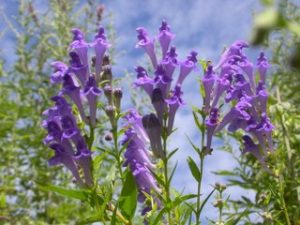
Scutellaria baicalensis Georgi
- Difference of growth-inhibitory effect of Scutellaria baicalensis-producing flavonoid wogonin among human cancer cells and normal diploid cell
- Inhibition of cancer cell proliferation and prostaglandin E2 synthesis by Scutellaria baicalensis
- Studies no Inhibitors of Skin Tumor Promotion. XI. Inhibitory Effects of Flavonoids from Scutellaria baicalensis on Epstein-Barr Virus Activation and Their Anti-tumor
- Selective fraction of Scutellaria baicalensis and its chemopreventive effects on MCF-7 human breast cancer cells
- The Effect of Scutellaria Baicalensis on the Signaling Network in Hepatocellular Carcinoma Cells
- Anticancer activity of extracts derived from the mature roots of Scutellaria baicalensis on human malignant brain tumor cells
- Characterization of chemical constituents in Scutellaria baicalensis with antiandrogenic and growth-inhibitory activities toward prostate carcinoma
- Baicalein, a component of Scutellaria baicalensis, induces apoptosis by Mcl-1 down-regulation in human pancreatic cancer cells
- Anti-inflammatory effects of Scutellaria baicalensis water extract on LPS-activated RAW 264.7 macrophages
- Scutellaria baicalensis and the active compounds induce cell cycle arrest and apoptosis including upregulation of p53 and Bax in human lung cancer cells
- Anticancer Activity of Scutellaria baicalensis and Its Potential Mechanism
- Wogonin, an active compound in Scutellaria baicalensis, induces apoptosis and reduces telomerase activity in the HL-60 leukemia cells
- Molecular Mechanism of Anti-Prostate Cancer Activity of Scutellaria Baicalensis Extract
- Induction of apoptosis in prostate cancer cell lines by a flavonoid, baicalin
- Baicalein, an active component of Scutellaria baicalensis Georgi, induces apoptosis in human colon cancer cells and prevents AOM/DSS-induced colon cancer in mice
- Hydrophobic flavonoids from Scutellaria baicalensis induce colorectal cancer cell apoptosis through a mitochondrial-mediated pathway
- Korean Scutellaria baicalensis water extract inhibits cell cycle G1/S transition by suppressing cyclin D1 expression and matrix-metalloproteinase-2 activity in human lung cancer cells
- Baicalin from the extract of Scutellaria baicalensis affects the innate immunity and apoptosis in leukocytes of children with acute lymphocytic leukemia
- Scutellaria Baicalensis, a Herbal Medicine: Antitumor Activity Against Acute Lymphocytic leukemia, Lymphoma and Myeloma in Vitro.
- Induction of Apoptosis Scutellaria baicalensis Georgi Root Extract by Inactivation of the Phosphatidyl Inositol 3-kinase/Akt Signaling Pathway in Human leukemia U937 Cells
- Flavonoid components in Scutellaria baicalensis inhibit nicotine-induced proliferation, metastasis and lung cancer-associated inflammation in vitro
- [Effect of Scutellaria baicalensis extract on the immunologic status of patients with lung cancer receiving antineoplastic chemotherapy].
- [Dry extract of Scutellaria baicalensis as a hemostimulant in antineoplastic chemotherapy in patents with lung cancer].
- Cytotoxic and Apoptotic Effect of Commercial Tinctures of Scutellaria baicalensis on lung cancer Cell Lines
- THE EFFECT OF SCUTELLARIA BAICALENSIS (SB) EXTRACT ON THE IMMUNOLOGICAL STATUS OF lung cancer PATIENTS RECEIVING ANTITUMOR CHEMOTHERAPY
- Scutellaria baicalensis is Useful in the Treatment of Cancer and Liver Disease
- S2015 Growth Inhibitory Effects of Polyphenols in Scutellaria Baicalensis in pancreatic cancer Cells
- Baicalin, the major component of traditional Chinese medicine Scutellaria baicalensis induces colon cancer cell apoptosis through inhibition of oncomiRNAs
- Influence of scutellaria baicalensis georgi on phosphatase and tensin homologue,Akt and p-Akt protein expression of colon cancer cell
- Effects of Scutellaria baicalensis and component flavonoids on apoptosis in colon cancer cell lines
- Anti-cancer effect of Scutellaria baicalensis in combination with cisplatin in human ovarian cancer cell
- The Chinese herbs Scutellaria baicalensis and Fritillaria cirrhosa target NFκB to inhibit proliferation of ovarian and endometrial cancer cells
- Scutellaria baicalensis targets the hypoxia‐inducible factor‐1α and enhances cisplatin efficacy in ovarian cancer
- Abstract 1529: Scutellaria baicalensis targets the hypoxia-inducible factor-1α and attenuates ovarian cancer growth
- Anti-cancer effect of Scutellaria baicalensis Georgi in combination with cisplatin in human ovarian cancer cell
- Scutellaria barbata D. Don Inhibits Tumor Angiogenesis via Suppression of Hedgehog Pathway in a Mouse Model of Colorectal Cancer
- Anticancer activity and mechanism of Scutellaria barbata extract on human lung cancer cell line A549
- Inhibitory Effects of a Chemically Standardized Extract from Scutellaria barbata in Human Colon Cancer Cell Lines, LoVo
- Pheophorbide a, a major antitumor component purified from Scutellaria barbata, induces apoptosis in human hepatocellular carcinoma cells
- Pheophorbide a, an active compound isolated from Scutellaria barbata, possesses photodynamic activities by inducing apoptosis in human hepatocellular carcinoma
- Scutellaria barbata D. Don inhibits tumor angiogenesis via suppression of Hedgehog pathway in a mouse model of colorectal cancer
- Methylene chloride fraction of Scutellaria barbata induces apoptosis in human U937 leukemia cells via the mitochondrial signaling pathway
- A phase 1B dose escalation trial of Scutellaria barbata (BZL101) for patients with metastatic breast cancer
- Scutellaria barbata D. Don induces G1/S arrest via modulation of p53 and Akt pathways in human colon carcinoma cells
- Antitumor activity of chloroform fraction of Scutellaria barbata and its active constituents
- Scutellaria barbata inhibits angiogenesis through downregulation of HIF‐1 α in lung tumor
- BZL101, a phytochemical extract from the Scutellaria barbata plant, disrupts proliferation of human breast and prostate cancer cells through distinct mechanisms dependent on the cancer cell phenotype
- Chinese medicinal herb Scutellaria barbata modulates apoptosis and cell survival in murine and human prostate cancer cells and tumor development in TRAMP mice
- Scutellaria barbata extract for the treatment of cancer
- Molecular mechanisms underlying selective cytotoxic activity of BZL101, an extract of Scutellaria barbata, towards breast cancer cells
- Photo-activated pheophorbide-a, an active component of Scutellaria barbata, enhances apoptosis via the suppression of ERK-mediated autophagy in the estrogen receptor-negative human breast adenocarcinoma cells MDA-MB-231
- Scutellaria barbata D. Don Inhibits Tumor Angiogenesis via Suppression of Hedgehog Pathway in a Mouse Model of colorectal cancer
- Scutellaria Barbata D Don Inhibits colorectal cancer Growth via Suppression of Multiple Signaling Pathways
- Scutellaria barbata D. Don inhibits growth and induces apoptosis by suppressing IL-6-inducible STAT3 pathway activation in human colorectal cancer cells
- Scutellaria barbata D. Don inhibits migration and invasion of colorectal cancer cells via suppression of PI3K/AKT and TGF‑β/Smad signaling pathways
- Scutellaria barbata D. Don inhibits colorectal cancer growth via suppression of Wnt/β-catenin signaling pathway
- The Effect of Scutellaria Barbata D. Don on Inhibiting the Proliferation of Human colorectal cancer Cell Line HT-29 and Inducing Its Apoptosis
- Chloroform fraction of Scutellaria barbata D. Don inhibits the growth of colorectal cancer cells by activating miR‑34a
- Scutellaria barbata D. Don inhibits 5-fluorouracil resistance in colorectal cancer by regulating PI3K/AKT pathway
- Characterization of polysaccharide from Scutellaria barbata and its antagonistic effect on the migration and invasion of HT-29 colorectal cancer cells induced by TGF-β1
- Inhibitory effect of scutellaria barbata in human colorectal cancer cells via cell cycle analysis
- Chloroform fraction of Scutellaria barbata D. Don promotes apoptosis and suppresses proliferation in human colon cancer cells
- Effects of Scutellaria barbata polysaccharide on the proliferation, apoptosis and EMT of human colon cancer HT29 Cells
- Scutellarein from Scutellaria barbata induces apoptosis of human colon cancer HCT116 cells through the ROS-mediated mitochondria-dependent pathway
- Mechanism of Apoptosis of Human colon cancer HT-29 Cells Induced by Scutellaria barbata D.Don Extract
- The anti-cancer effects and mechanisms of Scutellaria barbata D. Don on CL1-5 lung cancer cells
- [Apoptosis-inducing effect of Scutellaria barbata extract on human lung cancer SPC-A-1 cells and the expression of apoptosis associated genes].
- Enhanced anticancer effects of Scutellaria barbata D. Don in combination with traditional Chinese medicine components on non-small cell lung cancer cells
- Apoptosis-inducing Effect of Scutellaria barbata Extract on Human lung cancer SPC-A-1 Cells and the Expression of Apoptosis Associated Genes
- A Novel Systems Pharmacology Method to Investigate Molecular Mechanisms of Scutellaria barbata D. Don for Non-small Cell lung cancer
- The Anti-Tumor Effect of Scutellaria Barbata Polysaccharides on Mice with Lewis lung cancer
- Experimental Study on Combination of Intratumor Scutellaria Barbata Injection and Thalidomide on liver cancer
- Green synthesis of gold nanoparticles from Scutellaria barbata and its anticancer activity in pancreatic cancer cell (PANC‐1)
- Apoptosis of leukemia K562 cells induced by Scutellaria barbata extract
- Inhibitory effect of scutellaria barbata in human leukemia cells via cell cycle analysis
- Anti-tumor effect of Scutellaria barbata D. Don extracts on ovarian cancer and its phytochemicals characterisation
- Sensitisation of ovarian cancer cells to cisplatin by flavonoids from Scutellaria barbata
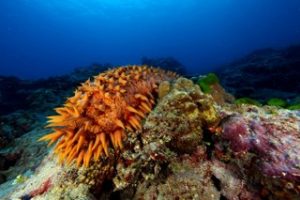
Sea Cucumber (Cucumaria frondos)
- Chemopreventive effects of Frondanol A5, a Cucumaria frondosa extract, against rat colon carcinogenesis and inhibition of human colon cancer cell growth
- Anti-pancreatic cancer effects of a polar extract from the edible sea cucumber, Cucumaria frondosa
- Frondoside A suppressive effects on lung cancer survival, tumor growth, angiogenesis, invasion, and metastasis
- Frondoside A inhibits breast cancer metastasis and antagonizes prostaglandin E receptors EP4 and EP2
- In vivo anti-cancer mechanism of low-molecular-weight fucosylated chondroitin sulfate (LFCS) from sea cucumber Cucumaria frondosa
- Review of the Apoptosis Pathways in Pancreatic Cancer and the Anti‐apoptotic Effects of the Novel Sea Cucumber Compound, Frondoside A
- Frondoside A inhibits human breast cancer cell survival, migration, invasion and the growth of breast tumor xenografts
- Sea cucumbers metabolites as potent anti-cancer agents
- The triterpenoid Frondoside A from the sea cucumber Cucumaria frondosa inhibits proliferation of human pancreatic cancer cells in vivo and in vitro
- Frondoside A has an anti-invasive effect by inhibiting TPA-induced MMP-9 activation via NF-κB and AP-1 signaling in human breast cancer cells
- In Vivo Anti-Cancer Mechanism of Low-Molecular-Weight Fucosylated Chondroitin Sulfate (LFCS) from Sea Cucumber Cucumaria frondosa
- Sea Cucumbers Metabolites as Potent Anti-Cancer Agents
- Review of the Apoptosis Pathways in Pancreatic Cancer and the Anti‐apoptotic Effects of the Novel Sea Cucumber Compound, Frondoside A
- The marine triterpene glycoside frondoside A exhibits activity in vitro and in vivo in prostate cancer
- Anticancer and cancer preventive compounds from edible marine organisms
- Mechanisms of cancer cell killing by sea cucumber-derived compounds
- Anti-pancreatic cancer Effects of a Polar Extract From the Edible Sea Cucumber, Cucumaria frondosa
- FRONDANOL®-A5P FROM THE SEA CUCUMBER, CUCU-MARIA FRONDOSA INDUCES CELL CYCLE ARREST AND APOPTOSIS IN pancreatic cancer CELLS.
- Selective toxicity of persian gulf sea cucumber holothuria parva on human chronic lymphocytic leukemia b lymphocytes by direct mitochondrial targeting
- Isolation of Sphingoid Bases of Sea Cucumber Cerebrosides and Their Cytotoxicity against Human colon cancer Cells
- Sea Cucumber (Stichopus japonicas) F2 Enhanced TRAIL-Induced Apoptosis via XIAP Ubiquitination and ER Stress in colorectal cancer Cells
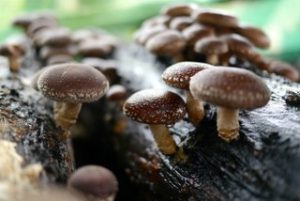
Shiitake— Lentinula edodes mycelia extract
- Inhibition of growth and induction of apoptosis in human cancer cell lines by an ethyl acetate fraction from shiitake mushrooms
- Effects of a mushroom mycelium extract on the treatment of prostate cancer
- Anti-cancer effect of polysaccharides isolated from higher basidiomycetes mushrooms
- The cancer preventive effects of edible mushrooms
- Antitumor effect of virus-like particles fromLentinus edodes (Shiitake) on Ehrlich ascites carcinoma in mice
- Antitumor action of shiitake (Lentinus edodes) fruit bodies orally administered to mice
- In vitro effects on proliferation, apoptosis and colony inhibition in ER-dependent and ER-independent human breast cancer cells by selected mushroom species
- Lentinan from shiitake mushroom (Lentinus edodes) suppresses expression of cytochrome P450 1A subfamily in the mouse liver
- Mushrooms, tumors, and immunity: an update
- Effect of lentinan on macrophage cytotoxicity against metastatic tumor cells
- Autolysis of Lentinan, an Antitumor Polysaccharide, during Storage of Lentinus edodes, Shiitake Mushroom
- Antitumor Activity of Combination Treatment of Lentinusedodes Mycelium Extracts with 5 Fluorouracil against Human colon cancer Cells Xenografted in Nude Mice
- Efficacy and Safety of Orally Administered Lentinula edodes Mycelia Extract for Patients Undergoing Cancer Chemotherapy: A Pilot Study
- In vitro cytostatic and immunomodulatory properties of the medicinal mushroom Lentinula edodes Overall L. edodes aqueous extracts have demonstrated direct inhibition of the proliferation of human breast cancer cells in vitro and immunostimulatory properties in terms of mitogenic and co-mitogenic activity in vitro.
- Efficacy of Orally Administered Lentinula edodes MyceliaExtract for Advanced Gastrointestinal Cancer PatientsUndergoing Cancer Chemotherapy: a Pilot Study
- White Button Mushroom Phytochemicals Inhibit Aromatase Activity and Breast Cancer Cell Proliferation
- Evaluation of host quality of life and immune function in breast cancer patients treated with combination of adjuvant chemotherapy and oral administration of Lentinula edodes mycelia extract
- Antiproliferation Effect of Shiitake Mushroom(Lentinula Edodes)Exudates on HL-60(Acute Promyelocytic leukemia)Cancer Cell Line
- Chronic Hypersensitivity Pneumonitis Induced by Shiitake Mushroom Spores Associated with lung cancer
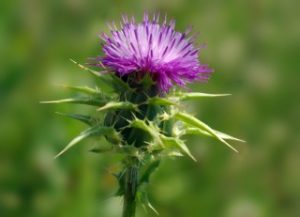
Silymarin, a flavonolignan from milk thistle (Silybum marianum)
- Anticarcinogenic effect of a flavonoid antioxidant, silymarin, in human breast cancer cells MDA-MB 468: induction of G1 arrest through an increase in Cip1/p21
- Novel cancer chemopreventive effects of a flavonoid antioxidant silymarin: Inhibition of mRNA expression of an endogenous tumor promoter TNFα
- Detrimental effect of cancer preventive phytochemicals silymarin, genistein and epigallocatechin 3‐gallate on epigenetic events in human prostate carcinoma DU145
- Skin cancer chemopreventive effects of a flavonoid antioxidant silymarin are mediated via impairment of receptor tyrosine kinase signaling and perturbation in cell
- Cancer chemopreventive flavonoid antioxidant, silymarin: inhibition of key attributes of vascular endothelial cells and angiogenic cytokine secretion by cancer
- Anti-angiogenic effect of silymarin on colon cancer LoVo cell line
- Multitargeted therapy of cancer by silymarin
- A flavonoid antioxidant, silymarin, inhibits activation of erbB1 signaling and induces cyclin-dependent kinase inhibitors, G1 arrest, and anticarcinogenic effects
- Flavonoid antioxidant silymarin and skin cancer
- Identifying the differential effects of silymarin constituents on cell growth and cell cycle regulatory molecules in human prostate cancer cells
- In vitro and in vivo anti-cancer activity of silymarin on oral cancer
- Combined Effects of Multiple Flavonoids on Breast Cancer Resistance Protein (ABCG2)-Mediated Transport
- Silymarin in the Prevention and Treatment of Liver Diseases and Primary liver cancer
- Topical Use of a Silymarin-Based Preparation to Prevent Radiodermatitis Silymarin-based cream Leviaderm® may be a promising and effective treatment for the prevention of acute skin lesions caused by RT of breast cancer patients.
- Interaction of the breast cancer resistance protein with plant polyphenols
- Chemopreventive Efficacy of Silymarin in Skin and Prostate Cancer
- Silymarin and silibinin cause G1 and G2–M cell cycle arrest via distinct circuitries in human prostate cancer PC3 cells: a comparison of flavanone silibinin with flavanolignan mixture silymarin
- Silymarin inhibits function of the androgen receptor by reducing nuclear localization of the receptor in the human prostate cancer cell line LNCaP
- Detrimental effect of cancer preventive phytochemicals silymarin, genistein and epigallocatechin 3‐gallate on epigenetic events in human prostate carcinoma DU145 cells
- Identifying the differential effects of silymarin constituents on cell growth and cell cycle regulatory molecules in human prostate cancer cells
- Silibinin meglumine, a water-soluble form of milk thistle silymarin, is an orally active anti-cancer agent that impedes the epithelial-to-mesenchymal transition (EMT) in EGFR-mutant non-small-cell lung carcinoma cells
- Molecular Mechanism of Silymarin-Induced Apoptosis in a Highly Metastatic lung cancer Cell Line Anip973
- Therapeutic intervention of silymarin on the migration of non-small cell lung cancer cells is associated with the axis of multiple molecular targets including class 1 HDACs, ZEB1 expression, and restoration of miR-203 and E-cadherin expression
- Silymarin suppressed lung cancer growth in mice via inhibiting myeloid-derived suppressor cells
- The anti-lung cancer mechanisms of Silymarin via inhibiting myeloid-derived suppressor cells
- Silymarin (Milk Thistle) can revoke liver enzyme changes during chemotherapy of breast cancer with Taxanes
- Nanotechnology-based Chemopreventive Approaches to Improve the Oral Delivery of Silymarin in liver cancer
- Anti-angiogenic effect of silymarin on colon cancer lovo cell line
- Curcumin Sensitizes Silymarin to Exert Synergistic Anticancer Activity in colon cancer Cells
- Chemotherapeutic activity of silymarin combined with doxorubicin or paclitaxel in sensitive and multidrug-resistant colon cancer cells
- Multistage vector delivery of sulindac and silymarin for prevention of colon cancer
- Silymarin induces a multi-targeted cell death process in the human colon cancer cell line HT-29
- Effect of Curcumin and Silymarin in Combination Exerts Synergistic Inhibition of colon cancer Cell Proliferation
- Effects of Silymarin-Loaded Nanoparticles on HT-29 Human colon cancer Cells
- Determination of Silymarin Molecule Activity in colon cancer by AgNOR Technique
- Silymarin induces cyclin D1 proteasomal degradation via its phosphorylation of threonine-286 in human colorectal cancer cells
- Inhibition of Wnt Signaling by Silymarin in Human colorectal cancer Cells
- Chemoprevention of inflammation-related colorectal cancer by silymarin-, acetyl-11-keto-beta-boswellic acid-, curcumin- and maltodextrin-enriched dietetic formulation in animal model
- Silymarin-Mediated Degradation of c-Myc Contributes to the Inhibition of Cell Proliferation in Human colorectal cancer Cells
- Anti-Proliferative Activity of Silymarin in Human colorectal cancer Cells
- Inhibitory Effect of silymarin on β-catenin Transcriptional Activation in Human colorectal cancer Cells
- Silymarin causes caspases activation and apoptosis in K562 leukemia cells through inactivation of Akt pathway
- Effects of silymarin on the spontaneous proliferation and cell cycle of human peripheral blood leukemia T cells
- The Effect of Silymarin on Telomerase Activity in the Human leukemia Cell Line K562
- Protective Role of Silymarin on Hepatic and Renal Toxicity Induced by MTX Based Chemotherapy in Children with Acute Lymphoblastic leukemia
- Protective Role of Silymarin in Early Doxorubicin-induced Cardiac Dysfunction in Children with Acute Lymphoblastic leukemia
- Silymarin inhibited proliferation and induced apoptosis in human chronic myeloid leukemia cell line K562
- Effects of silymarin on the spontaneous proliferation and cell cycle of human peripheral blood leukemia T cells
- Silymarin induces cell cycle arrest and apoptosis in ovarian cancer cells
- Lisinopril inhibits nuclear transcription factor kappa B and augments sensitivity to silymarin in experimental liver fibrosis
- Effects of Silymarin on Expressions of Nuclear Factor Kappa B and Intercellular Adhesion Molecule-1 in Renal Tissue of Rats with Tubulointerstitial Fibrosis
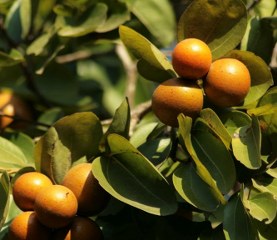
Strychnos nux vomica L extract
- The anti-tumor effects of alkaloids from the seeds of Strychnos nux-vomica on HepG2 cells and its possible mechanism
- The Apoptotic Effect of Brucine from the Seed of Strychnos nux-vomica on Human Hepatoma Cells is Mediated via Bcl-2 and Ca2+ Involved Mitochondrial Pathway
- Anti-proliferative and cytotoxic effects of Strychnos nux-vomica root extract on human multiple myeloma cell line–RPMI 8226
- Brucine, an alkaloid from seeds of Strychnos nux-vomica Linn., represses hepatocellular carcinoma cell migration and metastasis
- Analgesic and anti-inflammatory activity and pharmacokinetics of alkaloids from seeds of Strychnos nux-vomica after transdermal administration
- Phytochemical study, cytotoxic, analgesic, antipyretic and anti-inflammatory activities of Strychnos nux-vomica
- Cytotoxic and antitumor effects of brucine on Ehrlich ascites tumor and human cancer cell line
- Cytotoxicities of alkaloids from processed and unprocessed seeds of Strychnos nux-vomica.
- Induction of G2/M arrest and apoptosis by water extract of Strychni Semen in human gastric carcinoma AGS cells
- Anticarcinogenic effect of brucine in diethylnitrosamine initiated and phenobarbital-promoted hepatocarcinogenesis in rats
- Strychnos nux-vomica Root Extract Induces Apoptosis in the Human Multiple Myeloma Cell Line—U266B1
- Rasagenthi lehyam (RL) a novel complementary and alternative medicine for prostate cancer
- Research on Thai medicinal plants for cancer treatment The screening process utilizes 60 different human tumor cell lines, representing leukemia, melanoma and cancers of lung, colon, brain, ovary, breast, prostate, and kidney.
- Prostate carcinoma tissue proteomics for biomarker discovery
- Inhibition of Heinz Body Induction in an inVitro Model and TotalAntioxidant Activity of Medicinal Thai Plants
- IN VITRO CYTOTOXICITY STUDY OF AGAVE AMERICANA, STRYCHNOS NUXVOMICA AND ARECA CATECHU EXTRACTS USING MCF-7 CELL LINE The MCF-7 breast cancer cell line originated from a 69-year-old Caucasian woman who previously underwent two mastectomies in a five-year span.
- Brucine, an effective natural compound derived from nux-vomica, induces G1 phase arrest and apoptosis in LoVo cells
- Anticancer effects of brucine and gemcitabine combination in MCF-7 human breast cancer cells
- Brucine inhibits bone metastasis of breast cancer cells by suppressing Jagged1/Notch1 signaling pathways
- Effects of brucine on breast cancer bone metastasis in mice
- Inhibitory effects of Nigella sativa and saffron (crocus sativus) on chemical carcinogenesis in mice
- Anti-tumor properties of blackseed (Nigella sativa L.) extracts
- Anti‐inflammatory effects of the Nigella sativa seed extract, thymoquinone, in pancreatic cancer cells
- Effects of alpha-hederin and thymoquinone, constituents of Nigella sativa, on human cancer cell lines
- Hepatoprotective effects of Nigella sativa L and Urtica dioica L on lipid peroxidation, antioxidant enzyme systems and liver enzymes in carbon tetrachloride
- The in vitro anti-tumor activity of some crude and purified components of blackseed, Nigella sativa L.
- Effect of Nigella sativa (N. sativa L.) and oxidative stress on the survival pattern of MCF-7 breast cancer cells.
- Extraction, isolation and characterisation of antitumor principle, α-hederin, from the seeds of Nigella sativa
- Cytotoxic effects of a decoction of Nigella sativa, Hemidesmus indicus and Smilax glabra on human hepatoma HepG2 cells
- Nigella sativa modulates splenocyte proliferation, Th1/Th2 cytokine profile, macrophage function and NK anti-tumor activity
- Anticancer activity of thymoquinone in breast cancer cells: Possible involvement of PPAR-γ pathway
- Thymoquinone up-regulates PTEN expression and induces apoptosis in doxorubicin-resistant human breast cancer cells
- Targeted Apoptotic Effects of Thymoquinone and Tamoxifen on XIAP Mediated Akt Regulation in Breast Cancer
- Thymoquinone in liposomes: a study of loading efficiency and biological activity towards breast cancer
- Thymoquinone: Potential cure for inflammatory disorders and cancer
- Androgen Receptor– and E2F-1–Targeted Thymoquinone Therapy for Hormone-Refractory Prostate Cancer
- Studies on molecular mechanisms of growth inhibitory effects of thymoquinone against prostate cancer cells: role of reactive oxygen species
- Thymoquinone: fifty years of success in the battle against cancer models
- Novel combination of docetaxel and thymoquinone induces synergistic cytotoxicity and apoptosis in DU-145 human prostate cancer cells by modulating PI3K–AKT pathway
- Thymoquinone and cisplatin as a therapeutic combination in lung cancer: In vitro and in vivo
- Thymoquinone inhibits proliferation and invasion of human nonsmall-cell lung cancer cells via ERK pathway
- Anticancer Effects of Thymoquinone, Caffeic Acid Phenethyl Ester and Resveratrol on A549 Non-small Cell lung cancer Cells Exposed to Benzo(a)pyrene
- 330Chemopreventive effect of thymoquinone on benzo(a)pyrene-induced lung cancer in male swiss albino mice
- Evaluation of thymoquinone (TQ) as an antiproliferative, proapoptotic, and immunomodulatory agent in a non-small cell lung cancer cell (NSCLC) line
- Thymoquinone enhanced the tumoricidal activity of NK Cells against lung cancer
- Abstract 4665: Neurotensin receptor-based targeted delivery of thymoquinone for non-small cell lung cancer
- Abstract 5385: Thymoquinone(TQ) and cisplatin(CDDP) in a non-small cell lung cancer (NSCLC) xenograft model
- Cytotoxic Effect of Thymoquinone-Loaded Nanostructured Lipid Carrier (TQ-NLC) on liver cancer Cell Integrated with Hepatitis B Genome, Hep3B
- PROTECTIVE EFFECT OF THYMOQUINONE ON THE LIVER TISSUES OF 7, 12-DIMETHYLBENZ (A) ANTHRACENE INDUCED EXPERIMENTAL BREAST CANCER RATS
- Thymoquinone-Loaded Nanostructured Lipid Carrier Reduces Proliferation of Human liver cancer Cells, HepG2
- Thymoquinone reduces mouse colon tumor cell invasion and inhibits tumor growth in murine colon cancer models
- Comparison of potential chemotherapeutic agents, 5-fluoruracil, green tea, and thymoquinone on colon cancer cells.
- Synthesis of Novel Hybrids of Thymoquinone and Artemisinin with High Activity and Selectivity Against colon cancer
- Thymoquinone induces apoptosis in human colon cancer HCT116 cells through inactivation of STAT3 by blocking JAK2- and Src‑mediated phosphorylation of EGF receptor tyrosine kinase
- Thymoquinone Induces Caspase-Independent, Autophagic Cell Death in CPT-11-Resistant LoVo colon cancer via Mitochondrial Dysfunction and Activation of JNK and p38
- Thymoquinone chemosensitizes colon cancer cells through inhibition of NF‑κB
- Thymoquinone suppresses migration of LoVo human colon cancer cells by reducing prostaglandin E2 induced COX-2 activation
- Inhibition of NF‐κB and metastasis in irinotecan (CPT‐11)‐resistant LoVo colon cancer cells by thymoquinone via JNK and p38
- Thymoquinone effects on DMH-induced erythrocyte oxidative stress and haematological alterations during colon cancer promotion in rats
- Thymoquinone extracted from black seed triggers apoptotic cell death in human colorectal cancer cells via a p53-dependent mechanism
- Thymoquinone Triggers Inactivation of the Stress Response Pathway Sensor CHEK1 and Contributes to Apoptosis in colorectal cancer Cells
- Thymoquinone-induced conformational changes of PAK1 interrupt prosurvival MEK-ERK signaling in colorectal cancer
- Thymoquinone hydrazone derivatives cause cell cycle arrest in p53-competent colorectal cancer cells
- Thymoquinone from Nigella sativa Seeds Promotes the Antitumor Activity of Noncytotoxic Doses of Topotecan in Human colorectal cancer Cells in Vitro
- Thymoquinone from Nigella Sativa Seeds Promotes the Antitumor Activity of Topotecan in Human colorectal cancer Cell Lines
- Antitumor Activity of Gemcitabine and Oxaliplatin Is Augmented by Thymoquinone in pancreatic cancer
- Anti-inflammatory effects of the Nigella sativa seed extract, thymoquinone, in pancreatic cancer cells
- Effects of Thymoquinone in the Expression of Mucin 4 in pancreatic cancer Cells: Implications for the Development of Novel Cancer Therapies
- Structure-Activity Studies on Therapeutic Potential of Thymoquinone Analogs in pancreatic cancer
- [Anti-metastasis effect of thymoquinone on human pancreatic cancer].
- Synthesis, characterization and anti-tumor activity of novel thymoquinone analogs against pancreatic cancer
- Thymoquinone Pretreatment Overcomes the Insensitivity and Potentiates the Antitumor Effect of Gemcitabine Through Abrogation of Notch1, PI3K/Akt/mTOR Regulated Signaling Pathways in pancreatic cancer
- Thymoquinone Promotes pancreatic cancer Cell Death and Reduction of Tumor Size through Combined Inhibition of Histone Deacetylation and Induction of Histone Acetylation
- Anti-angiogenic effect of thymoquinone on angiogenesis and proliferation of pancreatic cancer
- Thymoquinone induces apoptosis through activation of caspase‐8 and mitochondrial events in p53‐null myeloblastic leukemia HL‐60 cells
- Induction of apoptosis by thymoquinone in lymphoblastic leukemia Jurkat cells is mediated by a p73-dependent pathway which targets the epigenetic integrator UHRF1
- Down-regulation of cyclic nucleotide phosphodiesterase PDE1A is the key event of p73 and UHRF1 deregulation in thymoquinone-induced acute lymphoblastic leukemia cell apoptosis
- Thymoquinone Inhibits Murine leukemia WEHI-3 Cells In Vivo and In Vitro
- Antiproliferative and Proapoptotic Effects of Topotecan in Combination With Thymoquinone on Acute Myelogenous leukemia
- The Effects of Thymoquinone and Doxorubicin on leukemia and Cardiomyocyte Cell Lines
- Thymoquinone exerts potent growth-suppressive activity on leukemia through DNA hypermethylation reversal in leukemia cells
- Cytotoxicity Study of Nigella Sativa and Zingiber zerumbet Extracts, Thymoquinone and Zerumbone Isolated on Human Myeloid leukemia (HL60) Cell
- Antiproliferative and Apoptosis-Inducing Activities of Thymoquinone in Lymphoblastic leukemia Cell Line
- Treatment of Multidrug-Resistant leukemia Cells by Novel Artemisinin-, Egonol-, and Thymoquinone-Derived Hybrid Compounds
- Thymoquinone attenuates phosphorylation of AKT to inhibit kidney cancer cell proliferation
- Thymoquinone induces apoptosis and increase ROS in ovarian cancer cell line
- Thymoquinone enhances cisplatin-response through direct tumor effects in a syngeneic mouse model of ovarian cancer
- Microenvironmental effects limit efficacy of thymoquinone treatment in a mouse model of ovarian cancer
- Pathophysiological Effects of Thymoquinone and Epigallocatechin-3-Gallate on SK-OV-3 ovarian cancer Like Cell Line
- The Effect of Thymoquinone on Apoptosis of SK-OV-3 ovarian cancer Cell by Regulation of Bcl-2 and Bax
- The synthesis and evaluation of thymoquinone analogues as anti-ovarian cancer and antimalarial agents
- Abstract 4954: Opposing effects of the NF-kappaB inhibitor thymoquinone in a syngeneic mouse model of ovarian cancer.
- Abstract B41: Thymoquinone induces-cell cycle non-specific-cell death in cisplatin-resistant ovarian cancer cell through up-regulation of PTEN expression
- The synergistic effect of thymoquinone and epigallocatechin-3-gallate on the functional capacity of Caov-3 ovarian cancer like cell line
- “Suppression of the Progressive Behavior of ovarian cancer like Cells using Thymoquinone (TQ) and Epigallocatechin-3-gallate (EGCG) in vitro”
- TOXICITY EFFECT OF NIGELLA SATIVA AND NIGELLA ARVENSIS SEED EXTRACT ON GASTRIC CANCER CELL LINES (AGS) AND BRAIN TUMOR CELLS (AST)
- Inhibition of angiogenesis and inflammation by an extract of red clover (Trifolium pratense L.)
- Effects of phytoestrogenic isoflavones from red clover (Trifolium pratense L.) on experimental osteoporosis
- The Chemical and Biologic Profile of a Red Clover (Trifolium pratense L.) Phase II Clinical Extract
- Long-Term Pharmacokinetics of an Extract of Isoflavones from Red Clover (Trifolium pratense)
- The phytoestrogenic isoflavones from Trifolium pratense L.(Red clover) protects human cortical neurons from glutamate toxicity
- Formononetin induces apoptosis in PC-3 prostate cancer cells through enhancing the Bax/Bcl-2 ratios and regulating the p38/Akt pathway
- Formononetin-induced apoptosis of human prostate cancer cells through ERK1/2 mitogen-activated protein kinase inactivation
- Formononetin-induced apoptosis by activation of Ras/p38 mitogen-activated protein kinase in estrogen receptor-positive human breast cancer cells
- Novel anti-angiogenic effects of formononetin in human colon cancer cells and tumor xenograft
- Formononetin inhibits migration and invasion of MDA-MB-231 and 4T1 breast cancer cells by suppressing MMP-2 and MMP-9 through PI3K/AKT signaling pathways
- Evaluation of Hydro-Alcoholic Extract of Trifolium Pratens L. for Its Anti-Cancer Potential on U87MG Cell Line
- Isoflavones isolated from red clover (Trifolium pratense) inhibit smooth muscle contraction of the isolated rat prostate gland
- The red clover (Trifolium pratense) isoflavone biochanin A inhibits aromatase activity and expression Overexposure of oestrogen is a major contributing factor in the development of breast cancer, and cytochrome P450 (CYP) 19 enzyme, or aromatase, catalyses the reaction converting androgen to oestrogen.
- Formononetin-induced Apoptosis of Human Prostate Cancer Cells Through ERK1/2 Mitogen-activated Protein Kinase Inactivation
- Estrogenic and antiproliferative activities on MCF-7 human breast cancer cells by flavonoids
- In vitro chemopreventive effects of plant polysaccharides (Aloe barbadensis Miller, Lentinus edodes, Ganoderma lucidum and Coriolus versicolor)
- Anti-tumor effect of Coriolus versicolor methanol extract against mouse B16 melanoma cells: in vitro and in vivo study
- In vitro inhibition of proliferation of HL-60 cells by tetrandrine and coriolus versicolor peptide derived from Chinese medicinal herbs
- The Anti-tumor Effect of a Small Polypeptide from Coriolus versicolor (SPCV)
- Coriolus versicolor: a medicinal mushroom with promising immunotherapeutic values
- Cytotoxic activities of Coriolus versicolor (Yunzhi) extract on human leukemia and lymphoma cells by induction of apoptosis
- Anticancer effects and mechanisms of polysaccharide-K (PSK): implications of cancer immunotherapy.
- The culture duration affects the immunomodulatory and anticancer effect of polysaccharopeptide derived from Coriolus versicolor
- In vivo and in vitro anti-tumor and anti-metastasis effects of Coriolus versicolor aqueous extract on mouse mammary 4T1 carcinoma
- Differential anti-tumor activity of coriolus versicolor (Yunzhi) extract through p53-and/or Bcl-2-dependent apoptotic pathway in human breast cancer cells
- Coriolus versicolor mushroom for colorectal cancer treatment
- Phase 1 Clinical Trial of Trametes versicolor in Women with Breast Cancer
- Chemopreventive Effect of PSP Through Targeting of Prostate Cancer Stem Cell-Like Population
- Medicinal Value of Turkey Tail Fungus Trametes versicolor (L.:Fr.) Pilat (Aphyllophoromycetideae) a number of controlled clinical trials have been performed in Japan with PSK as a supportive treatment in hospitals and clinics for treating patients with a variety of cancers, particularly colorectal and stomach cancer, but also breast and lung cancers.
- Genistein inhibits the stemness properties of prostate cancer cells through targeting Hedgehog–Gli1 pathway
- Phytotherapeutic interventions in the management of biochemically recurrent prostate cancer: a systematic review of randomised trials Pre‐clinical studies and/or clinical trials also suggest benefits for resveratrol from grape skins or Japanese knotweed (Polygonum cuspidatum), pomegranate (Punica granatum) extract (POMx), Silymarin (from St Mary’s/milk thistle, Silybum marianum), and mushrooms such as reishi (Ganoderma lucidum), turkey tail (Coriolus/Trametes),
- Berberis libanotica Ehrenb Extract Shows Anti-Neoplastic Effects on Prostate Cancer Stem/Progenitor Cells it has been recently reported that palm oil-extracted gamma-tocotrienol [12], polysaccharide-P (PSP), an active component extracted from the mushroom Turkey tail [13], and Genistein, a major isoflavone constituent of soybeans and soy products [14], exhibit potent inhibitory activity on protosphere formation ability and tumorigenicity of PC cells. These substances have been shown to target prostate CSCs in vitro,
- A new prospect in cancer therapy: targeting cancer stem cells to eradicate cancer his research group also found that polysaccharopeptide (PSP) extracted from the turkey tail mushroom Coriolus versicolor (also known as Yun Zhi) can target CSCs in prostate cancer[59].
- Polysaccharopeptide enhanced the anti-cancer effect of gamma-tocotrienol through activation of AMPK More recently, we have shown that polysaccharopeptide (PSP) isolated from Turkey tail (known as Coriolus versicolor or Yun-zhi) also inhibit prostate CSC self-renewal in vitro and prevent prostate cancer development in vivo[4]
- Trametes versicolor (turkey tail mushrooms) and the treatment of breast Cancer
- Successful Treatment of HER2-neu–positive Breast Cancer With Paclitaxel and Trastuzumab Supplemented With Turkey Tail Mushrooms and Community Support
- Effects of ursolic acid and oleanolic acid on human colon carcinoma cell line HCT15
- Effects of oleanolic acid and ursolic acid on inhibiting tumor growth and enhancing the recovery of hematopoietic system postirradiation in mice
- Inhibitory effects of ursolic and oleanolic ancid on skin tumor promotion by 12-O-tetradecanoylphorbol-13-acetate
- Inhibition of skin tumorigenesis by rosemary and its constituents carnosol and ursolic acid
- Oleanolic acid and ursolic acid induce apoptosis in four human liver cancer cell lines
- Proliferative inhibition, cell-cycle dysregulation, and induction of apoptosis by ursolic acid in human non-small cell lung cancer A549 cells
- Ursolic acid inhibits nuclear factor-κB activation induced by carcinogenic agents through suppression of IκBα kinase and p65 phosphorylation
- Proliferation-inhibiting and apoptosis-inducing effects of ursolic acid and oleanolic acid on multi-drug resistance cancer cells in vitro
- Ursolic acid in cancer prevention and treatment: molecular targets, pharmacokinetics and clinical studies
- Intracellular Ca2+ release mediates ursolic acid–induced apoptosis in human leukemic HL‐60 cells
- Ursolic acid, a naturally occurring triterpenoid, demonstrates anticancer activity on human prostate cancer cells
- Ursolic acid inhibits multiple cell survival pathways leading to suppression of growth of prostate cancer xenograft in nude mice
- Ursolic acid and its esters: occurrence in cranberries and other Vaccinium fruit and effects on matrix metalloproteinase activity in DU145 prostate tumor cells
- Ursolic acid overcomes Bcl‐2‐mediated resistance to apoptosis in prostate cancer cells involving activation of JNK‐induced Bcl‐2 phosphorylation and degradation
- The P2Y2/Src/p38/COX-2 pathway is involved in the resistance to ursolic acid-induced apoptosis in colorectal and prostate cancer cells
- Ursolic Acid Triggers Apoptosis and Bcl-2 Downregulation in MCF-7 Breast Cancer Cells
- Antitumor Effects of Ursolic Acid in a Mouse Model of Postmenopausal Breast Cancer
- Ursolic acid induces apoptosis by suppressing the expression of FoxM1 in MCF-7 human breast cancer cells
- Phytochemicals in diets for breast cancer prevention: The importance of resveratrol and ursolic acid
- MCF-7 cell cycle arrested at G1 through ursolic acid, and increased reduction of tetrazolium salts.
- Induction of Apoptosis and Regulation of the MAPK Pathway by Ursolic Acid in Human leukemia K562 Cells
- Crucial role of heme oxygenase-1 in the sensitivity of acute myeloid leukemia cell line Kasumi-1 to ursolic acid
- Ezrin dephosphorylation/downregulation contributes to ursolic acid-mediated cell death in human leukemia cells
- Ursolic Acid Induced Growth Inhibition,Cell Cycle Arrest and Apoptosis in Human Promyelocytic leukemia Cell Line HL-60 Cells
- Mechanism of ursolic acid-induced apoptosis in human leukemia cells
- [Mechanism of antitumor effect of ursolic acid on T (8;21) leukemia cell kasumi-1].
- Experimental Study on Apoptosis of Drug – Resistant leukemia K562/ADM Cells Induced by Ursolic Acid Extract from Hedyotic Diffusa and Its Mechanisms
- Structure-dependent inhibition of bladder and pancreatic cancer cell growth by 2-substituted glycyrrhetinic and ursolic acid derivatives
- Ursolic acid inhibits growth and induces apoptosis in gemcitabine-resistant human pancreatic cancer via the JNK and PI3K/Akt/NF-κB pathways
- Synthesis of novel ursolic acid heterocyclic derivatives with improved abilities of antiproliferation and induction of p53, p21waf1 and NOXA in pancreatic cancer cells
- Ursolic acid inhibits the growth of human pancreatic cancer and enhances the antitumor potential of gemcitabine in an orthotopic mouse model through suppression of the inflammatory microenvironment
- Discovery of ursolic acid prodrug (NX-201): Pharmacokinetics and in vivo antitumor effects in PANC-1 pancreatic cancer
- Abstract 4234: Ursolic acid induces apoptosis in pancreatic cancer cells associated with inhibition of STAT3 and down-regulation of Bcl-XL
- Regulatory effect of ursolic acid on cell death of pancreatic cancer cells
- Ursolic Acid from Oldenlandia diffusa Induces Apoptosis via Activation of Caspases and Phosphorylation of Glycogen Synthase Kinase 3 Beta in SK-OV-3 ovarian cancer Cells
- Effects of ursolic acid on the proliferation and apoptosis of human ovarian cancer cells
- Ursolic acid inhibits the proliferation of human ovarian cancer stem-like cells through epithelial-mesenchymal transition
- Ursolic acid inhibits proliferation and reverses drug resistance of ovarian cancer stem cells by downregulating ABCG2 through suppressing the expression of hypoxia-inducible factor-1α in vitro
- Ursolic acid benzaldehyde chalcone leads to inhibition of cell proliferation and arrests cycle in G1/G0 phase in ovarian cancer
- Ursolic acid induce anoikis by suppress metabolism in ovarian cancer cells
- Side chain-functionalized aniline-derived ursolic acid derivatives as multidrug resistance reversers that block the nuclear factor-kappa B (NF-κB) pathway and cell proliferation
- Ursolic acid suppresses TGF‑β1‑induced quiescent HSC activation and transformation by inhibiting NADPH oxidase expression and Hedgehog signaling
- Herbal extract of Wedelia chinensis attenuates androgen receptor activity and orthotopic growth of prostate cancer in nude mice
- Compounds from Wedelia chinensis synergistically suppress androgen activity and growth in prostate cancer cells
- Antioxidant activity of essential oils from Wedelia chinensis (Osbeck) in vitro and in vivo lung cancer bearing C57BL/6 mice
- Development of a standardized and effect-optimized herbal extract of Wedelia chinensis for prostate cancer
- Wedelia chinensis Inhibits Nasopharyngeal Carcinoma CNE-1 Cell Growth by Inducing G2/M Arrest in a Chk1-Dependent Pathway
- Wedelolactone inhibits breast cancer-induced osteoclastogenesis by decreasing Akt/mTOR signaling
- Wedelolactone, a medicinal plant-derived coumestan, induces caspase-dependent apoptosis in prostate cancer cells
- Demethylwedelolactone derivatives inhibit invasive growth in vitro and lung metastasis of MDA-MB-231 breast cancer cells in nude mice
- Response of antioxidative enzymes to arsenic-induced phytotoxicity in leaves of a medicinal daisy, Wedelia chinensis Merrill
- Wedelolactone inhibits LPS-induced pro-inflammation via NF-kappaB pathway in RAW 264.7 cells
- Abstract A58: Characterized herbal extract of Wedelia chinensis suppresses prostate cancer growth
- Standardized Wedelia chinensis Extract Overcomes the Feedback Activation of HER2/3 Signaling upon Androgen-Ablation in Prostate Cancer
- Wedelolactone induces growth of breast cancer cells by stimulation of estrogen receptor signalling
- The Wedelolactone Derivative Inhibits Estrogen Receptor-Mediated Breast, Endometrial, and ovarian cancer Cells Growth
- Antitumor effects of Scutellariae radix and its components baicalein, baicalin, and wogonin on bladder cancer cell lines
- Antioxidant and free radical scavenging effects of baicalein, baicalin and wogonin.
- Wogonin suppresses tumor growth in vivo and VEGF-induced angiogenesis through inhibiting tyrosine phosphorylation of VEGFR2
- Wogonin preferentially kills malignant lymphocytes and suppresses T-cell tumor growth by inducing PLCγ1-and Ca2+-dependent apoptosis
- Anticancer effects of wogonin in both estrogen receptor‐positive and‐negative human breast cancer cell lines in vitro and in nude mice xenografts
- Wogonin and related natural flavones overcome tumor necrosis factor-related apoptosis-inducing ligand (TRAIL) protein resistance of tumors by down-regulation
- The anticancer activities of wogonin in murine sarcoma S180 both in vitro and in vivo
- A wogonin-loaded glycyrrhetinic acid-modified liposome for hepatic targeting with anti-tumor effects
- Wogonin potentiates the antitumor effects of low dose 5-fluorouracil against gastric cancer
- Wogonin inhibits tumor angiogenesis via degradation of HIF-1α protein
- Anticancer effects of wogonin in both estrogen receptor‐positive and ‐negative human breast cancer cell lines in vitro and in nude mice xenografts
- Combined activity of oridonin and wogonin in advanced-stage ovarian cancer cells
- Reactive oxygen species up‐regulate p53 and Puma; a possible mechanism for apoptosis during combined treatment with TRAIL and wogonin We previously reported that wogonin, a potent anticancer agent from a Chinese herb, up‐regulates p53 in prostate cancer cells.
- Reversal of inflammation‐associated dihydrodiol dehydrogenases (AKR1C1 and AKR1C2) overexpression and drug resistance in nonsmall cell lung cancer cells by wogonin and chrysin n the United States, approximately one third of all cancer‐related deaths are due to lung cancer, and the toll exceeds the total death numbers of breast, prostate and colon cancer combined
- Anti-cancer Scopes and Associated Mechanisms of Scutellaria Extract and Flavonoid Wogonin
- Wogonin triggers apoptosis in human osteosarcoma U-2 OS cells through the endoplasmic reticulum stress, mitochondrial dysfunction and caspase-3-dependent signaling pathways
- Targeting CDK9 by wogonin and related natural flavones potentiates the anti‐cancer efficacy of the Bcl‐2 family inhibitor ABT‐263 Recently, extracts from Scutellaria have successfully been tested in two clinical trials in patients with advanced and/or metastatic breast cancer.27, 28 Most recently, we have discovered that wogonin and several related anti‐cancer flavones, e.g., apigenin, chrysin and luteolin, are natural inhibitors of cyclin‐dependent kinase 9 (CDK9), the core component of the positive transcription elongation factor b (P‐TEFb)
- Wogonin induces the granulocytic differentiation of human NB4 promyelocytic leukemia cells and up‐regulates phospholipid scramblase 1 gene expression
- Differential apoptotic effect of wogonin and nor‐wogonin via stimulation of ROS production in human leukemia cells
- Wogonin induces apoptosis and endoplasmic reticulum stress in HL-60 leukemia cells through inhibition of the PI3K-AKT signaling pathway
- Wogonin Inhibits N-acetyltransferase Activity and Gene Expression in Human leukemia HL-60 Cells
- Wogonin, a Natural and Biologically-active Flavonoid, Influences a Murine WEHI-3 leukemia Model in Vivo Through Enhancing Populations of T- and B-Cells
- Apoptosis Induction and Imaging of Cadmium-Telluride Quantum Dots with Wogonin in Multidrug-Resistant leukemia K562/A02 Cell
- Wogonin reversed resistant human myelogenous leukemia cells via inhibiting Nrf2 signaling by Stat3/NF-κB inactivation
- Apoptotic Mechanism of Human leukemia K562/A02 Cells Induced by Magnetic Ferroferric Oxide Nanoparticles Loaded with Wogonin
- Wogonin reverses hypoxia resistance of human colon cancer HCT116 cells via downregulation of HIF‐1α and glycolysis, by inhibiting PI3K/Akt signaling pathway
- Antitumor actions of baicalein and wogonin in HT-29 human colorectal cancer cells
- Wogonin induced G1 cell cycle arrest by regulating Wnt/β-catenin signaling pathway and inactivating CDK8 in human colorectal cancer carcinoma cells
- Prevention of Wogonin on colorectal cancer Tumorigenesis by Regulating p53 Nuclear Translocation
- Abstract 1975: The mitochondrial pathway in baicalein and wogonin-induced apoptosis in human colorectal cancer cells
- Wogonin, a bioactive flavonoid in herbal tea, inhibits inflammatory cyclooxygenase‐2 gene expression in human lung epithelial cancer cells
- Wogonin Has Multiple Anti-Cancer Effects by Regulating c-Myc/SKP2/Fbw7α and HDAC1/HDAC2 Pathways and Inducing Apoptosis in Human Lung Adenocarcinoma Cell Line A549
- Inhibitory effects of wogonin on lung cancer A549 cell line in vitro
- Combined activity of oridonin and wogonin in advanced-stage ovarian cancer cells
- [Effects of wogonin on inducing apoptosis of human ovarian cancer A2780 cells and telomerase activity].
- Therapy Effects of Wogonin on ovarian cancer Cells
- Wogonin Increases Cisplatin Sensitivity in ovarian cancer Cells Through Inhibition of the Phosphatidylinositol 3-Kinase (PI3K)/Akt Pathway
- Wogonin inhibits microglial cell migration via suppression of nuclear factor-kappa B activity
- Effects of Wogonin on the Levels of Cytokines and Functions of Leukocytes Associated with NF-kappa B Expression in Sprague-Dawley Rats
- Wogonin inhibits Cytokine-induced TARC/CCL17 Expression by Suppression of NF-κB
activation via p38 MAP kinase Signalning Pathways in HaCaT Keratinocytes
- Growth inhibitory and apoptosis-inducing effects of xanthohumol, a prenylated chalone present in hops, in human prostate cancer cells
- Xanthohumol induces apoptosis in cultured 40‐16 human colon cancer cells by activation of the death receptor‐and mitochondrial pathway
- Xanthohumol inhibits inflammatory factor production and angiogenesis in breast cancer xenografts
- Xanthohumol, a prenylflavonoid derived from hops induces apoptosis and inhibits NF-kappaB activation in prostate epithelial cells
- Effect of xanthohumol and 8‐prenylnaringenin on MCF‐7 breast cancer cells oxidative stress and mitochondrial complexes expression
- The radio-sensitizing effect of xanthohumol is mediated by STAT3 and EGFR suppression in doxorubicin-resistant MCF-7 human breast cancer cells
- Antileukemia effects of xanthohumol in Bcr/Abl-transformed cells involve nuclear factor-κB and p53 modulation
- Inhibitory effects of xanthohumol from hops (Humulus lupulus L.) on human hepatocellular carcinoma cell lines
- 2-Hydroxychalcone and xanthohumol inhibit invasion of triple negative breast cancer cells
- Xanthohumol-induced transient superoxide anion radical formation triggers cancer cells into apoptosis via a mitochondria-mediated mechanism
- Growth Inhibitory and Apoptosis-inducing Effects of Xanthohumol, a Prenylated Chalone Present in Hops, in Human Prostate Cancer Cells
- Xanthohumol, a prenylflavonoid derived from hops induces apoptosis and inhibits NF-kappaB activation in prostate epithelial cells
- Anti-proliferative properties of prenylated flavonoids from hops (Humulus lupulus L.) in human prostate cancer cell lines
- Xanthohumol Impairs Human Prostate Cancer Cell Growth and Invasion and Diminishes the Incidence and Progression of Advanced Tumors in TRAMP Mice
- Chalcones Enhance TRAIL-Induced Apoptosis in Prostate Cancer Cells
- Xanthohumol suppresses oestrogen-signalling in breast cancer through the inhibition of BIG3-PHB2 interactions
- Distinct modulation of alkaline phosphatase isoenzymes by 17β-estradiol and xanthohumol in breast cancer MCF-7 cells
- Modulation of breast cancer cell survival by aromatase inhibiting hop (Humulus lupulus L.) flavonoids
- Antiinvasive effect of xanthohumol, a prenylated chalcone present in hops (Humulus lupulus L.) and beer
- Xanthohumol and related prenylflavonoids from hops and beer: to your good health!
- Xanthohumol-Mediated Suppression of Notch1 Signaling Is Associated with Antitumor Activity in Human pancreatic cancer Cells
- Xanthohumol inhibits angiogenesis by suppressing nuclear factor‐κB activation in pancreatic cancer
- The inhibitory effects of xanthohumol, a prenylated chalcone derived from hops, on cell growth and tumorigenesis in human pancreatic cancer
- Xanthohumol inhibits angiogenesis through VEGF and IL-8 in pancreatic cancer
- American India Pale Ale matrix rich in xanthohumol is potent in suppressing proliferation and elevating apoptosis of human colon cancer cells
- Xanthohumol, a hop-derived prenylflavonoid present in beer, impairs mitochondrial functionality of SW620 colon cancer cells
- Xanthohumol inhibits colorectal cancer cells viadownregulation of Hexokinases II- mediated glycolysis
- Xanthohumol induces apoptosis and S phase cell cycle arrest in A549 non-small cell lung cancer cells
- The Effects of Xanthohumol and Cisplatin Combination on Metastatic lung cancer Cell
- Anticancer effect of xanthohumol induces growth inhibition and apoptosis of human liver cancer through NF-κB/p53-apoptosis signaling pathway
- Xanthohumol kills B‐chronic lymphocytic leukemia cells by an apoptotic mechanism
- Modification of the cysteine residues in IκBα kinase and NF-κB (p65) by xanthohumol leads to suppression of NF-κB–regulated gene products and potentiation of apoptosis in leukemia cells
- The AKT/NF-κB inhibitor xanthohumol is a potent anti-lymphocytic leukemia drug overcoming chemoresistance and cell infiltration
- Xanthohumol Activates the Proapoptotic Arm of the Unfolded Protein Response in Chronic Lymphocytic leukemia
- Xanthohumol induces paraptosis of leukemia cells through p38 mitogen activated protein kinase signaling pathway
- Xanthohumol decreases Notch1 expression and cell growth by cell cycle arrest and induction of apoptosis in epithelial ovarian cancer cell lines
- Abstract 4147: Xanthohumol decreases Notch1 expression and cell growth in human epithelial ovarian cancer cell lines
- Xanthohumol inhibits the neuroendocrine transcription factor achaete-scute complex-like 1, suppresses proliferation, and induces phosphorylated ERK1/2 in medullary thyroid cancer

Zerumbone (From Zingiber zerumbet)
- Zerumbone induced apoptosis in liver cancer cells via modulation of Bax/Bcl-2 ratio
- Zerumbone, a Southeast Asian ginger sesquiterpene, markedly suppresses free radical generation, proinflammatory protein production, and cancer cell proliferation
- Zerumbone enhances TRAIL-induced apoptosis through the induction of death receptors in human colon cancer cells
- Zerumbone down-regulates chemokine receptor CXCR4 expression leading to inhibition of CXCL12-induced invasion of breast and pancreatic tumor cells
- Zerumbone abolishes RANKL-induced NF-κB activation, inhibits osteoclastogenesis, and suppresses human breast cancer–induced bone loss in athymic nude mice
- Key cell signaling pathways modulated by zerumbone: role in the prevention and treatment of cancer
- Anticancer activity of natural compound (Zerumbone) extracted from Zingiber zerumbet in human HeLa cervical cancer cells
- Antitumor effects of zerumbone from Zingiber zerumbet in P-388D1 cells in vitro and in vivo
- Anti-inflammatory effect of zerumbone on acute and chronic inflammation models in mice
- Antitumor activity of extract of Zingiber aromaticum and its bioactive sesquiterpenoid zerumbone
- Zerumbone causes Bax- and Bak-mediated apoptosis in human breast cancer cells and inhibits orthotopic xenograft growth in vivo
- Notch2 activation is protective against anticancer effects of zerumbone in human breast cancer cells
- Zerumbone Suppresses IL‐1β‐induced Cell Migration and Invasion by Inhibiting IL‐8 and MMP‐3 Expression in Human Triple‐negative Breast Cancer Cells
- Zerumbone inhibits interleukin-6 and induces apoptosis and cell cycle arrest in ovarian and cervical cancer cells
- Zerumbone suppresses the motility and tumorigenecity of triple negative breast cancer cells via the inhibition of TGF-β1 signaling pathway
- Zerumbone inhibits growth of hormone refractory prostate cancer cells by inhibiting JAK2/STAT3 pathway and increases paclitaxel sensitivity
- Biomedical Properties of a Natural Dietary Plant Metabolite, Zerumbone, in Cancer Therapy and Chemoprevention Trials
- Zerumbone Regulates DNA Repair Responding to Ionizing Radiation and Enhances Radiosensitivity of Human Prostatic Cancer Cells
- Exploring the immunomodulatory and anticancer properties of zerumbone
- Zerumbone inhibits angiogenesis by blocking NF-κB activity in pancreatic cancer
- Zerumbone induces apoptosis in T-acute lymphoblastic leukemia cells
- Zerumbone, a bioactive sesquiterpene, induces G2/M cell cycle arrest and apoptosis in leukemia cells via a Fas‐ and mitochondria‐mediated pathway
- Zerumbone-loaded nanostructured lipid carrier induces G2/M cell cycle arrest and apoptosis via mitochondrial pathway in a human lymphoblastic leukemia cell line
- Antileukemic effect of zerumbone-loaded nanostructured lipid carrier in WEHI-3B cell-induced murine leukemia model
- Zerumbone induces mitochondria-mediated apoptosis via increased calcium, generation of reactive oxygen species and upregulation of soluble histone H2AX in K562 chronic myelogenous leukemia cells
- Zerumbone Inhibits Angiogenesis by Blocking NF-κB Activity in pancreatic cancer
- Zerumbone, a phytochemical from Asian ginger is a novel inhibitor of Jak2/Stat3
- Effects of zerumbone on the proliferation and apoptosis of human pancreatic cancer cell line PANC1
- Zerumbone inhibits angiogenesis by blocking NF-κB activity in pancreatic cancer
- Role of Activating Transcription Factor 3 (ATF3) in Endoplasmic Reticulum (ER) Stress-induced Sensitization of p53-deficient Human colon cancer Cells to Tumor Necrosis Factor (TNF)-related Apoptosis-inducing Ligand (TRAIL)-mediated Apoptosis through Up-regulation of Death Receptor 5 (DR5) by Zerumbone and Celecoxib
- Zerumbone reduces proliferation of HCT116 colon cancer cells by inhibition of TNF-alpha
- ZERUMBONE INHIBITS PROLIFERATION AND INDUCES APOPTOSIS, CELL CYCLE ARRESTIN HUMAN colon cancer CELLLINE, HCT15
- Role of ATF3 for ER Stress-induced Sensitization of p53-deficient Human colon cancer Cells to TRAIL-mediated Apoptosis Through Upregulation of DR5 by Zerumbone and Celecoxib
- Anticancer activity of zerumbone from Zingiber aromaticum in the Azoxymethane (AOM) colon cancer model
- Zerumbone increases oxidative stress in a thiol‐dependent ROS‐independent manner to increase DNA damage and sensitize colorectal cancer cells to radiation
- Zerumbone, a Cyclic Sesquiterpene from Zingiber zerumbet Induces Apoptosis, Cell Cycle Arrest, and Antimigratory Effects in SW480 colorectal cancer Cells
- Zerumbone, a Sesquiterpene from Southeast Asian Edible Ginger Sensitizes colorectal cancer Cells to Radiation Therapy
- Zerumbone Suppresses Human colorectal cancer Invasion and Metastasis via Modulation of FAk/PI3k/NFκB-uPA Pathway
- MODULATION OF SURVIVAL AND MOTILITY OF colorectal cancer CELL LINE BY ZERUMBONE
- INHIBITORY EFFECT OF ZERUMBONE ON MIGRATION OF colorectal cancer CELLS VIA DOWN-REGULATION OF MATRIX METALLOPROTEINASE-13 (MMP-13)
- Zerumbone in Combination with Curcumin FOR Probable Treatment in liver cancer
- ANTIPROLIFERATIVE EFFECTS OF ZERUMBONE-HYDROXYPROPYL-β-CYCLODEXTRIN INCLUSION COMPLEX ON HepG2 liver cancerCELLS In Vitro
- CYTOTOXICTY OF ZERUMBONE AGAINST liver cancer CELL LINES (HepG2) VIA APOPTOSIS ACTIVITY
- Zerumbone Suppresses Osteopontin-Induced Cell Invasion Through Inhibiting the FAK/AKT/ROCK Pathway in Human Non-Small Cell lung cancer A549 Cells
- Promotion of p53 expression and reactive oxidative stress production is involved in zerumbone-induced cisplatin sensitization of non-small cell lung cancer cells
- Zerumbone attenuates TGF-β1-mediated epithelial–mesenchymal transition via upregulated E-cadherin expression and downregulated Smad2 signalling pathways in non-small cell lung cancer (A549) cells
- Zerumbone inhibits interleukin-6 and induces apoptosis and cell cycle arrest in ovarian and cervical cancer cells
- CYTOTOXIC EFFECTS OF ZERUMBONE ON OVARIAN AND CERVICAL CANCER CELL LINES
- Ginger extract (Zingiber officinale) has anti-cancer and anti-inflammatory effects on ethionine-induced hepatoma rats
- Inhibition of tumor promotion in SENCAR mouse skin by ethanol extract of Zingiber officinale rhizome
- Increased growth inhibitory effects on human cancer cells and anti-inflammatory potency of shogaols from Zingiber officinale relative to gingerols
- Ginger (Zingiber officinale) reduces acute chemotherapy-induced nausea: a URCC CCOP study of 576 patients
- Double-blind clinical trial of ginger (Zingiber officinale) for nausea caused by chemotherapy for cancer
- RETRACTED ARTICLE: In vitro antioxidant and anticancer activity of young Zingiber officinale against human breast carcinoma cell lines
- Antioxidant activities, total phenolics and flavonoids content in two varieties of Malaysia young ginger (Zingiber officinale Roscoe)
- Zingiber officinale (Ginger) as an Anti-Emetic in Cancer Chemotherapy: A Review
- Ginger extract (Zingiber officinale) triggers apoptosis and G0/G1 cells arrest in HCT 116 and HT 29 colon cancer cell lines
- Terpenoids from Zingiber officinale (Ginger) induce apoptosis in endometrial cancer cells through the activation of p53
- Differential control of growth, apoptotic activity, and gene expression in human breast cancer cells by extracts derived from medicinal herbs Zingiber officinale
- Effects of Zingiber Officinale on Reproductive Functions in the Male Rat
- Combinatorial cytotoxic effects of Curcuma longa and Zingiber officinale on the PC-3M prostate cancer cell line
- Ginger extract (Zingiber officinale)triggers apoptosis and G0/G1 cells arrest in HCT 116 and HT 29 colon cancer cell lines
- [6]-Gingerol inhibits metastasis of MDA-MB-231 human breast cancer cells
- Herbals, Cancer Prevention and Health
- Anti-cancer activity of Ginger (Zingiber officinale) leaf through the expression of activating transcription factor 3 in human colorectal cancer cells
- Cytotoxicity, Toxicity, and Anticancer Activity of Zingiber Officinale Roscoe Against Cholangiocarcinoma
- Antiproliferative Activities of Lesser Galangal (Alpinia officinarum Hance Jam1), Turmeric (Curcuma longa L.), and Ginger (Zingiber officinale Rosc.) Against Acute Monocytic leukemia
- Can Ginger (Zingiber officinale) Aqueous Crude Extract Induce Apoptotic Pathways in Drug-Resistance Acute Myeloid leukemia: In Vitro Study?
- Impact of extraction processes on the 6-shogaol content in Zingiber officinale (Halia Penang) and its antiproliferative activities on human colorectal cancer cell lines (HT-29)
- Ginger (Zingiber officinale) Extract Promotes Telomere Shortening and Induces Cellular Senescence in A549 lung cancer Cells
- Attenuation of Liver Pro‐Inflammatory Responses by Zingiber officinale via Inhibition of NF‐kappa B Activation in High‐Fat Diet‐Fed Rats
- Effects of Crude Extracts from Medicinal Herbs Rhazya stricta and Zingiber officinale on Growth and Proliferation of Human Brain Cancer Cell Line In Vitro
- Anticancer potential of aqueous ethanol seed extract of Ziziphus mauritiana against cancer cell lines and Ehrlich ascites carcinoma
- (Ziziphus jujube) fruit during eight stages of growth and antioxidative and cancer cell inhibitory
- Protective effect of Ziziphus mauritiana leaf extract on carbon tetrachloride-induced liver injury
- Hypoglycemic activity of Ziziphus mauritiana aqueous ethanol seed extract in alloxan-induced diabetic mice
- Augmentation of expression of immunocytes’ functions by seed extract of Ziziphus mauritiana (Lamk.)
- Preliminary phytochemical screening of medicinal plant Ziziphus mauritiana Lam. fruits
- Antioxidant potentials and degrees of polymerization of six wild fruits
- Antioxidant efficacy of endocarp with kernel of Ziziphus mauritiana Lam. in p-dimethylaminoazobenzene induced hepatocarcinoma in Rattus norvigicus
- Phytochemical constituents and antioxidant activities of some Indian jujube (Ziziphus mauritiana Lamk.) cultivars
- Evaluation of the antioxidant effects of Ziziphus mauritiana lam. leaf extracts against chronic ethanol-induced hepatotoxicity in rat liver
- Antiproliferative Evaluation and Apoptosis Induction in MCF-7 Cells by Ziziphus spina christi Leaf Extracts Herbal medicine has becoming a potential source of treatment for different types of cancer including breast cancer.
- Assessment of Antioxidant and Cytotoxic Activities of Extracts of Some Ziziphus Species with Identification of Bioactive Components breast and lung cancers are known to cause high morbidity and mortality worldwide.Ziziphusplants are wildly grown speciesknown for their folkloric implications with bioactive phytochemicals believed to be responsible for pharmacological activity.
- Cytotoxicity, Apoptosis Induction and Anti-Metastatic Potential of Oroxylum indicum in Human Breast Cancer Cells
| Size | Sample, 100g, 300g |
|---|


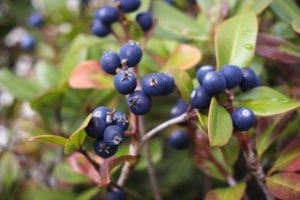
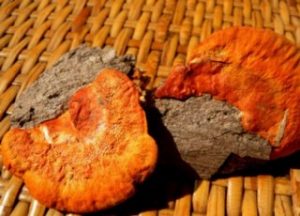
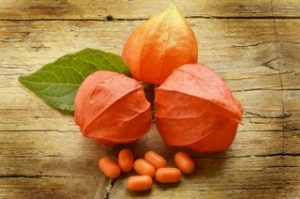
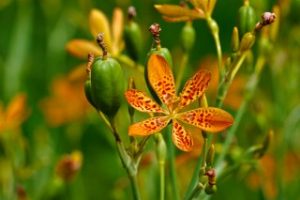
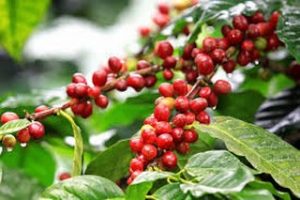
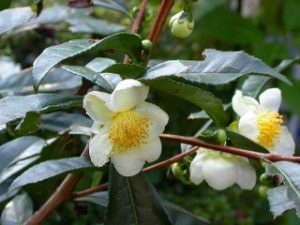
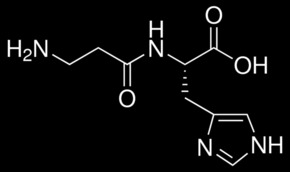
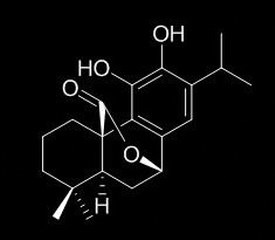
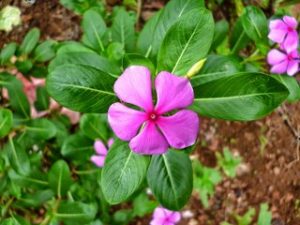
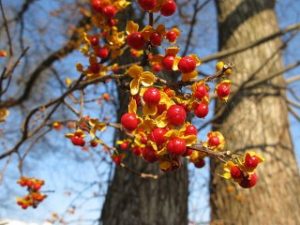
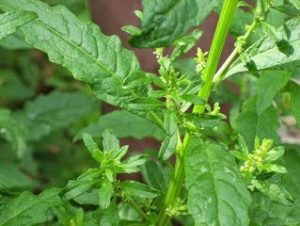
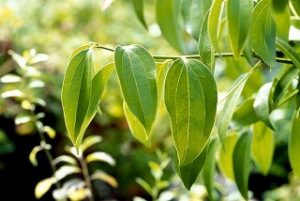
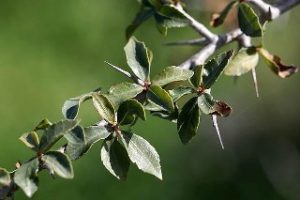
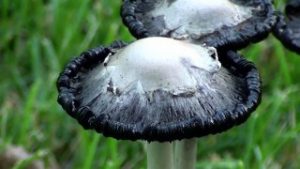
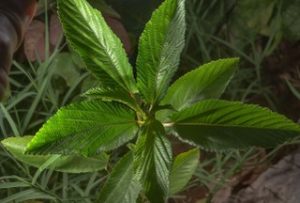
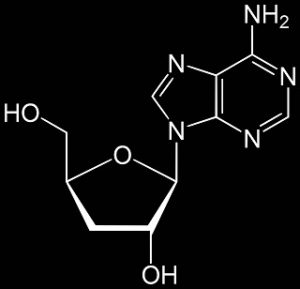
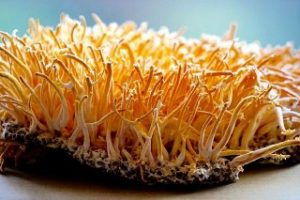
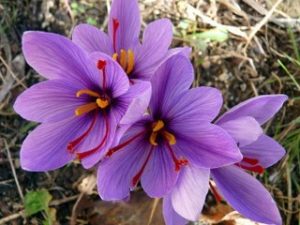
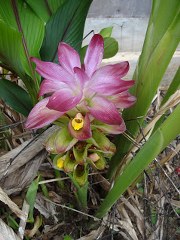
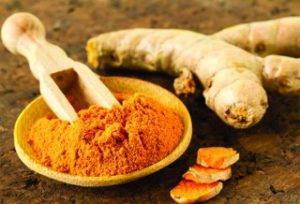
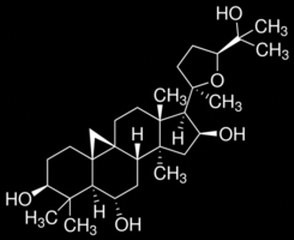
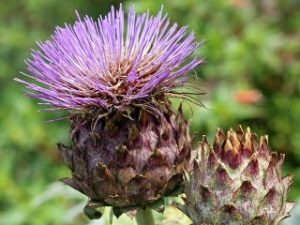
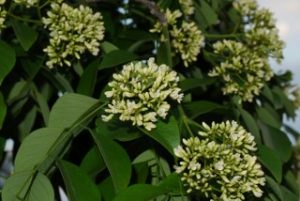
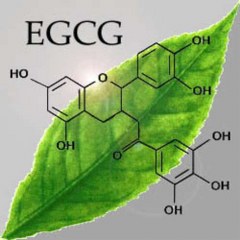
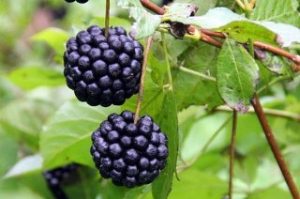
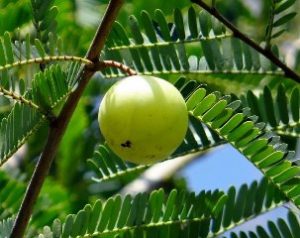
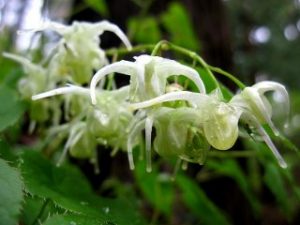

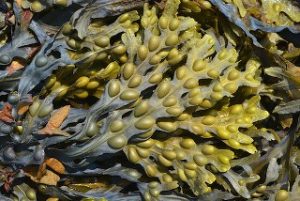
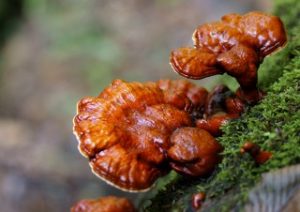
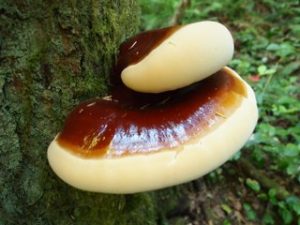
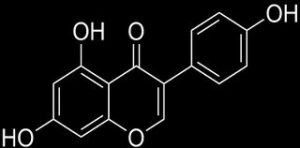

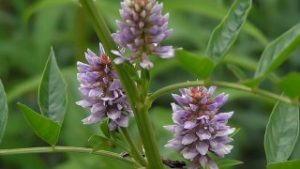
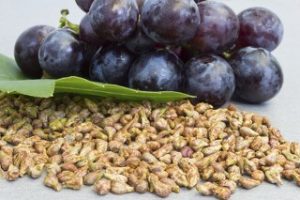
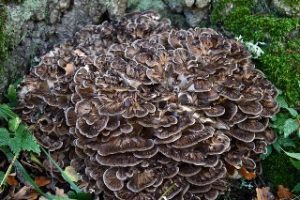

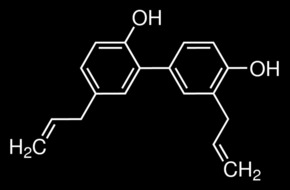
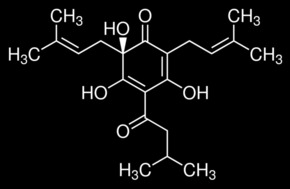

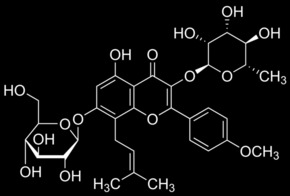
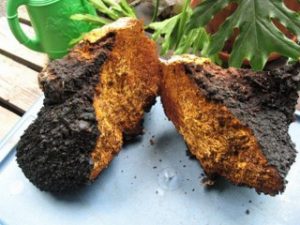
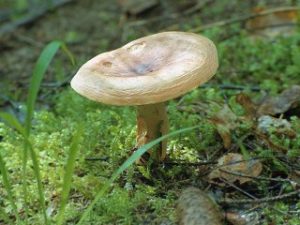
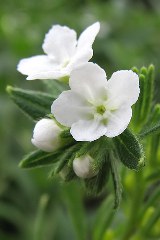
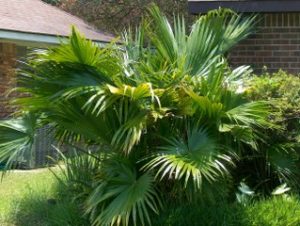
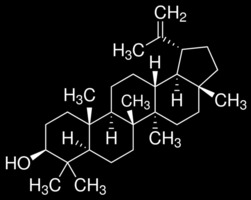
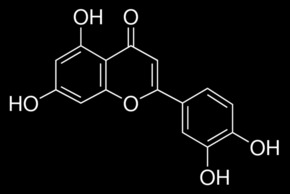
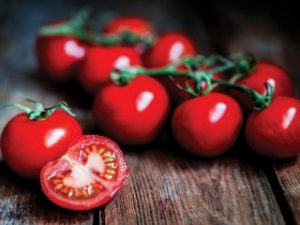
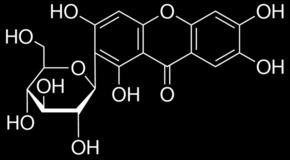
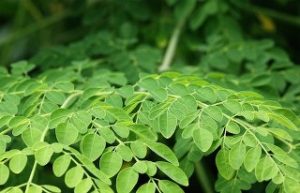
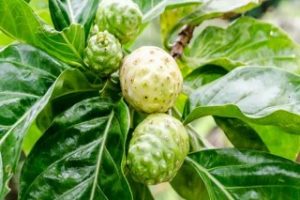
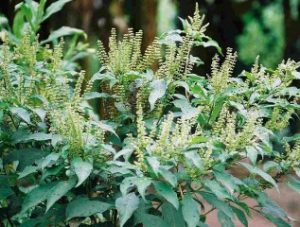
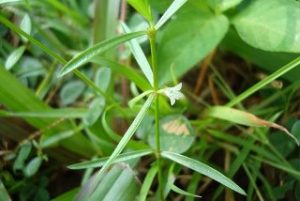
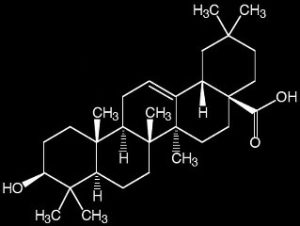
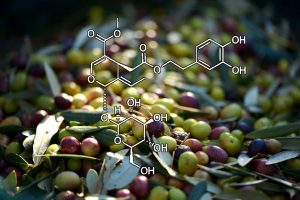

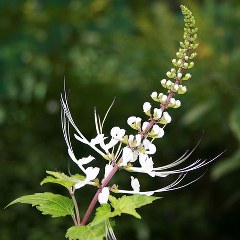
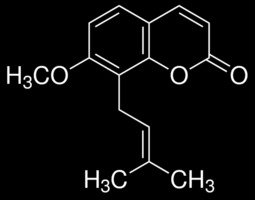

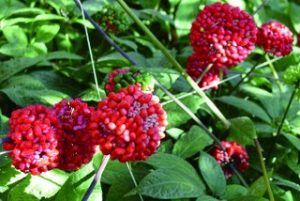
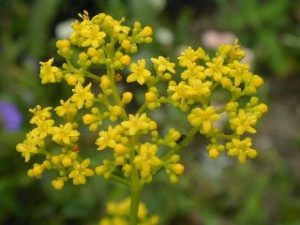
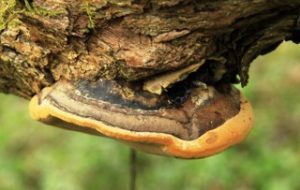
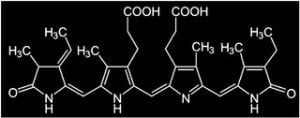
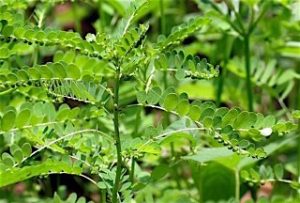
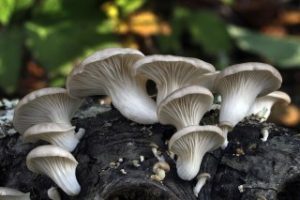
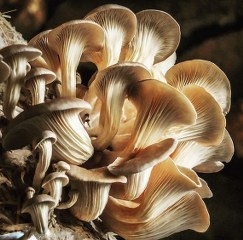
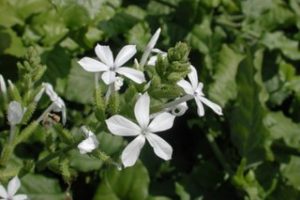
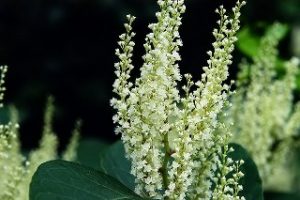
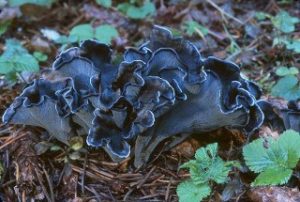
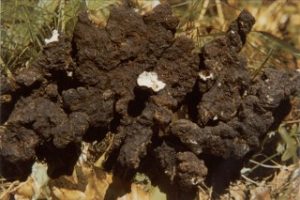
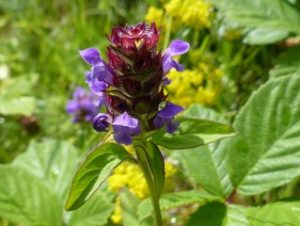
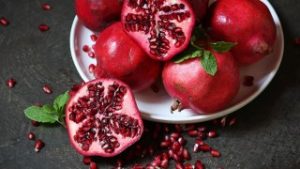
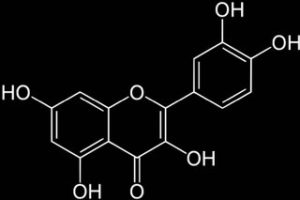
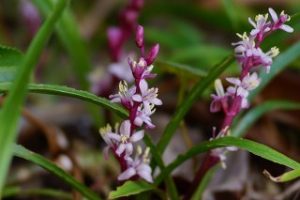


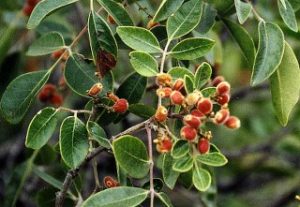
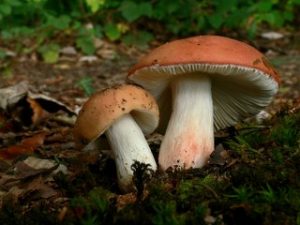

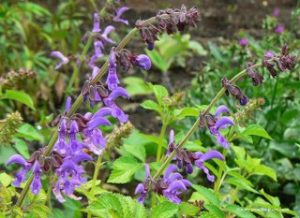
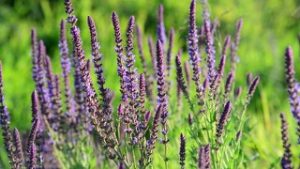
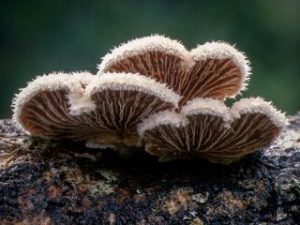
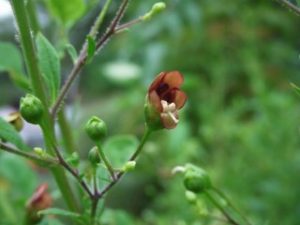
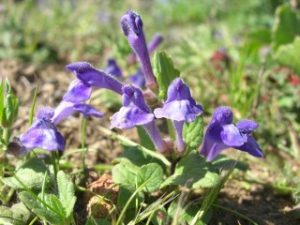
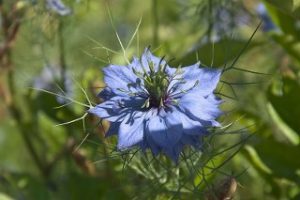
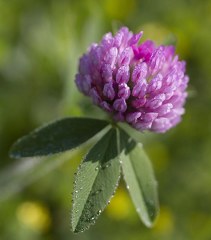
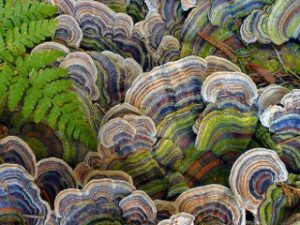
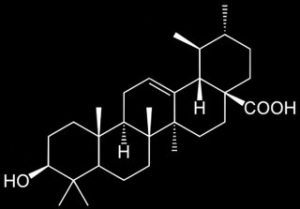

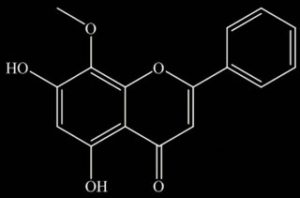
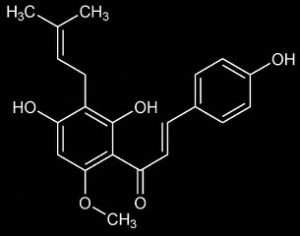
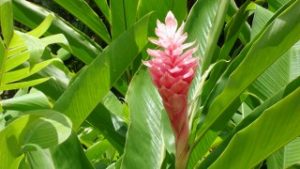
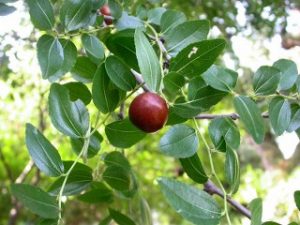
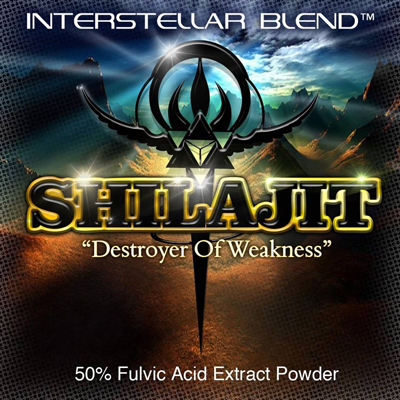
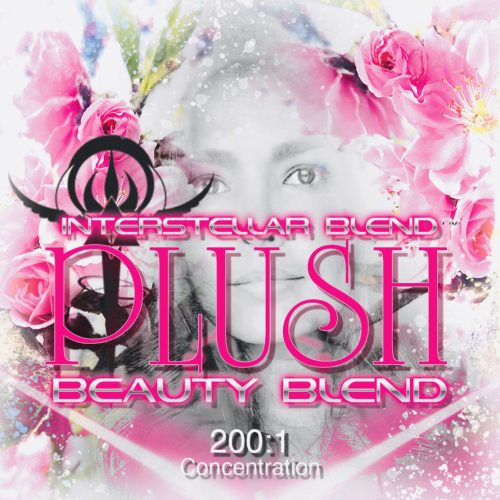
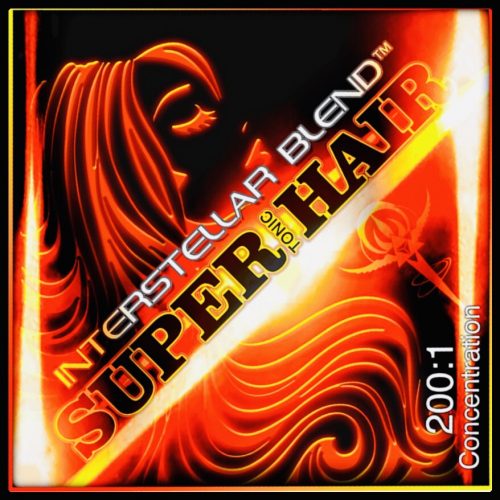
Reviews
There are no reviews yet.